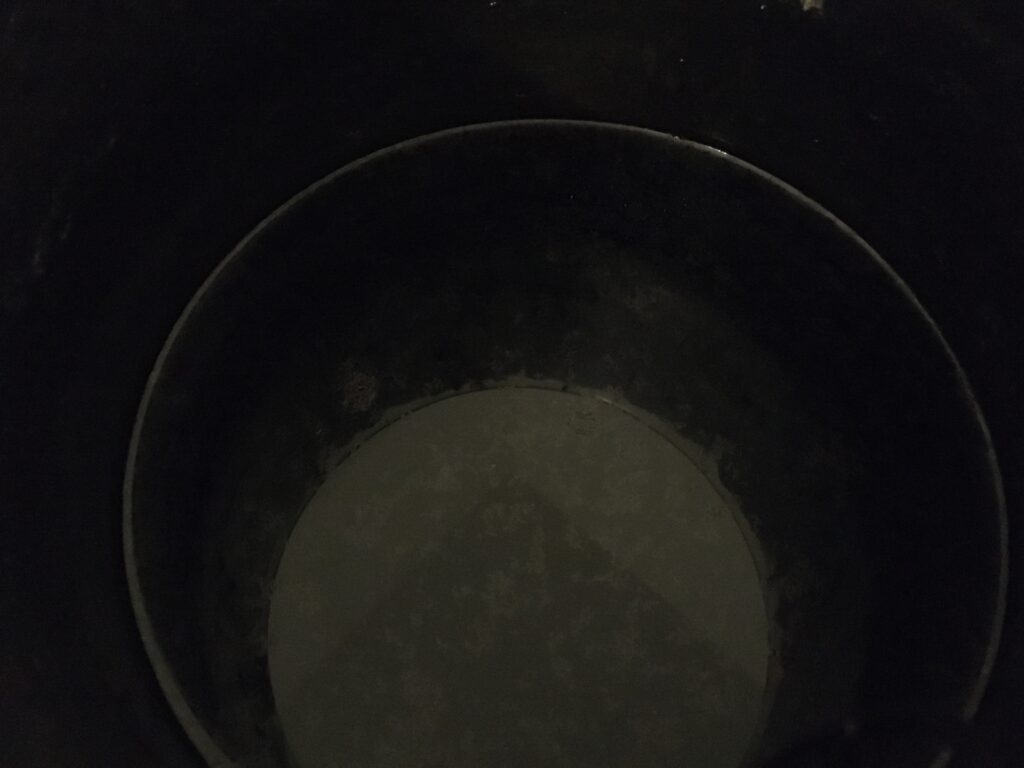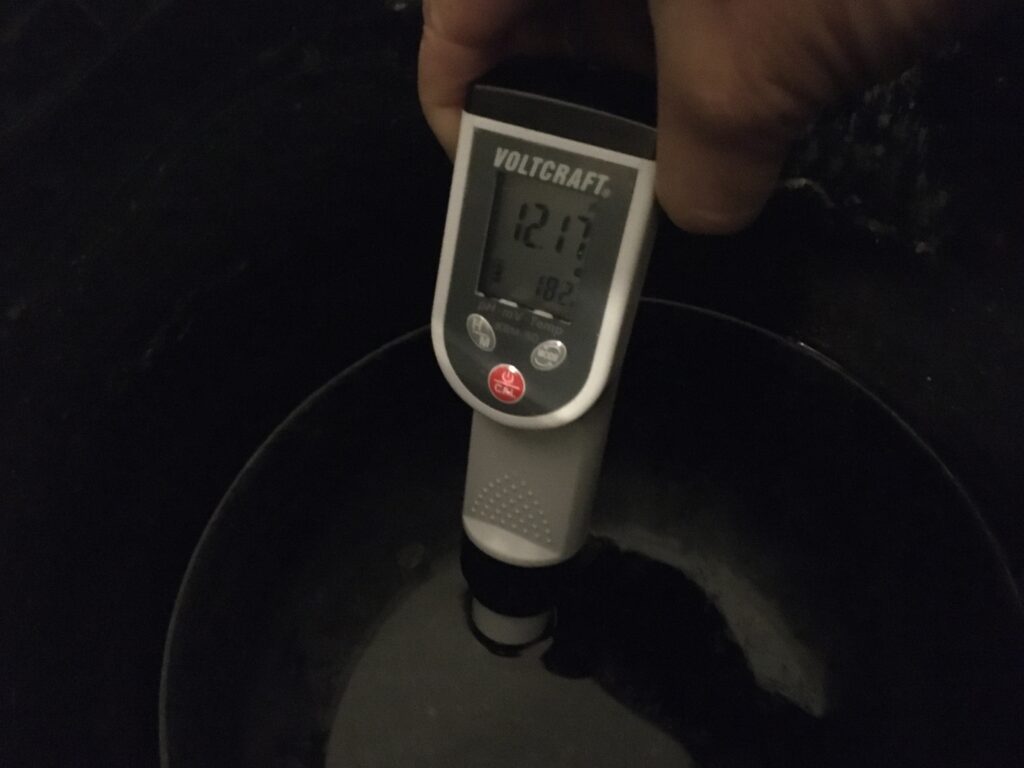In the mean time, I started to make a sukumo fermentation vat experiment. It is ideal when the vat is kept ~25degrees. As it is summer now and the room temperature can be around 25 degrees, I decided to do this experiment now (end of August 2024). I watched a lot of tutorials videos about how to make sukumo vat (it is called 藍建て in Japanese and one can find youtube video tutorial online) and I take some average recipe and methods from few tutorials.
And in case you wonder the general information about how indigo dye works, here is a very nice detailed explanation about how indigo dye process works by Maiwa. They use extracted indigo powder, and I use indigo compost… so it is a different process, though the chemical process of REDOX , that is necessary to dye fabric is the same.
I took this online course from Maiwa school of textiles, and it helped me a lot to understand what chemical process happens in indigo dye process and dye making process. Even I am new to working with sukumo fermentation, I feel I have some map to navigate and understand the current position. The course is not cheap, but I can recommend if anyone is interested in getting deeper in indigo/natural dye.
First, I need to make pot ash water. It is a clear part of water mixed with wood ash. PH of this water is high (basic/alkali) and many recipes use this as alkali water for vat. It was a challenge to find wood ash in the middle of summer in Berlin… I got a tip from a friend and got the ash from a restaurant called ITA Bistro who specializes in wood oven grilled food. They were very nice to give me some of the stored ashes from their oven. They keep them as some gardeners need them as a fertilizer.
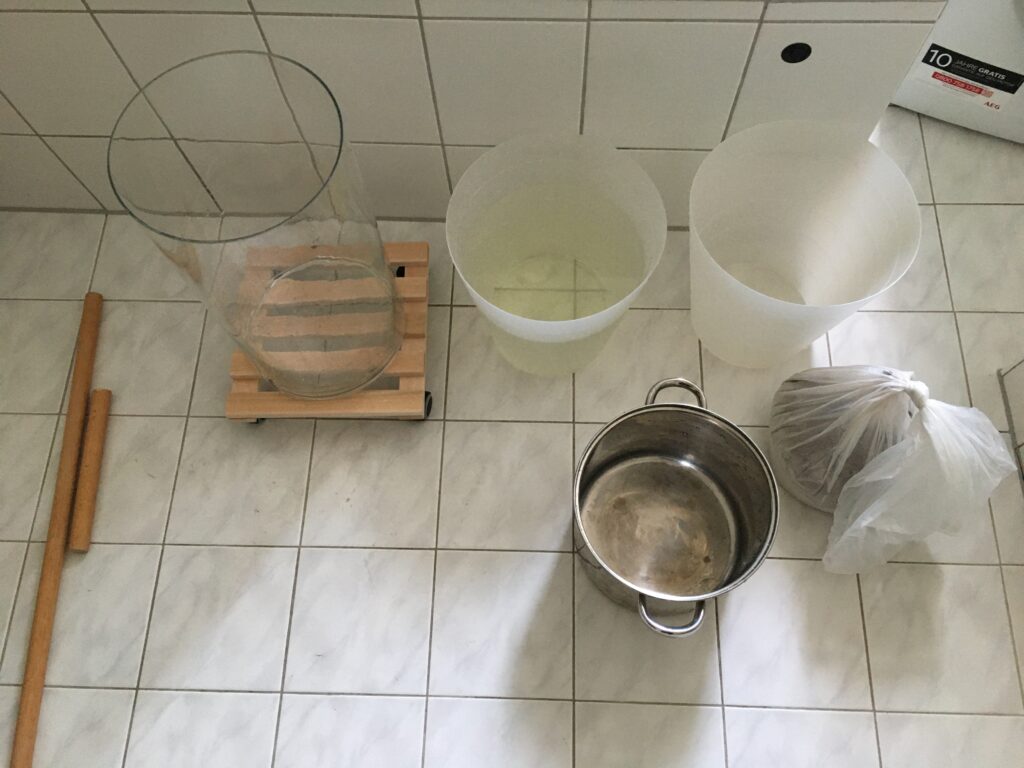
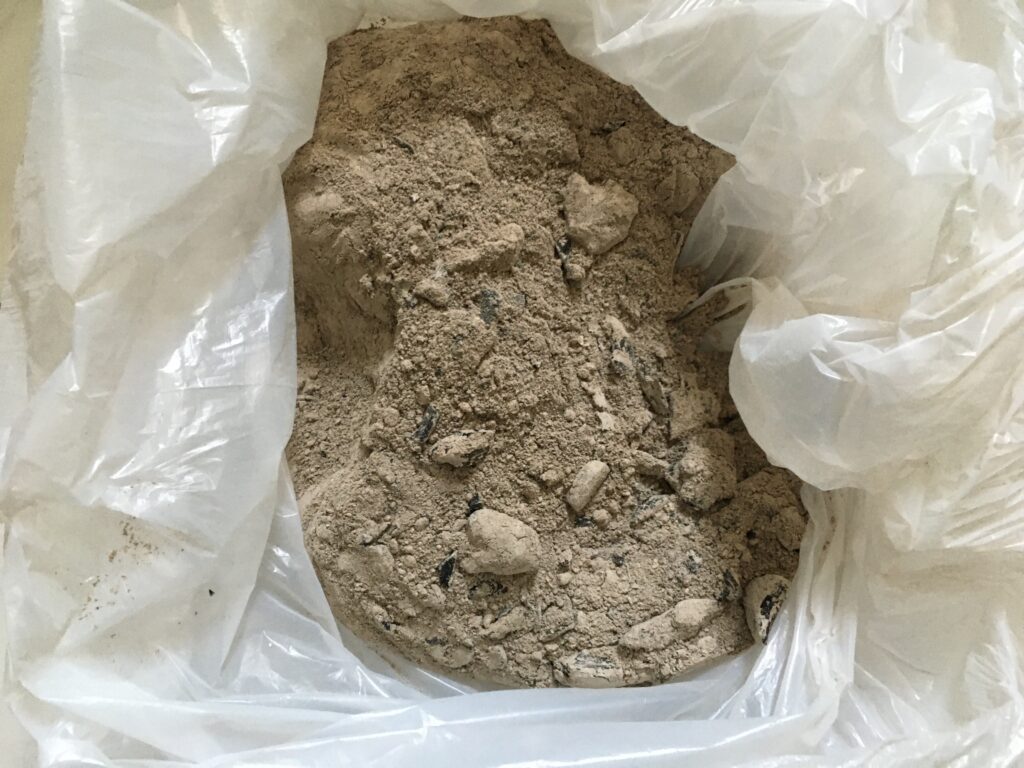
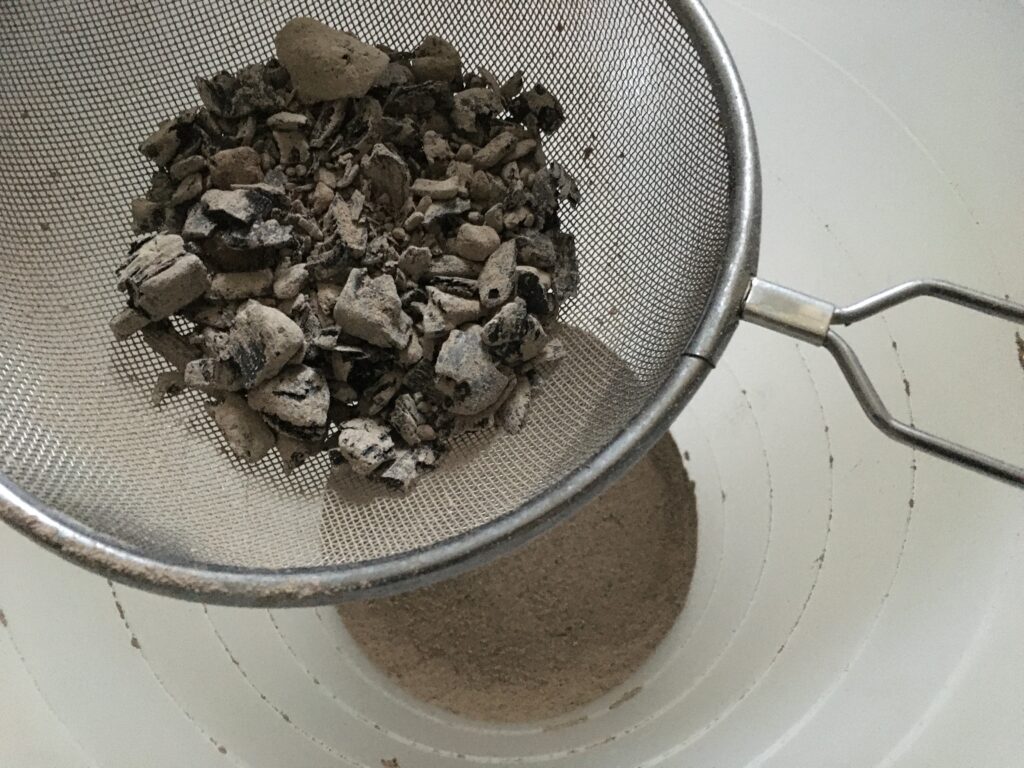
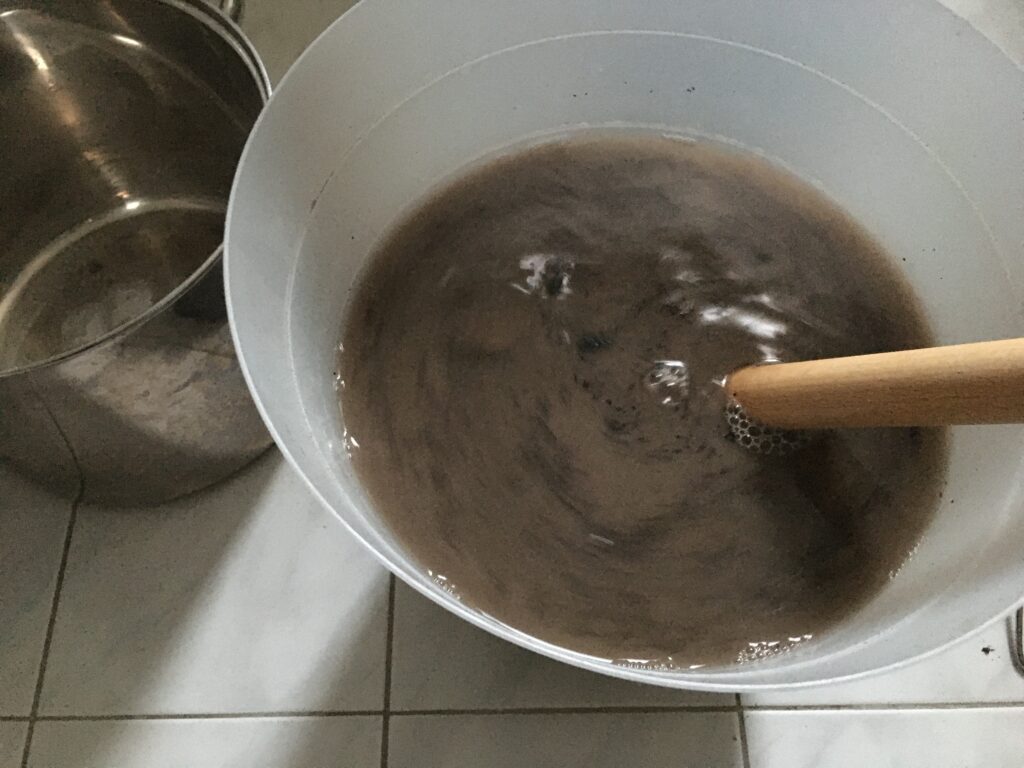
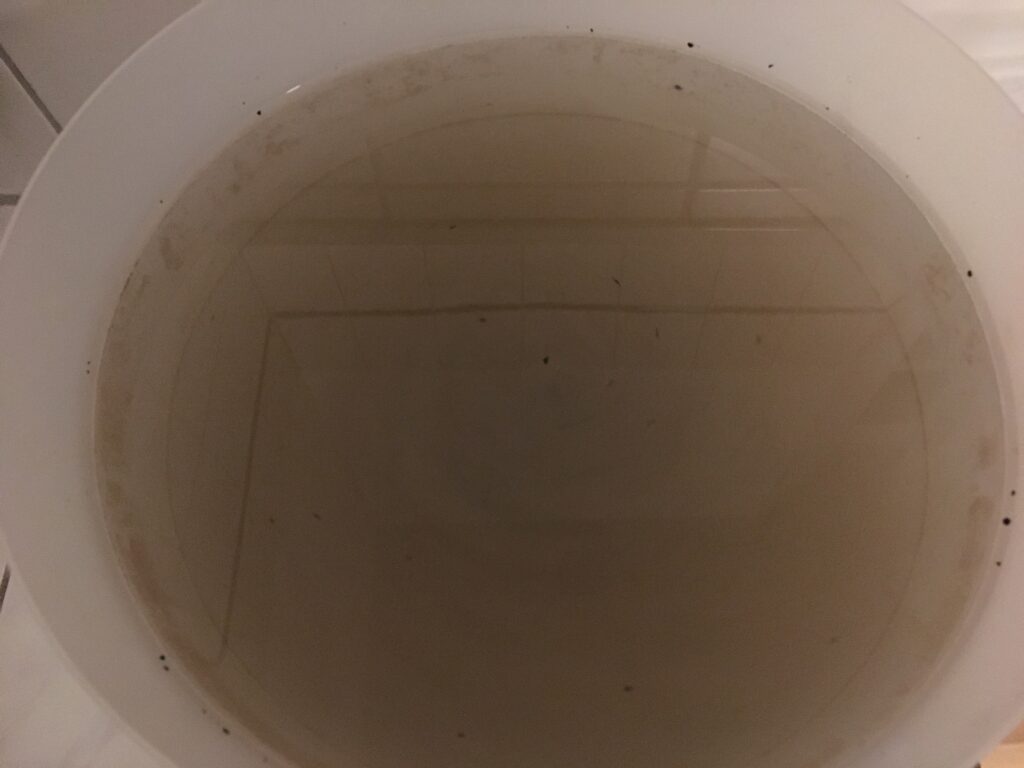
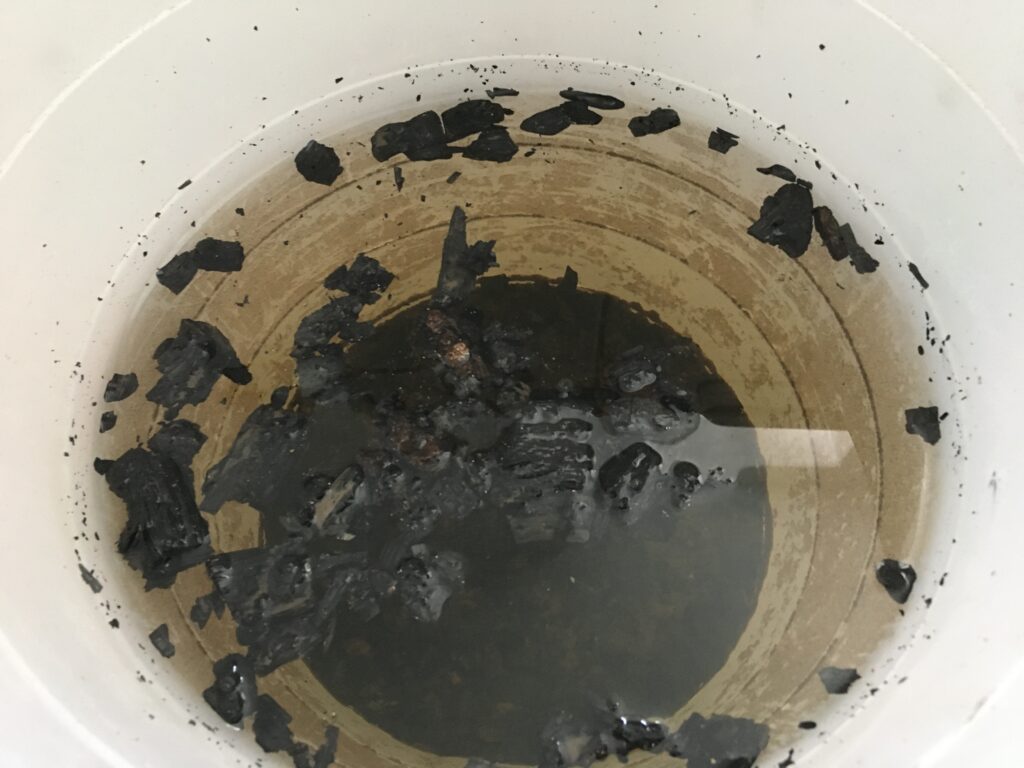
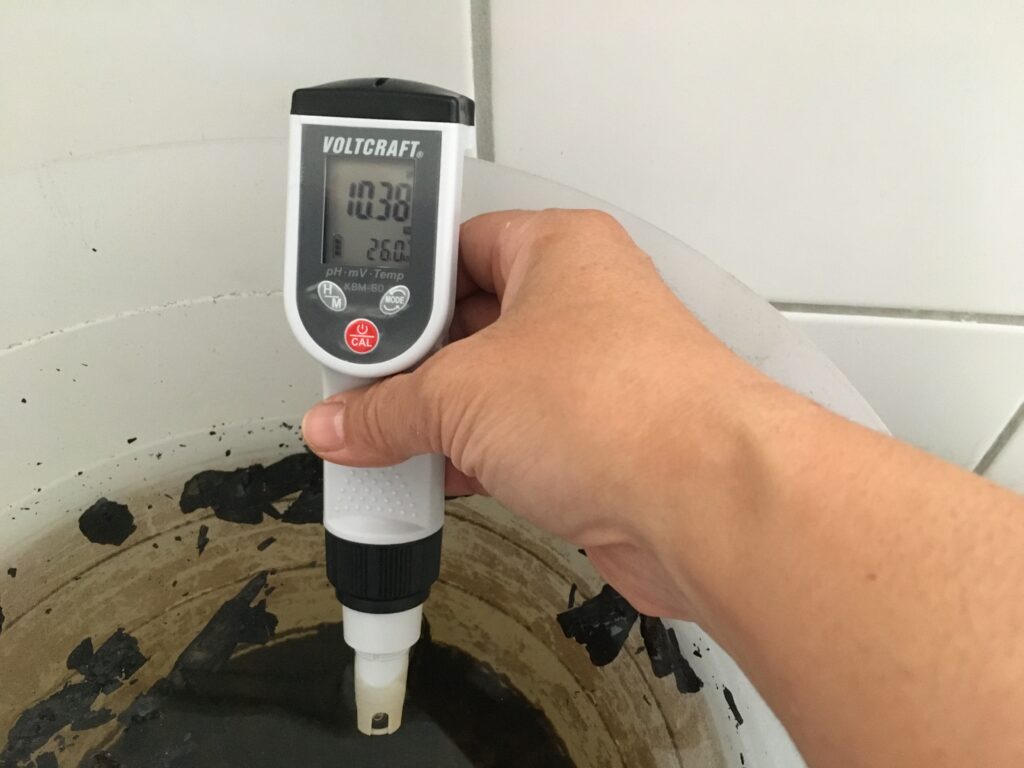
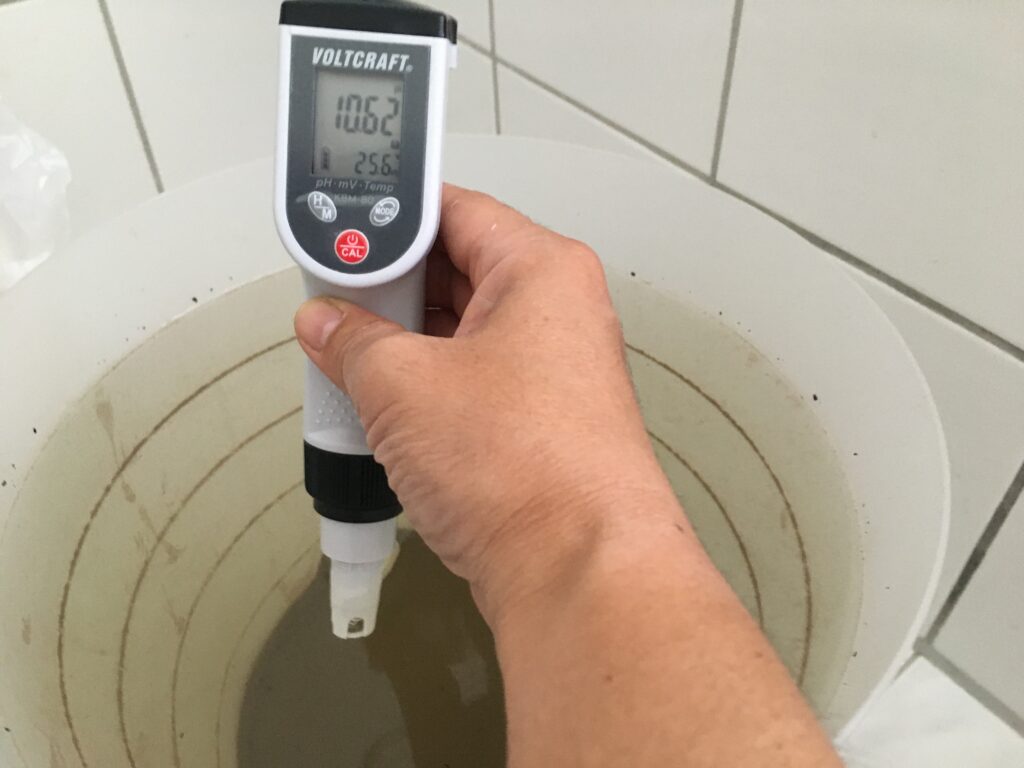
Cook a large amount of water on a pot and boil it for a while. This is to reduce the amount of oxygen devolved in water. The indigo vat is a REDOX process, so you want to introduce as less oxygen as possible in reduction process (which is the vat). The ash I got from the restaurant had some charcoal in it, so I used a sieve to filter out charcoal. The second batch had charcoal in it (as an experiment) and was a bad idea as they float on the surface. After a day or so, the water becomes clear and all the ashes stays on the bottom. PH meter shows 10.5, which is pretty good.
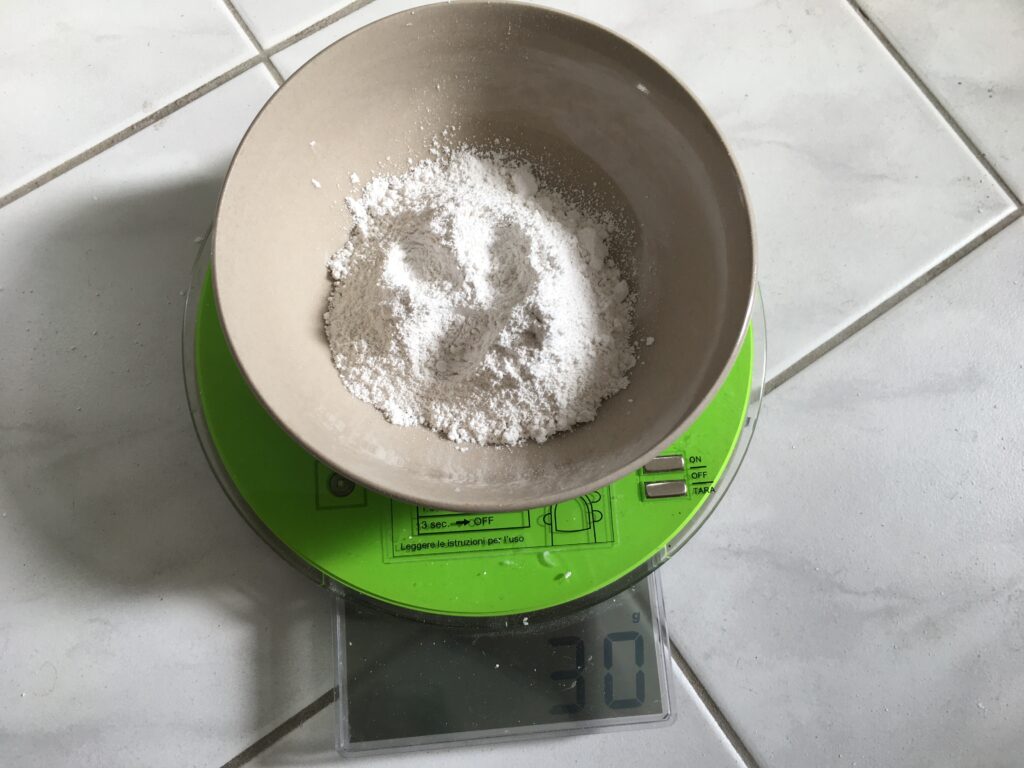
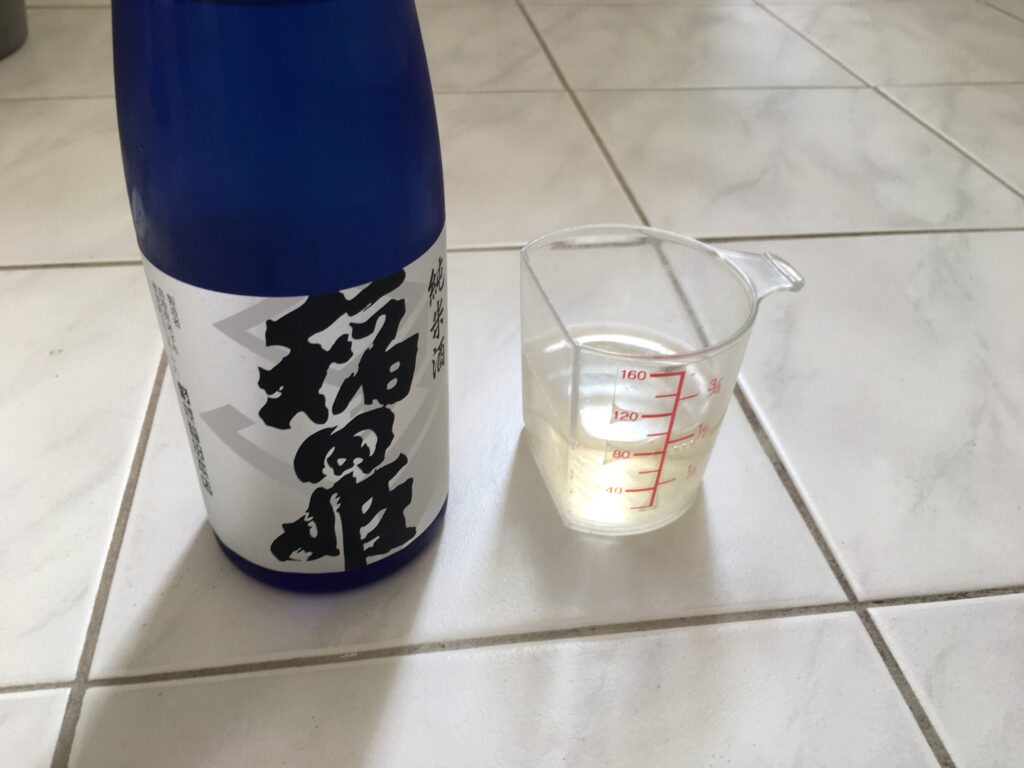
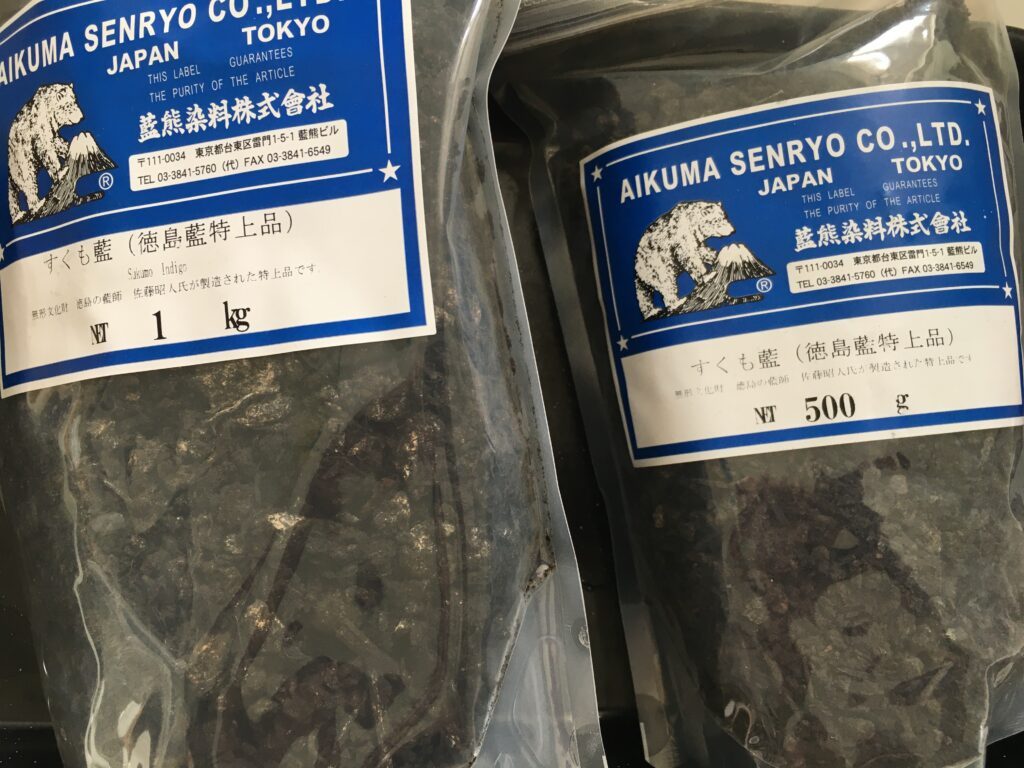
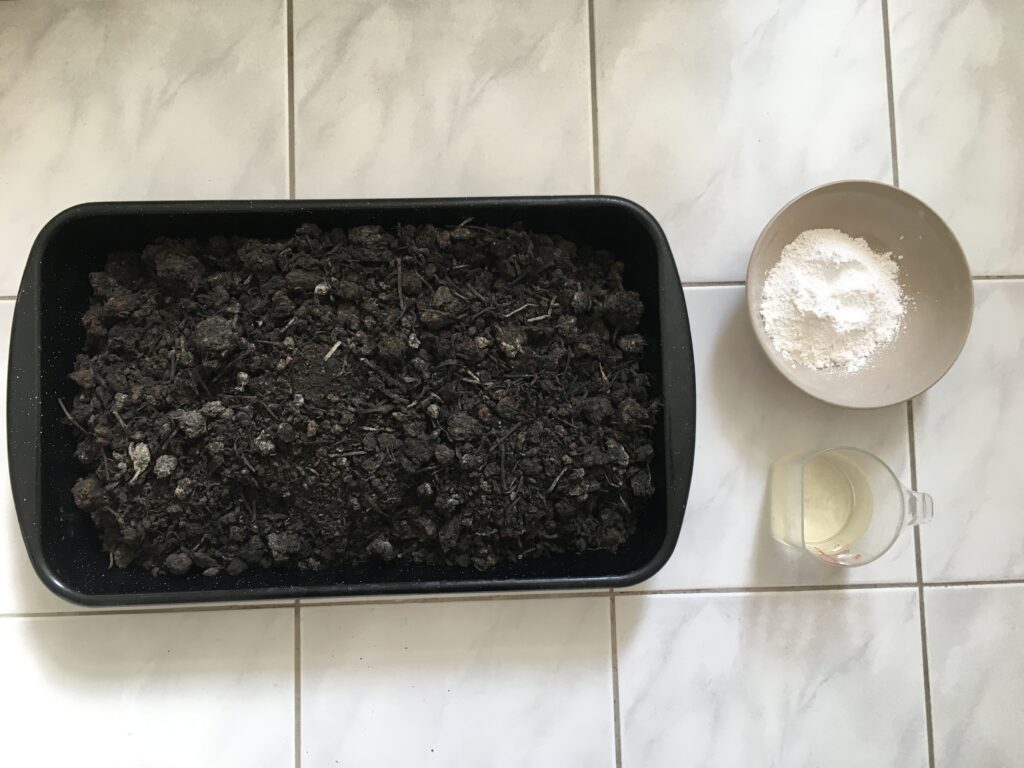
I used the amount ratio that was on the Awa Natural Indigo book by Miyoko Kawahito. The original recipe for 75L vat is:
Shikomi (starting point):
Sukumo – 8.4kg
Lye (pot ash water)- 36L
Slaked lime (Calcium Hydrate) – 150g
Sake – 270cc
Nakaishi (middle point, after bubbling starts):
Slaked lime (Calcium Hydrate) – 90g
Kasaage (increasing the liquid mass):
Lye (pot ash water)- 30-35L
Tomeishi(finishing):
Slaked lime (Calcium Hydrate) – 60g
My vat container is 18L, and I have 1.5Kg of sukumo that I bought from Japan… (here is the online shop link). So I recalculate the amount I need accordingly. I bought sake from local Asian super market. Since this is my first sukumo vat, I bought the more expensive Junmai sake, thinking it will have less chemical inside than cheaper seishyu kinds. I do not know if this affects. (and thinking maybe I drink the leftover 🙂 )
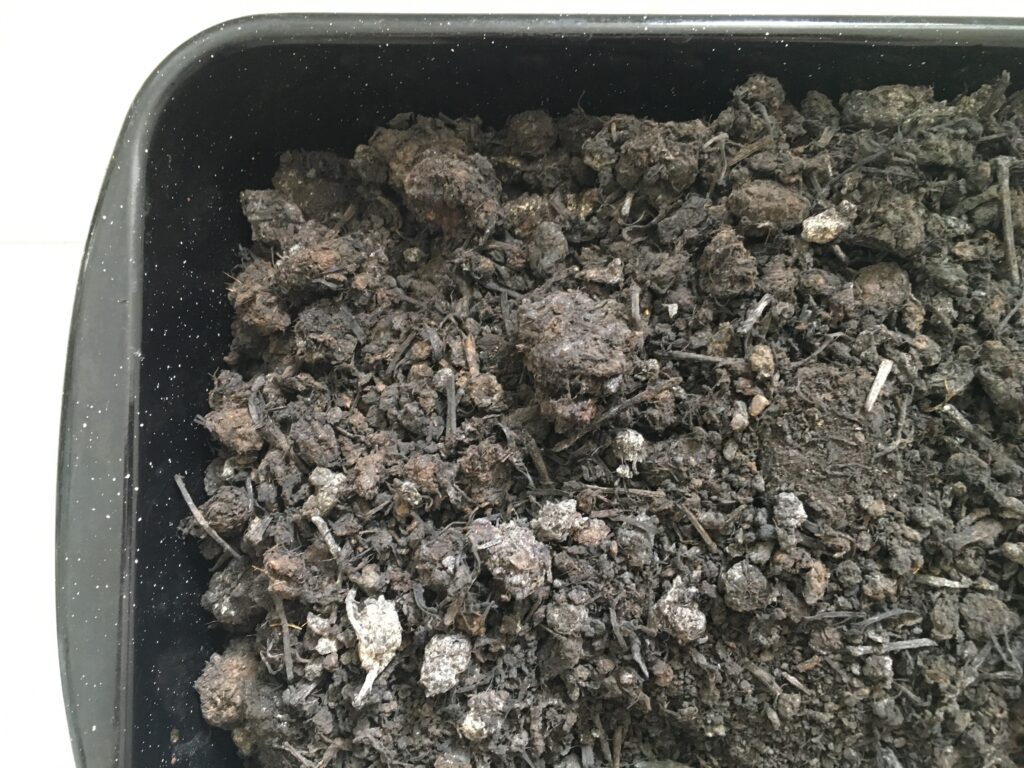
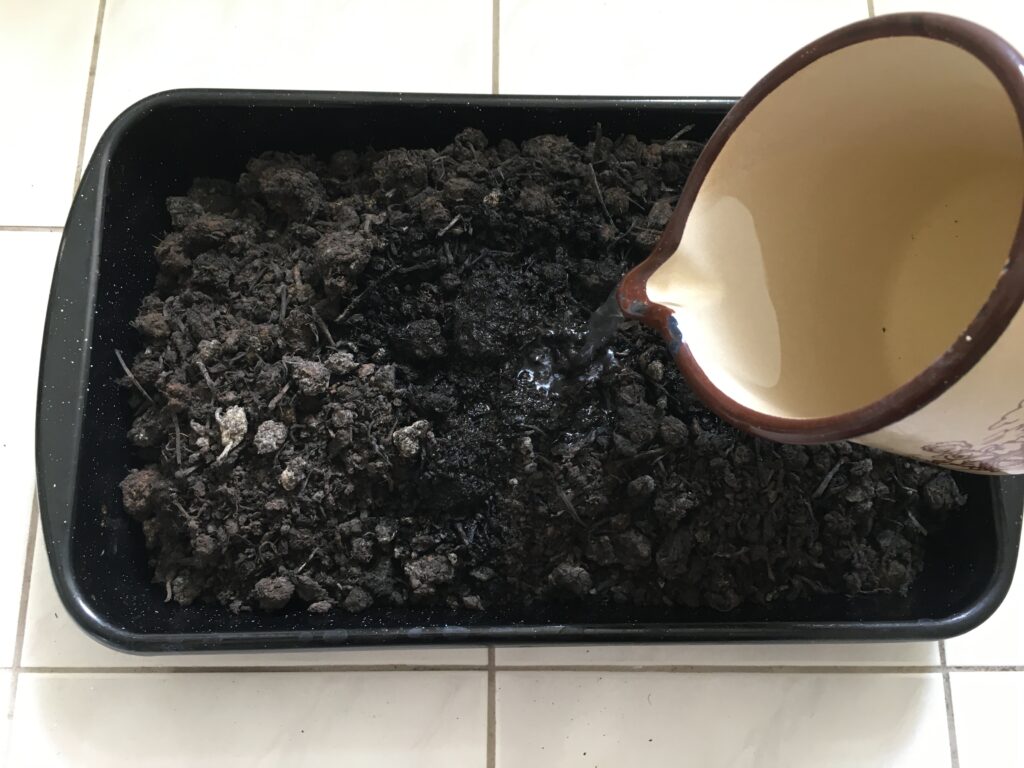
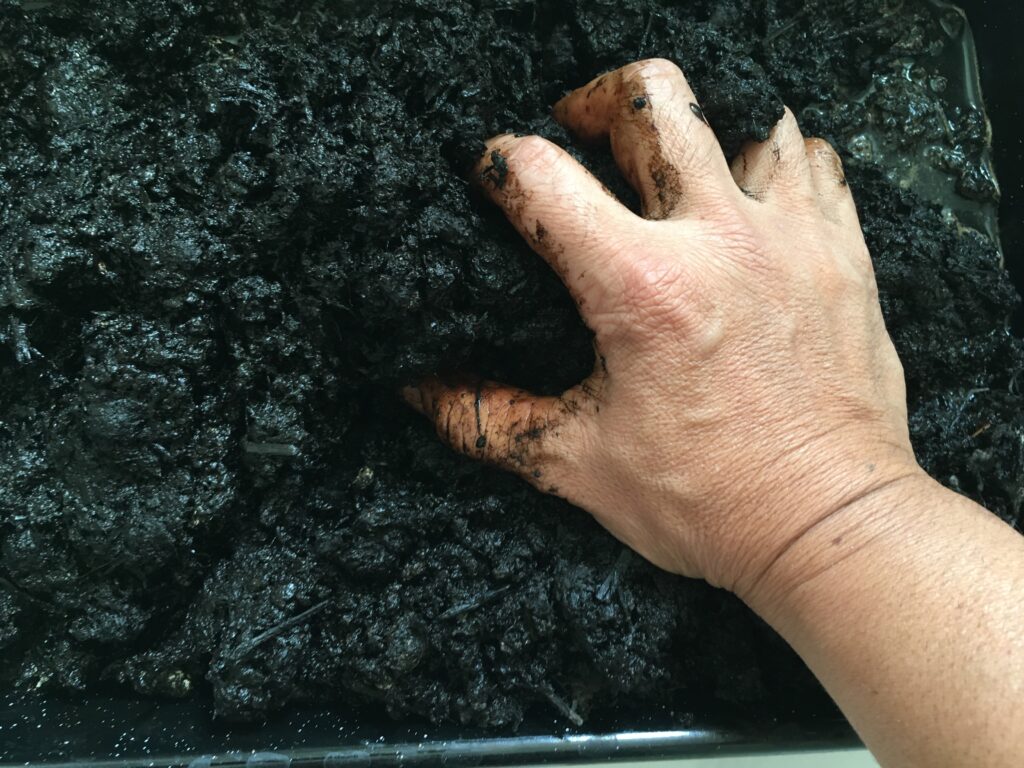
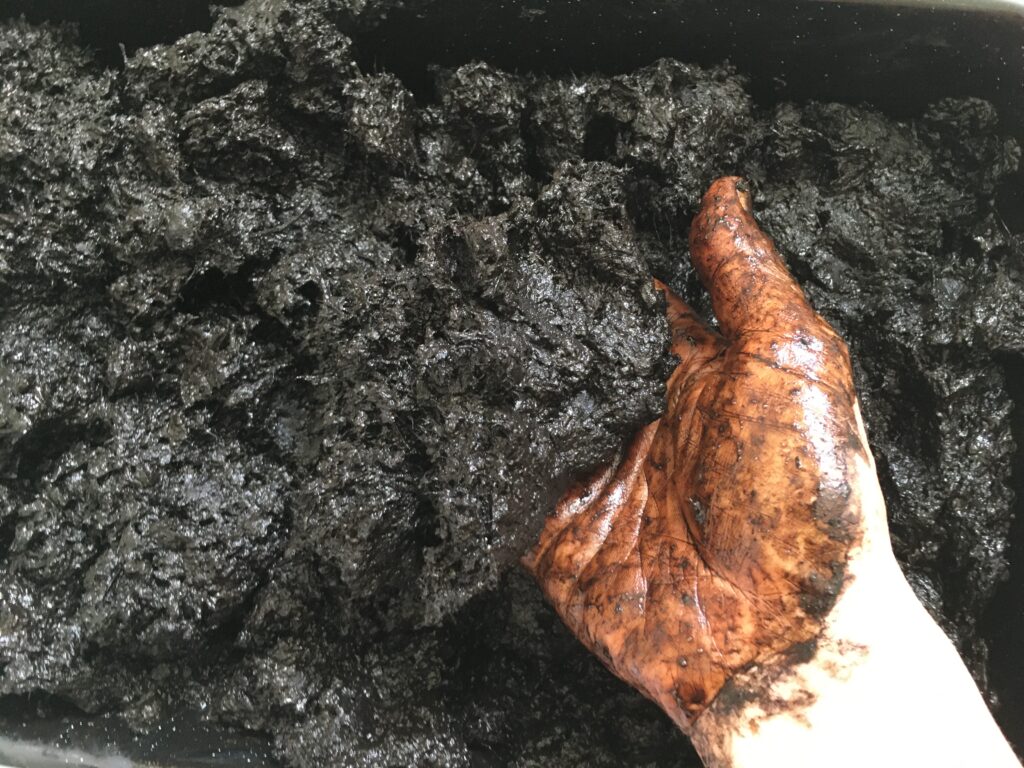
Sukumo has a very specific smell, even when it is dry. you can see/smell that it is a compost material. I poured some warmed pot ash water and start mixing them.
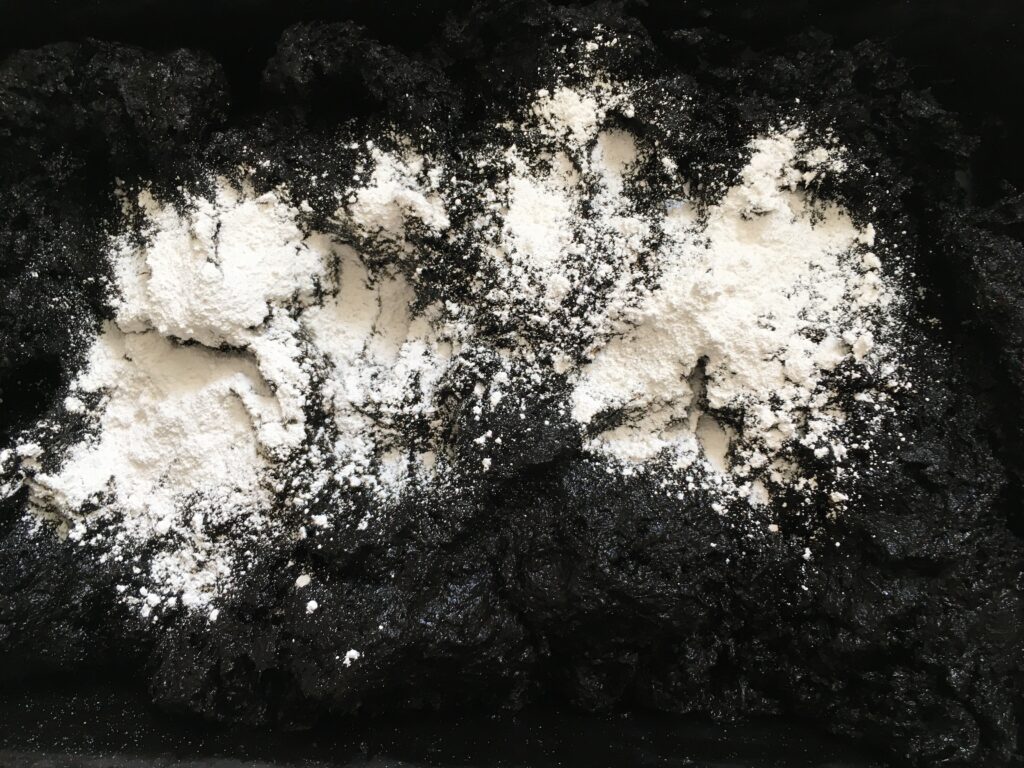
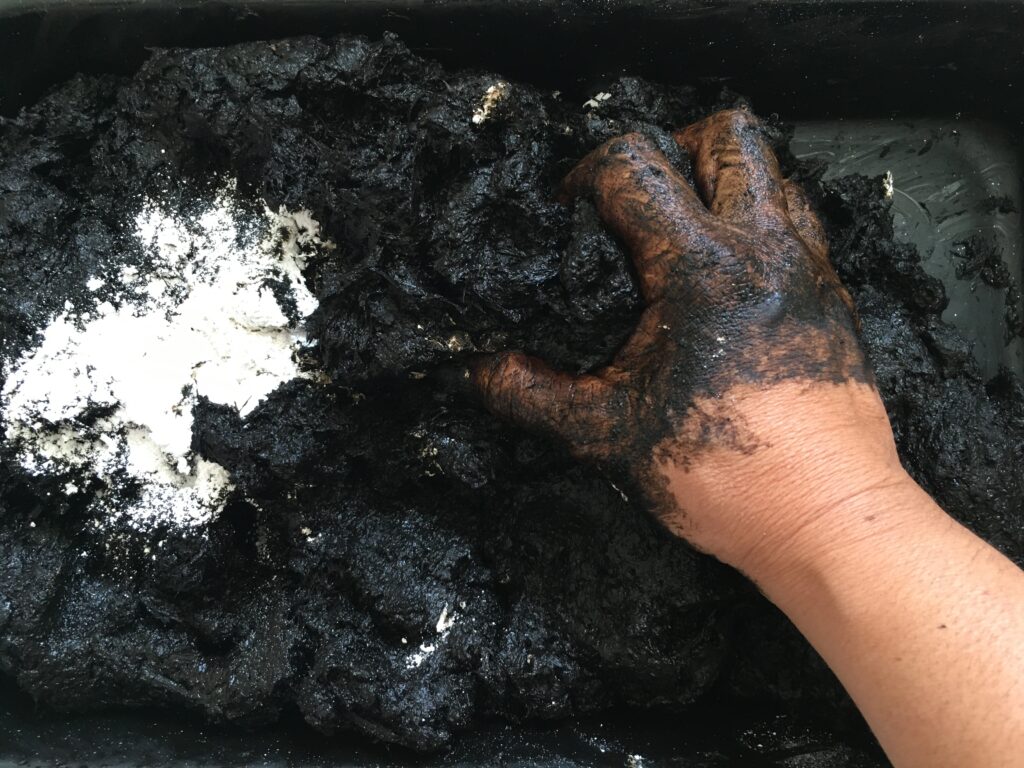
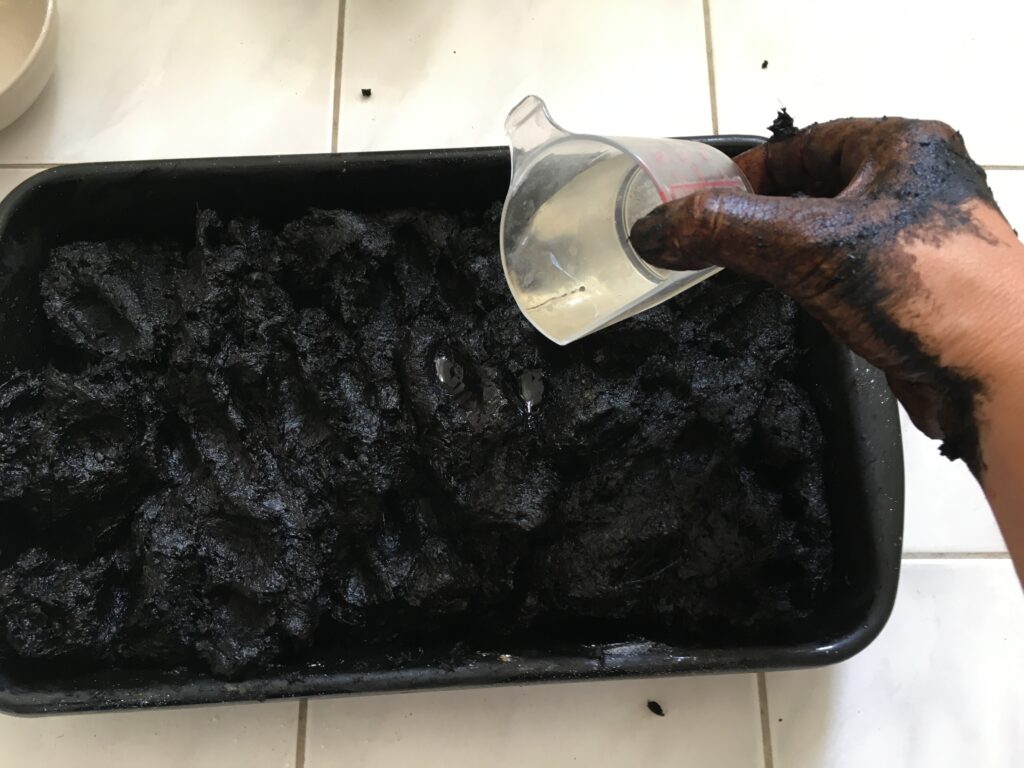
After the sukumo getting softer and clay like, I added the whole amount of Calcium Hydrate Ca(OH)2 and mix it well. Then add the whole amount of sake and mix it well again. This point, the sukumo mix looks very black and smooth. After I added Calcium Hydrate, it also started to smell ammonia like.
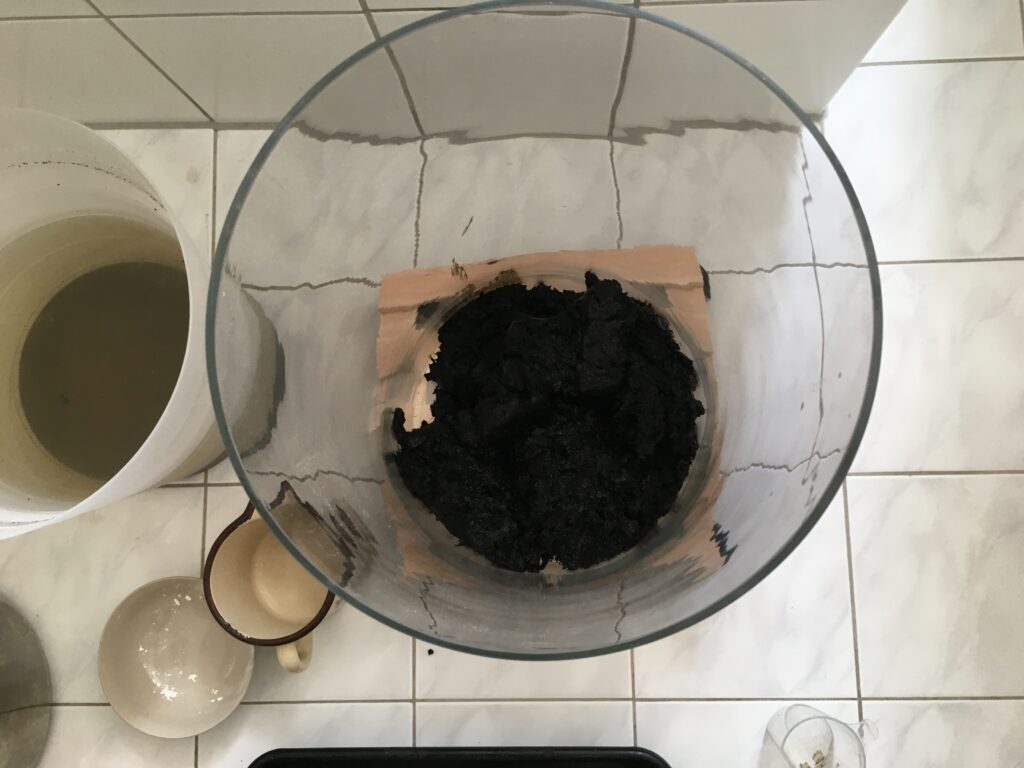
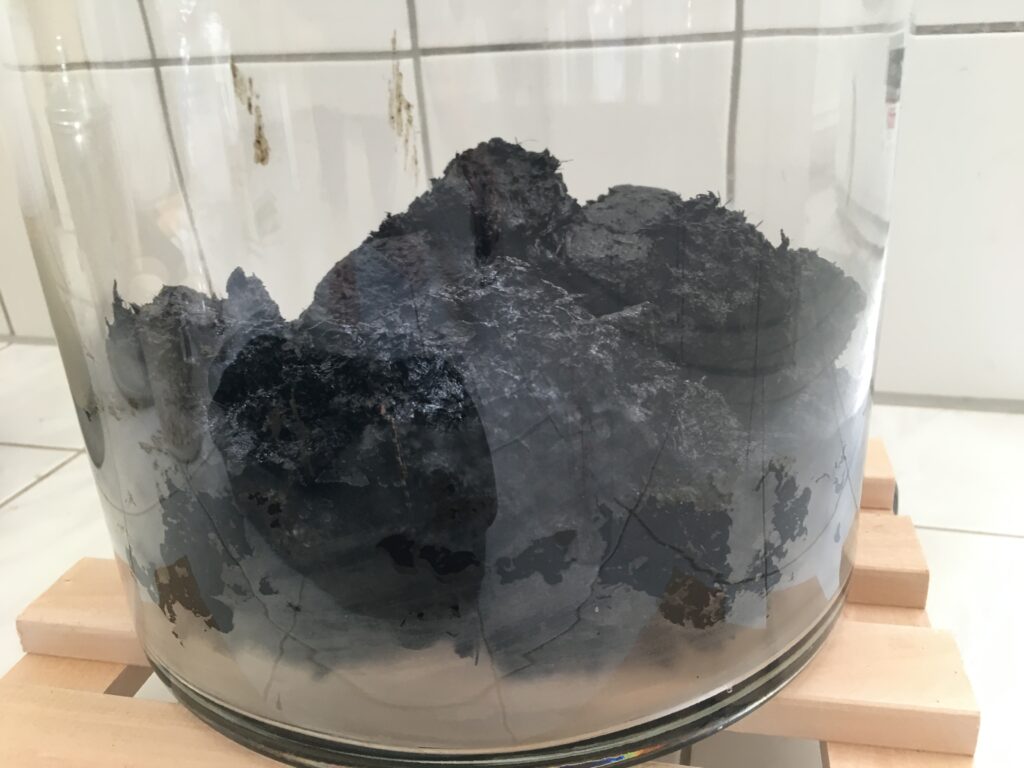
I”m using this glass container as vat as I wanted to see the vat from the side as it develops. I happen to have this glass container as we used it in another project. I am not sure if the glass was a good choice for vat as it is fragile and also does not keep the heat well. Many tutorials are using plastic containers as a vat. The traditional vat containers are made of ceramic.
The mixed sukumo is placed inside the container now.
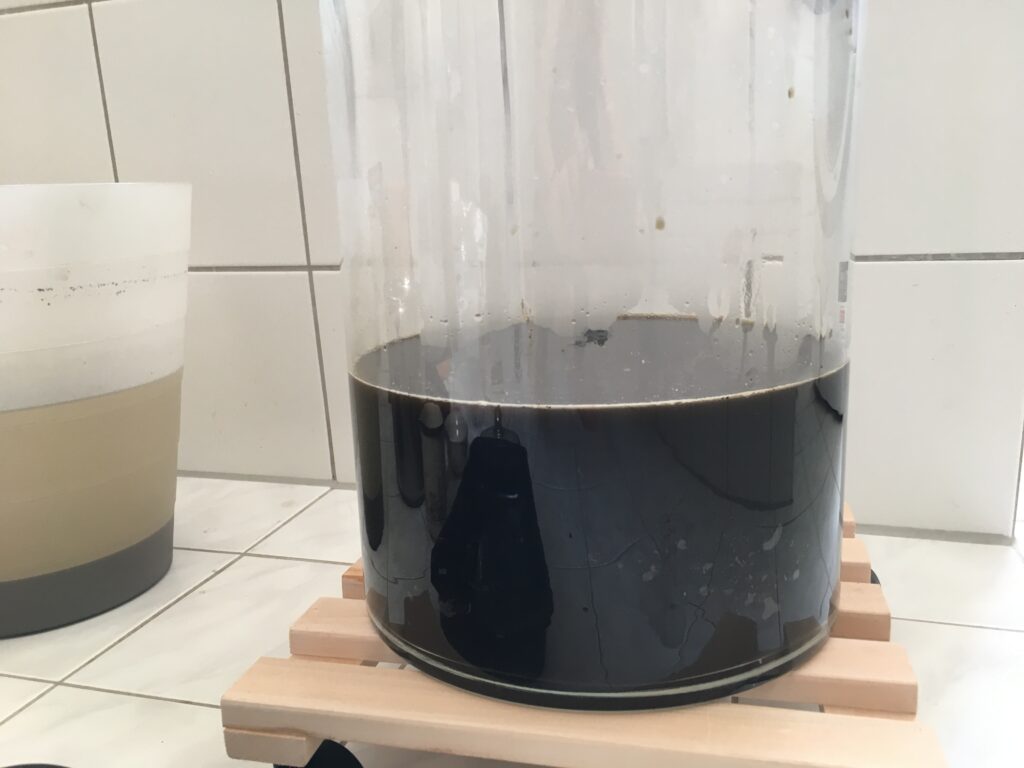
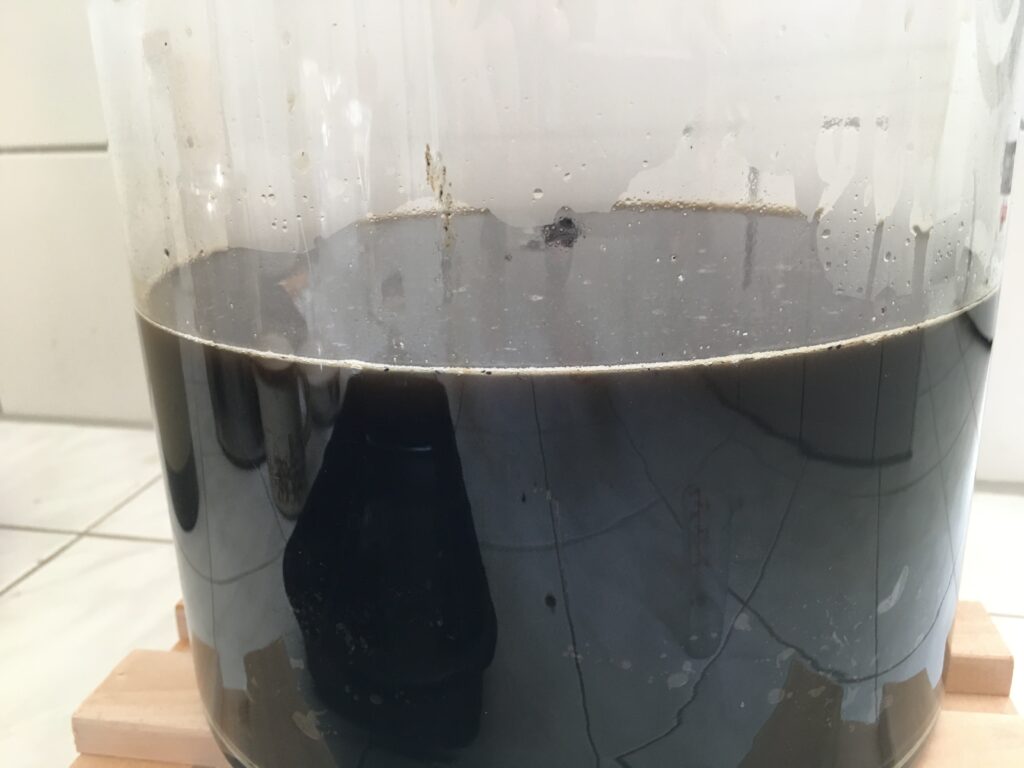
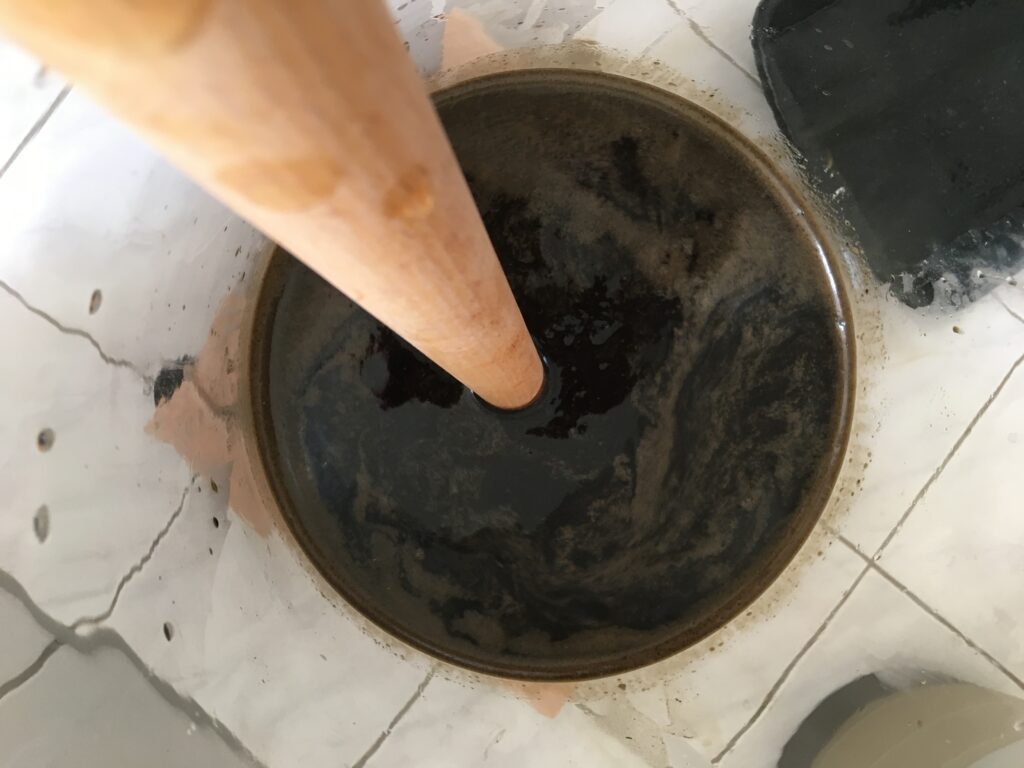
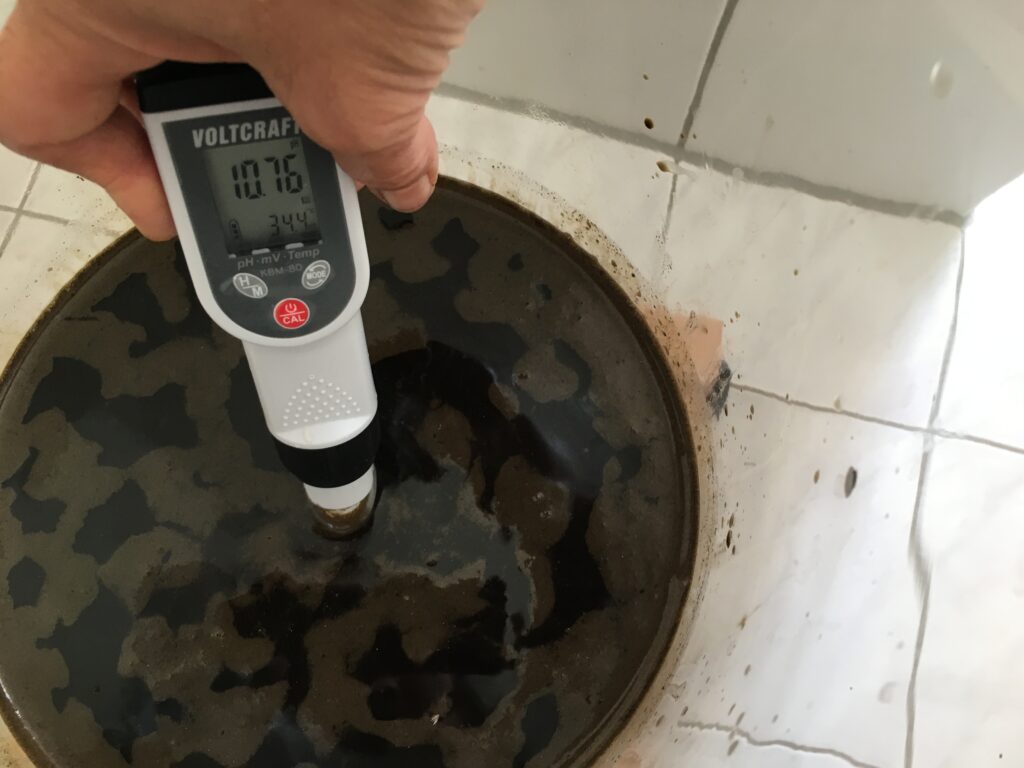
I added pot ash water to about 1/4 and mixed well. Ph is now 10.76. Some tutorial said it is better to maintain Ph11 at the beginning (probably by adding more calcium hydrate) but I decided to leave it as it is.
Here, in retrospect, I made one mistake. I did not heat up the pot ash water to very high temperature as I was afraid to kill the good bacteria living on the sukumo with hot temperature. This was wrong. The bacteria which is responsible of composting the sukumo and what we want to promote in the vat fermentation can live in the 70degrees environment. So it is actually good to pour hot water (around 70 degrees) to activate the bacteria we want and also to kill other unwanted bacteria. I will do this next time I make a sukumo vat.
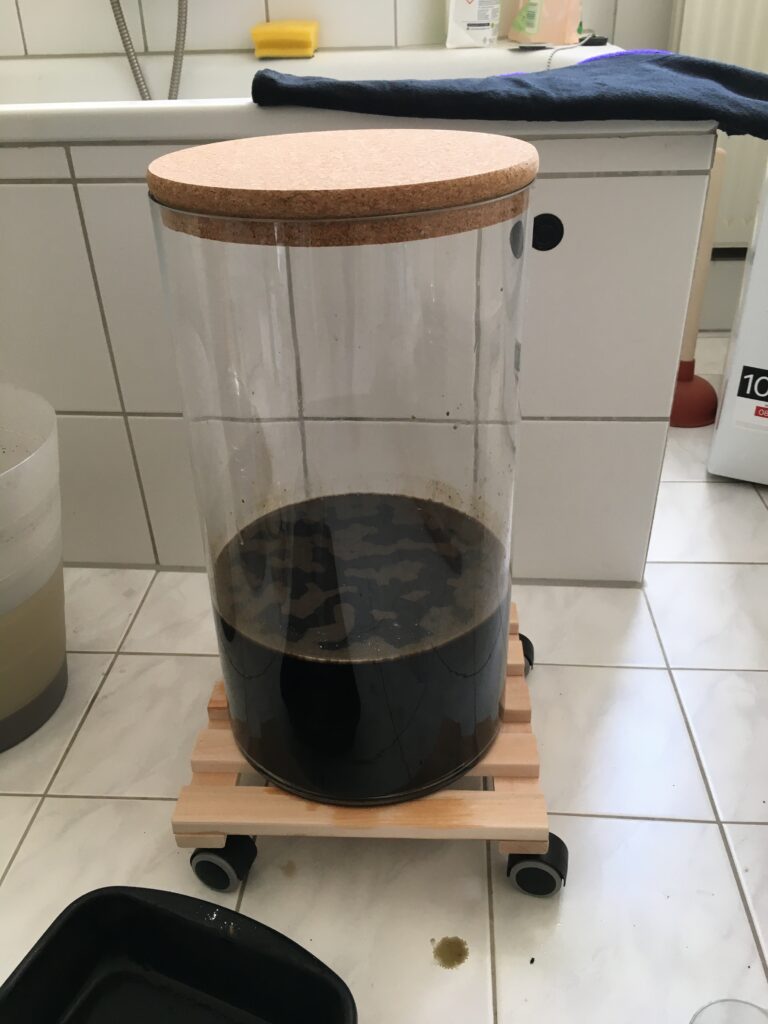
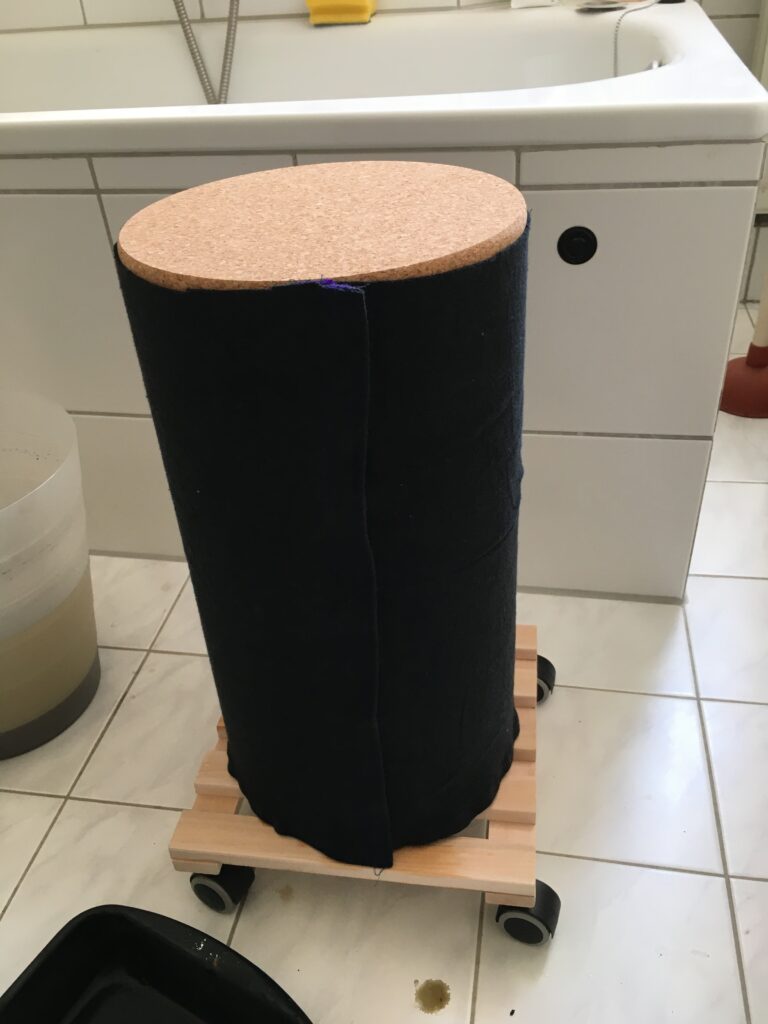
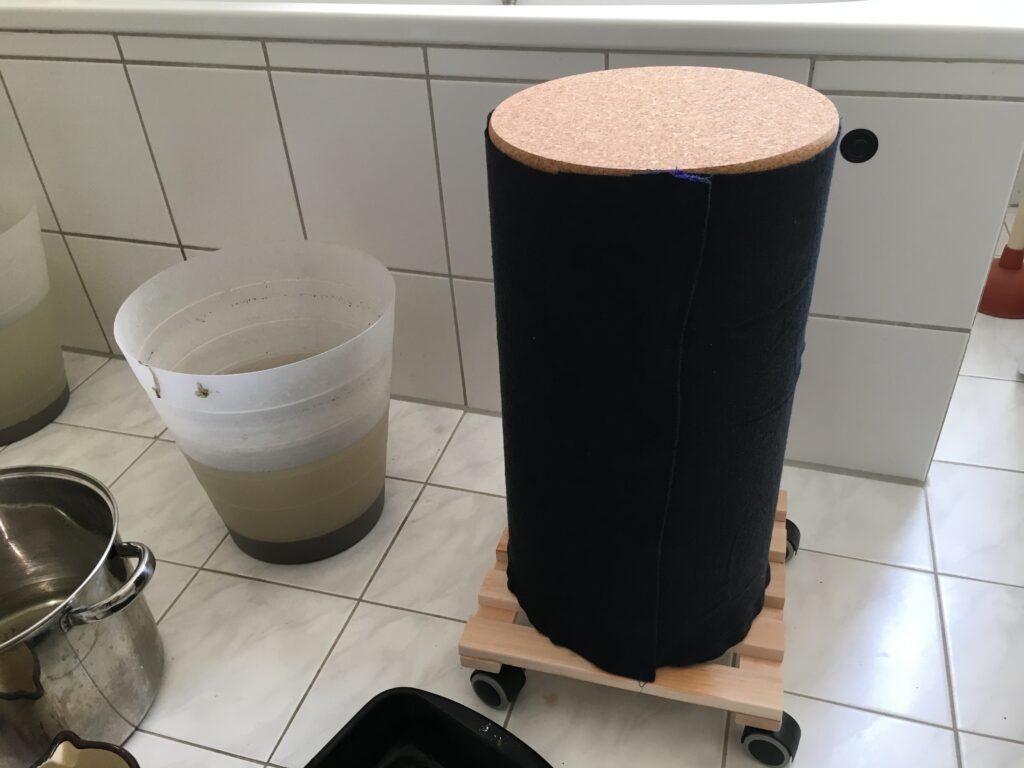
I made a lid out of two cork pot holders (which became too tight after using it due to moisture.. and I had to adjust its size few times), and a cover out of molton fabric to shut the sunlight going into the vat. I am not sure if this is a good choice. It is all experimental.
From this point, I stir the vat every 3 hours during the day time.
On the day2, I added some more pot ash water (hot) to increase the water amount to about the 1/3 of the container.
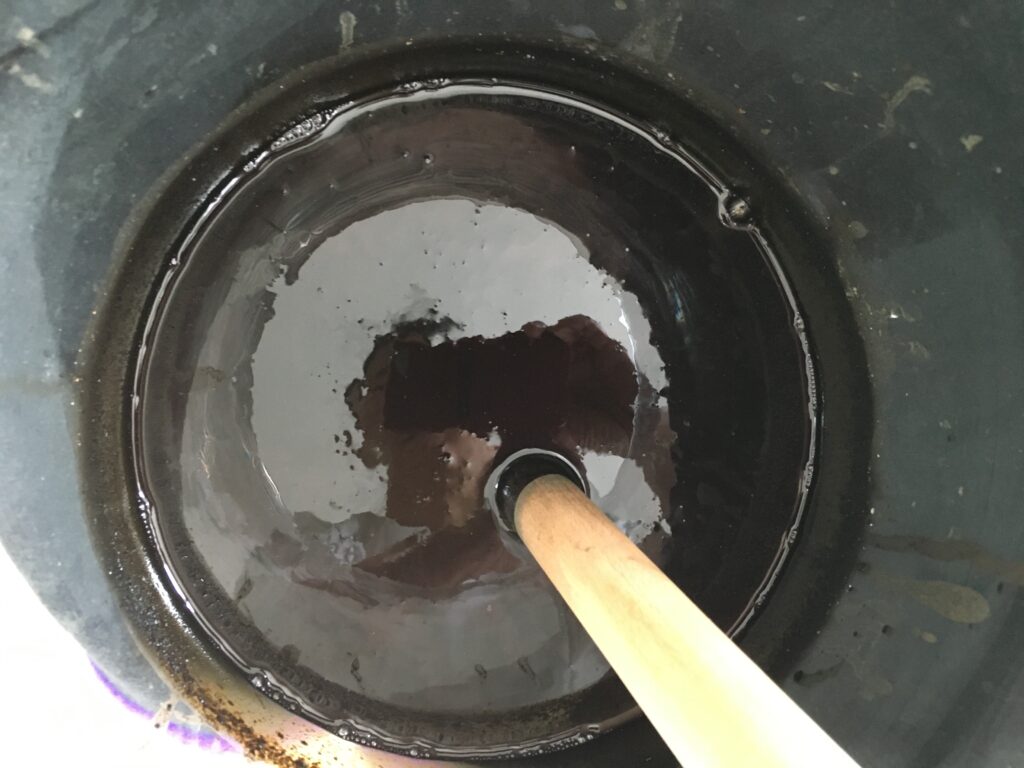
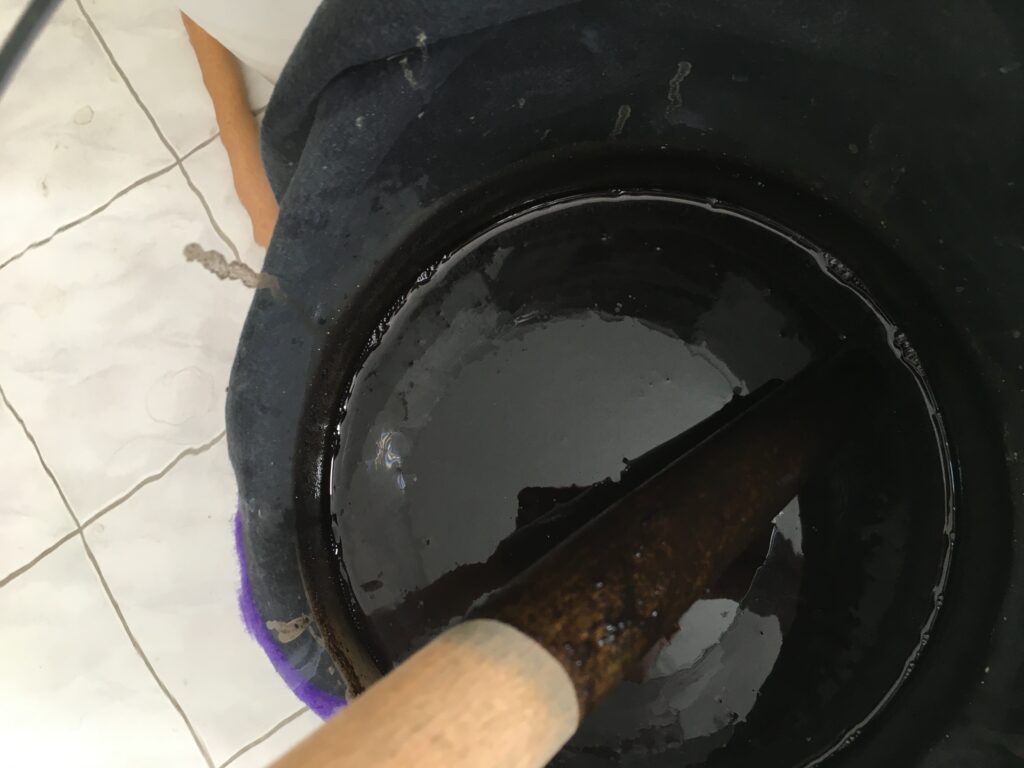
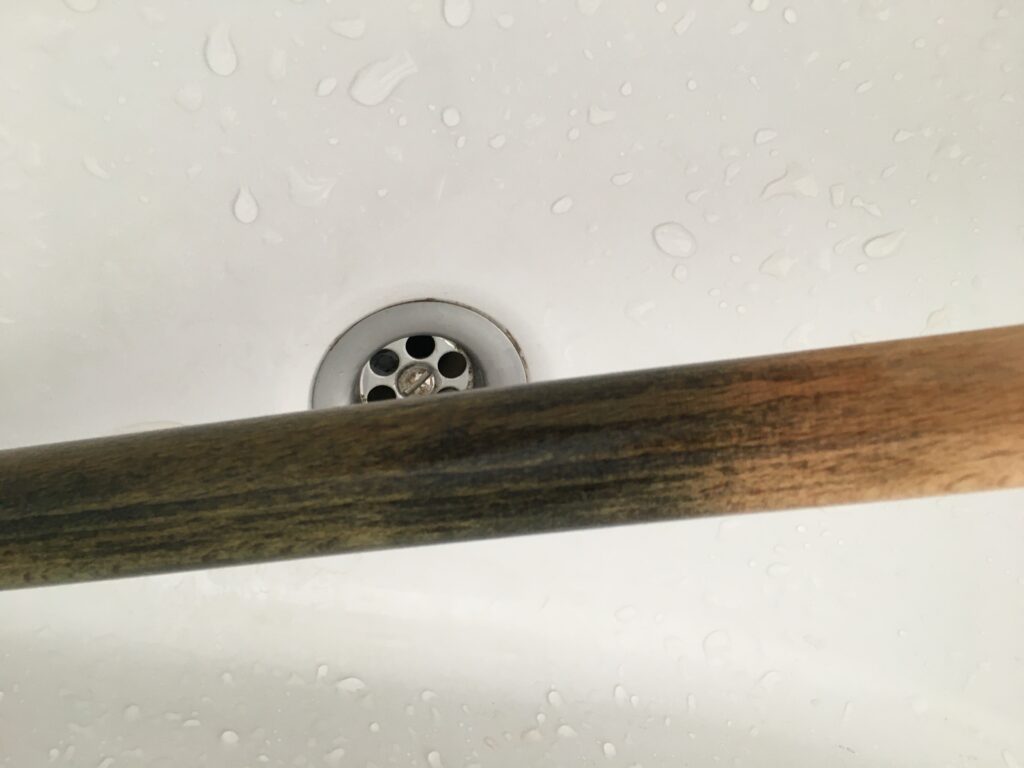
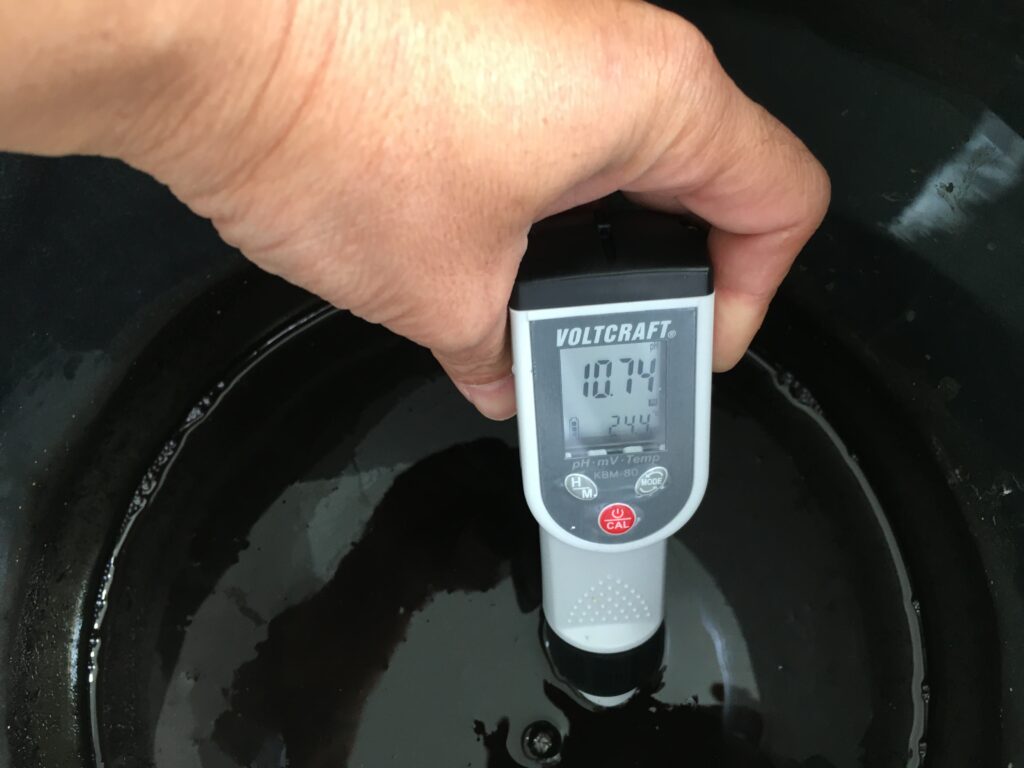
5 days later, it is still not bubbling on the surface. Not sure if I am doing something wrong. The Ph is staying around 10.5. On the 3rd day, it was reduced to 10.3 so I added a spoon full of calcium hydrate. Since then the Ph stays around 10.7. The first days, it smelled strongly ammonia like, and it started to change more into earthy compost like smell with hint of ammonia. Also, in the morning, I see some shiny purplish layer on top. This maybe a good sign?? The mixing stick is slightly coloring to blue so maybe something is happening very slowly?!
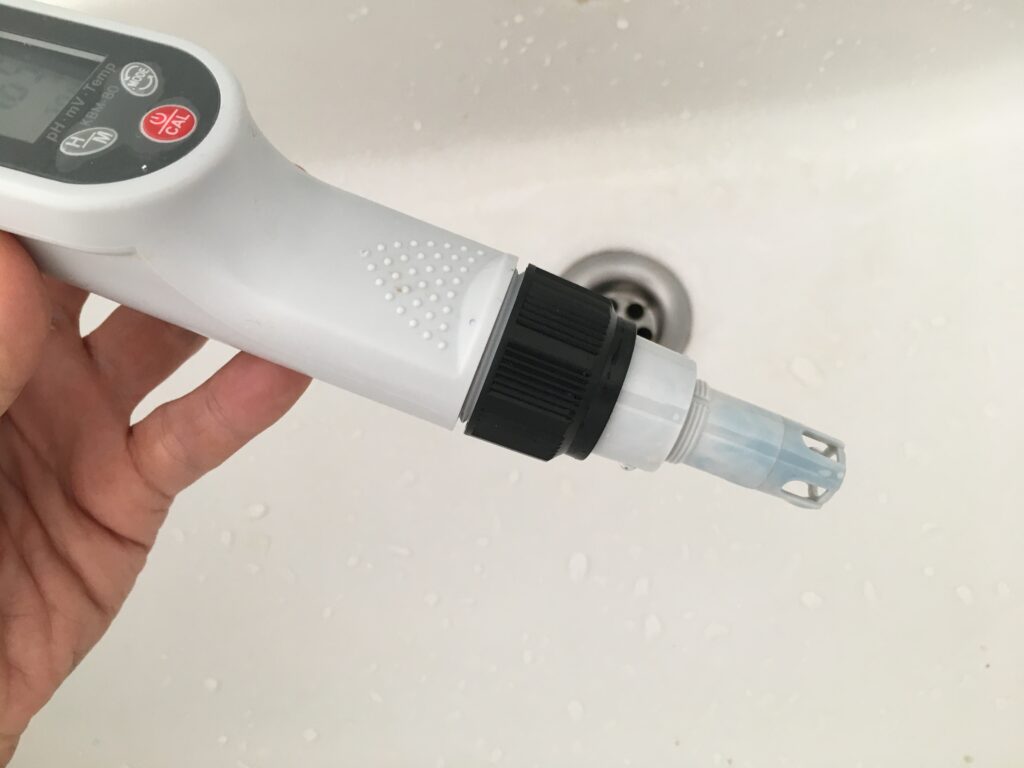
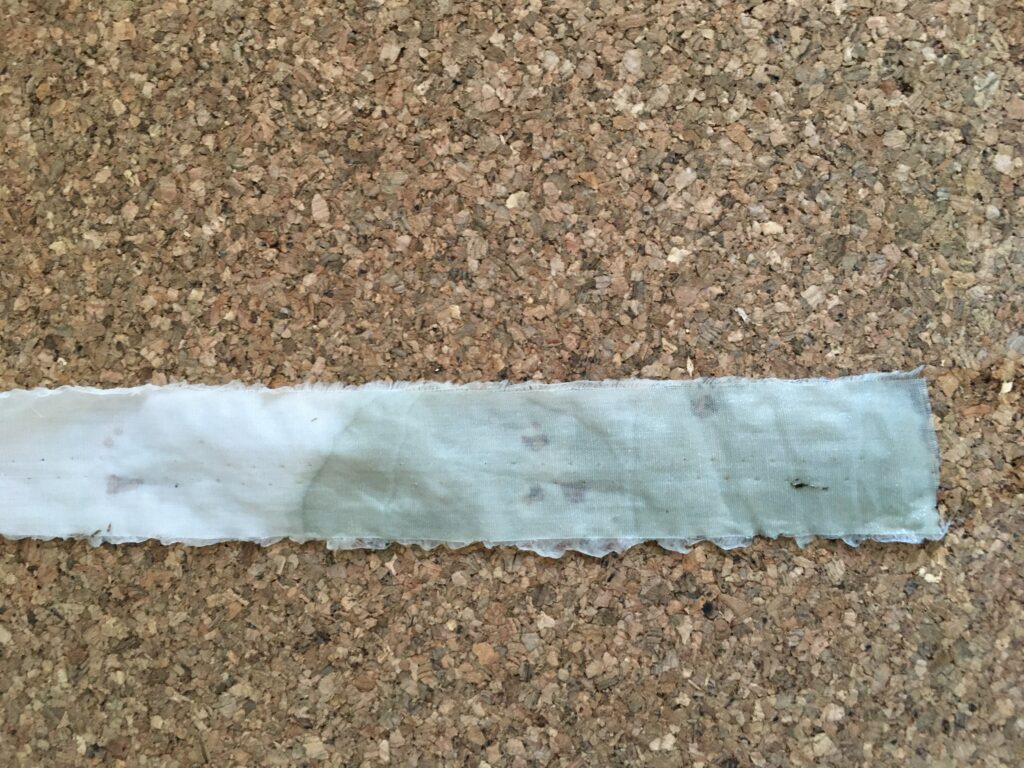
Day 8: still no bubbles. but even my Ph meter tip is getting blue. I decided to do dye test and dipped a piece of cotton… no blue dye yet.
I watch the tutorial video once again… and feel like the liquid I have is a bit too thick? so, I decided to add some pot ash water (normally they do this after you start to see the bubble). I added very hot pot ash water to about the 1/2 point of the container. I also added calcium hydrate (two spoons) and sake (~80cc). Now the Ph is 11.
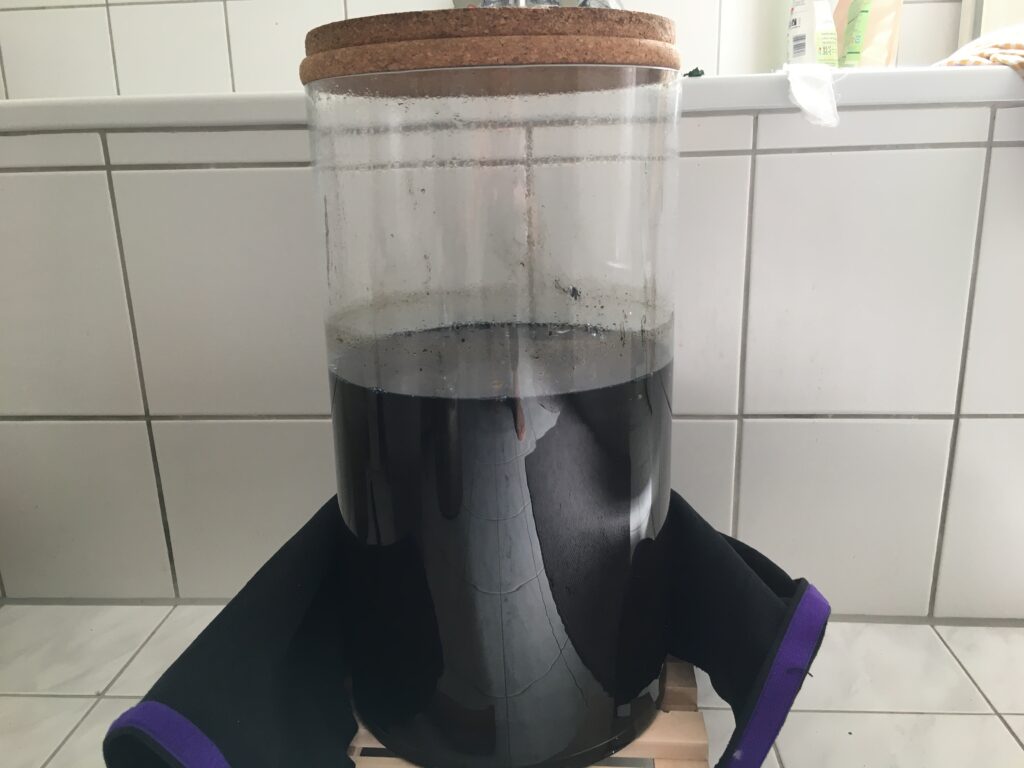
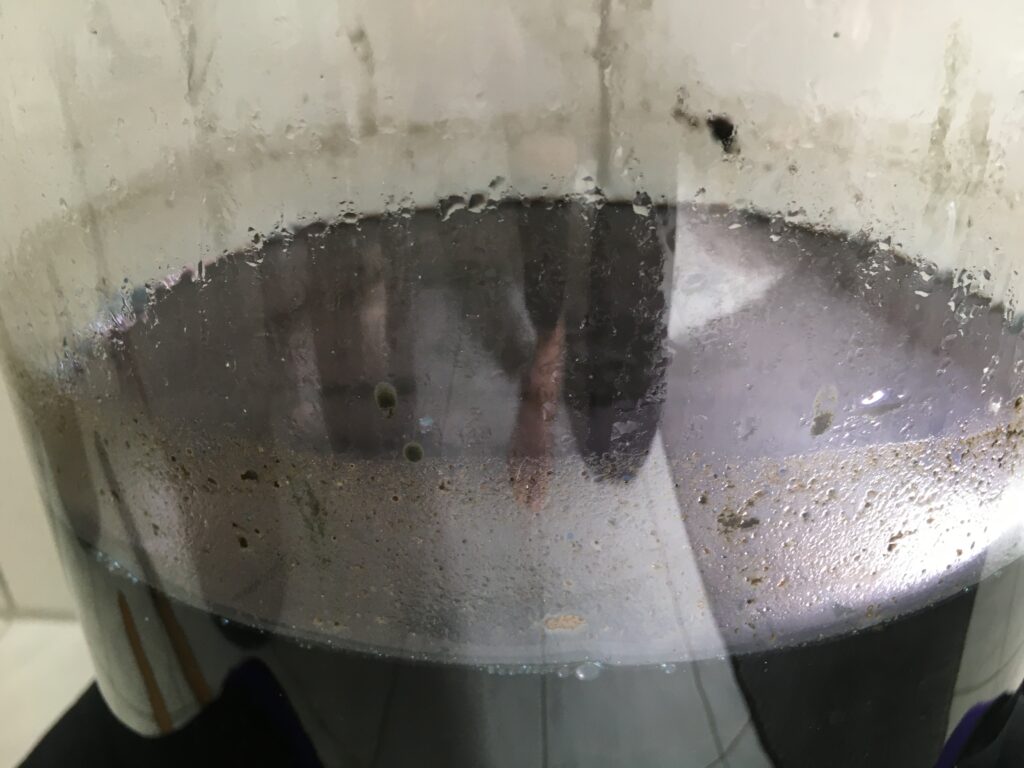
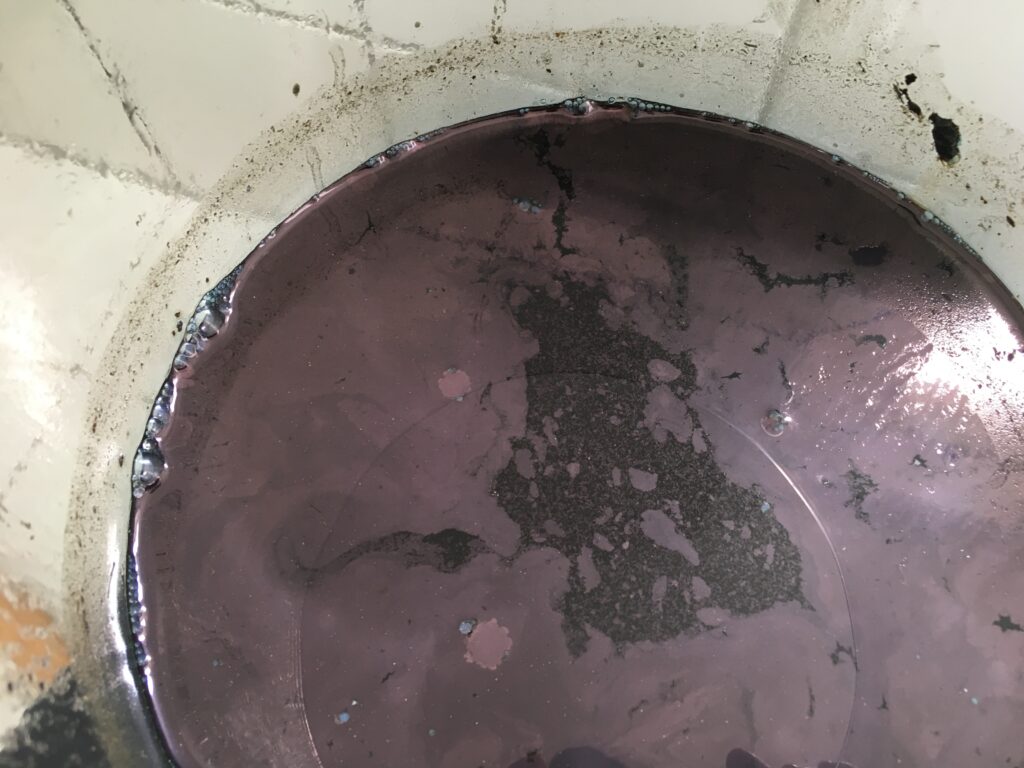
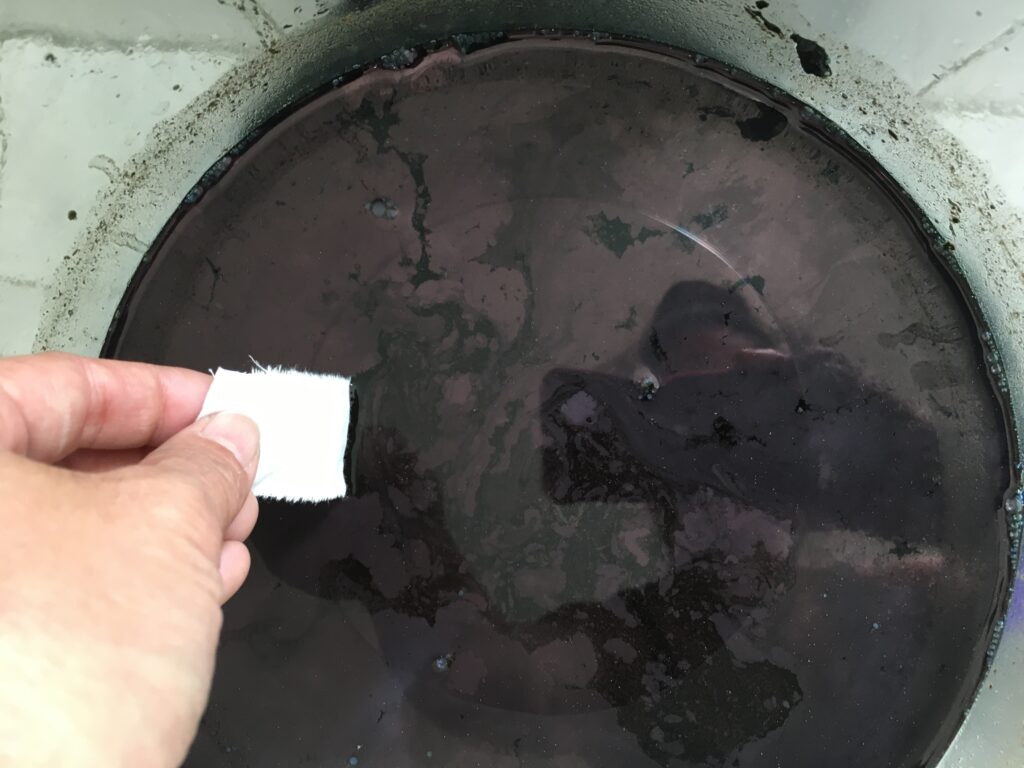
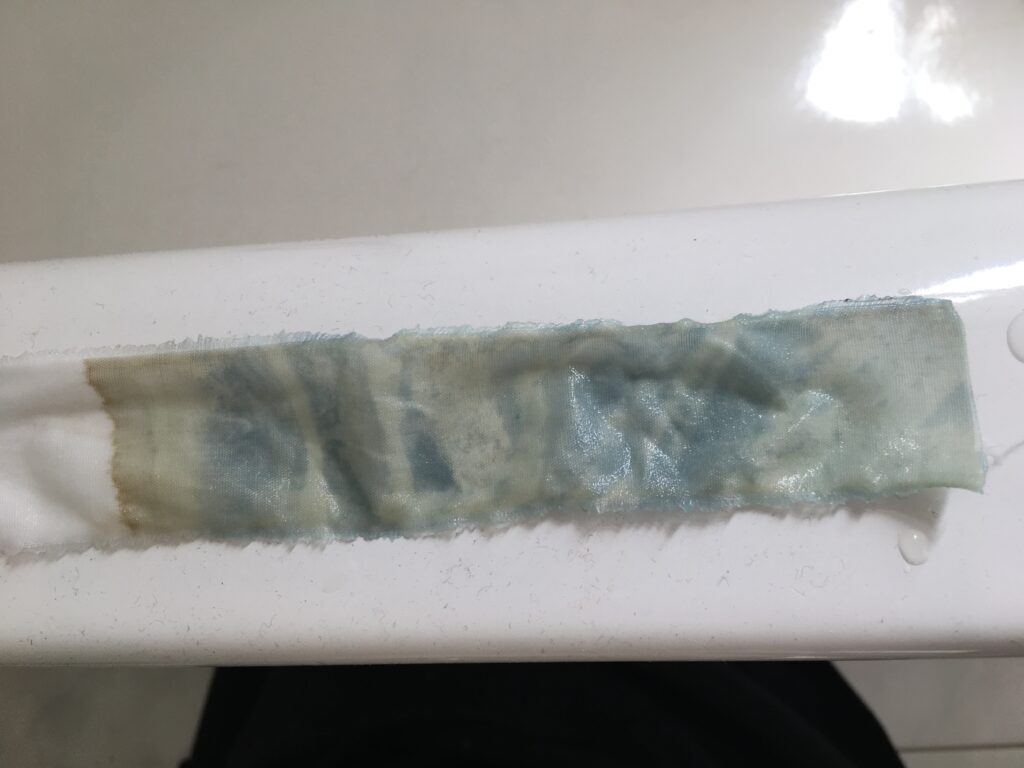
Day 14: I was away for 5 days and it was left in silence. I came back and first thing I did as to open the lid and see how it is doing. Not much change. The PH is 10.78, temperature 21, no bubbles. I stir it and let it sit for the night. Next day, the cycle of 3 hours stirring starts again.
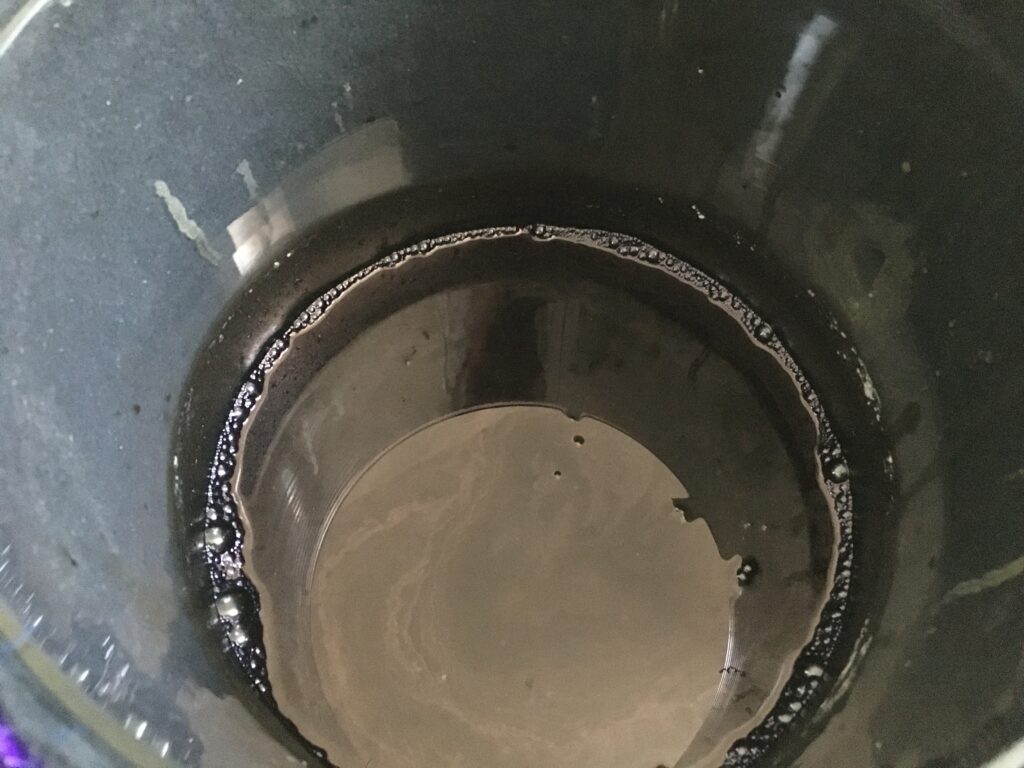
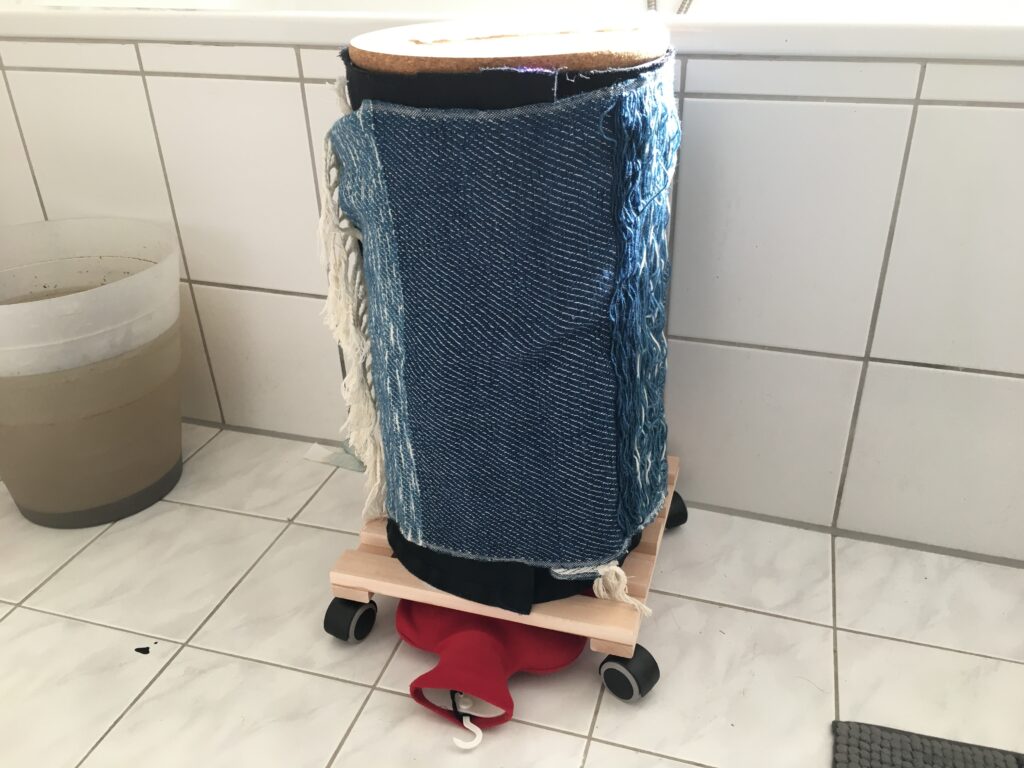
Day 15: Still no change. PH is now even 11. Not sure how it goes up without adding anything. Keep stirring.
Day 17: It has been chilly the last days (~17 degrees outside), so I place a hot water bottle under the vat container. I see a shiny coppery membrane on the surface (this is a good sign of küpe usually) but the strip test shows a very little color on the test fabric. The unpleasant smell is quite strong.
Day 18: It is a bit warmer today, predicted to go up to 24 degrees. Still I change the hot water bottle and slit under the vat container. The measurement is PH 11.2, temperature 21.7. I start to see a small bubble and the liquid feels a bit creamy. It smells much less.
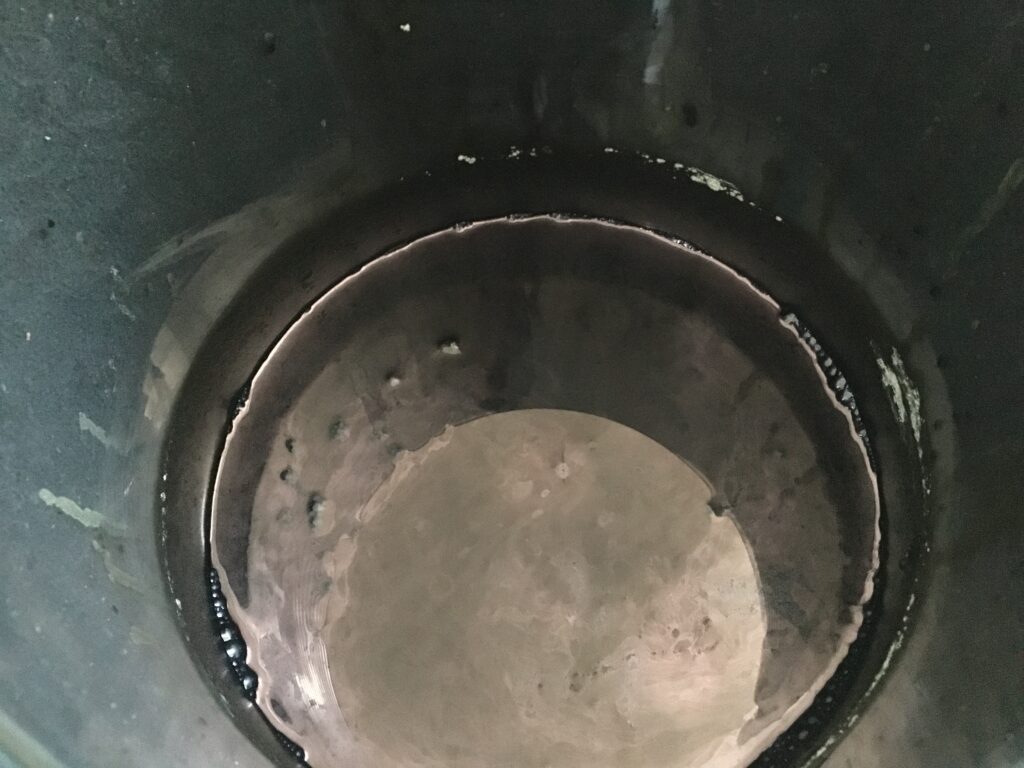
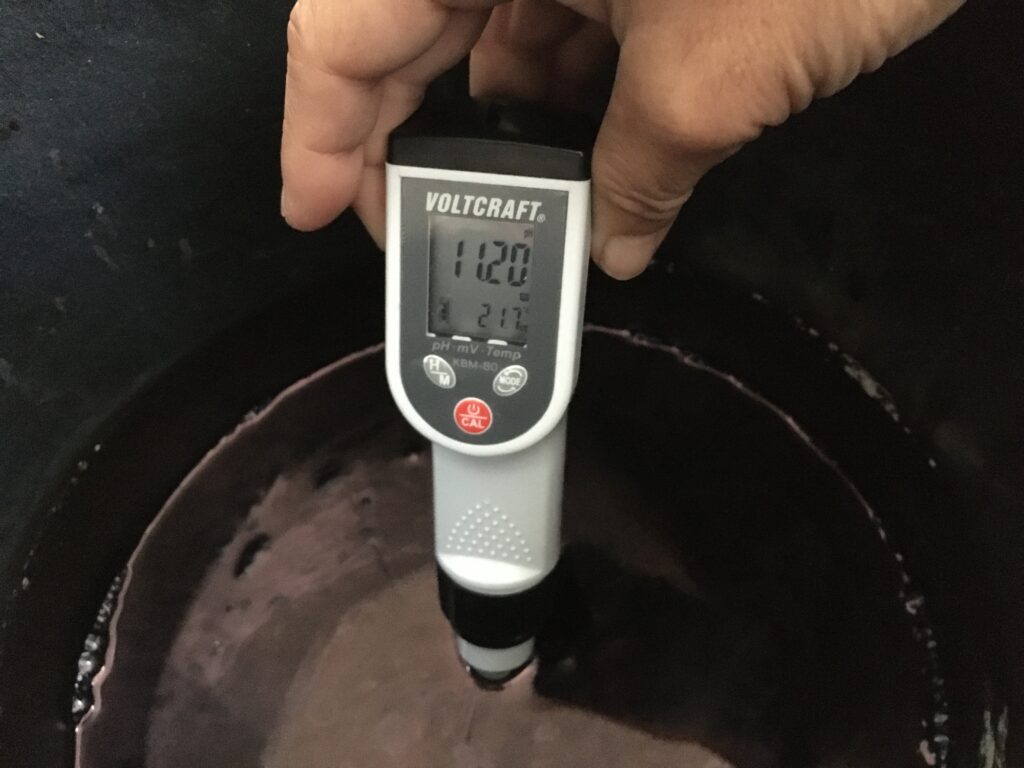
Day 19: PH is slightly going down
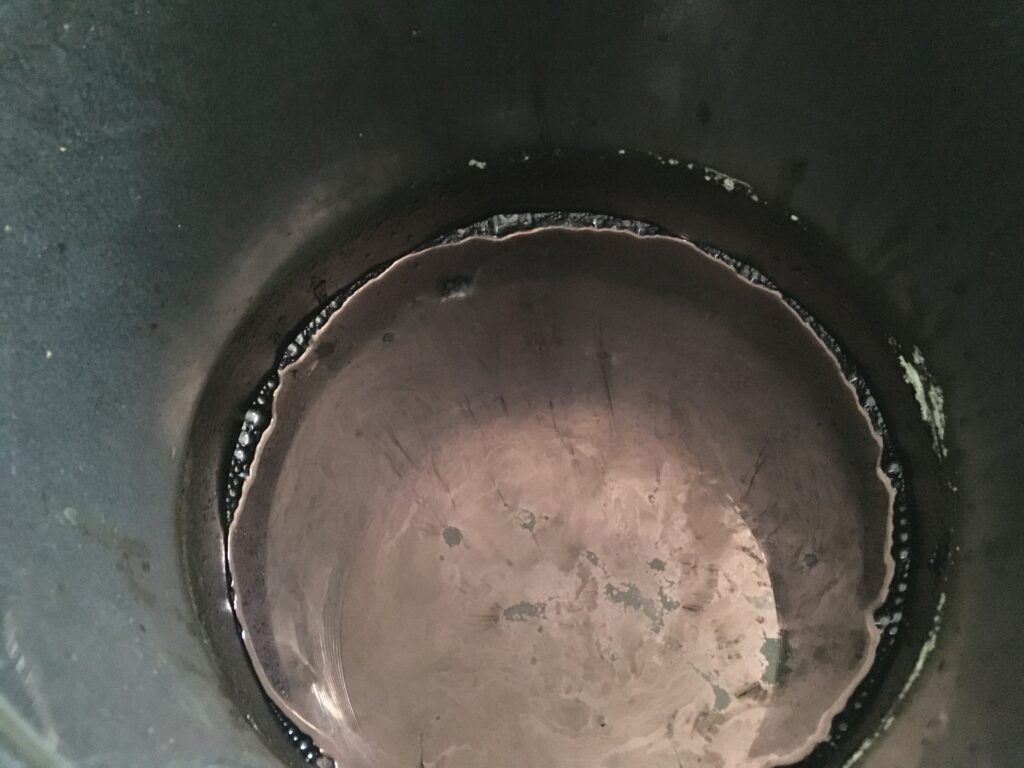
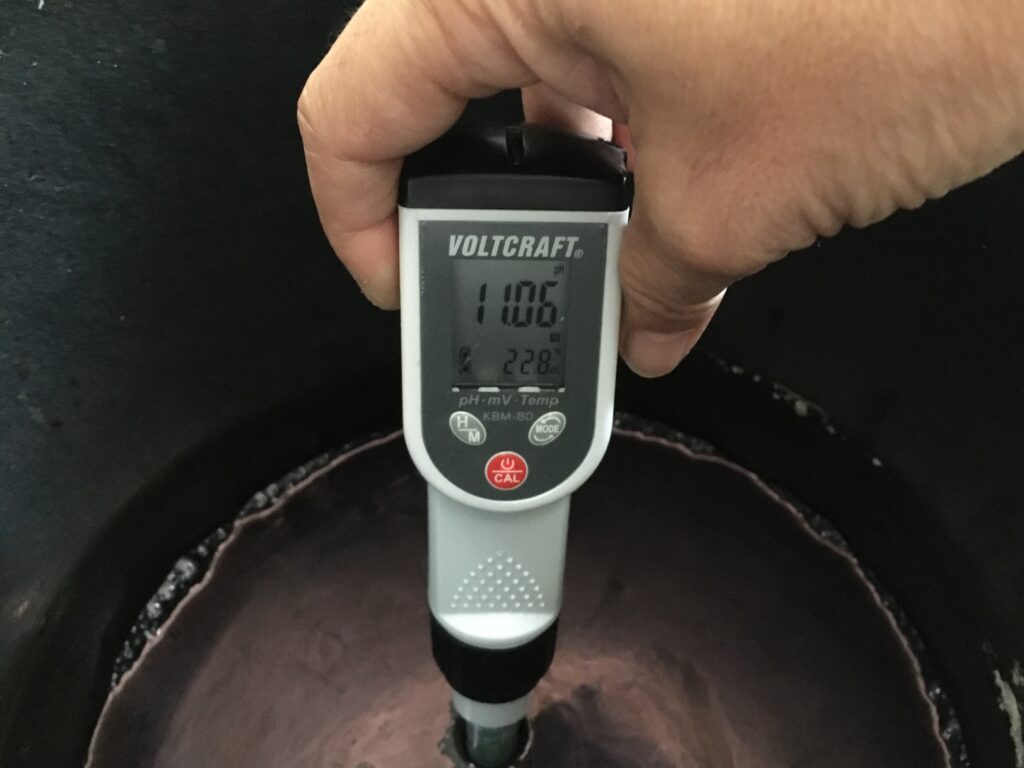
I am afraid that the vat is too cold… so I bring in the next device, the electric heating mat with thermostat. I am setting this to 25 degrees, and let’s see how it goes.
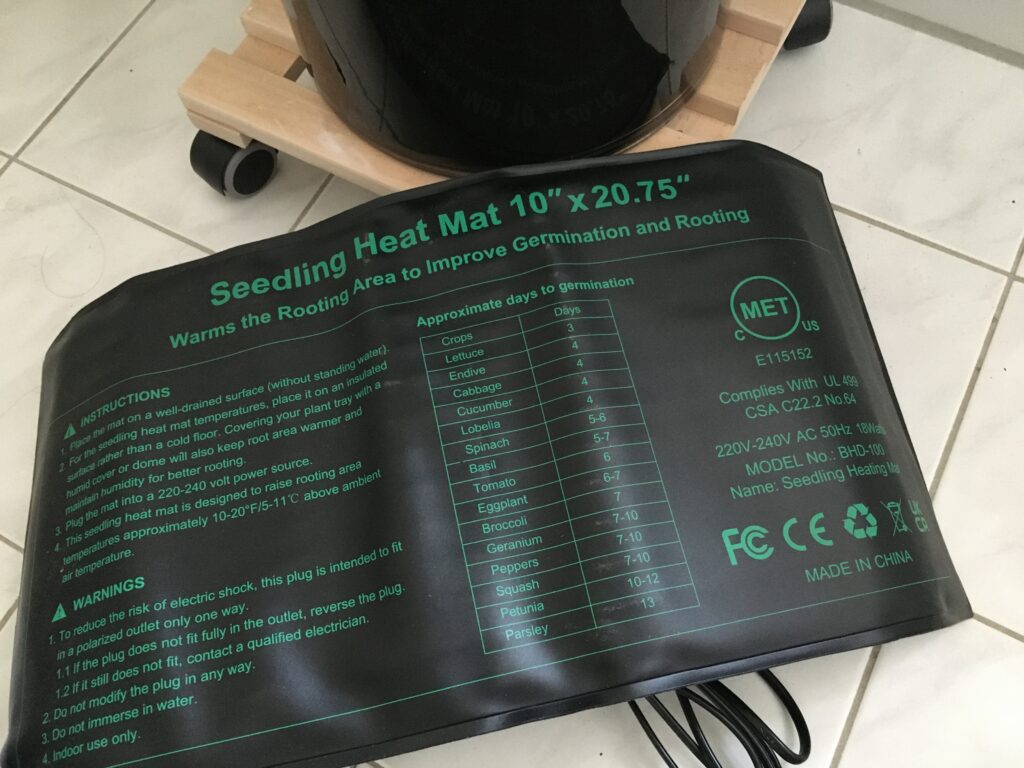
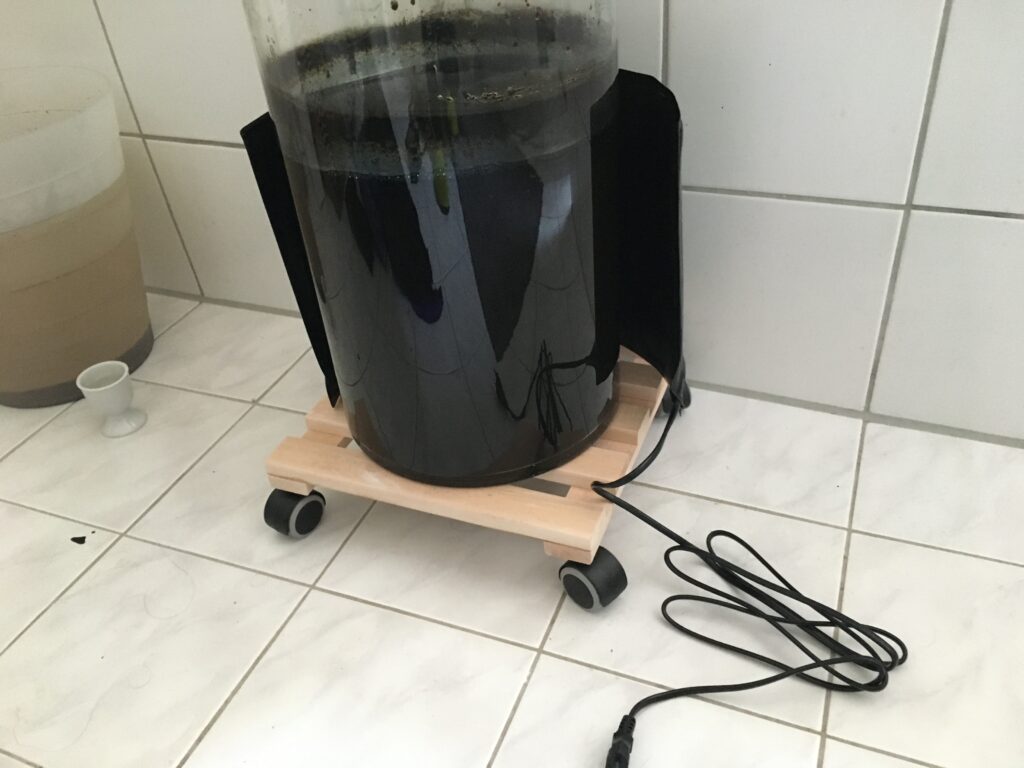
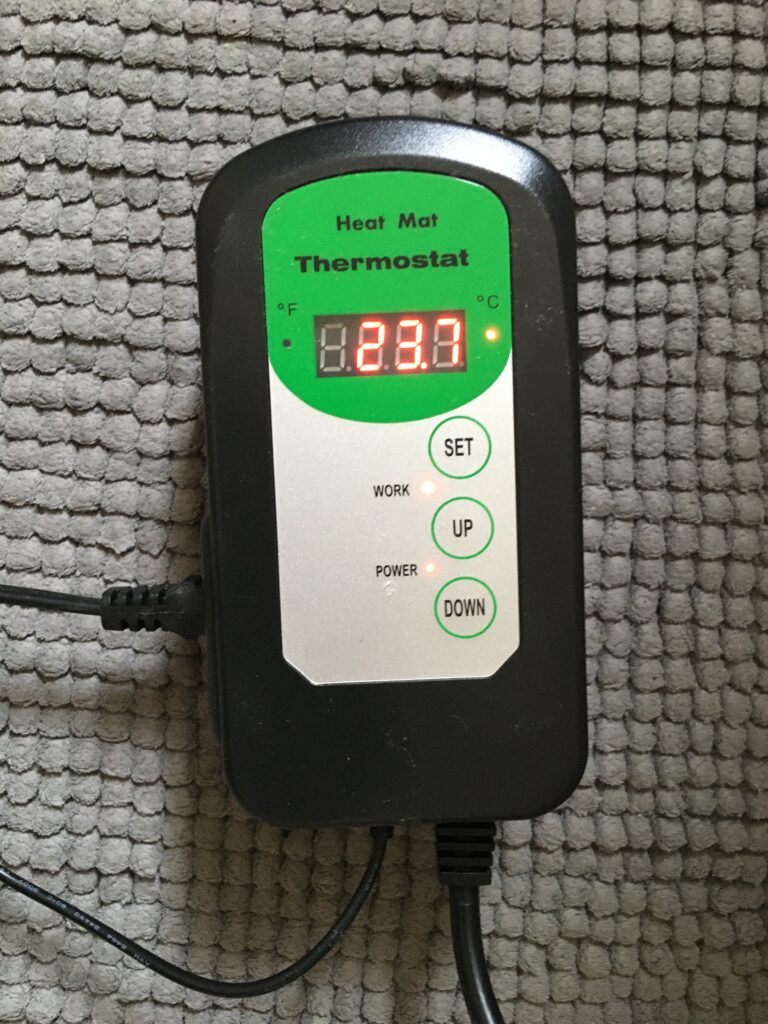
Day 21: After 2 days of heating the vat to 25 degrees. I still do not see the bubbles, that means the bacteria is still not active. The PH is going down, so maybe there are some activities. I had the temperature set to 24 degrees at night, and that’s why the measurement shows 24 degrees in photo. I set the thermostat back to 25 degrees now.
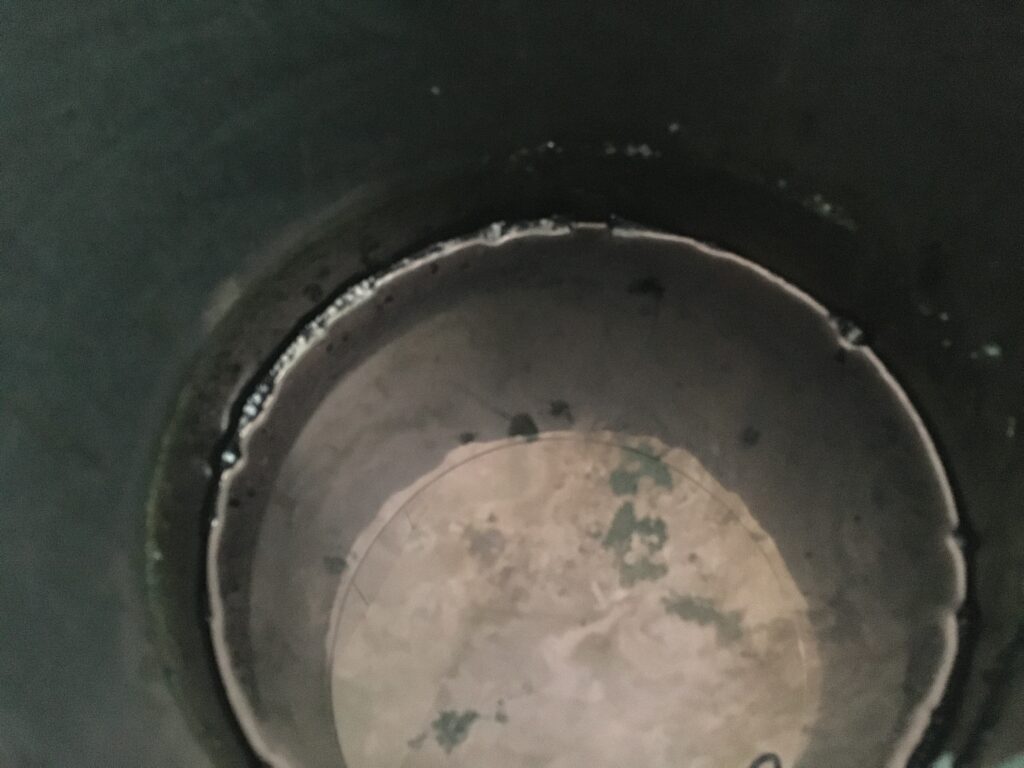
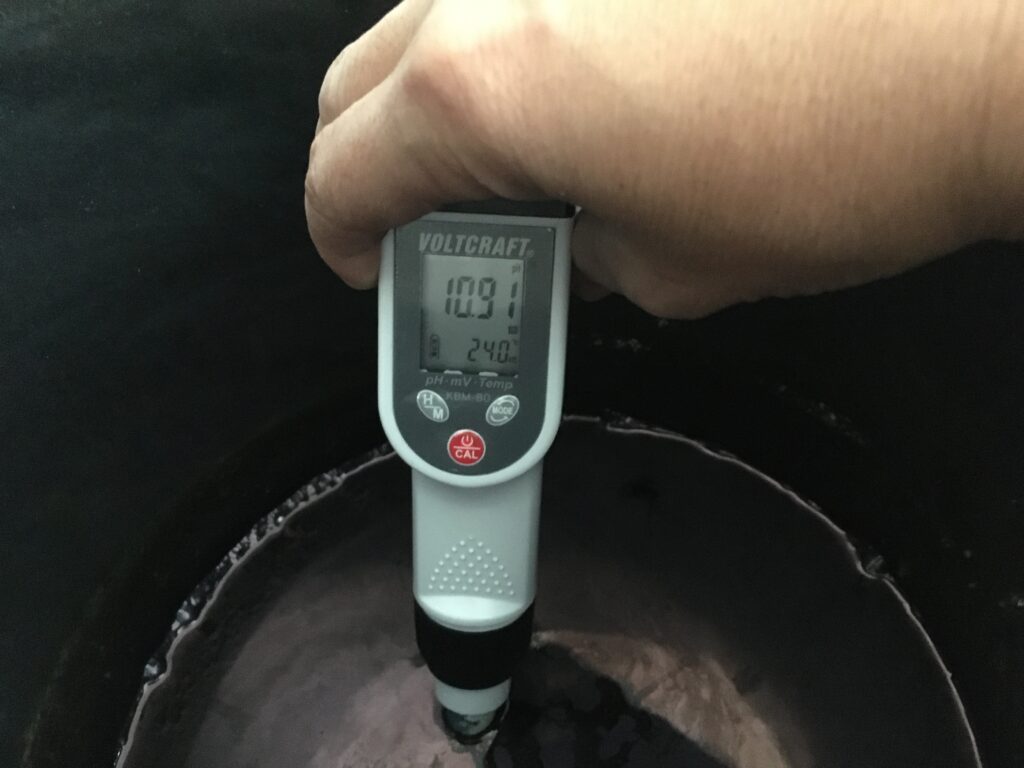
Even though it does not look like REDOX (reduction) is happening yet, I make a strip color test, just in case. It is slightly dying to blue so some reduction is happening.
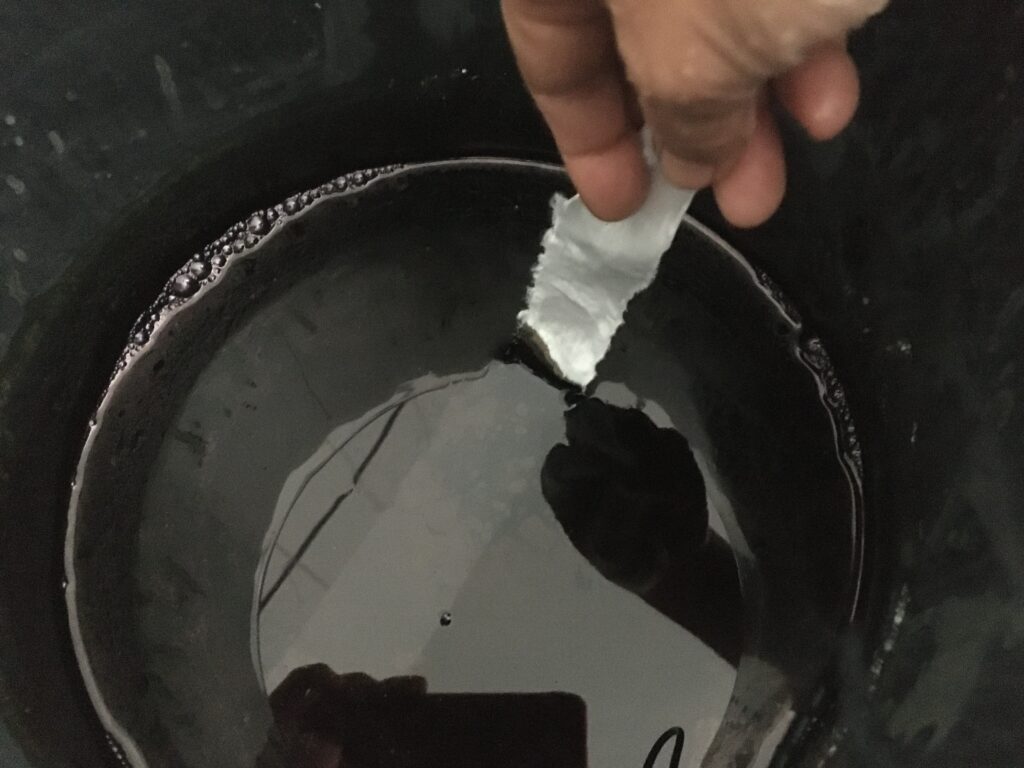
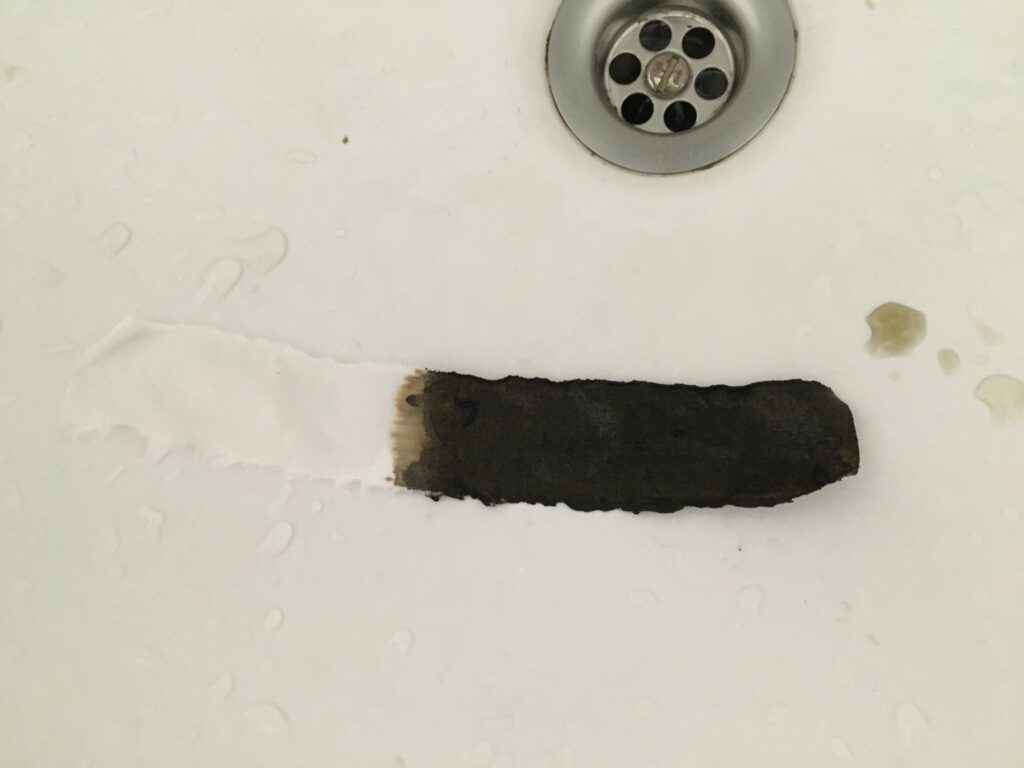
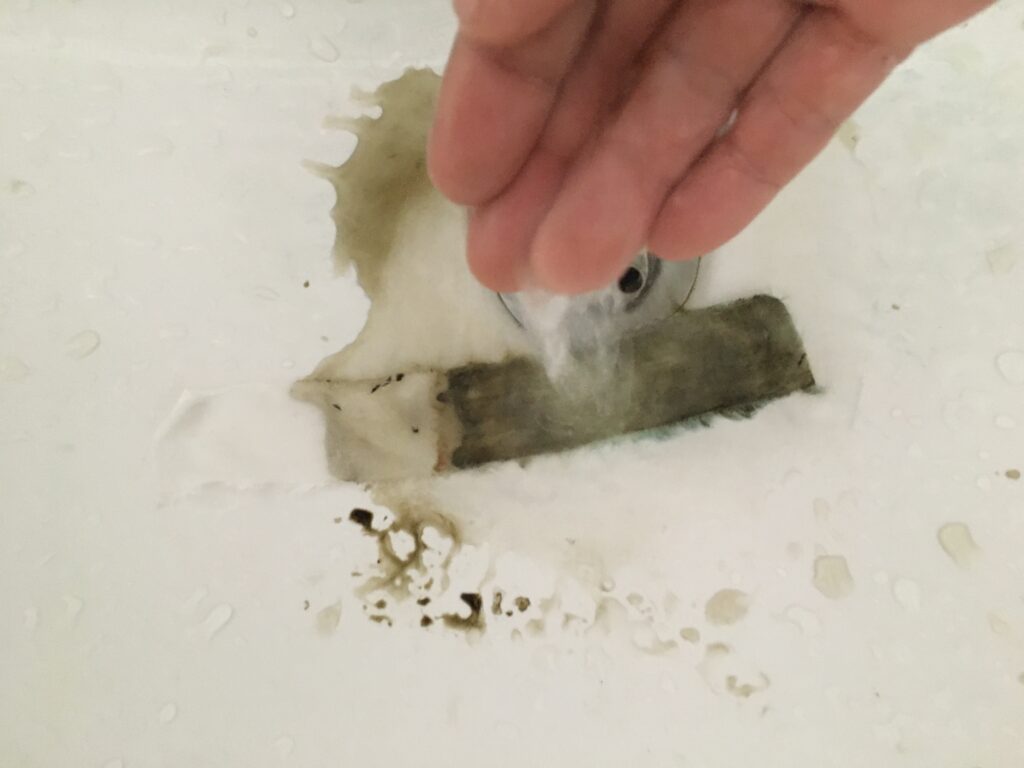
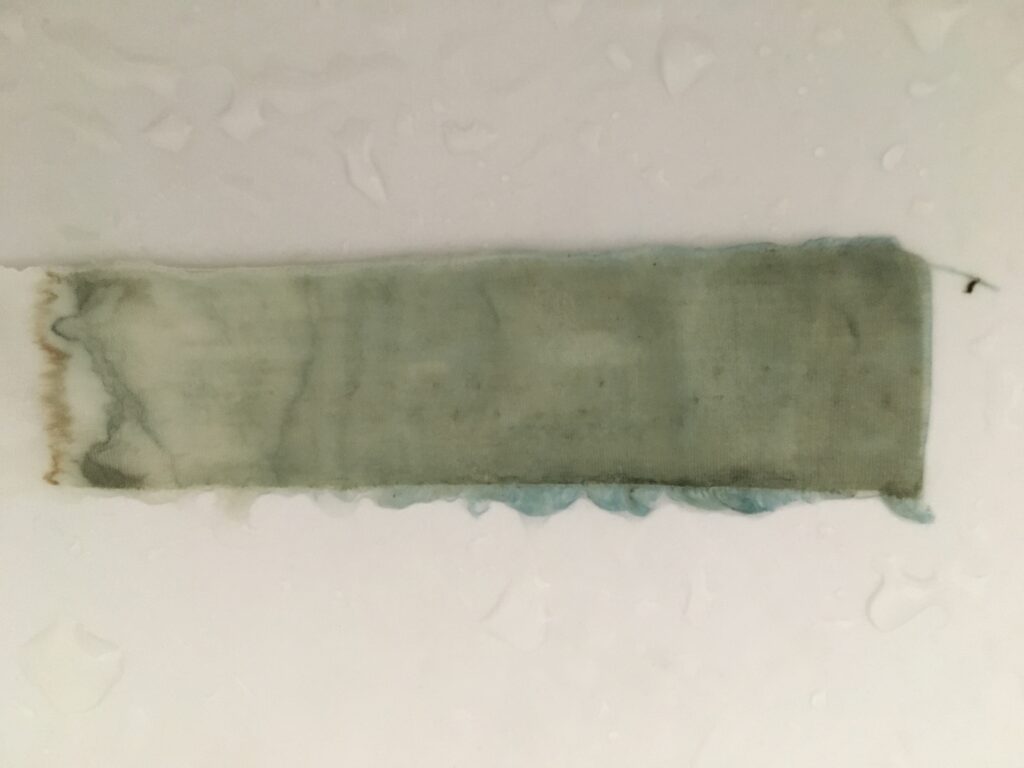
Day 25: Still the same. It smells slightly strange… like pooh, or puke. but very slight.
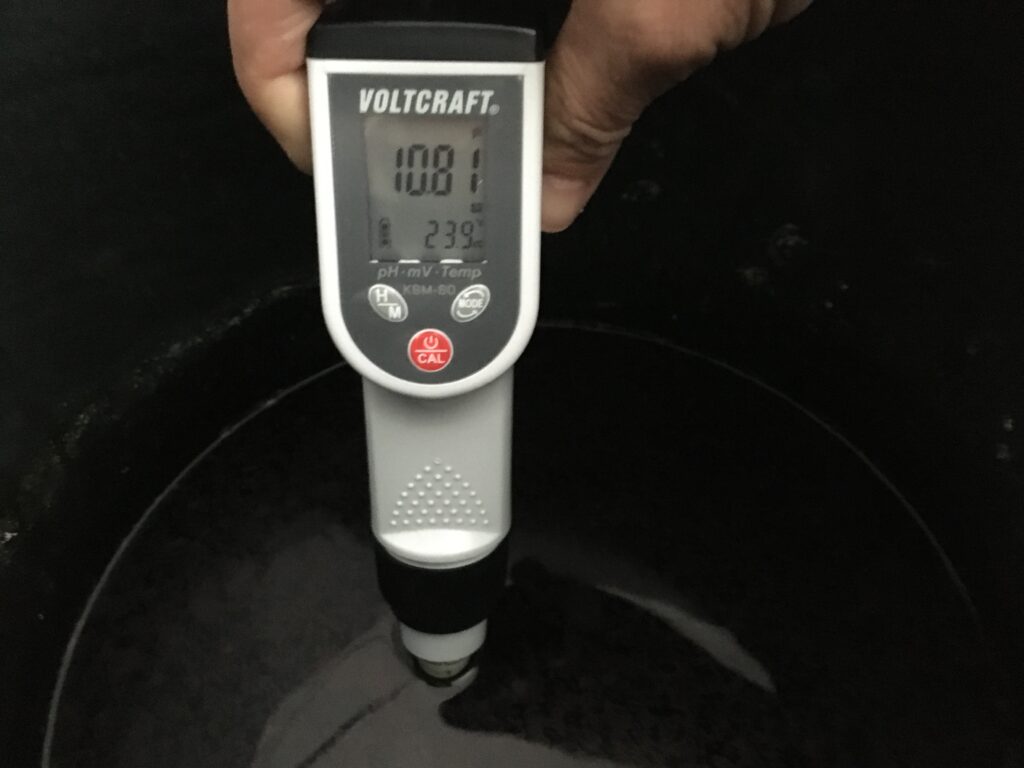
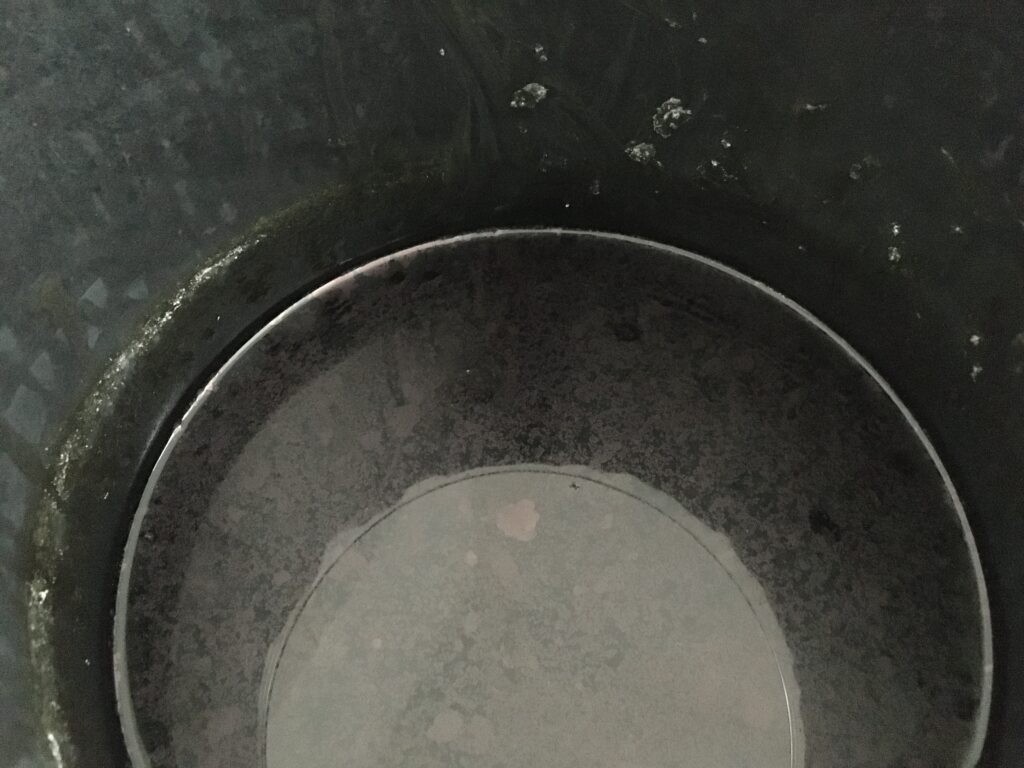
Day 26: No big change. I am a bit afraid that wrong bacteria is getting active, so I added a spoon of calk (ca(oh)2) in the morning and mix it well.
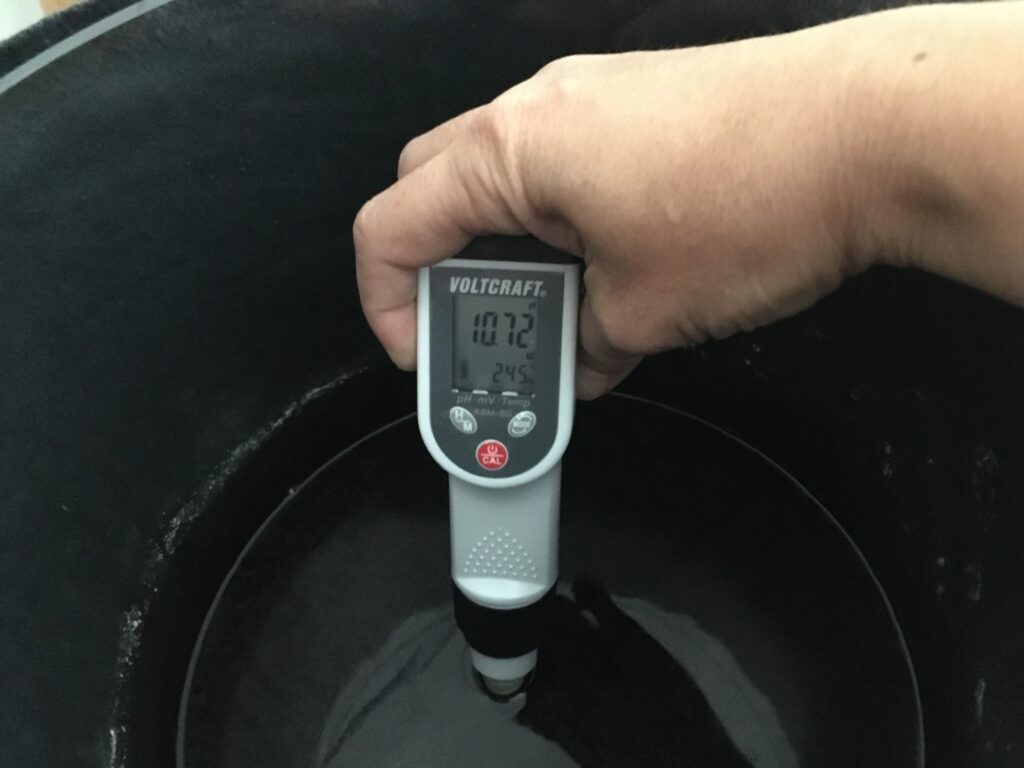
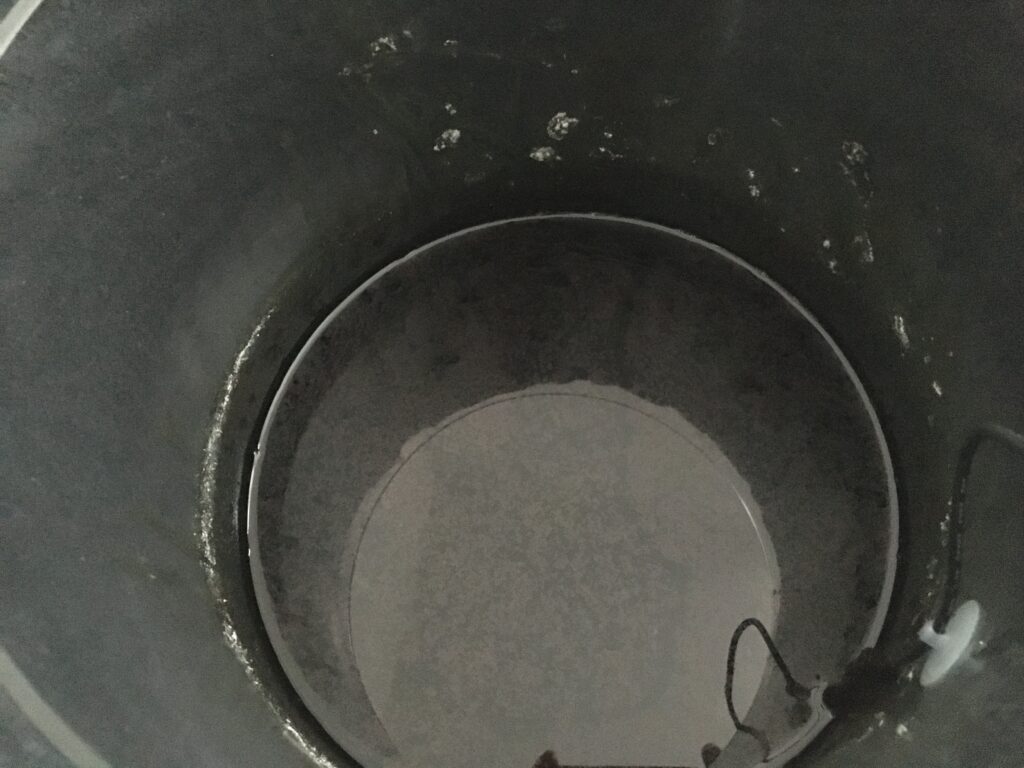
Then I decided to add some wheat bran, thinking maybe the bacteria do not have food by now. I cooked 20g of bran with ash water. But then when I was adding, I felt like this is too much… so I added just the half of it to the vat then mixed it well. I hope this brings it to good direction.
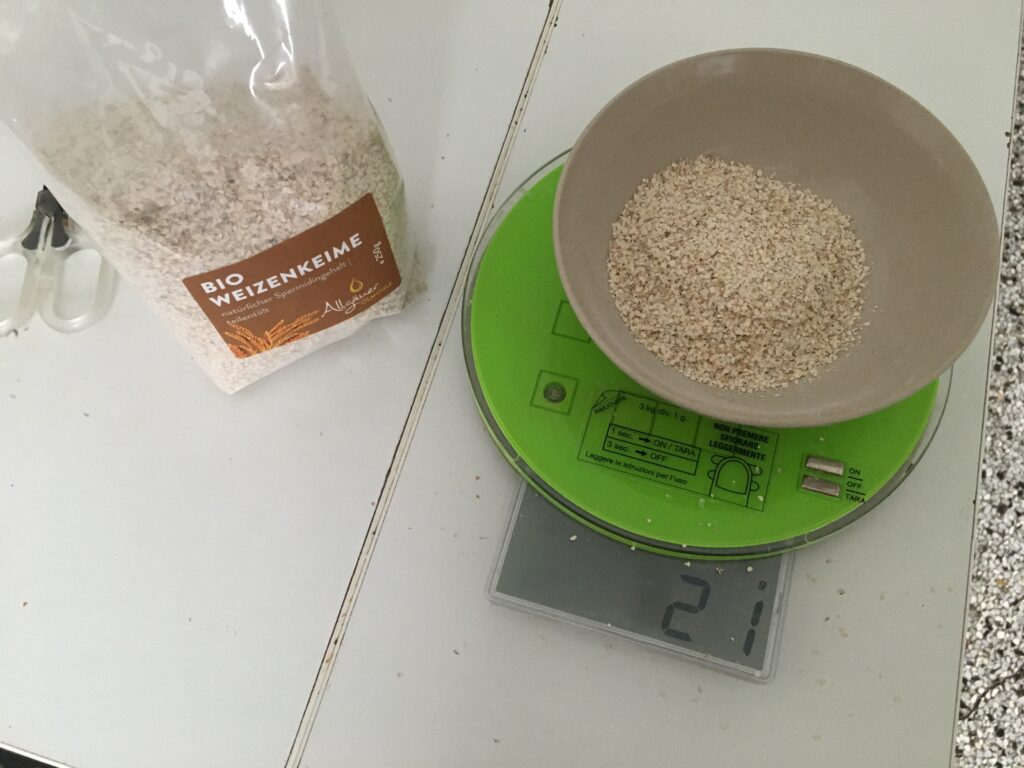
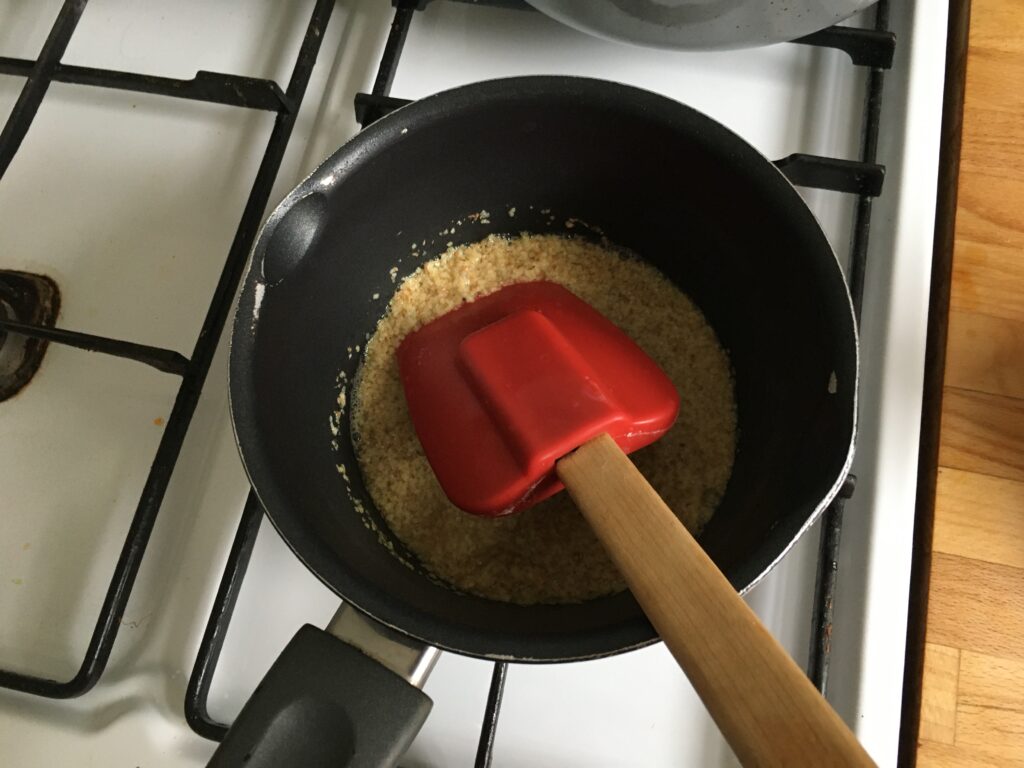
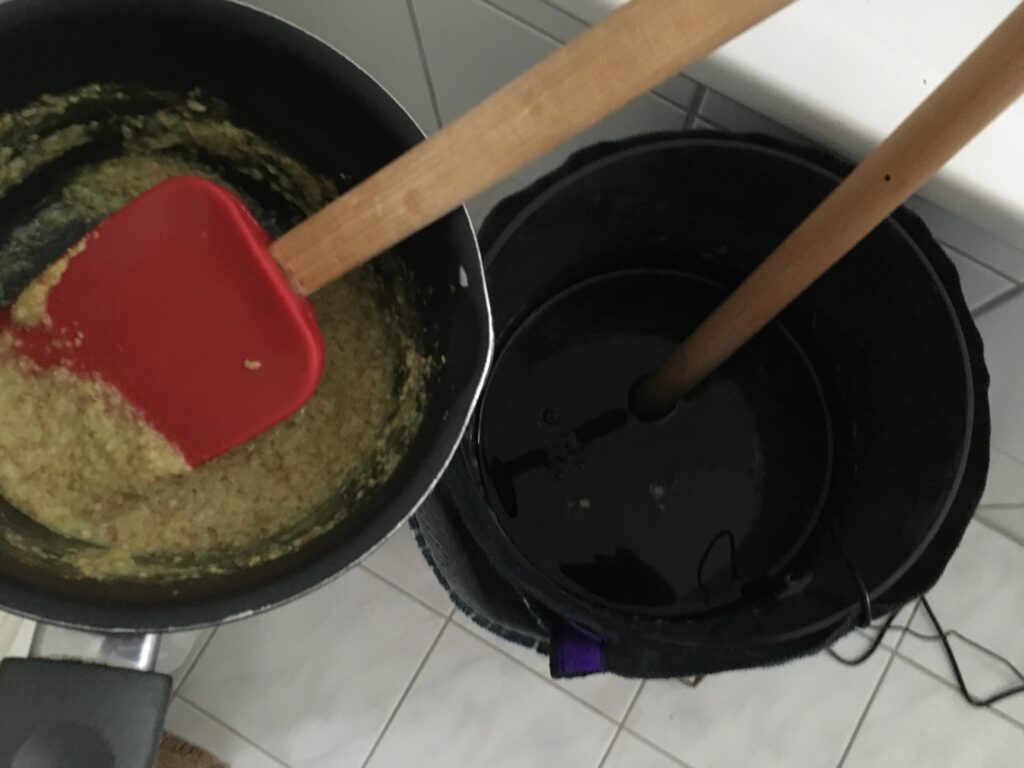
I ended up spending whole day researching and reading up to documentations online from people who succeeded and failed to make sukumo vat. I found two documentations (this and this) which talks about small scale vat (10-45L) and they say it takes much longer for fermentation to take place.
The first one had the vat temperature over 25 degrees (sometimes 28 or more) with Ph 11 or more. I wonder if I should make my vat Ph even higher… At the moment I am aiming to keep it around Ph10.8-11, 24 degrees.
I was starting to feel that this vat will never work… now that I read about smaller vat, I feel I should just be patient. Let’s see. As long as it is not smelling bad, It should be ok. I wonder what is the “sweet indigo smell” that people talks about… My vat is starting to not to smell strong ammonia but something else… is this the “sweet smell”?!
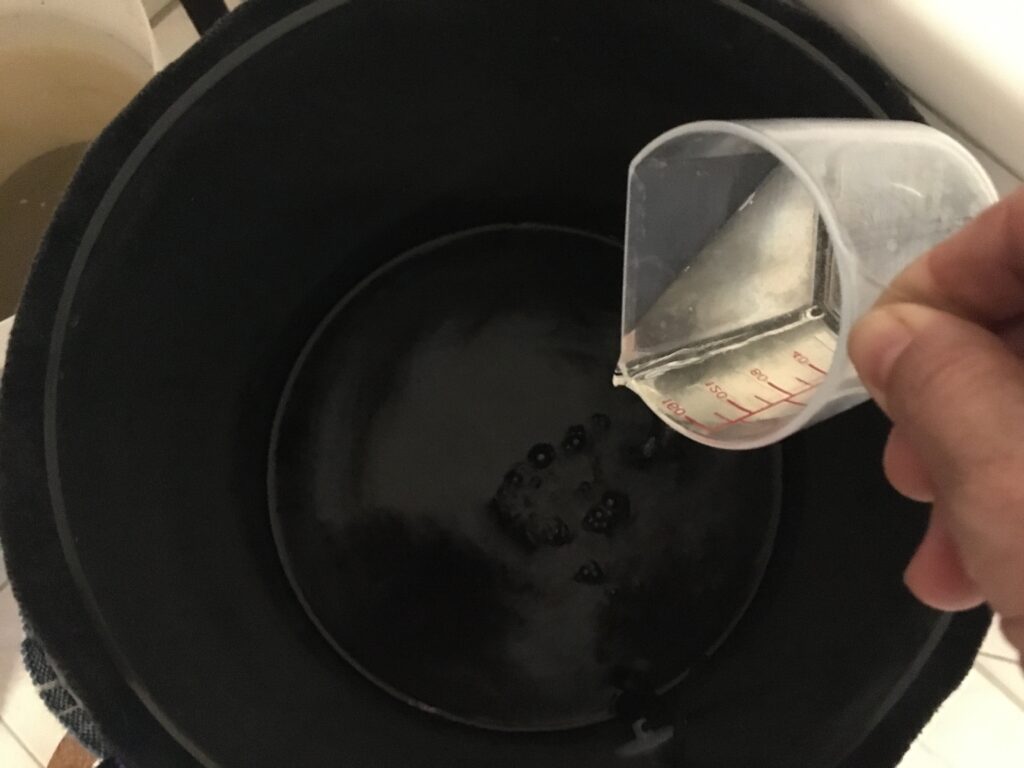
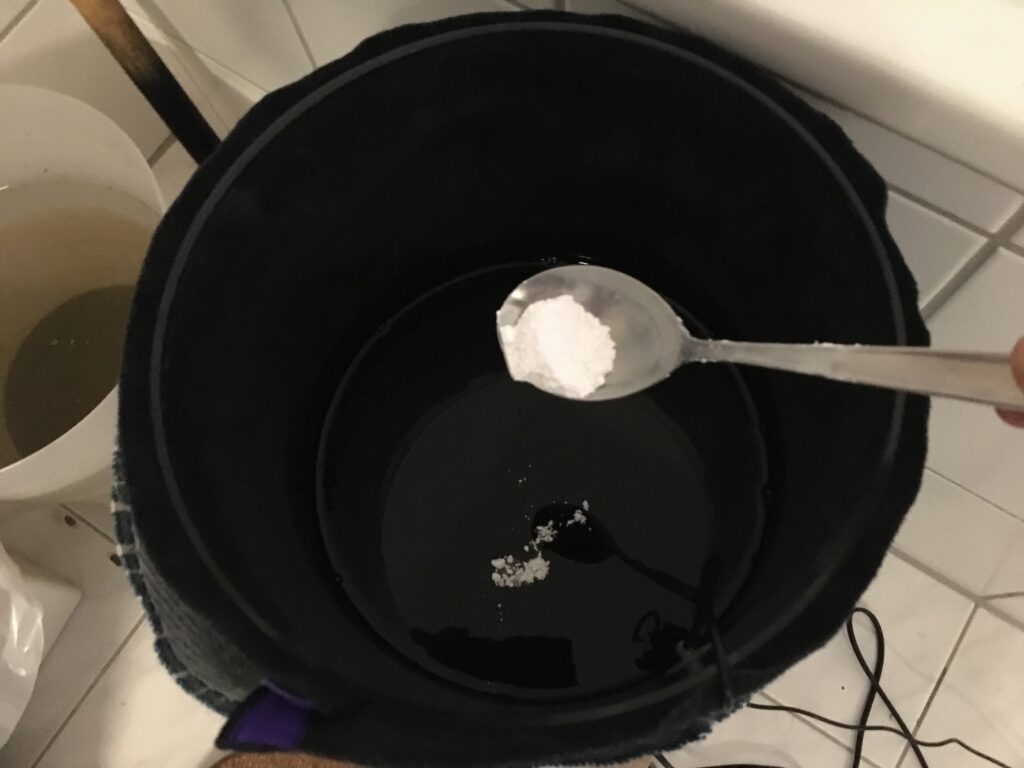
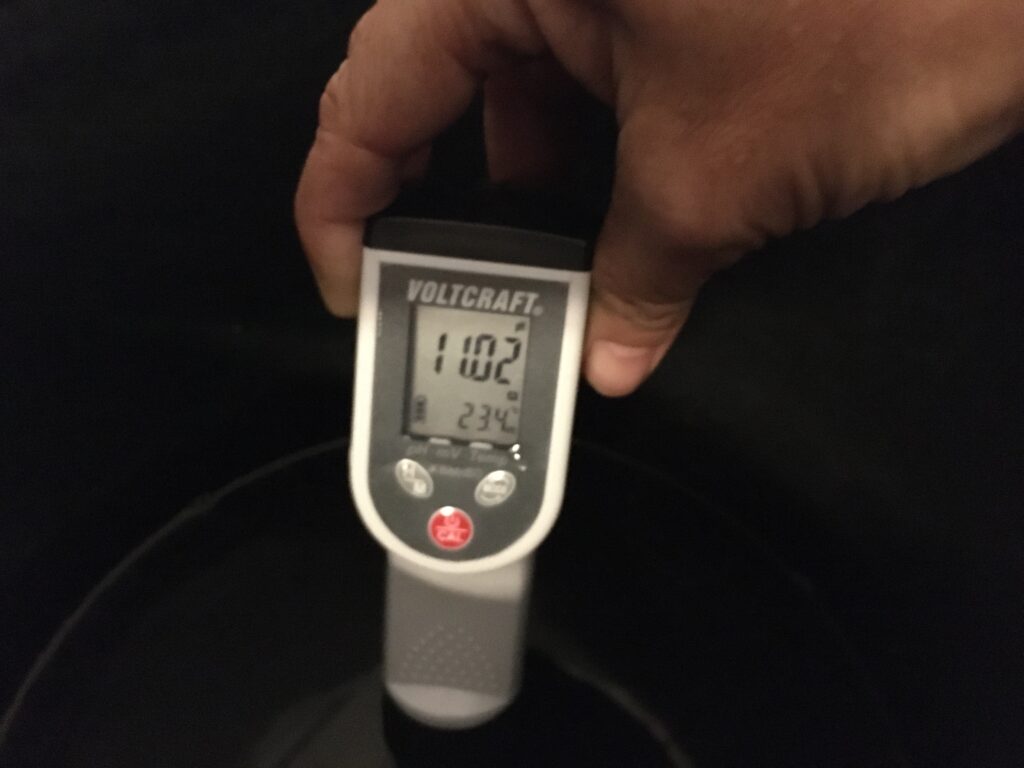
Lastly, I added room temperature sake 50cc and half a spoon of ca(oh)2. The Ph was then 11.02, which I expect it to go up a bit more, like 11.5 tomorrow.
Day 27: Since I added a lot of things yesterday, I was very curious when I opened the vat this morning. I immediately noticed sweet smell, probably coming from sake, but no shiny membrane, no sign of activity. Ph is now 11.10
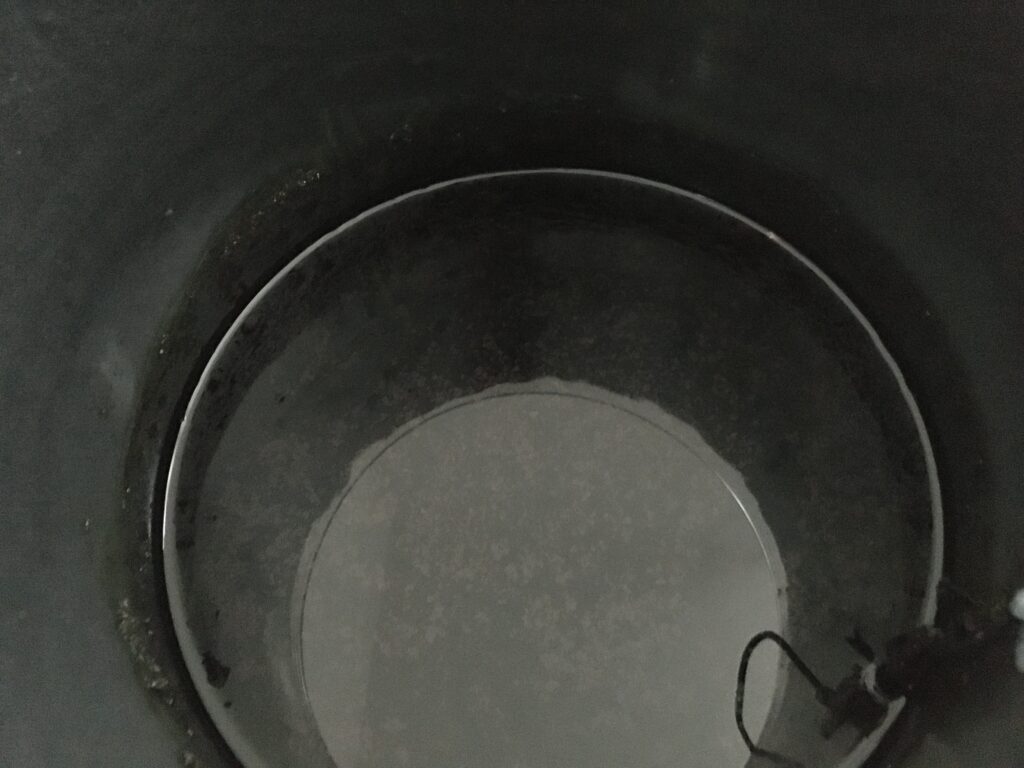
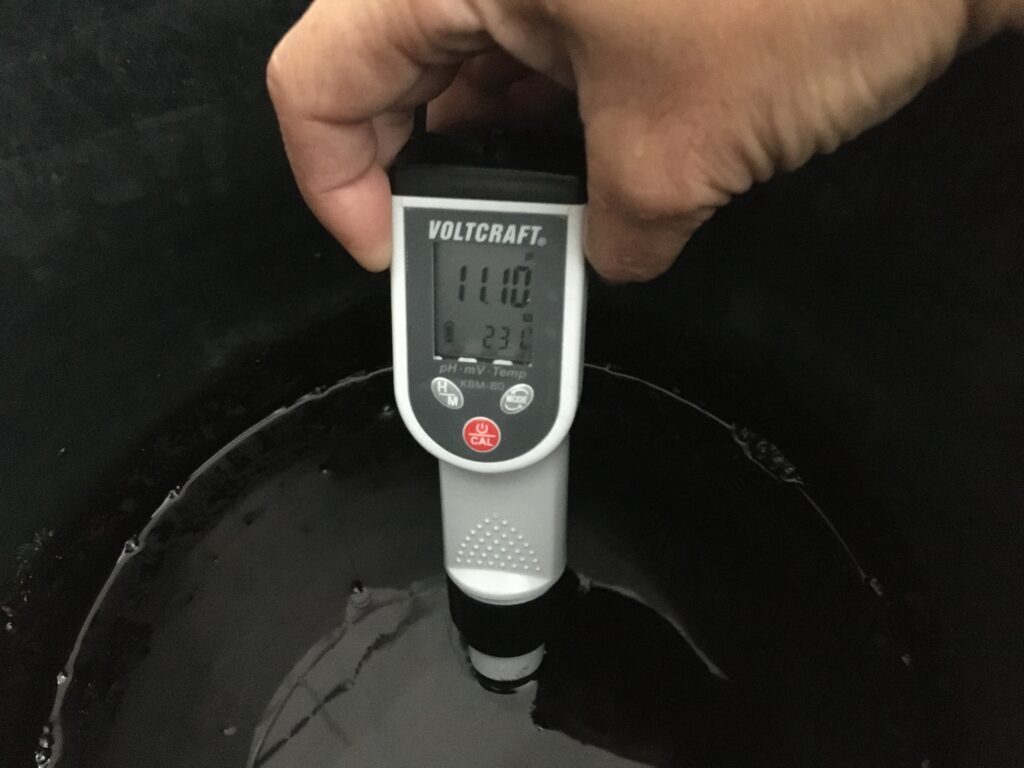
I decided to add a bit more ca(oh)2 to raise the Ph. As I am afraid I could easily make the Ph too high, I just add half the spoon. It was mixed well then.
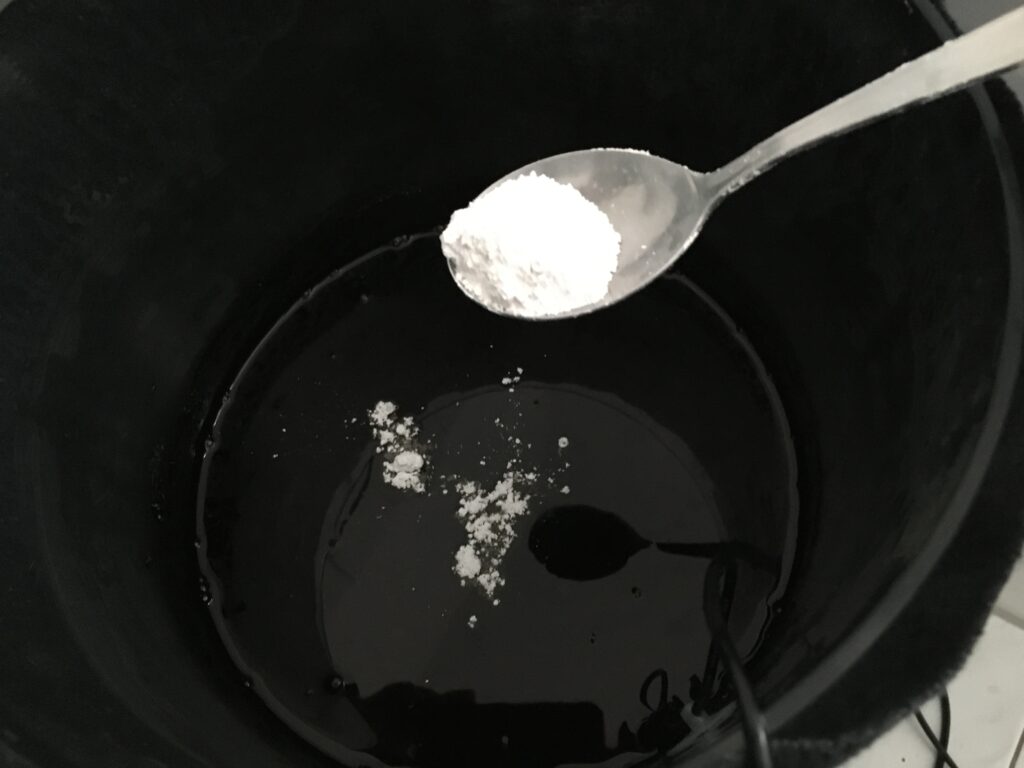
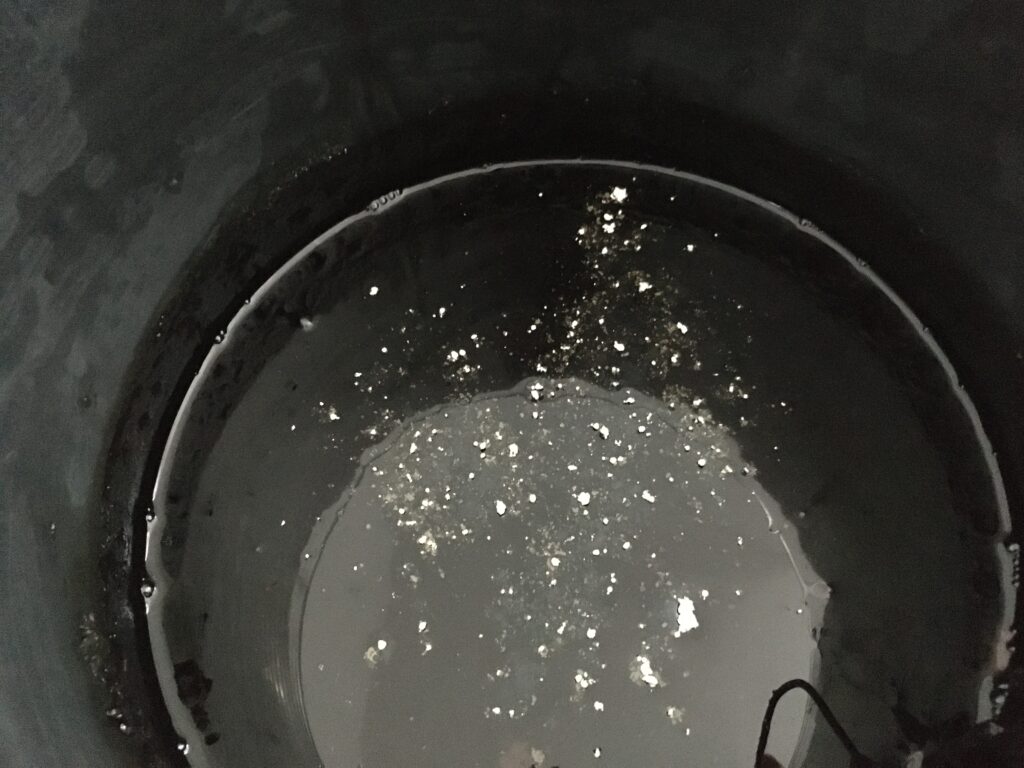
In the afternoon, I had a nice surprise. I see the purple shiny membrane. Also, it is smelling still very nice and sweet, very little ammonia smell. I usually mix at this timing (every 3 hours) but I decided not to mix this time.
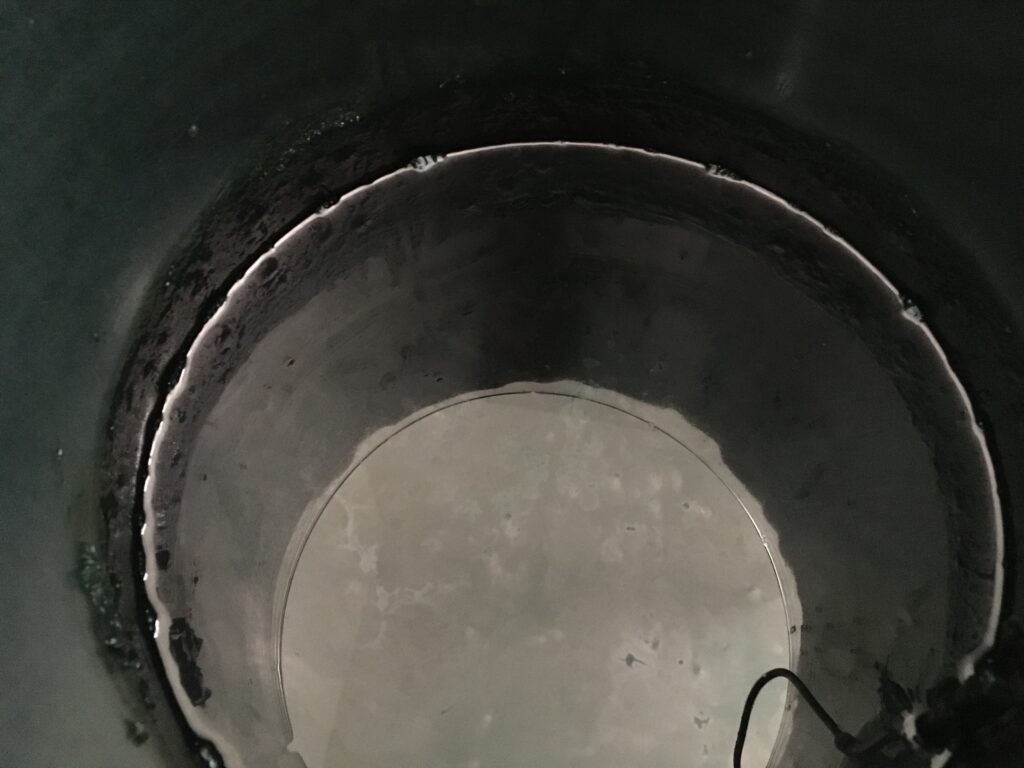
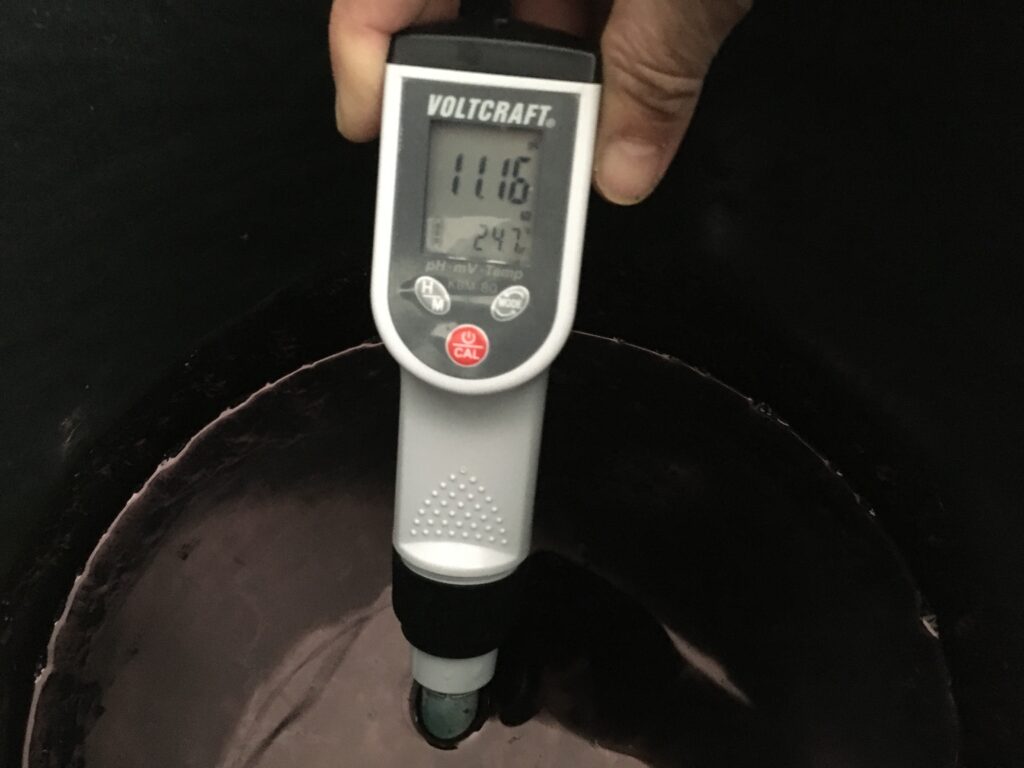
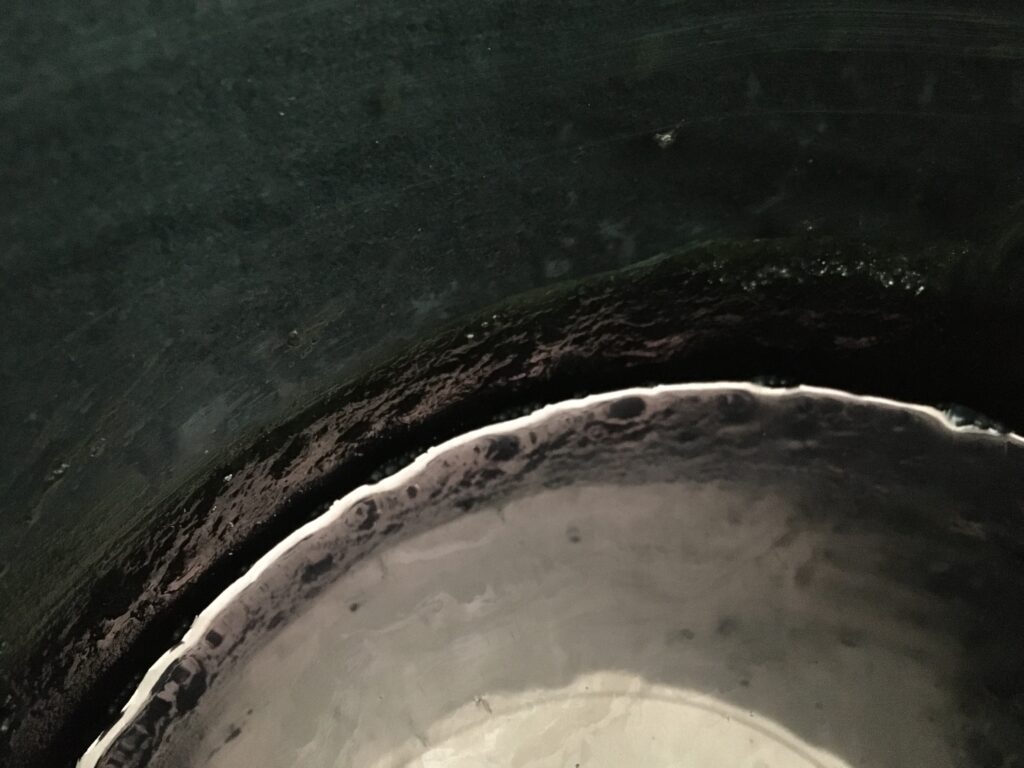
Day 28: The purple shiny surface is still there. It smells still sweet with a bit of ammonia smell when mixing, but it is not very strong. Ph is now 11.32. Perhaps the ca(oh)2 from yesterday is giving the effect now.
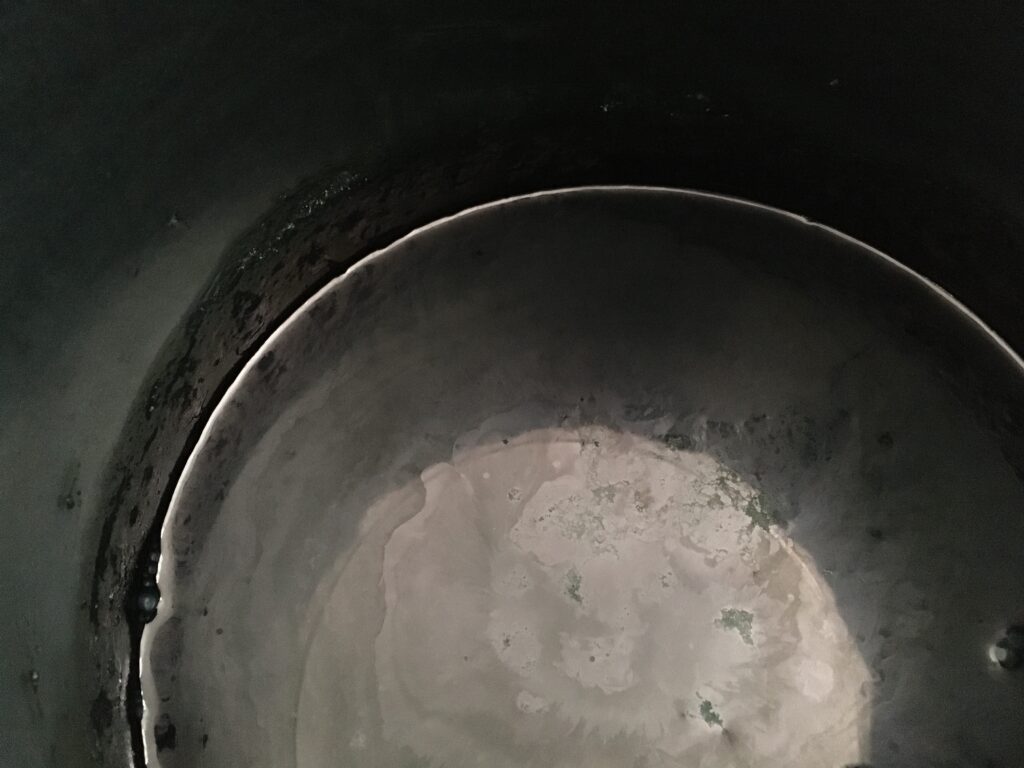
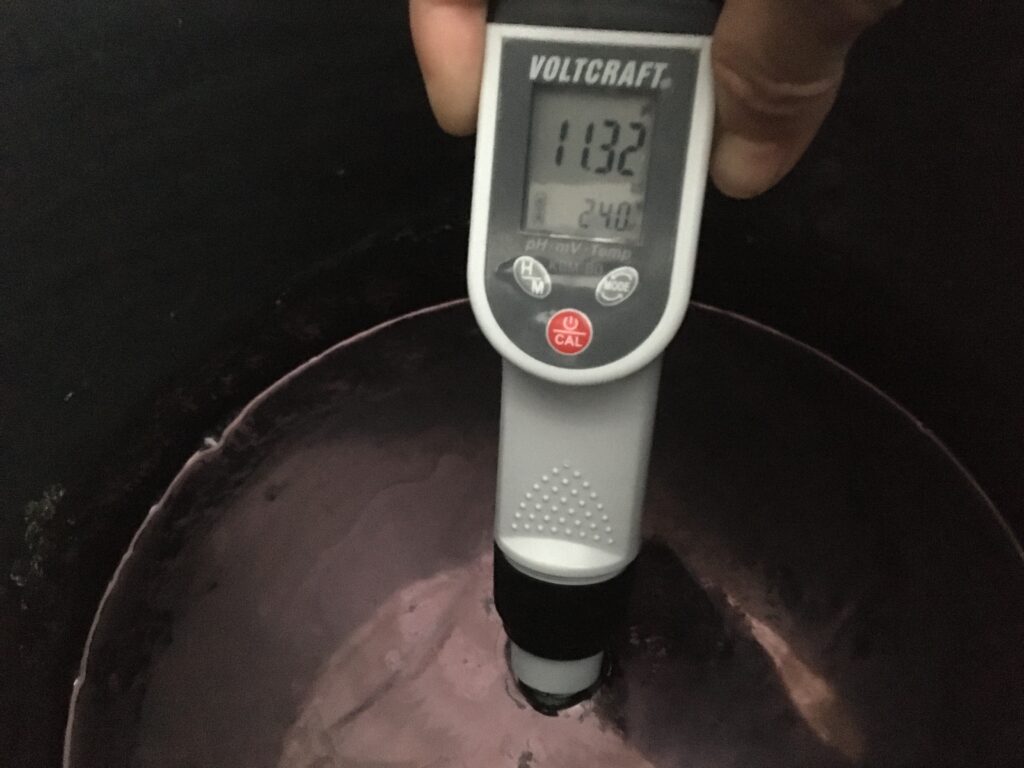
Day 29: There are two small bubbles in the morning! The Ph is still 11.3, temperature 23.7. I increased the thermostat setting to 25 degrees last night. The smell is still on the sweet side. No strong ammonia smell. The surface of the vat liquid had a thin purple membrane. Yesterday, I mixed only twice. I plan to do the same for today.
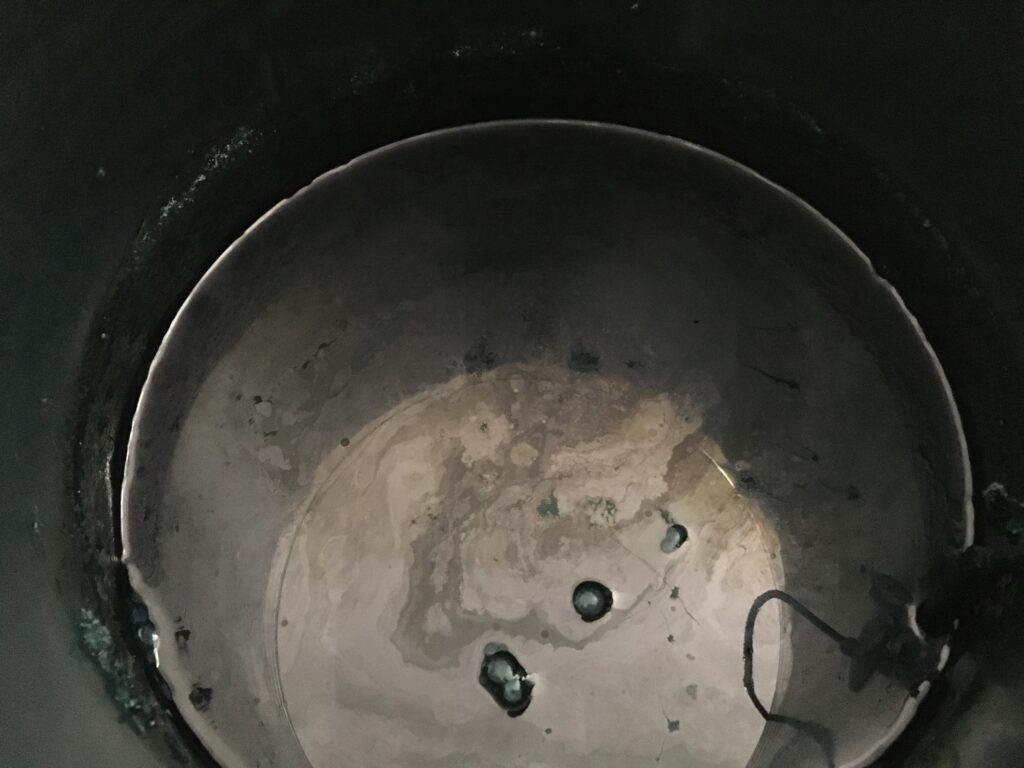
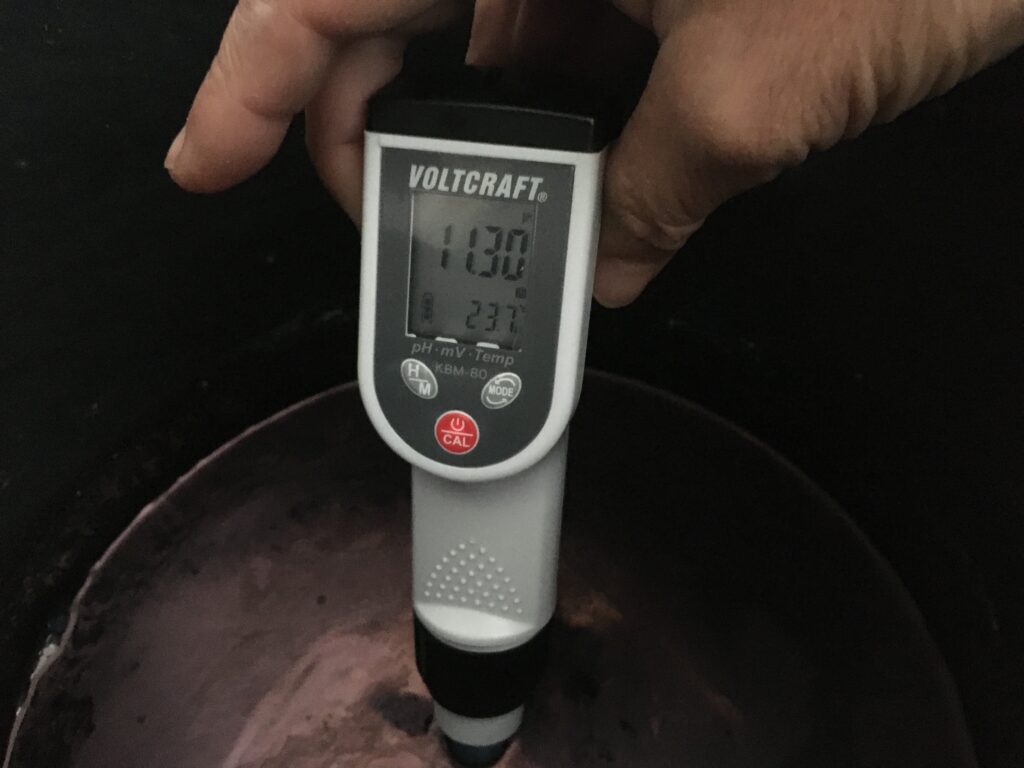
Day 30: Slightly more bubbles. Ph is also slowly lowering. still see purple shiny layer on top.
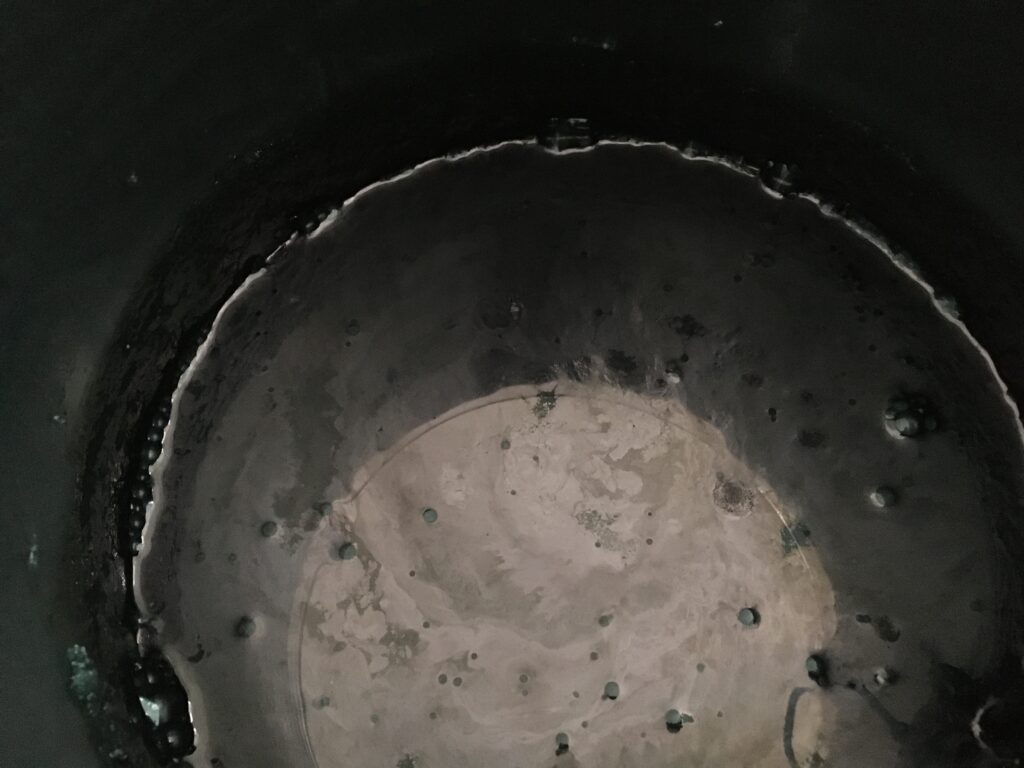
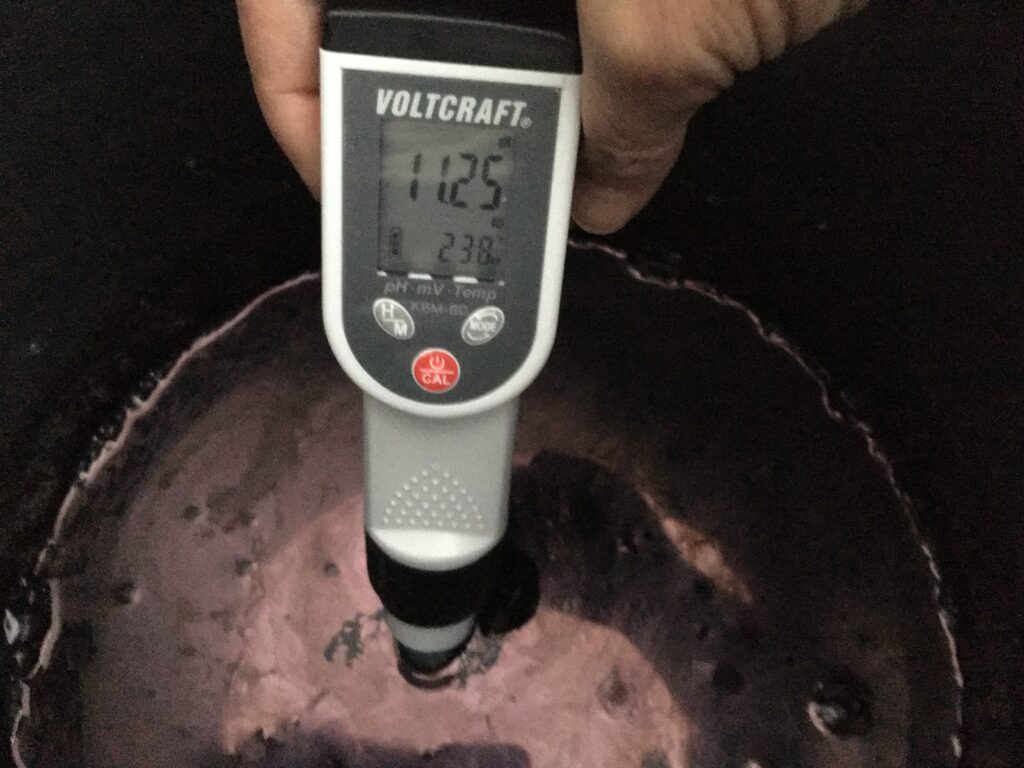
I decided to make a strip dye test. It is still not dyeing, but slight blue hint now. This was 1min dip.
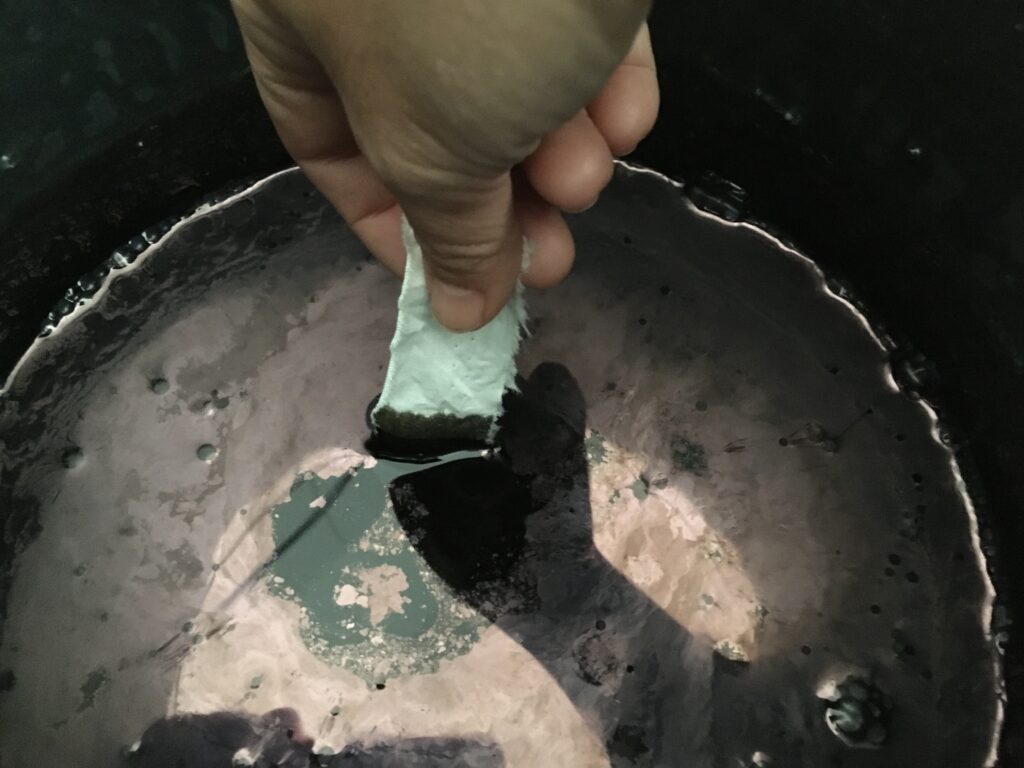
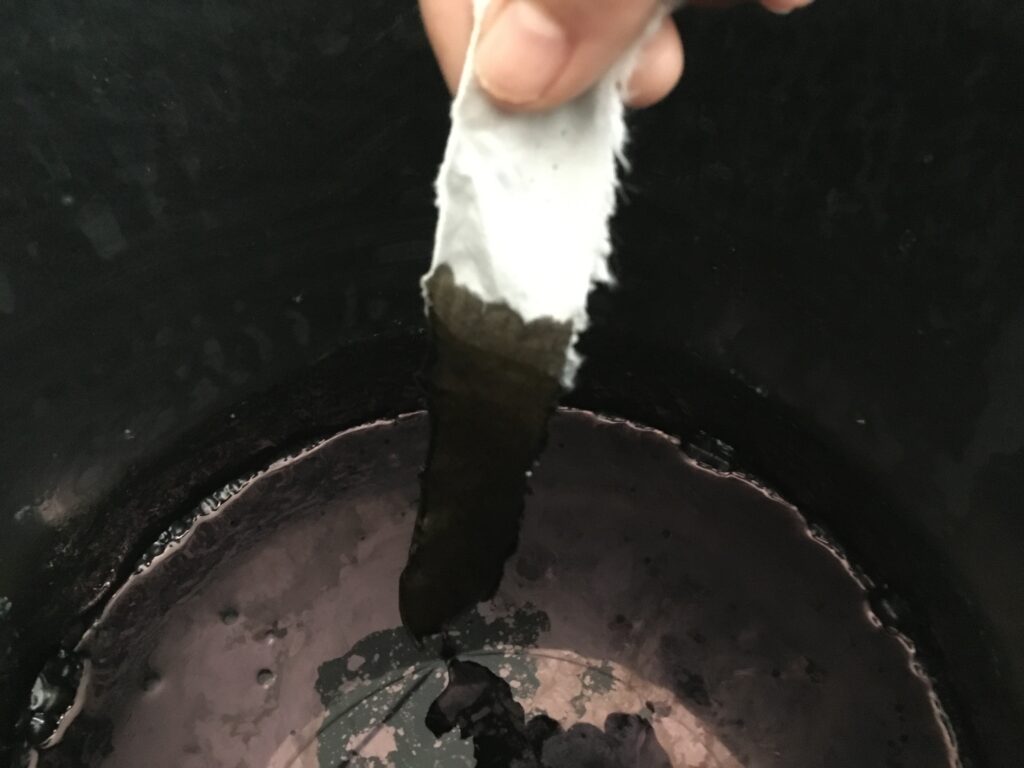
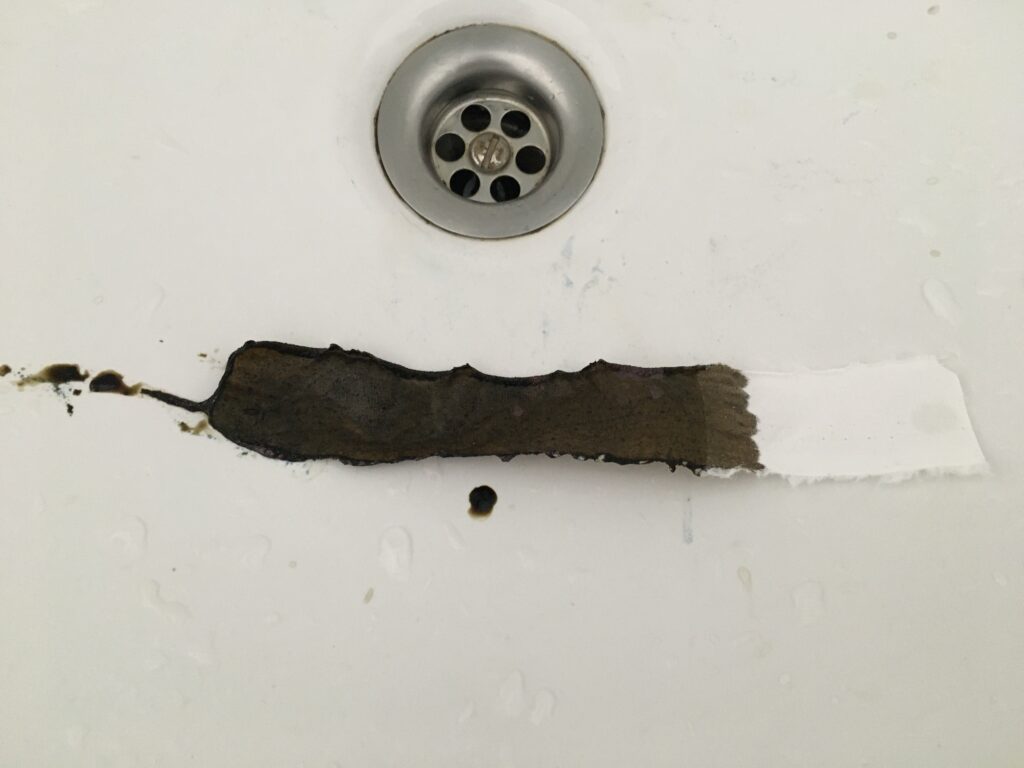
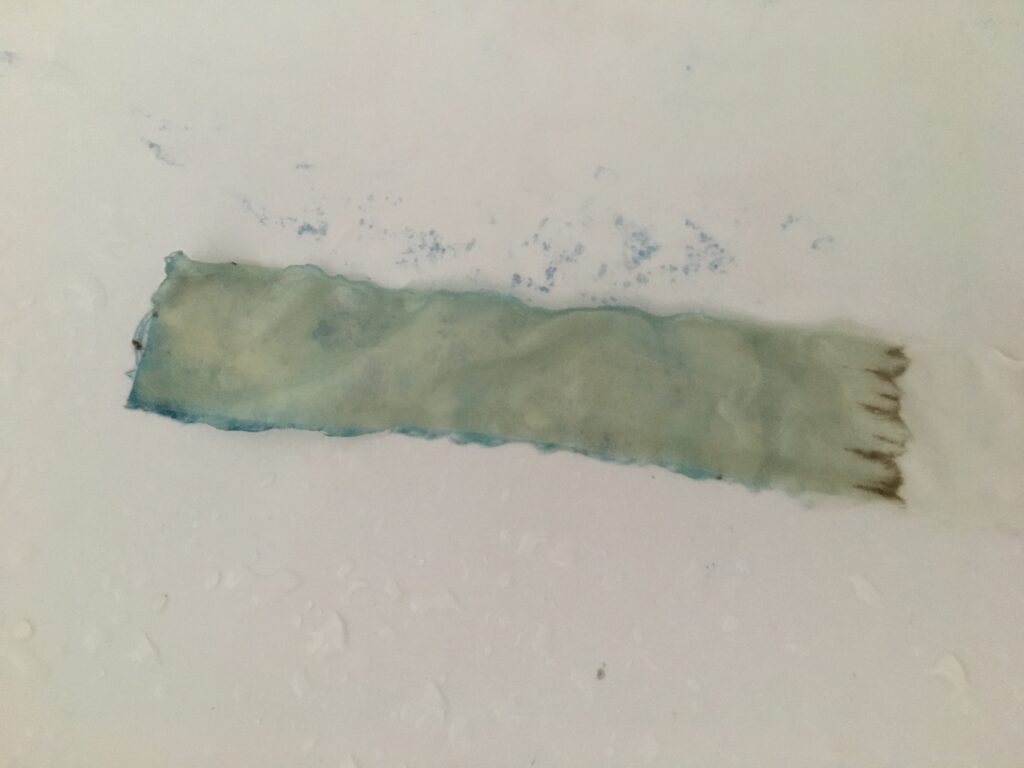
Day 31: The purple shiny layer is receding again. I am afraid the active time is again stopping… but the Ph is still lowering (the activity of the bacteria reduction lowers the Ph) and I hope the activity is still happening. I will leave it to see.
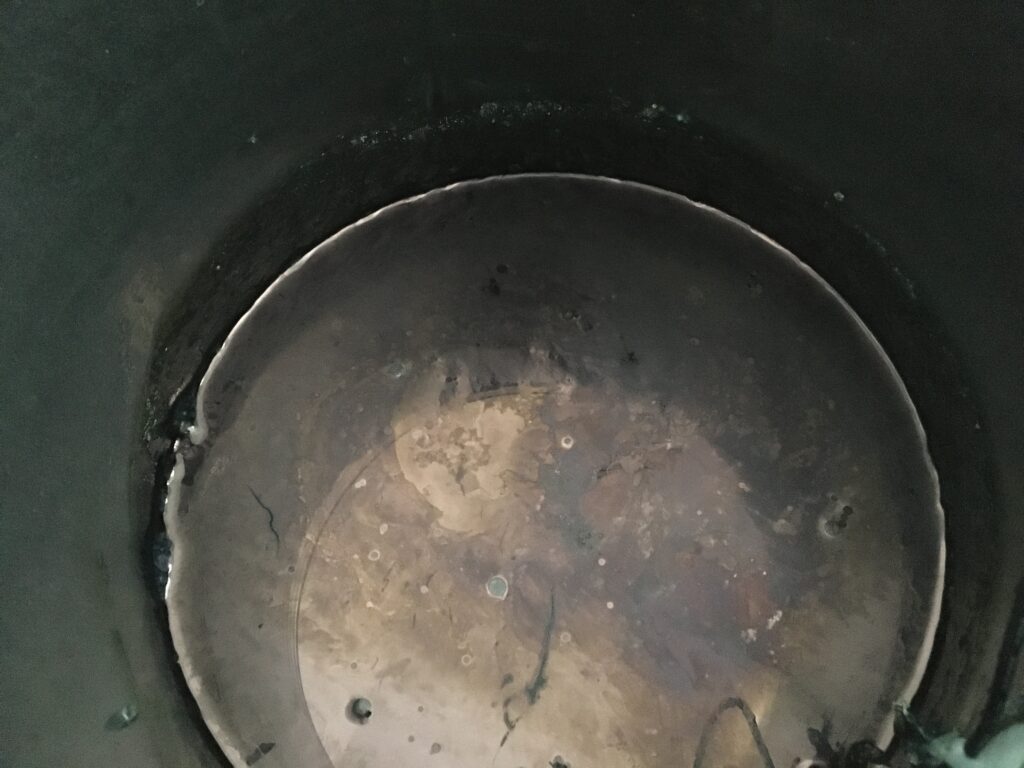
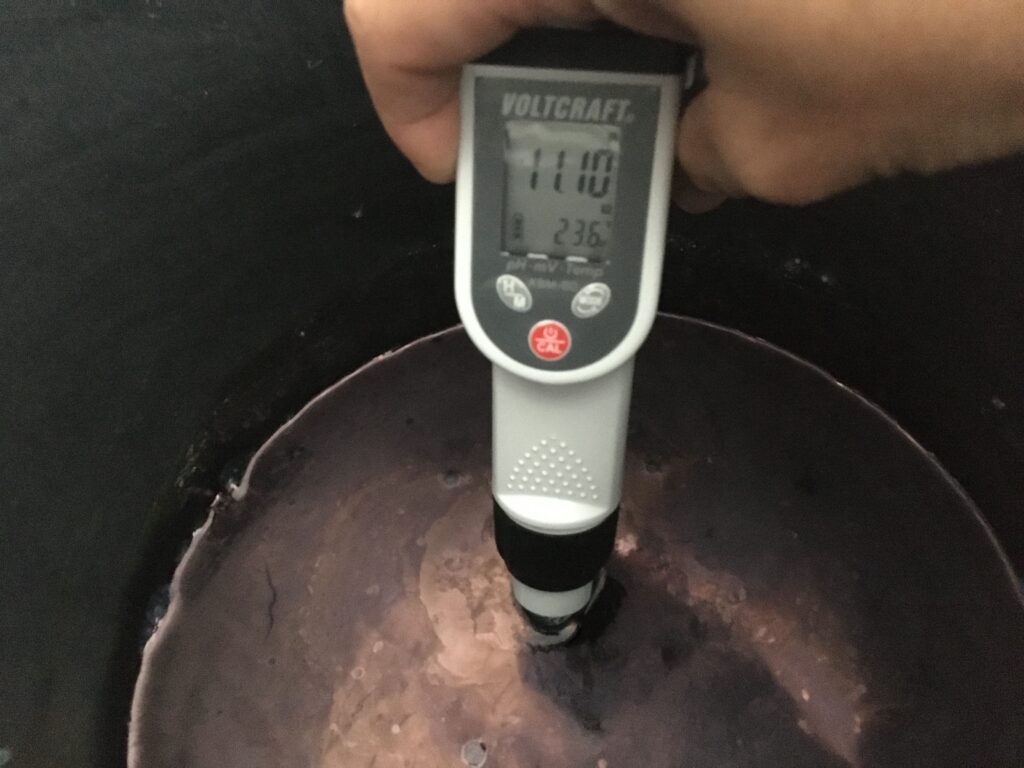
Dsy 32: It feels like the shiny layer is a bit back. It smells more ammonia now, with a hit of sweet fermentation smell. As the weather is getting cold in Berlin now (~12 degrees!) and I have a slight feeling that it could be even warmer than 25 degrees, I increase the thermostat setting to 26 degrees. As the heater mat is placed lower bottom of the vat container and the temperature sensor is placed near the surface of the liquid, there are some temperature difference in the vat. When liquid near the surface is 25, the bottom must be warmer than that.
I added ~30ml sake at night before mixing the vat.
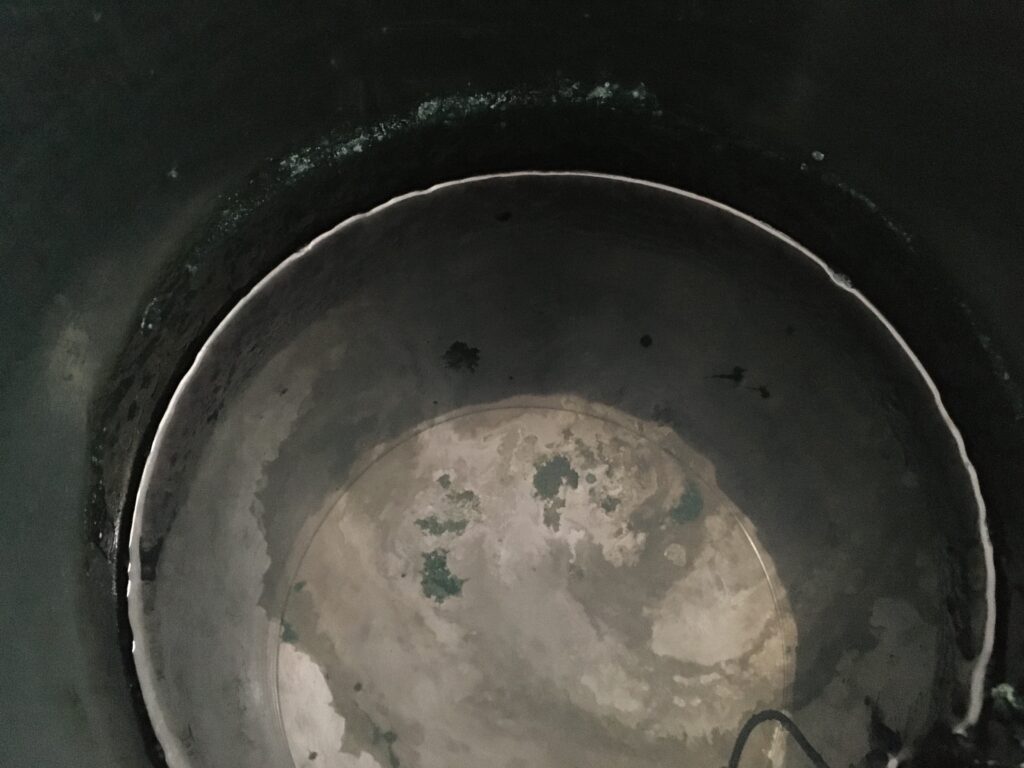
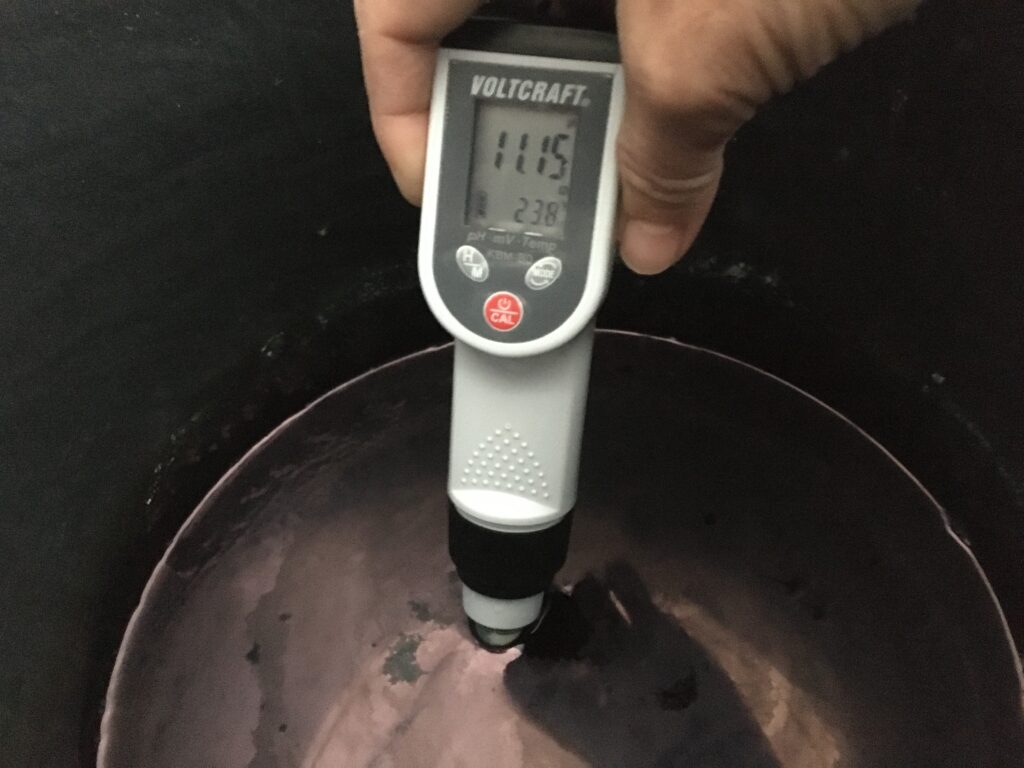
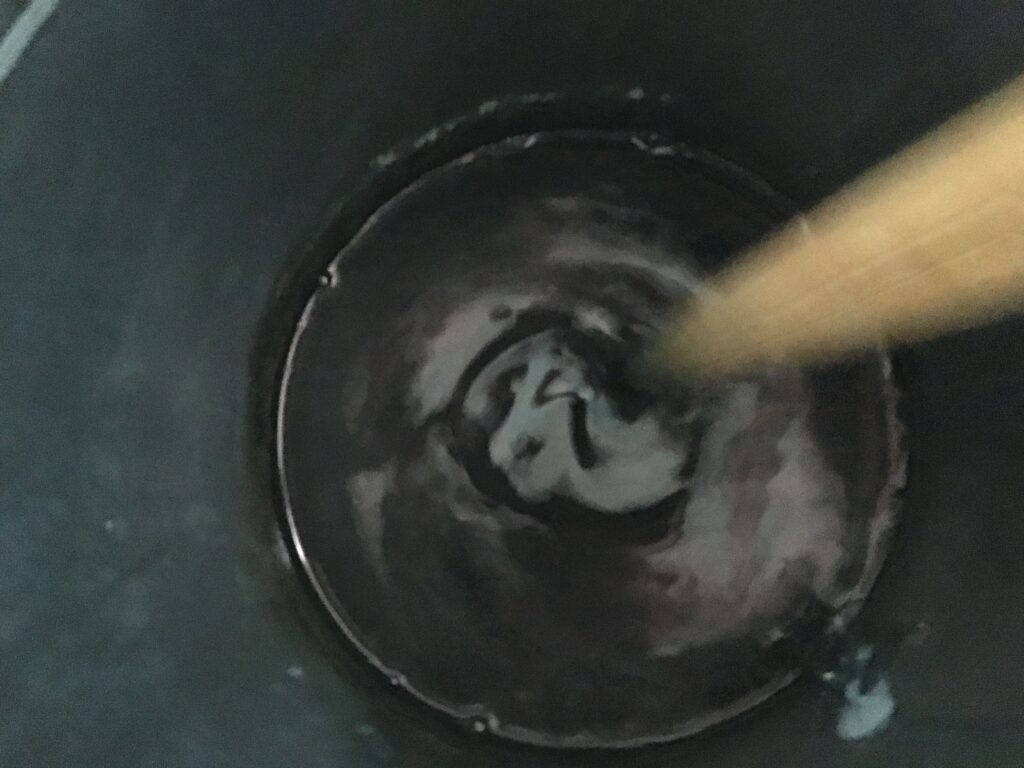
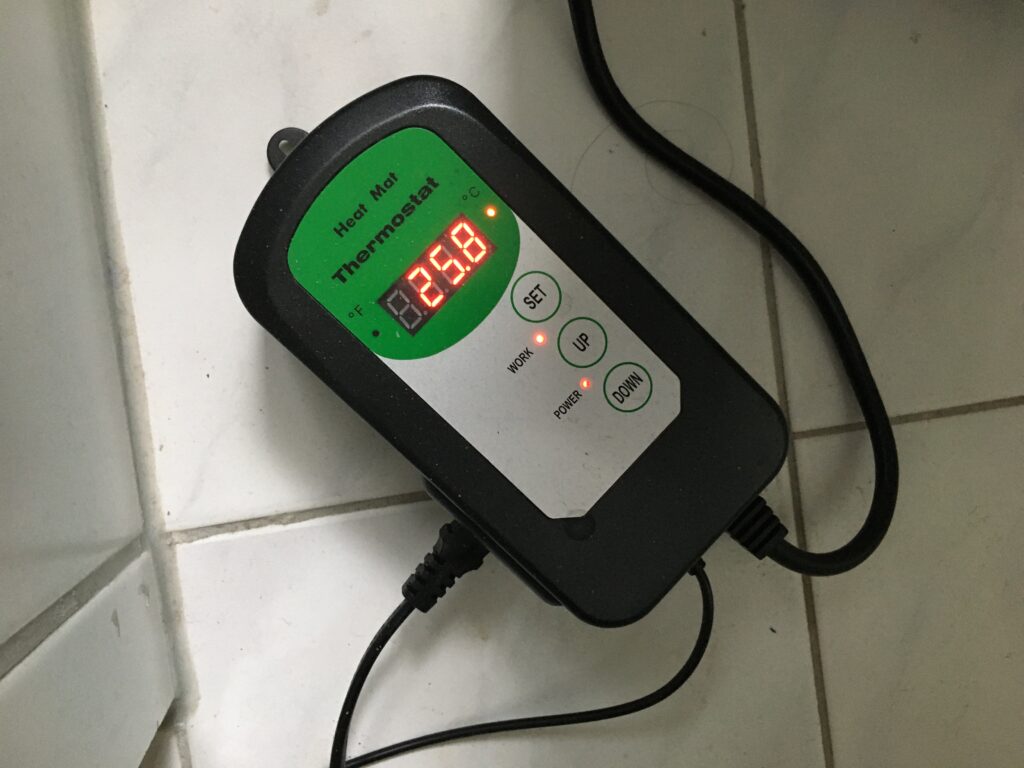
Day 33: Rainy cold and dark day. outside is 8 degrees. Ph10.84, 24.3 degrees in the vat, before mixing. It smells more ammonia smell today. I wonder Ph drop is due to more bacteria activity, or it is because of the sake last night. The purple shiny layer is definitely less.
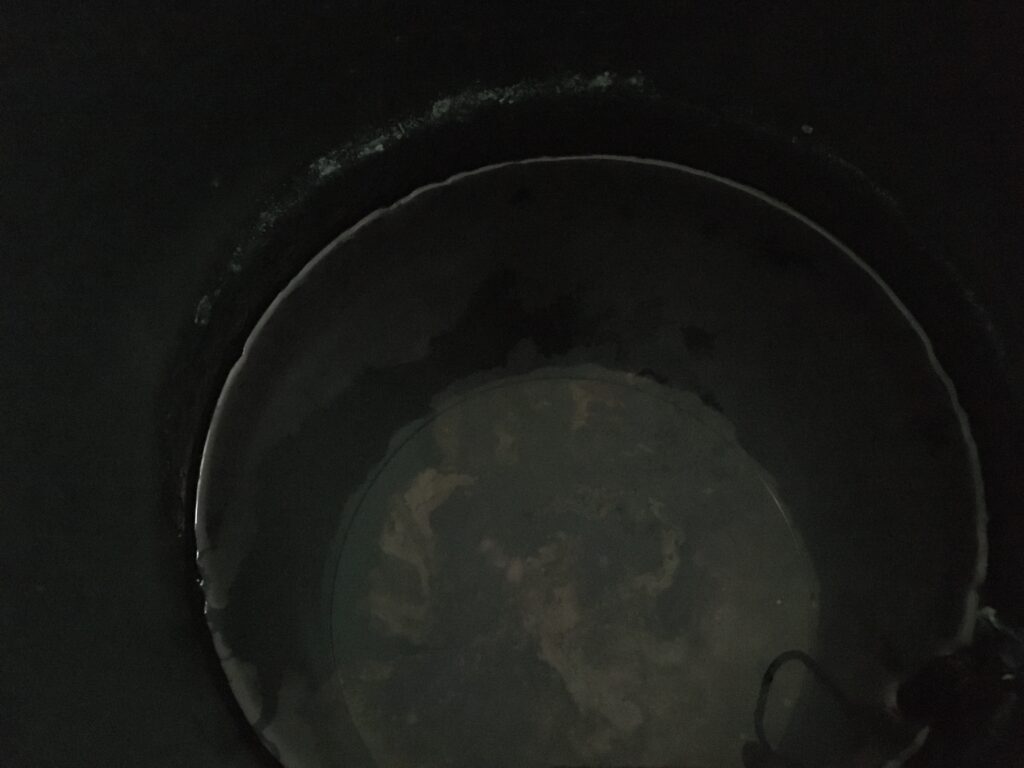
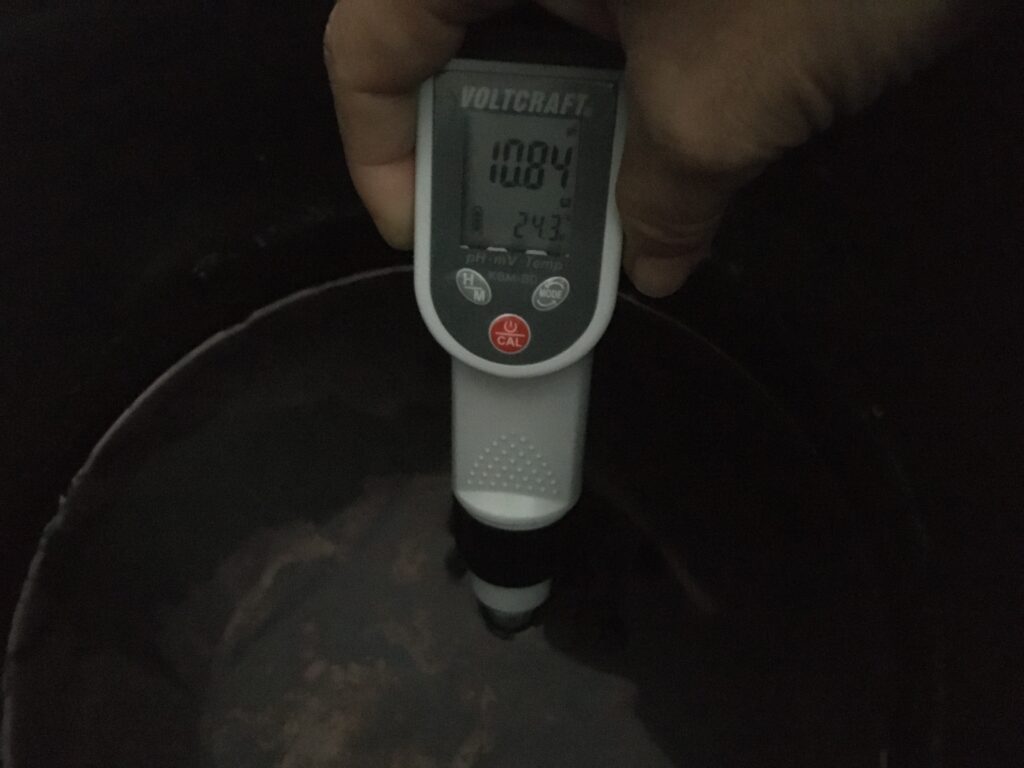
Then I further researched on what is going on, and how I can improve it. One thing I wonder is about the ammonia smell. Ammonia is NH3, and Indigo is C16H10N2O2… so I wonder if NH3 is produced a lot, is it affecting the amount of Indigo the vat has??
I did not find an answer on this, but I found some useful information of people documenting ”indigo vat going wrong, and taking long to reduce” and “indigo vat in 10L bucket“. It is always super helpful when people document what/how things went wrong, and how they solved it. She had an issue of other bacteria taking over the vat, which I am very afraid of…
The 10L vat documentation is made by someone experienced, and he had detailed information about the temperature (best at 30 degrees, 20-35degrees is suitable) and Ph (PH 10-11.5, over 12 and they do not grow anymore) necessary for reducing bacteria to grow , and the temperature (45 to 50 degrees) and Ph (best at Ph 10.5) necessary for enzyme to be active (reduction is made of an enzyme this bacteria produces). He uses method of heating up part of his vat liquid (or ash water when adding ash water) to raise the vat temperature to 45-50 degrees everyday in the vat making process. He also had exact recipe for small vat. He has 10L bucket with 600g sukumo (10% of the container, except sukumo is dried, so he calculates dried weight is 60%), bran is 4% of sukumo. Amount of Calk is calculated as: to raise PH for 1 point, you need 1g of ca(oh)2 for 1L vat liquid.
Having this in mind, and thinking of my vat condition, I decided to:
– raise vat temperature to 30 degrees
– add more bran
– keep the Ph to above 11
I cooked 30g bran in ash water (500ml) boiled for 15min, changed the thermostat setting to 29 degrees (as it fractures, I did not directly make it 30 yet), and added bran and a spoon of ca(oh)2 to the vat and mixed it well. It will probably take few days until the result starts to show up. Let’s see.
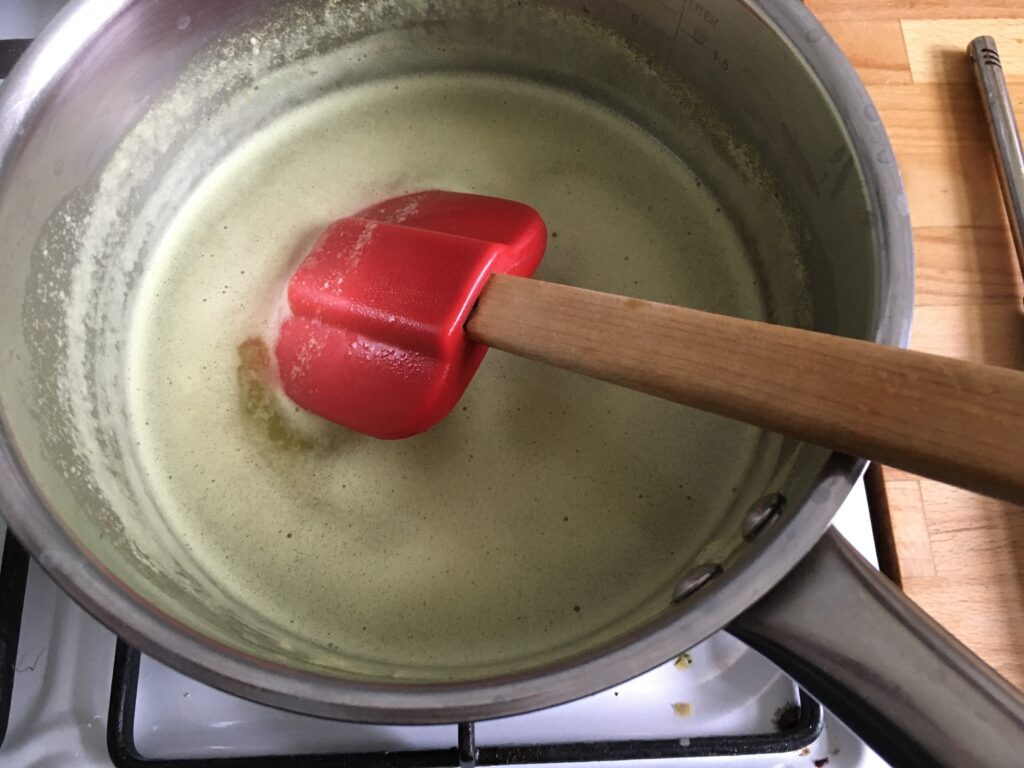
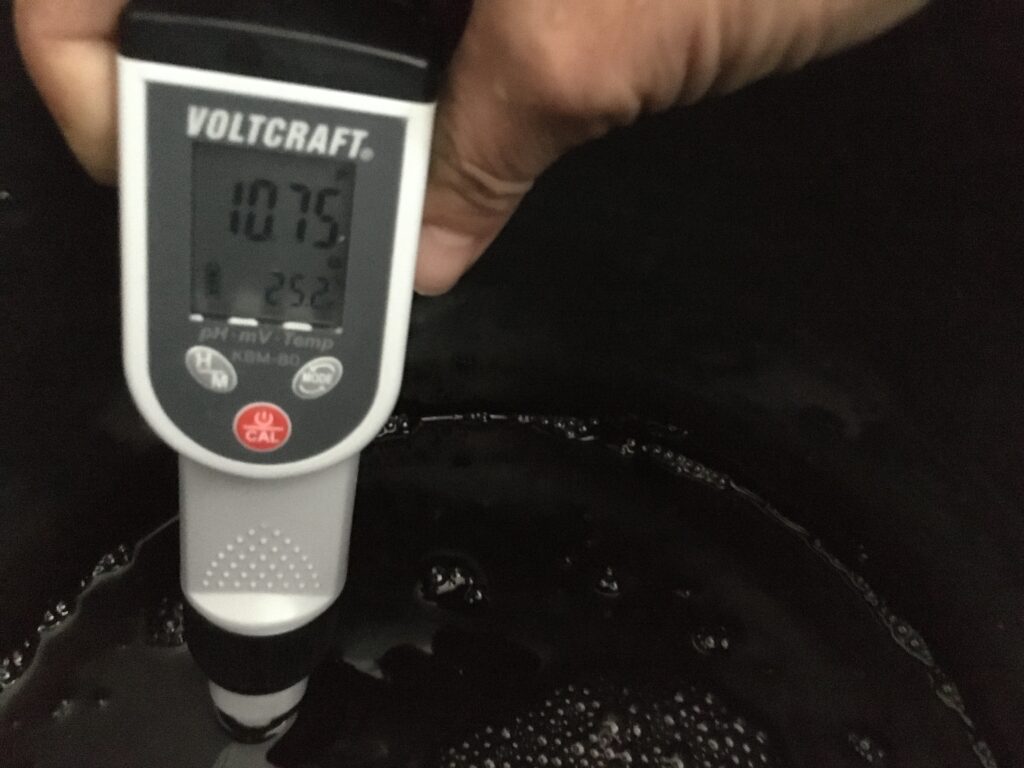
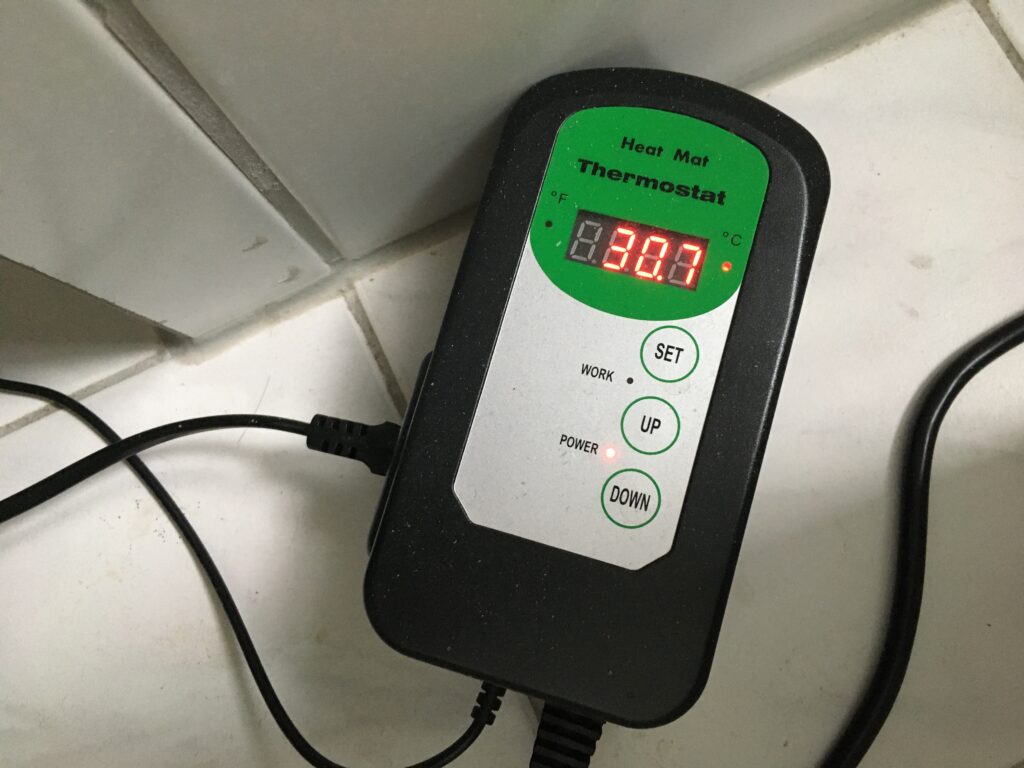
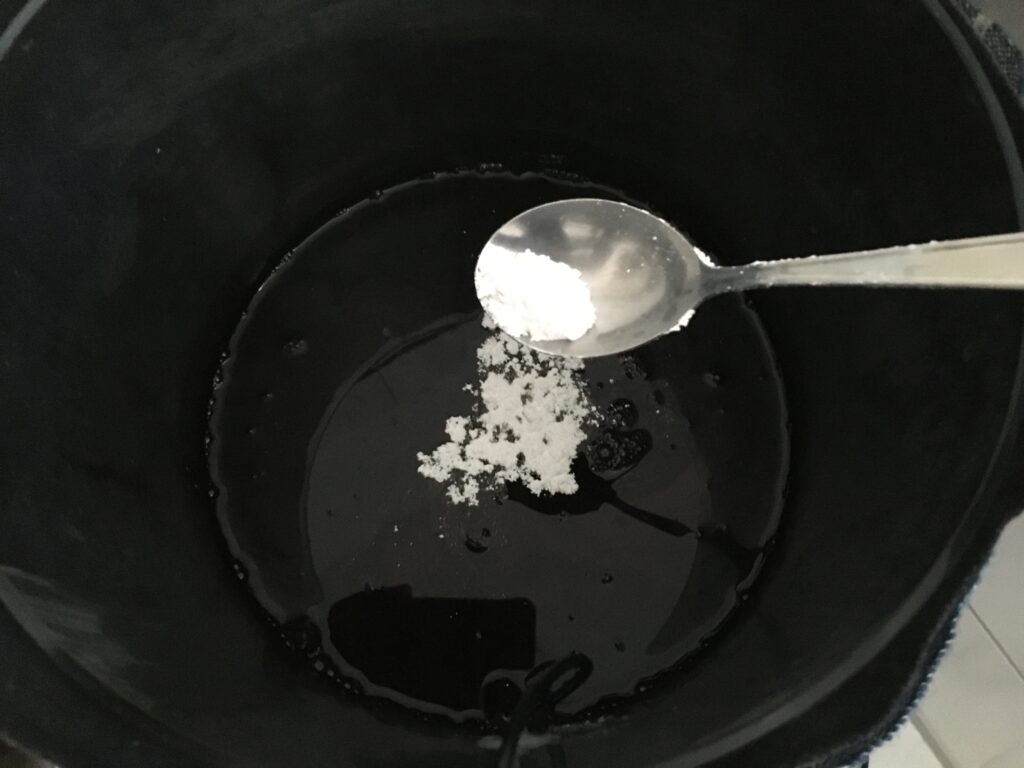
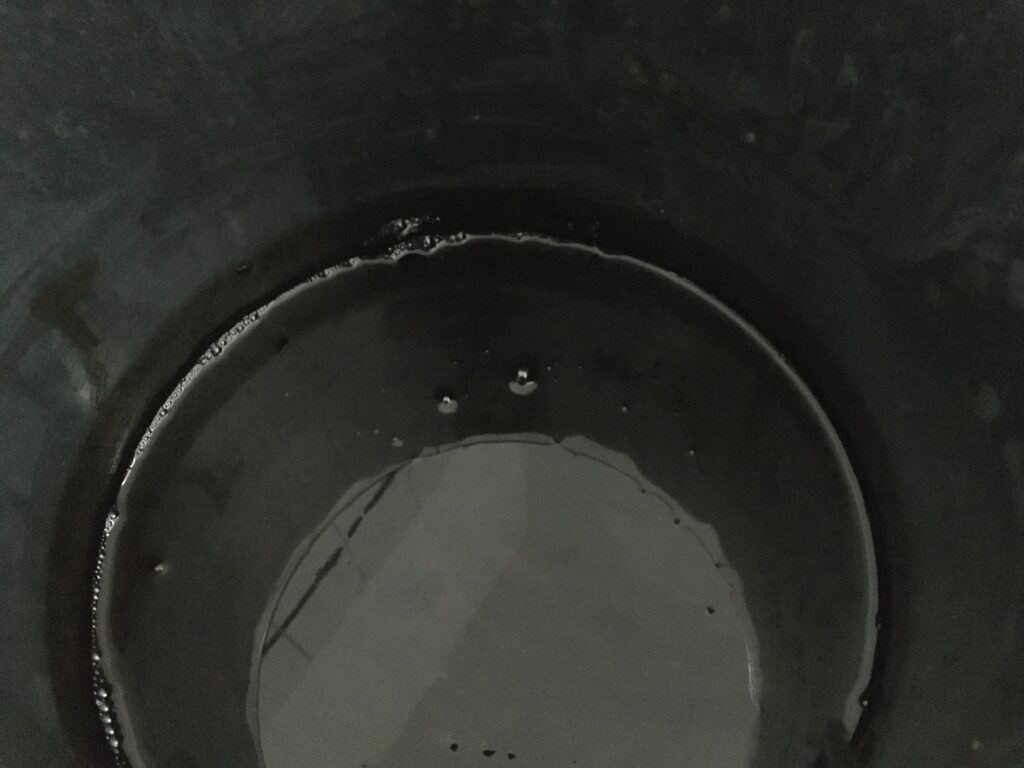
The outside temperature is dropping in Berlin, and my bathroom feels very cold… so I got a NASA blanket (it is called Rettungsdecke/rescue blanket in German) for my vat. Now it looks like a future guru. I hope this is rescuing her…
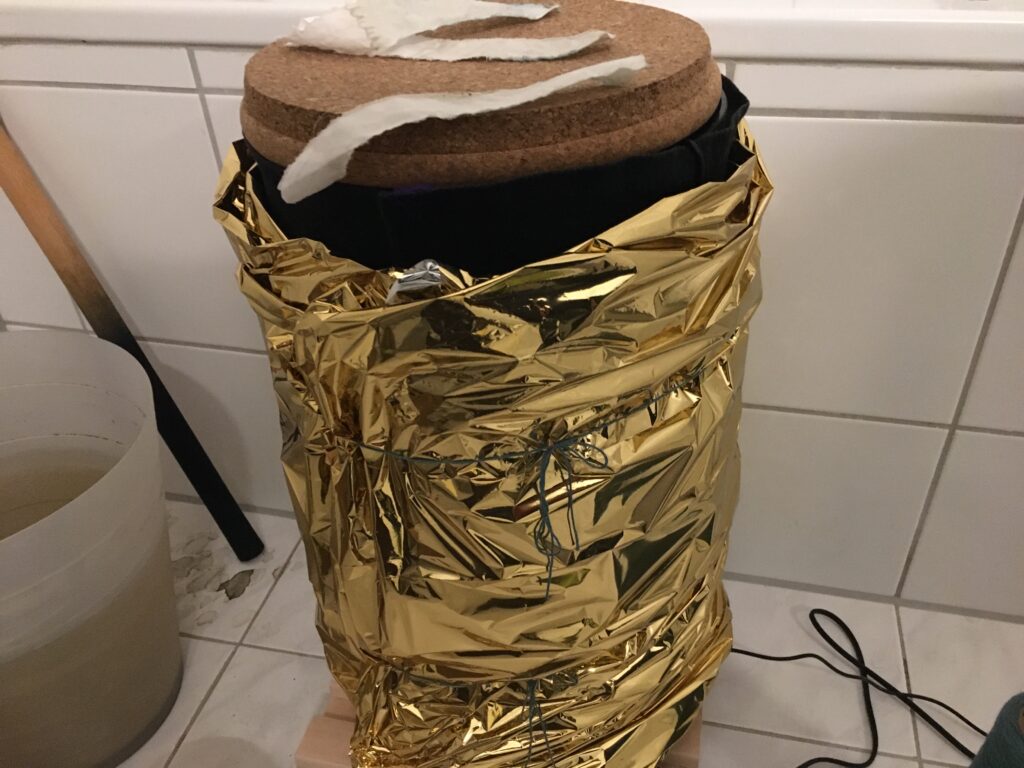
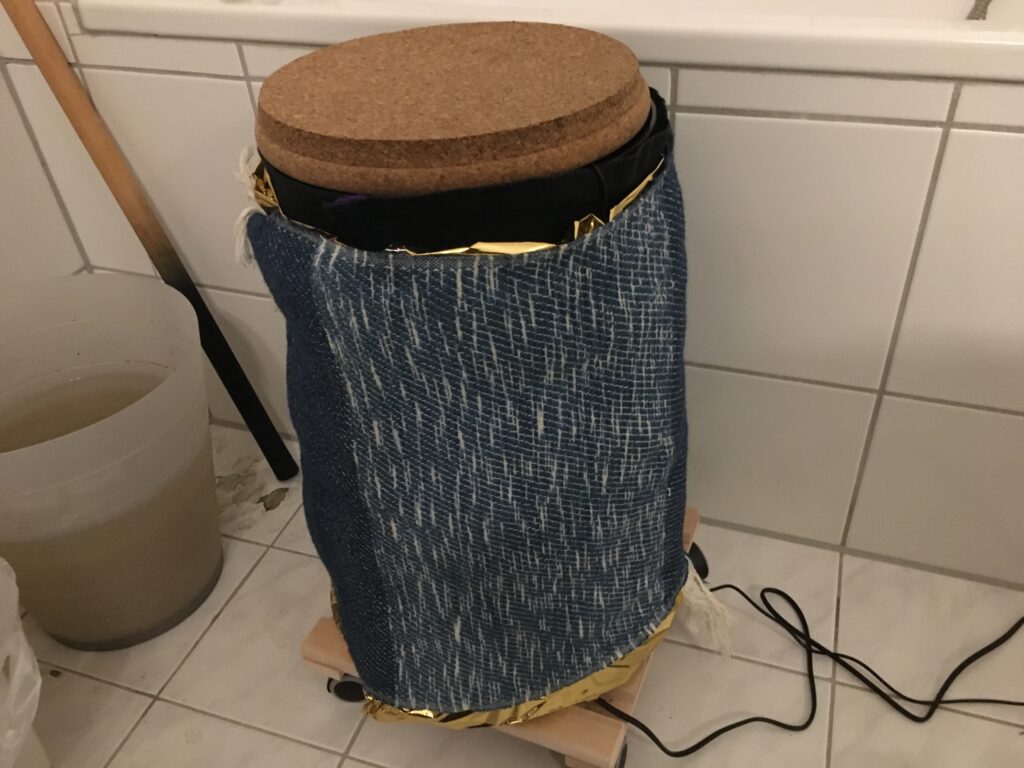
Day 34: Surprisingly, the surface is mat today. I have a slightly bad feeling… This is what some people described the sign of other bacteria taking over… I am a bit afraid. Last night, I set the thermostat temperature to 30 before sleeping. The PH dropped quite rapidly now. The surface temperature from the PH meter is 26 degrees, but the thermostat temperature measurement shows 30.3 degrees. It feels warm when you open the lid. No ammonia smell. It smells actually more like indigo.
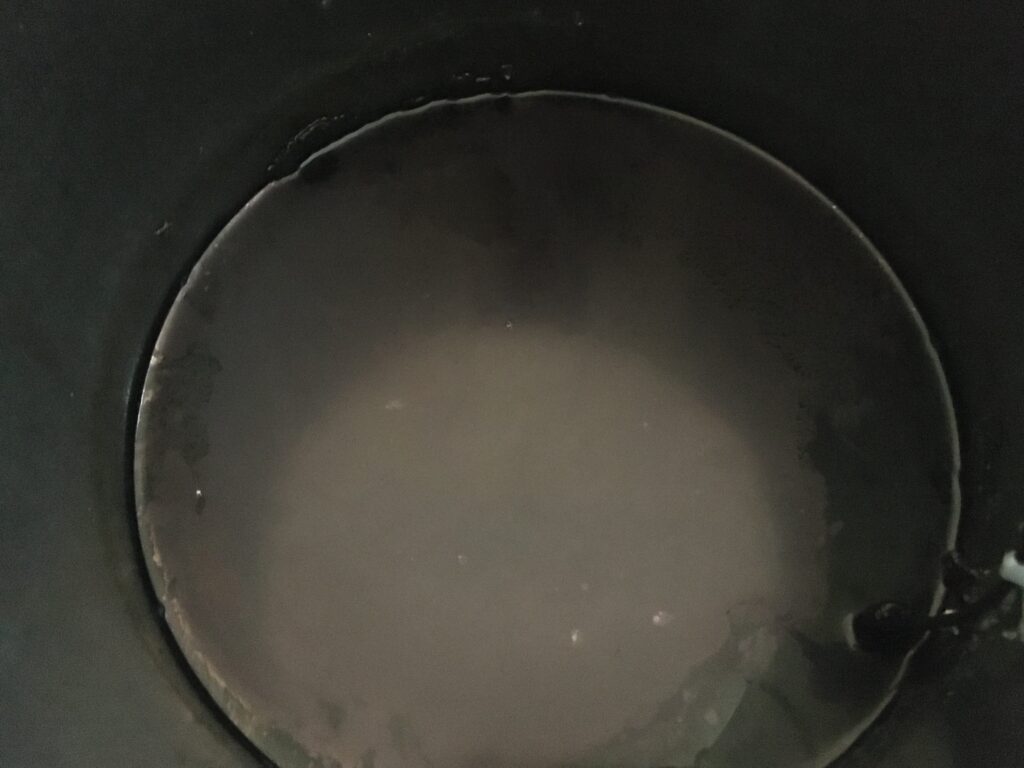
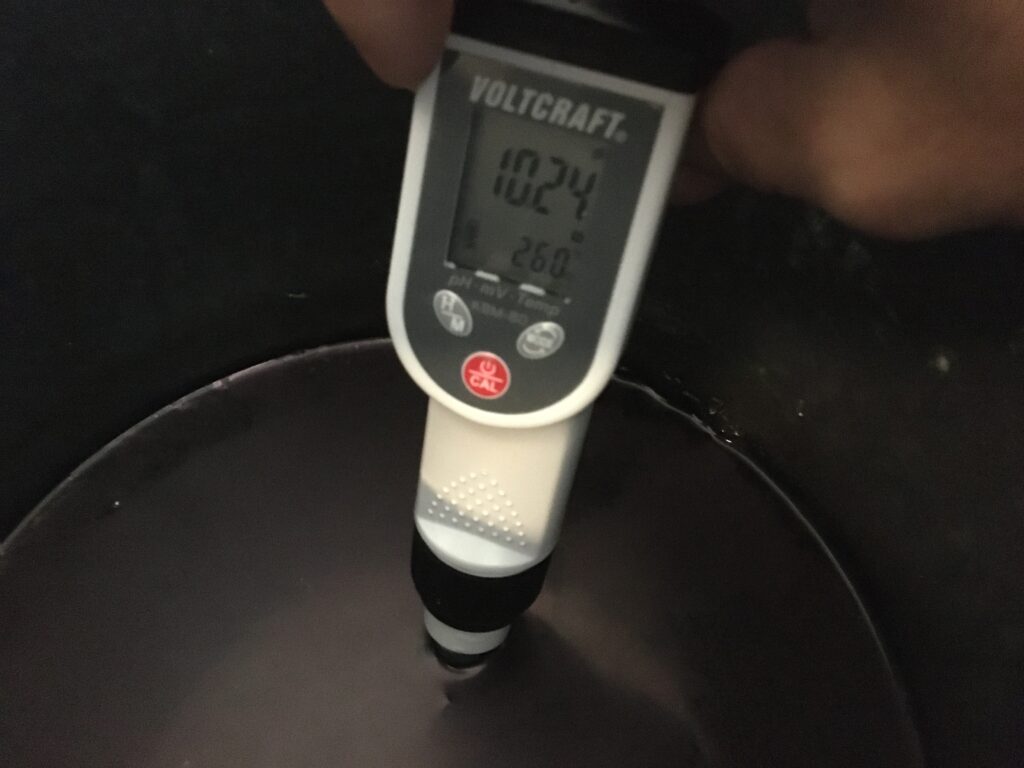
Since the PH is low, I add 1 spoon of ca(oh)2 and mix it well. The photo on the right is after mixing. the mat thing is now gone..
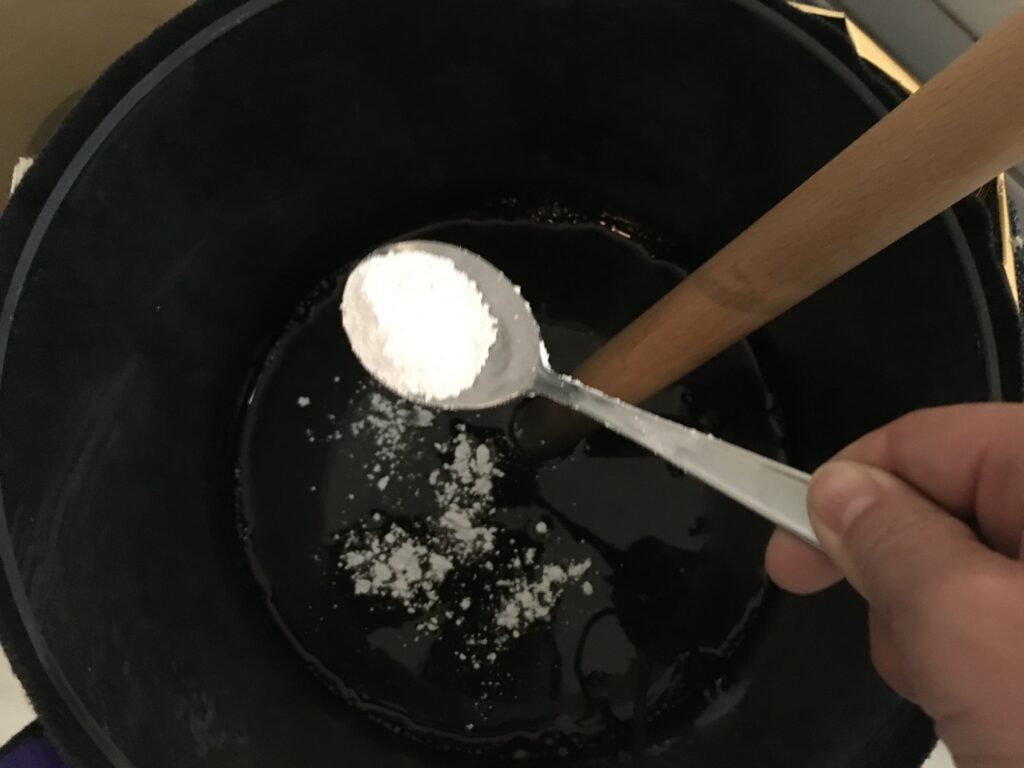
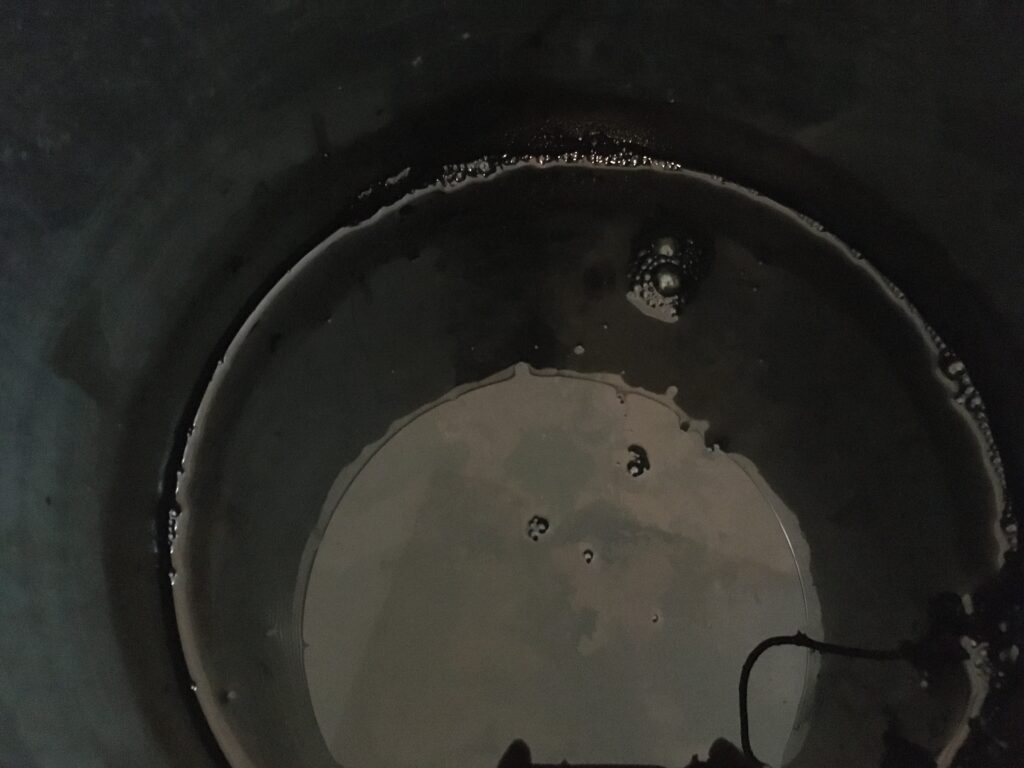
Day 35: Wow, there are a small amount of bubbles! I guess it is what did not go away from mixing last night, and not the real indigo flower. But it seems there are some differences. The smell is much more in miso/fermentation direction. And again the PH is low.
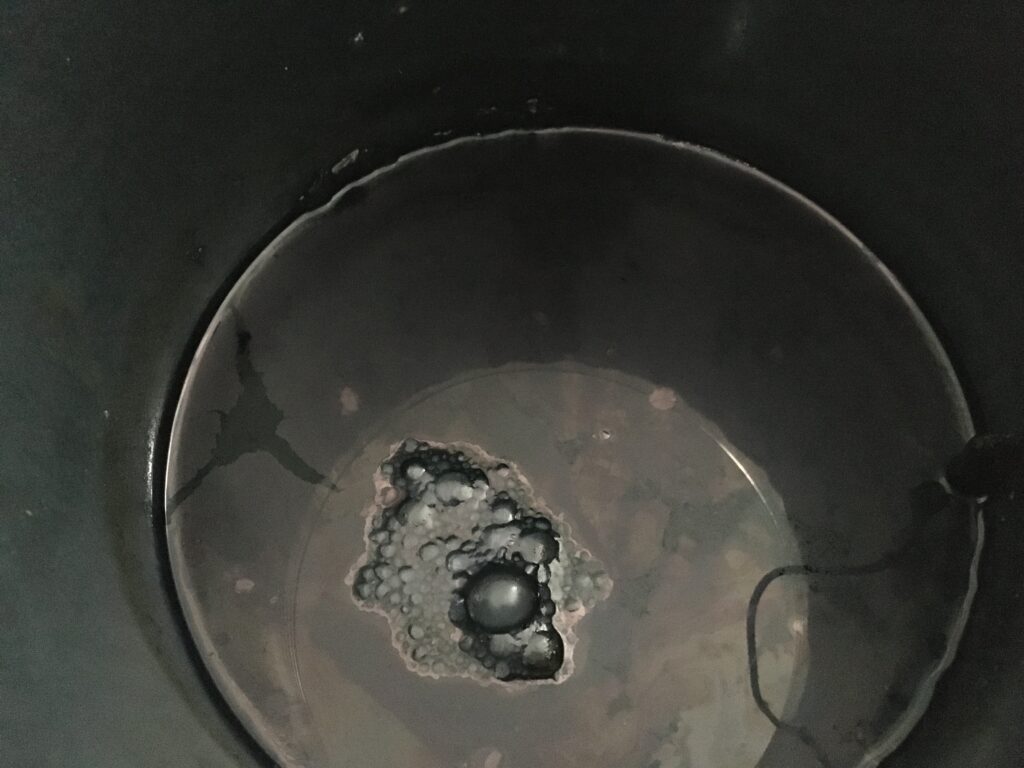
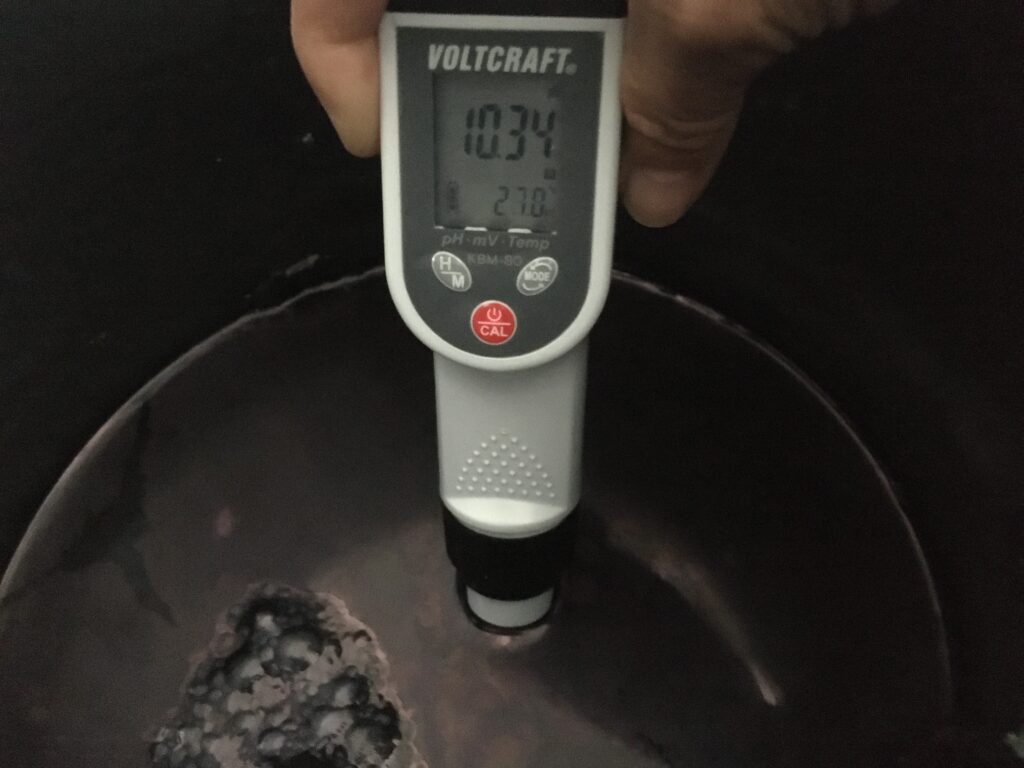
1min Stripe test shows a little more color, but it is not really a working vat yet.
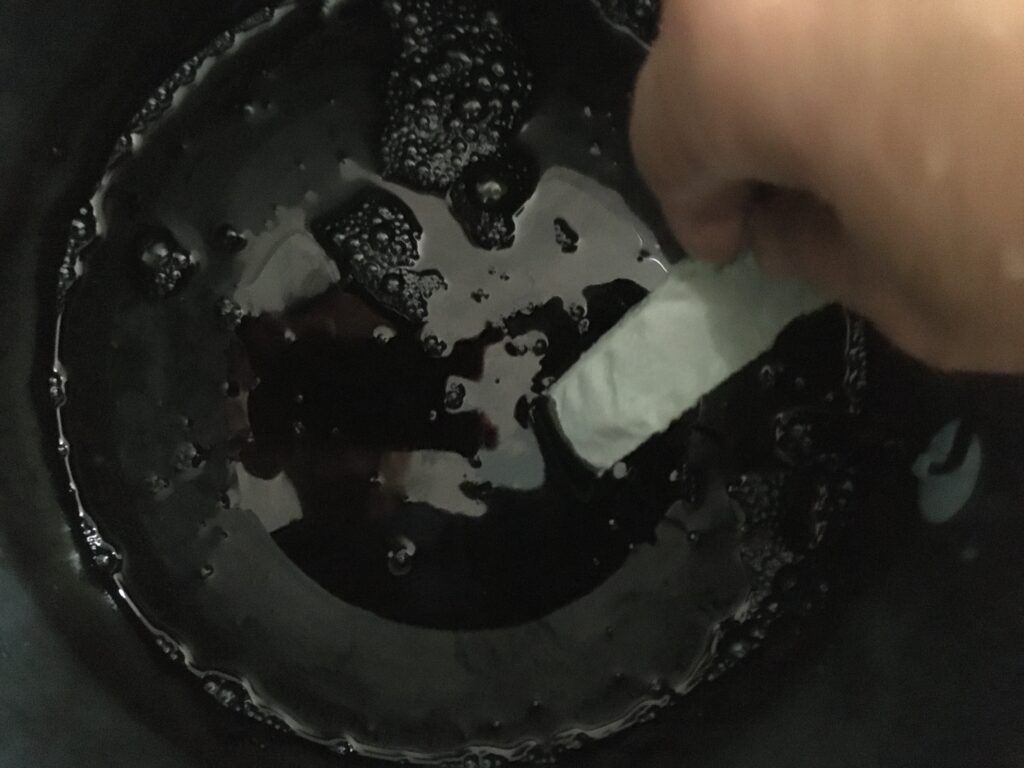
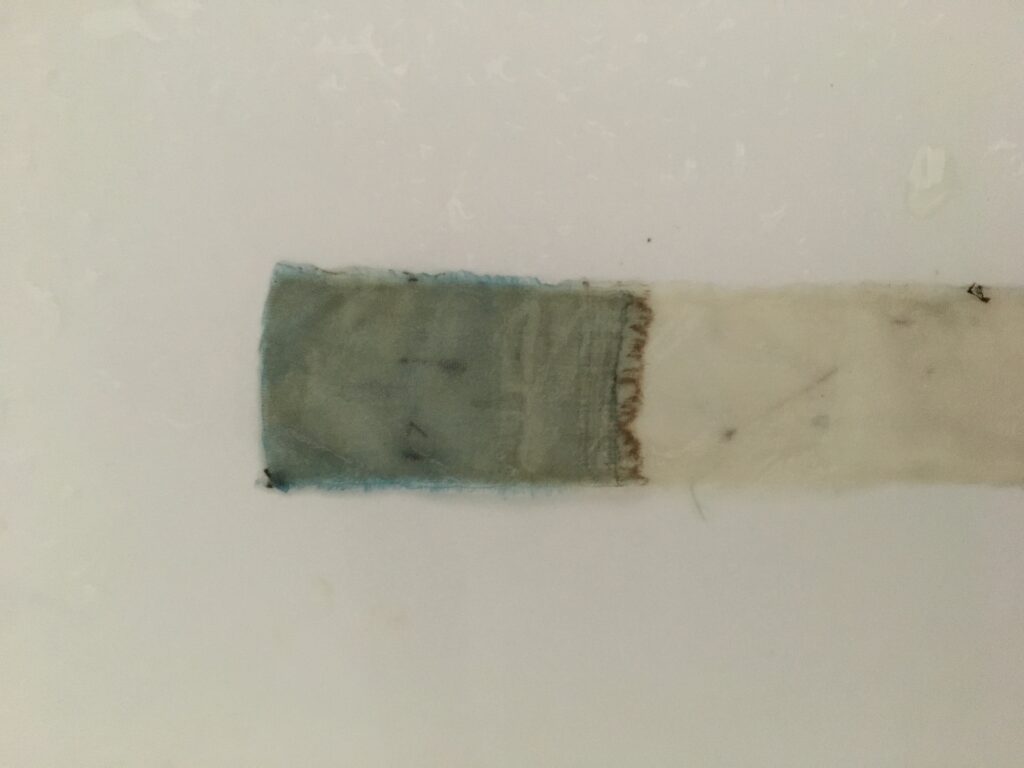
Day 35: The surface is again slightly mat, not as much as yesterday. I think the bubble is from mixing last night. PH is again slightly low so I decided to add 1 spoon of ca(oh)2. The smell is more strongly to ammonia side. It also smells a bit like something is going bad and not so sweet smell. The temperature on PH meter shows 25.2 degrees but the temperature sensor on the thermostat shows 30.4 degrees. I am not sure which one shows more accurate. I feel the warm air when I open the lid, so it is definitely warmer than room temperature. I should probably get a classic thermometer…
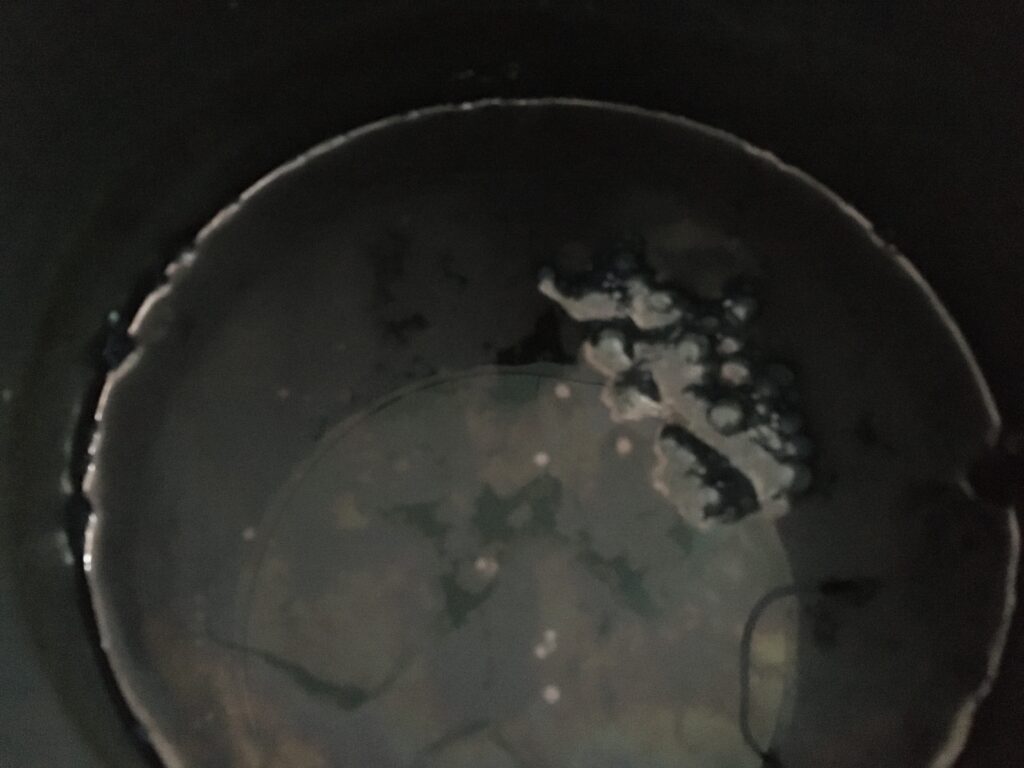
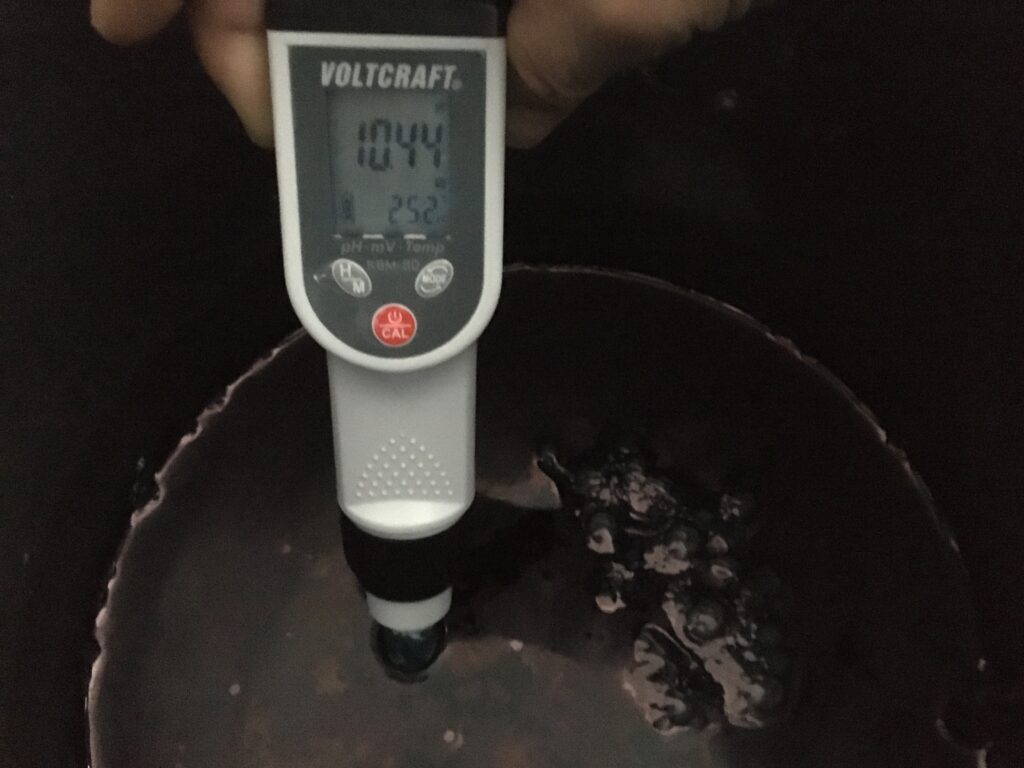
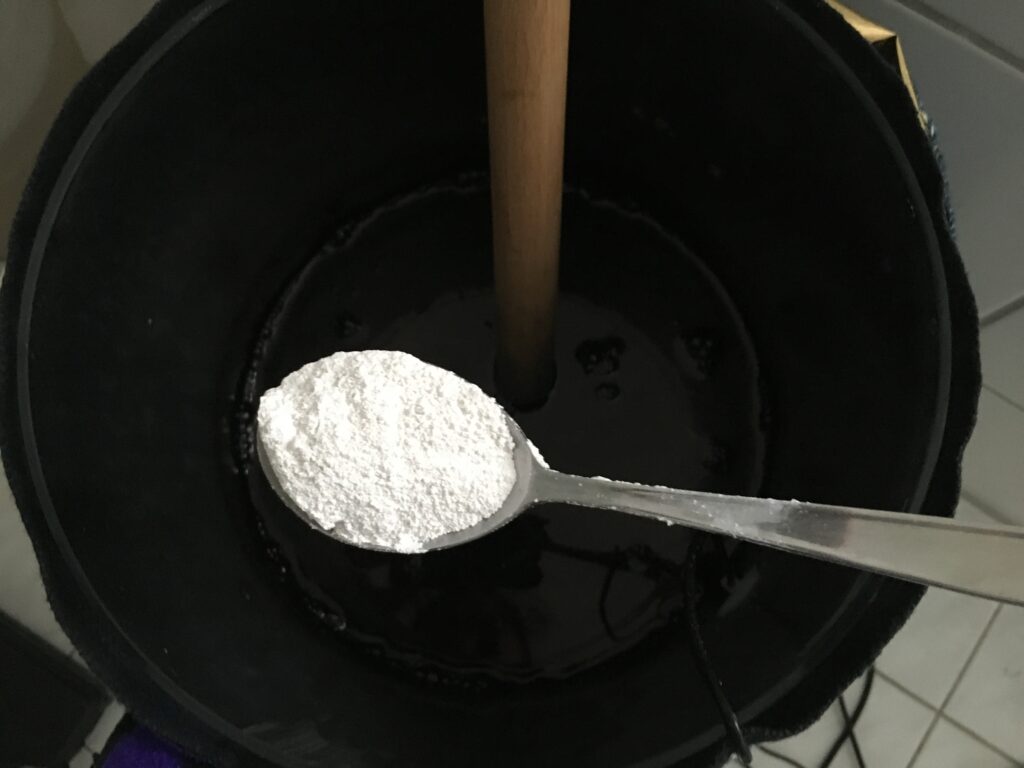
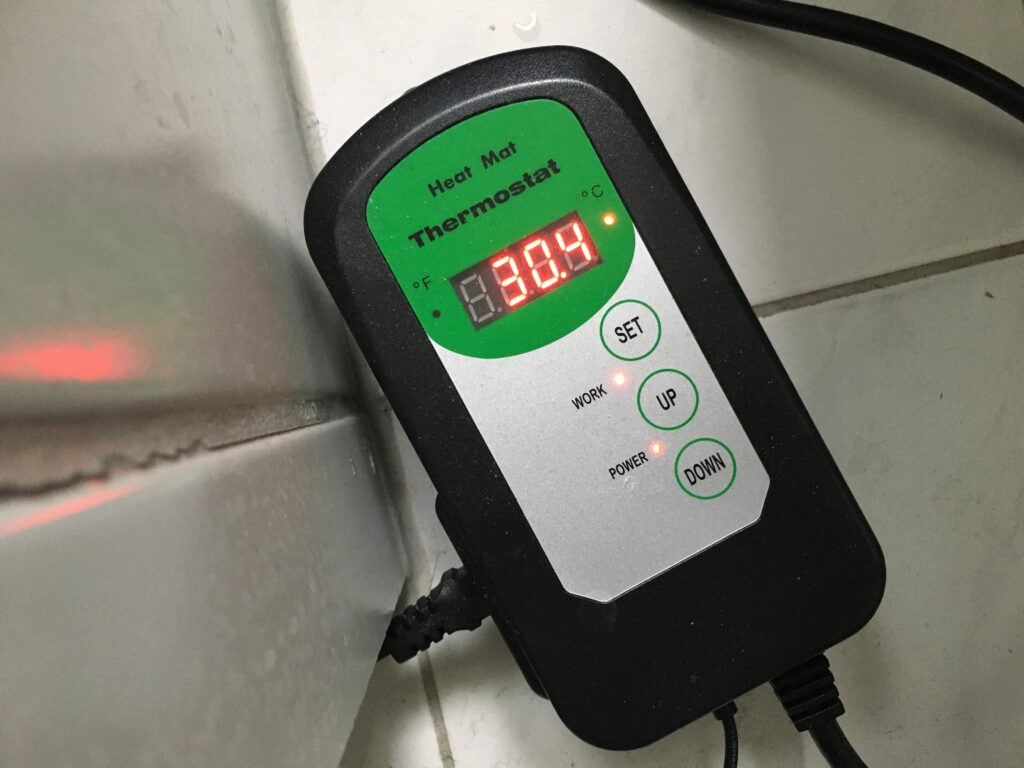
Day 36:
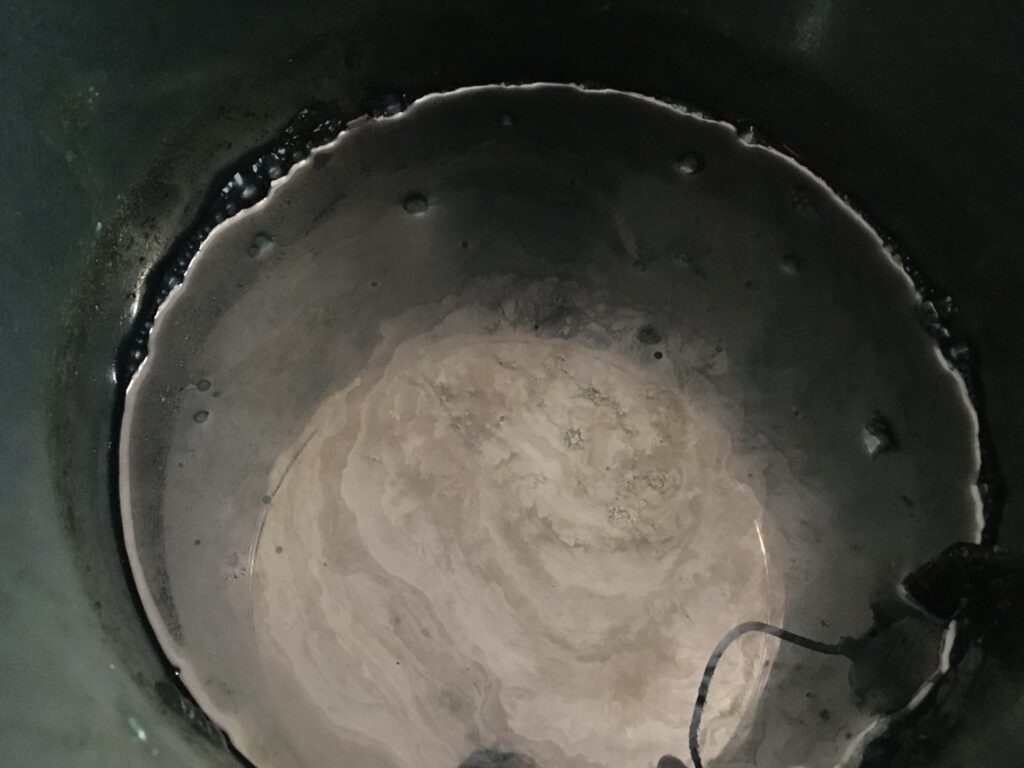
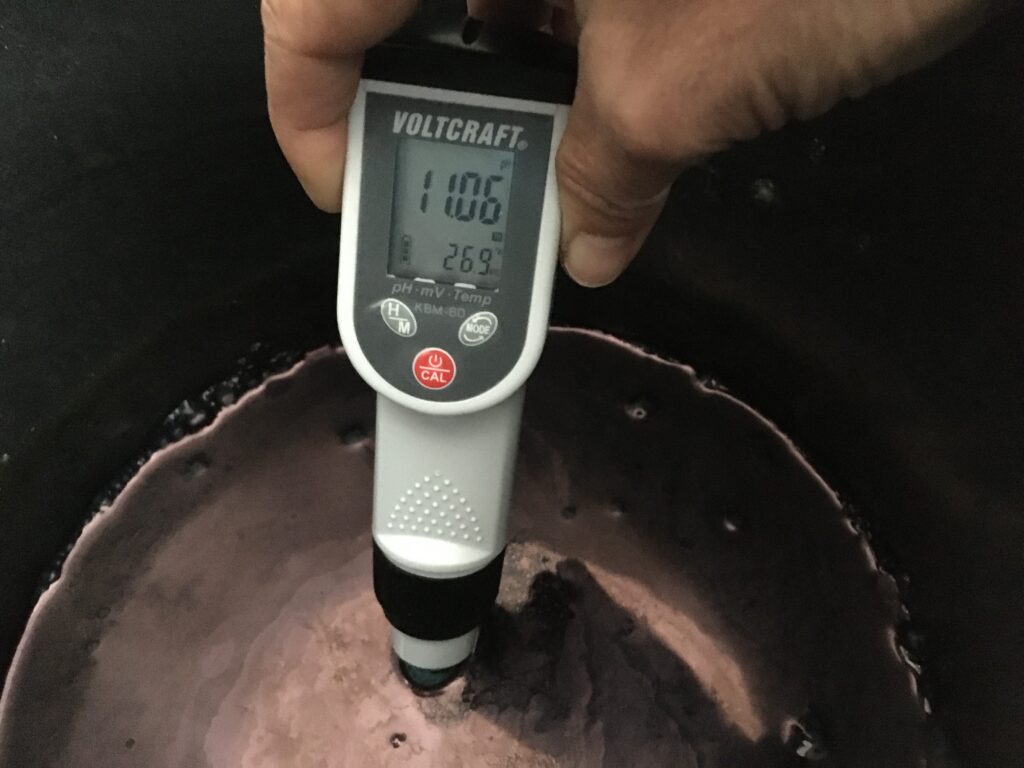
Day 37:
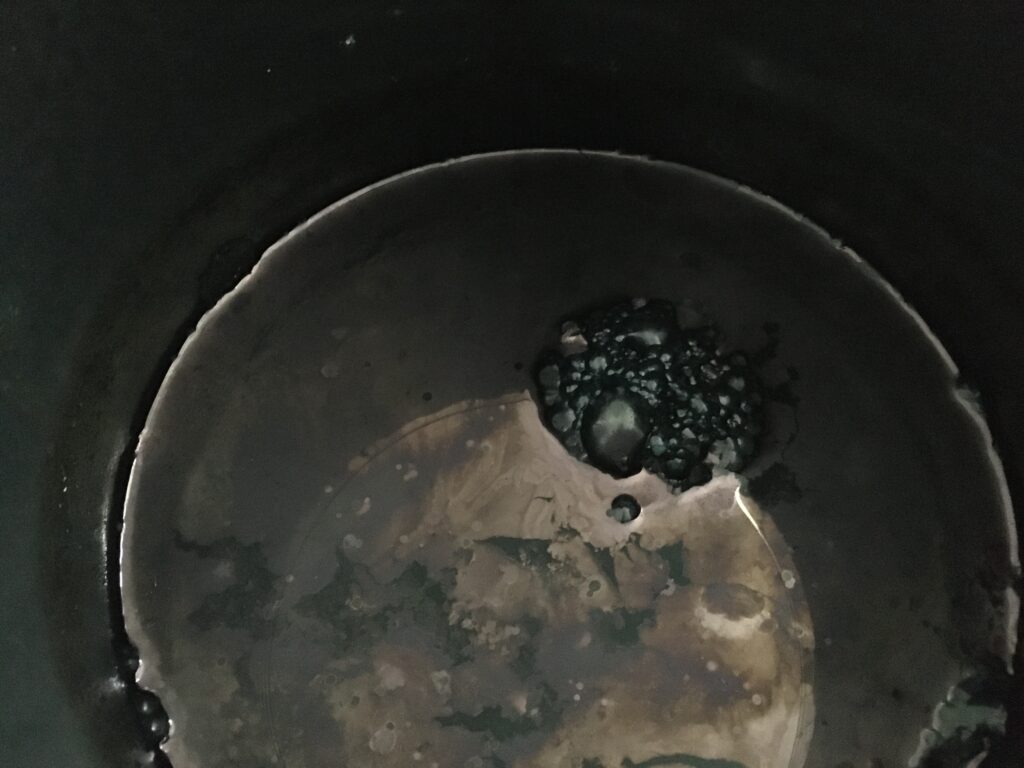
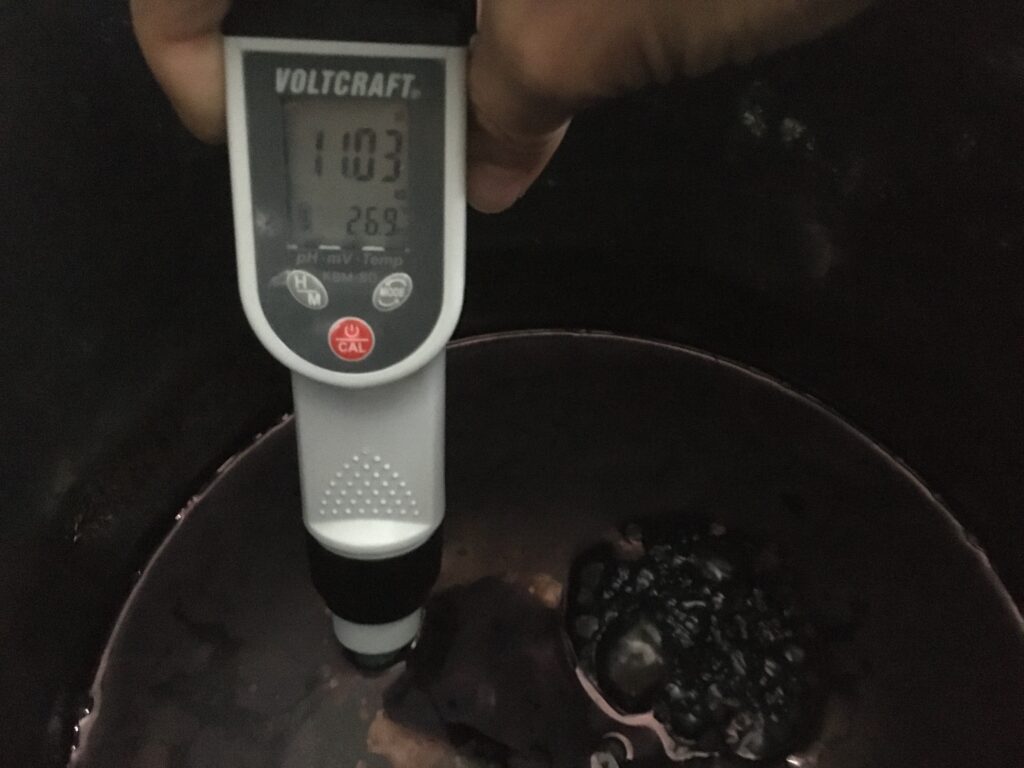
Day 38:
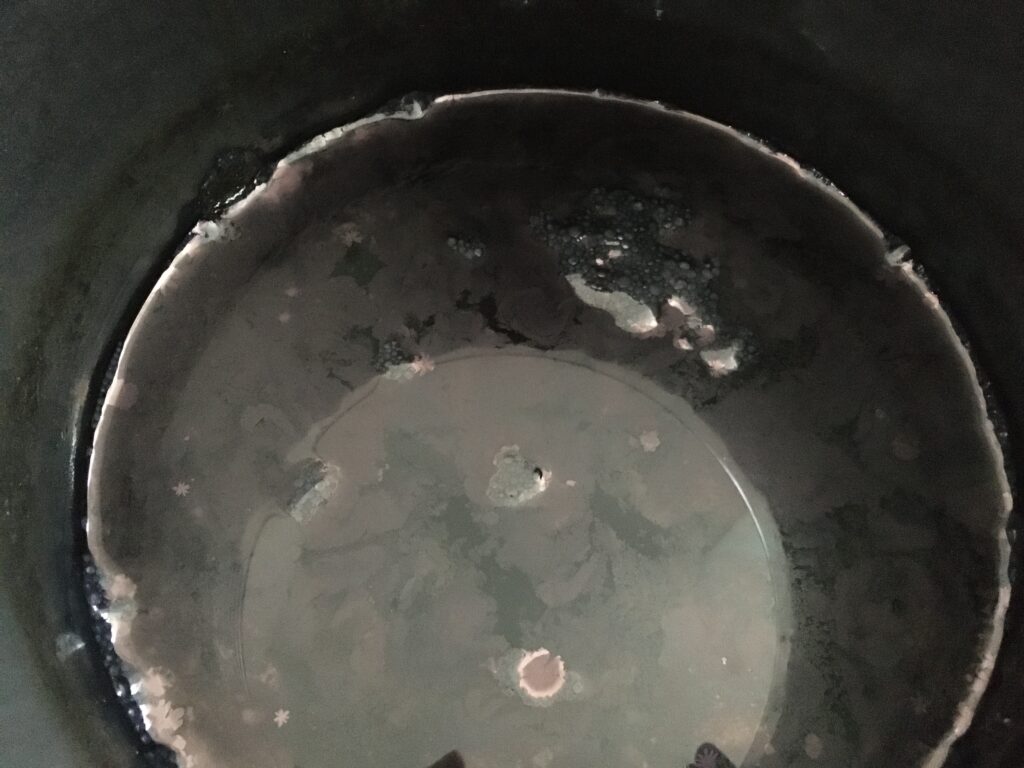
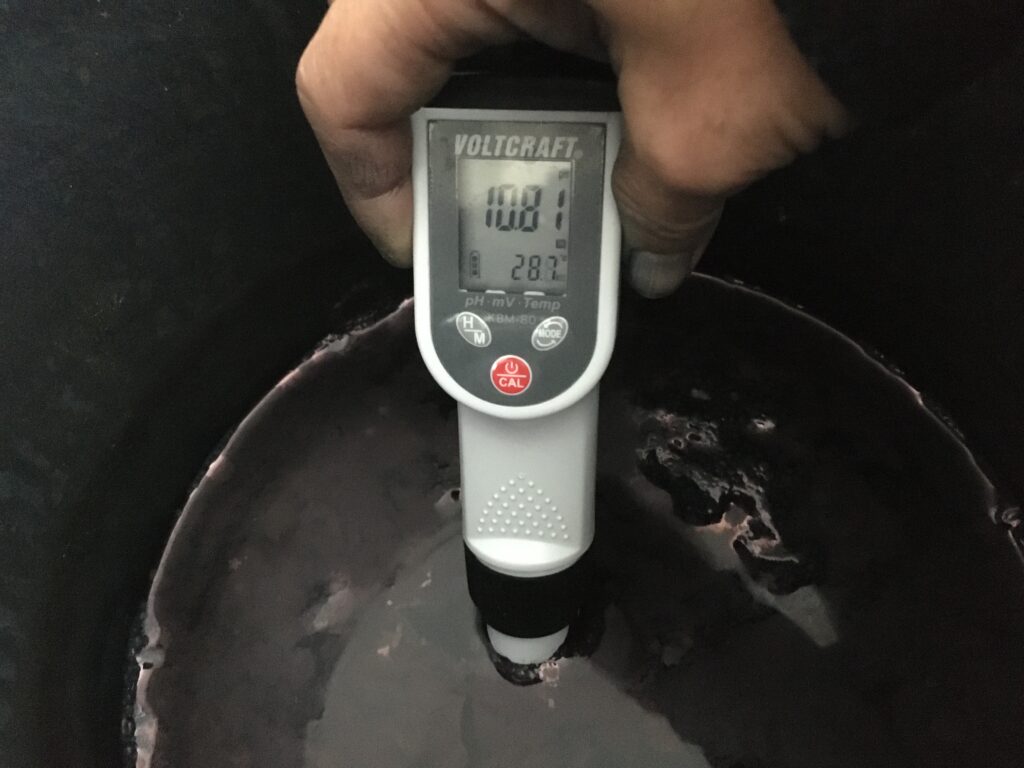
Day 39: It suddenly stopped. The surface is very quiet. No shiny layer. Also, it was looking creamy, but today it feels very thin. PH is a little lower than yesterday, but still above 10.5 so I decide to leave it and see where it goes.
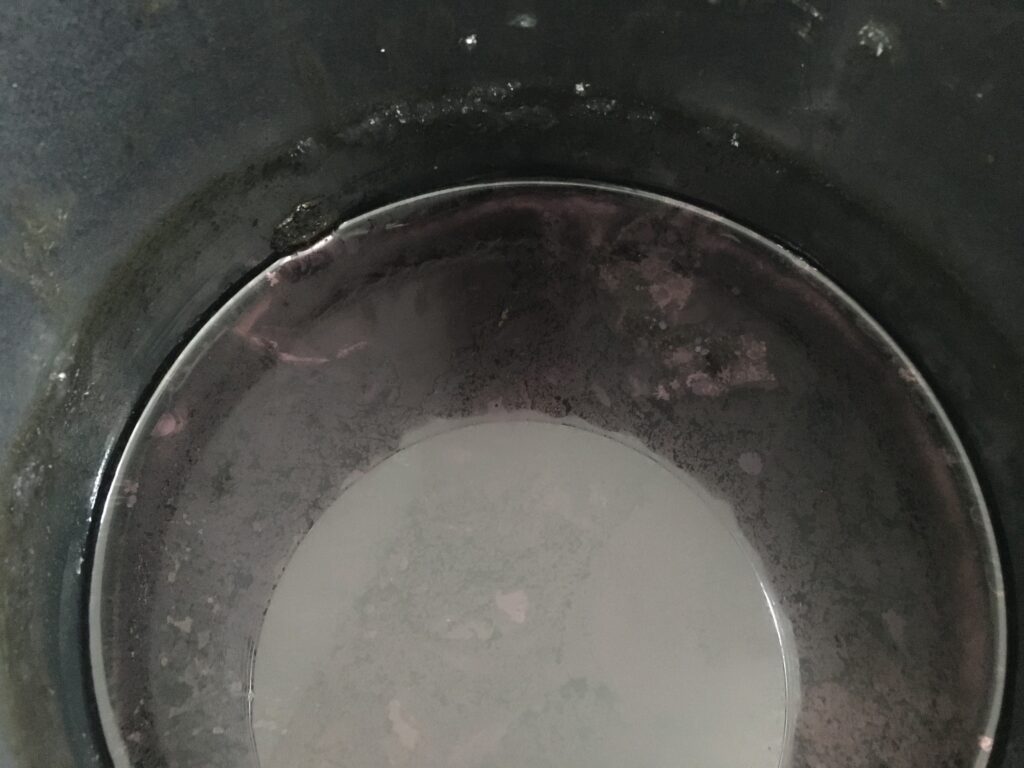
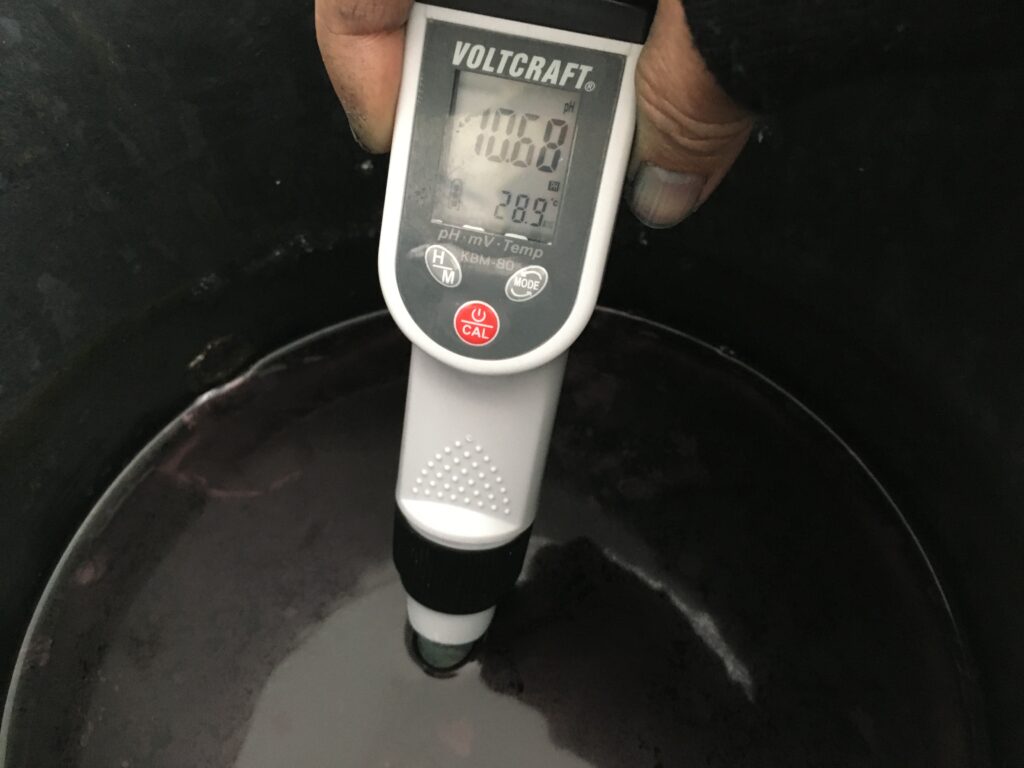
Day 40: Still very silent. PH is lowering once again. When mixing, I see a small bubbles coming out from inside, but after a while, it breaks on the surface. smell is not very strong, slightly ammonia and fermentation (miso or hey like) smell. I wonder if I should add bran+ca(oh)2 or wait.
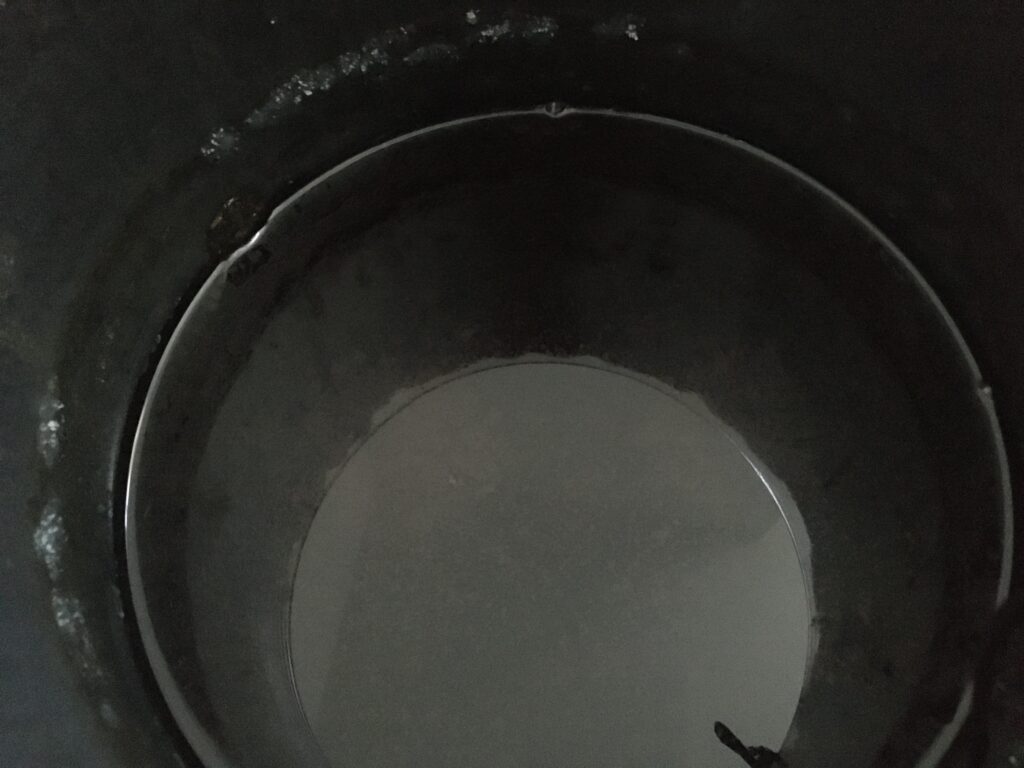
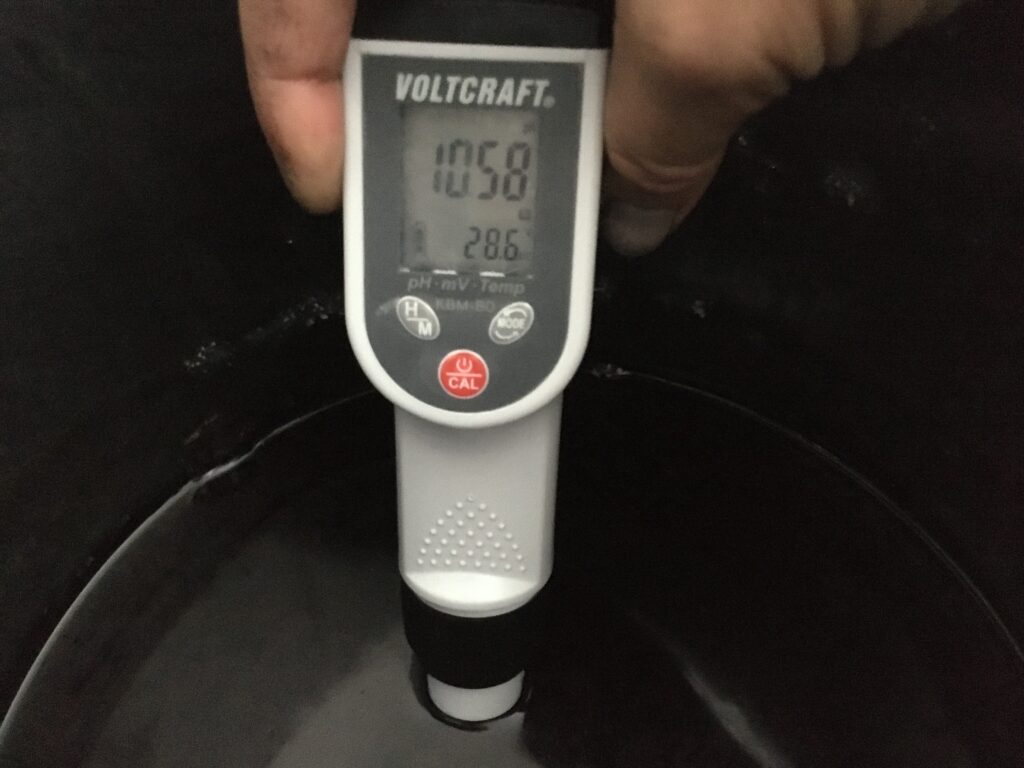
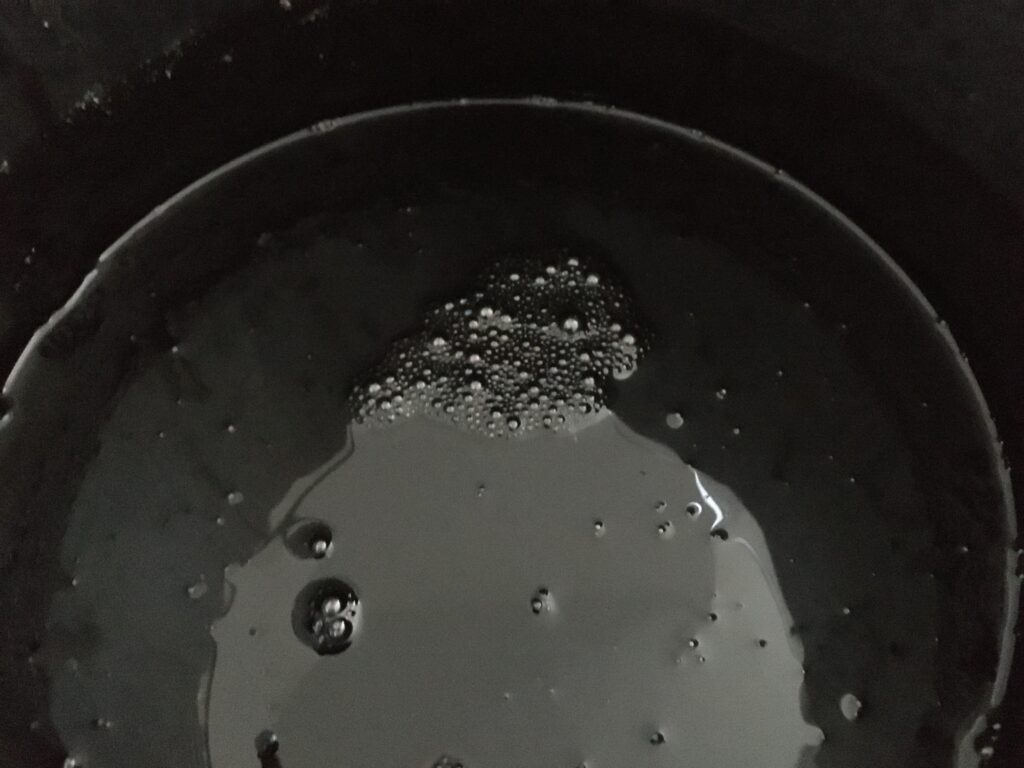
Out of curiosity, I took the cover out to see how the inside looks like. It is all dark black and I do not really see what is happening…
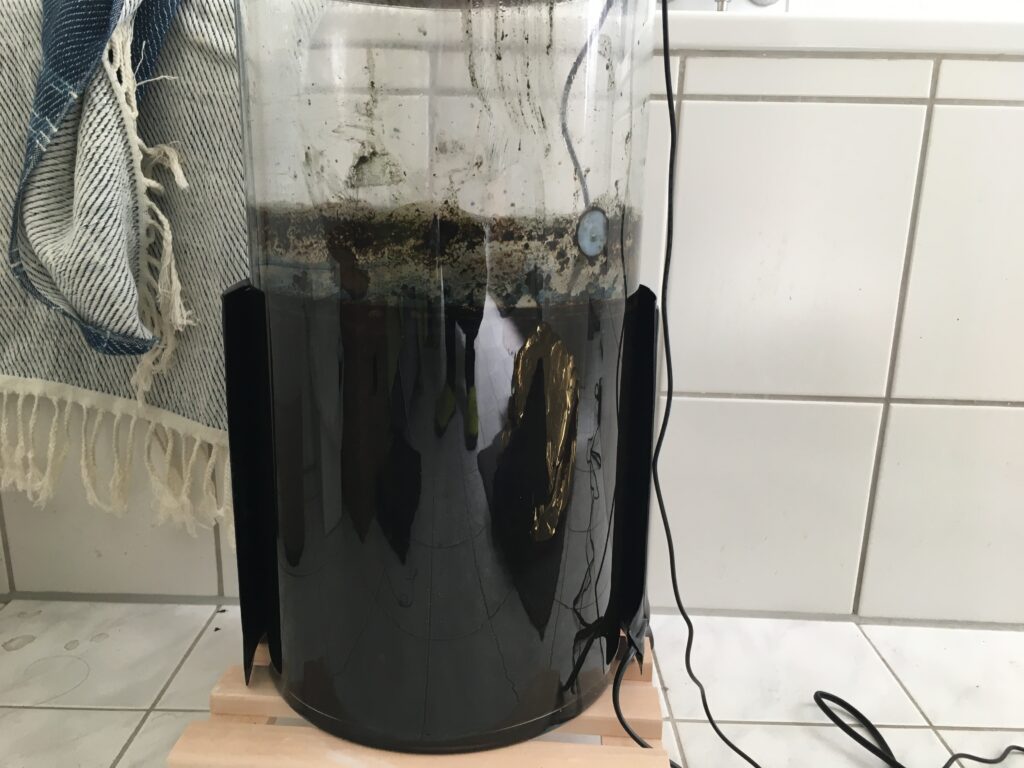
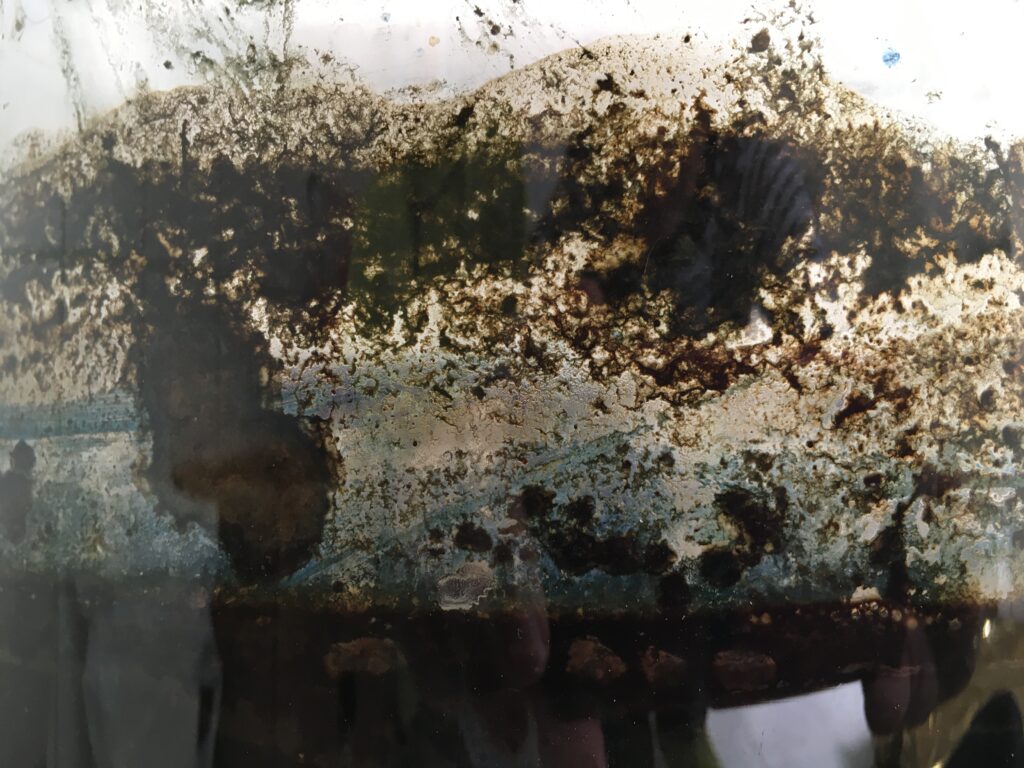
at 18:00, I look at the vat again… still no sign. I set the thermostat up to 32 degrees to make sure the vat is warm enough for the bacteria. It is getting quite cold in Berlin and the room temperature is below 20 degrees. I decided to add 50ml of sake, out of panic. Maybe it needs a bit of food?!
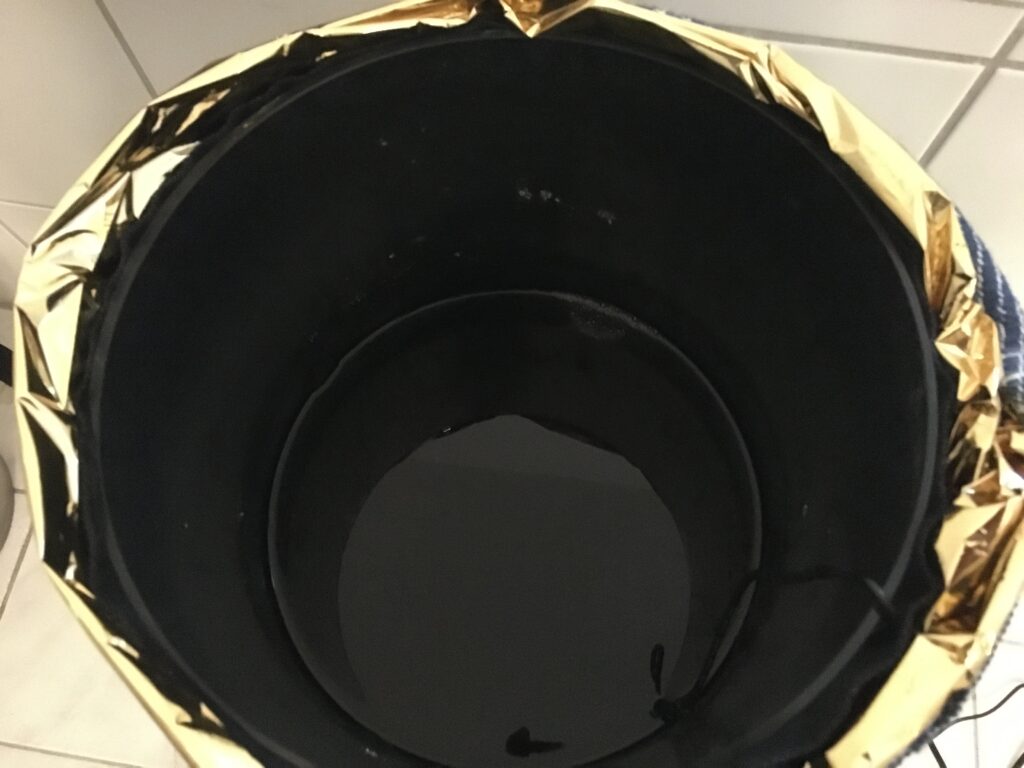

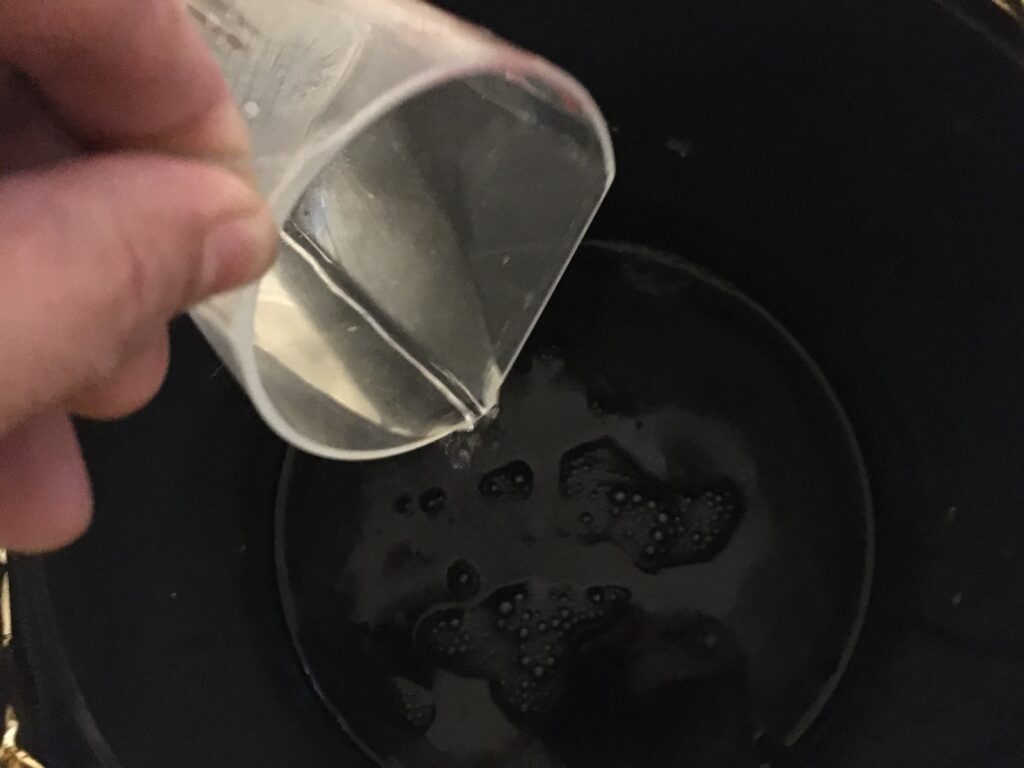
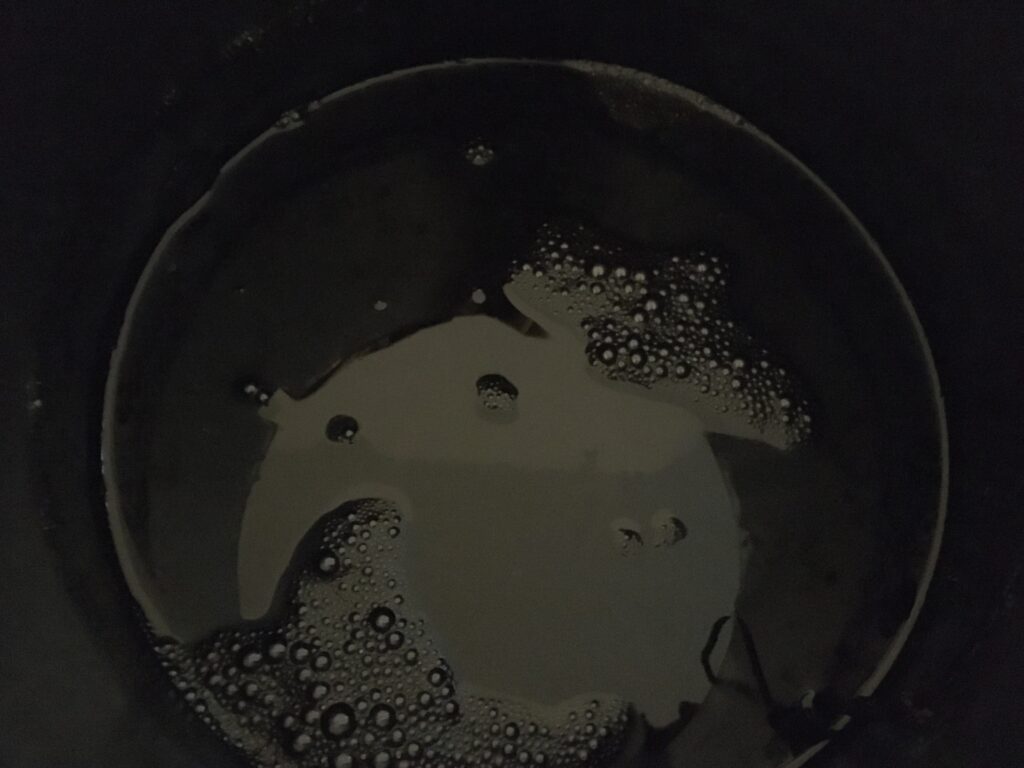
Day 41: Slight change. There is a pattern of purple layer on the surface. I expected some reduction to happen as the sake contains flavonoid, which is also a reduction agent. Surprising thing is that PH is also significantly low now. I wonder warmer temperature and some food made the bacteria active now?? For now, I did not add ca(oh)2 yet. Maybe I add this in the afternoon to increase the PH. The smell is very mild, no ammonia smell. It has a bit of a sewage like smell but not unpleasant.
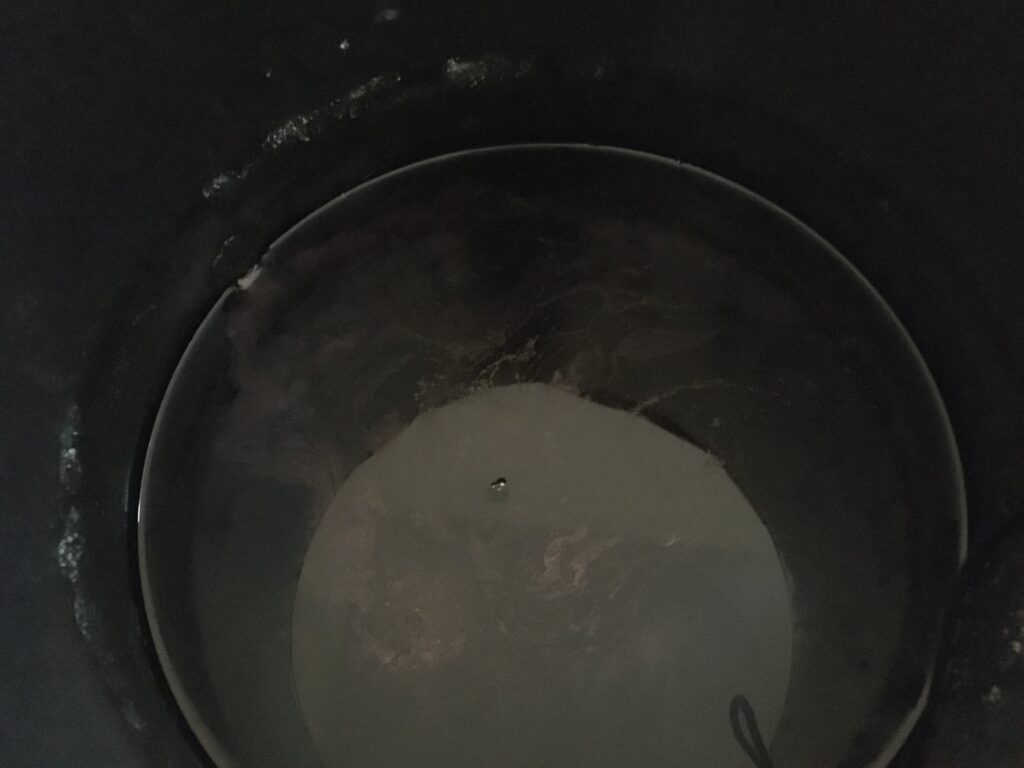
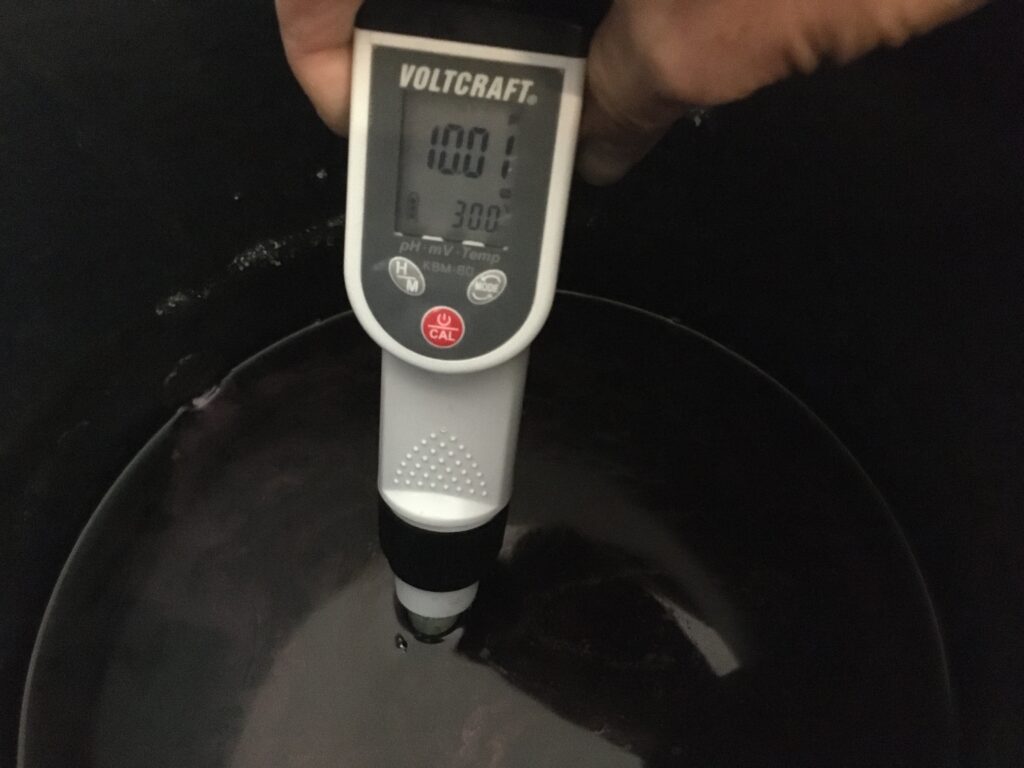
measuring again in the evening. The PH is now higher so I do not add ca(oh)2
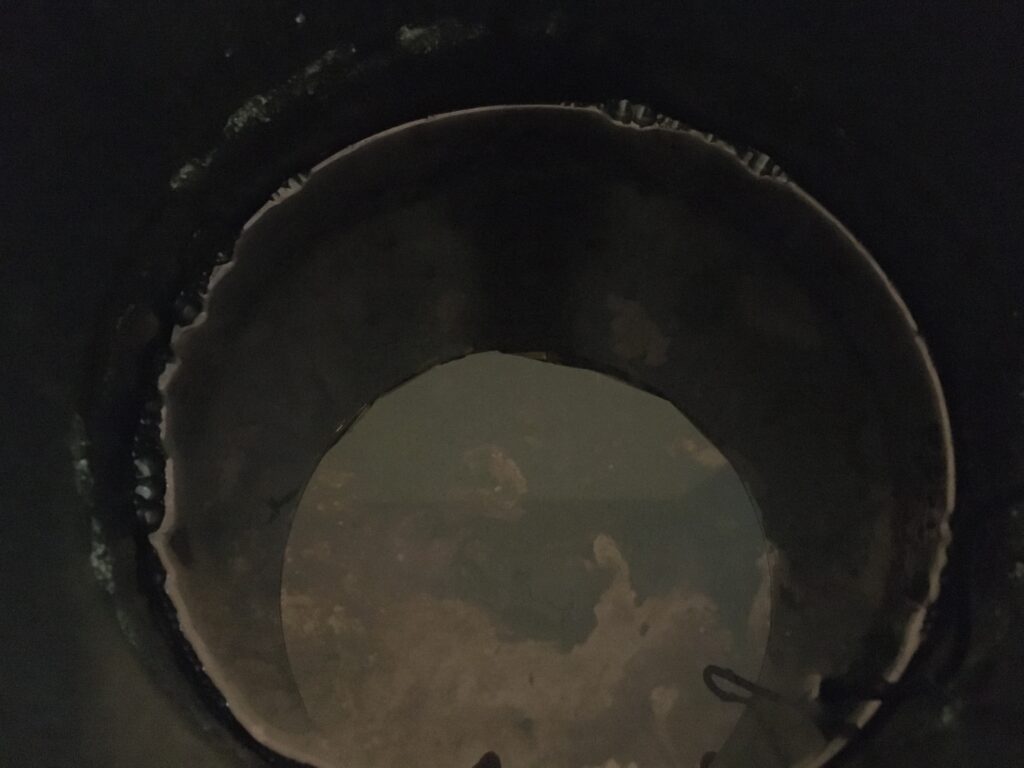
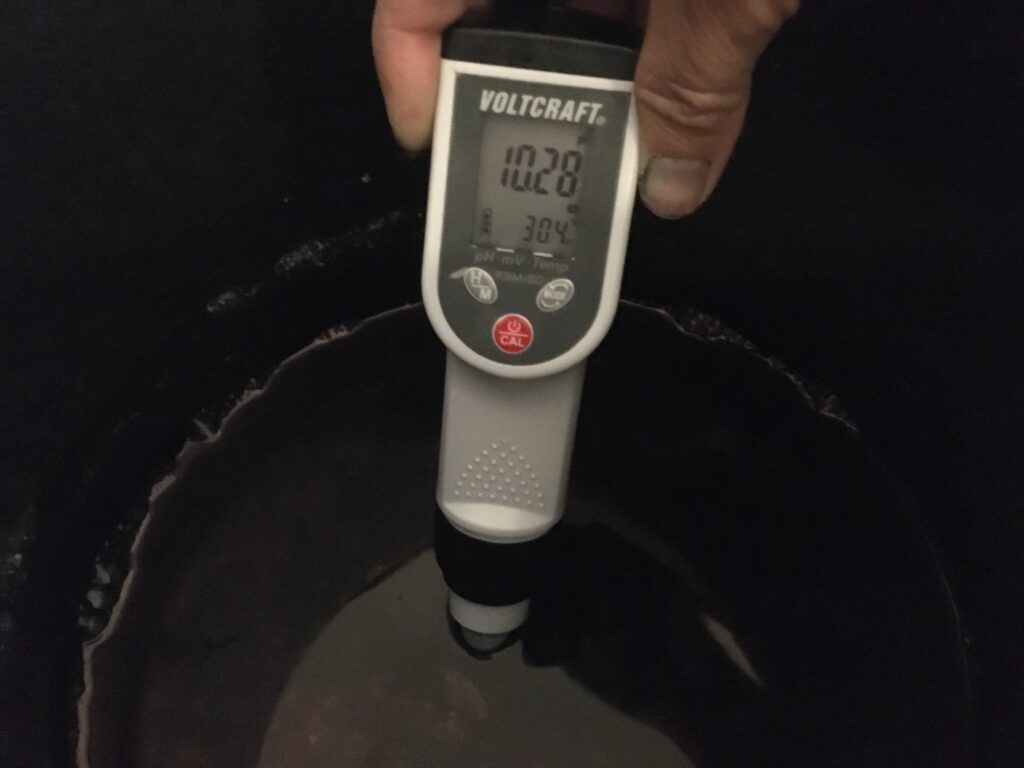
Day 42: The surface has a thin mat layer. Smell is still mild.
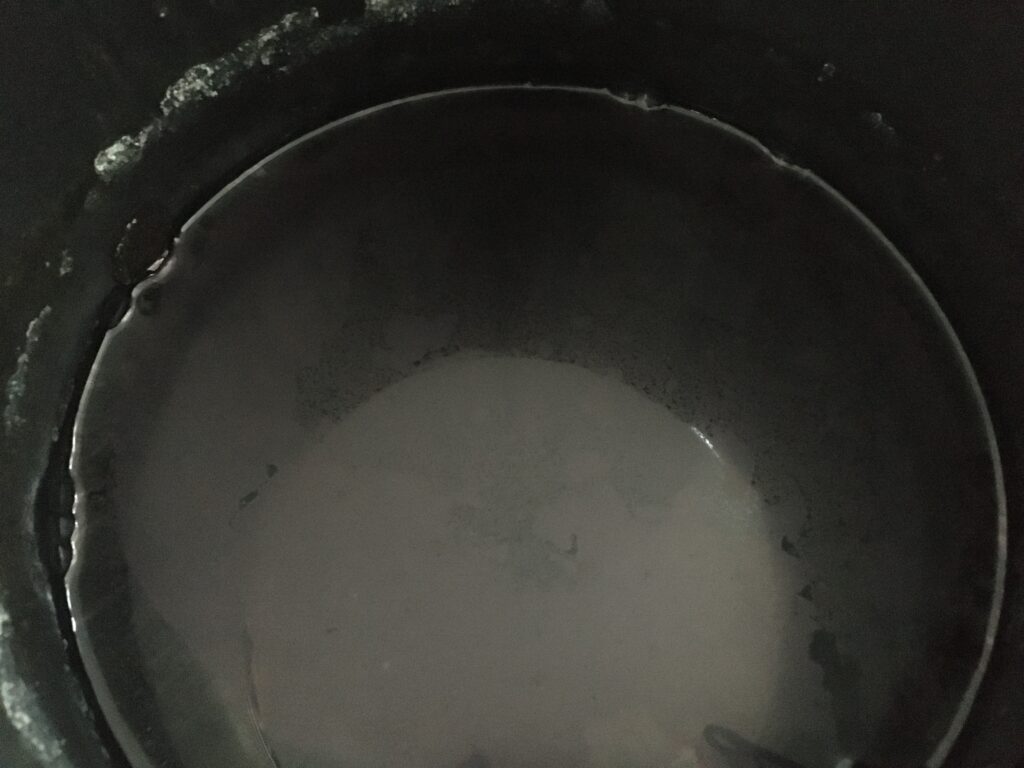
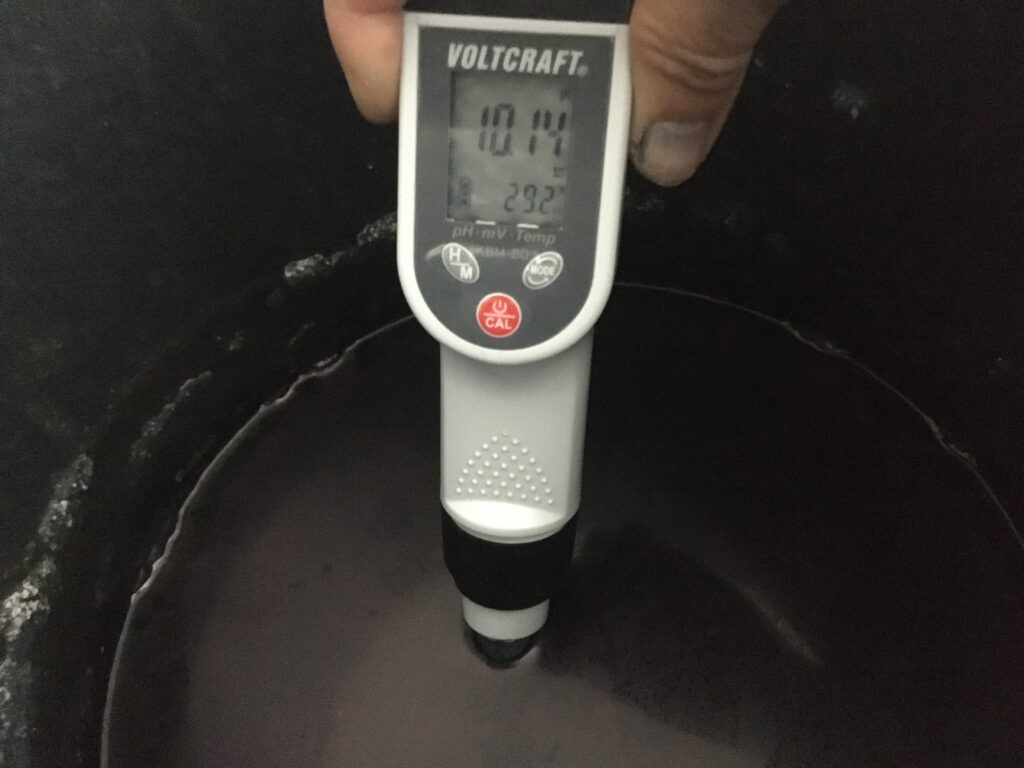
I notice there are a lot of white fungi on the wall of the glass vat container. This happened before, and every time I was wiping it out thinking it is not good to have extra fungi/bacteria. For now, I let it stay. Image on the right is after mixing the vat. I am mixing with a stick trying not to let the air mix in the liquid… but the temperature sensor from the thermostat is hanging in the liquid, and it makes the bubbles when I mix it… also, I feel there are some bubbles coming out from the liquid itself. After mixing, it looks shiny and creamy.
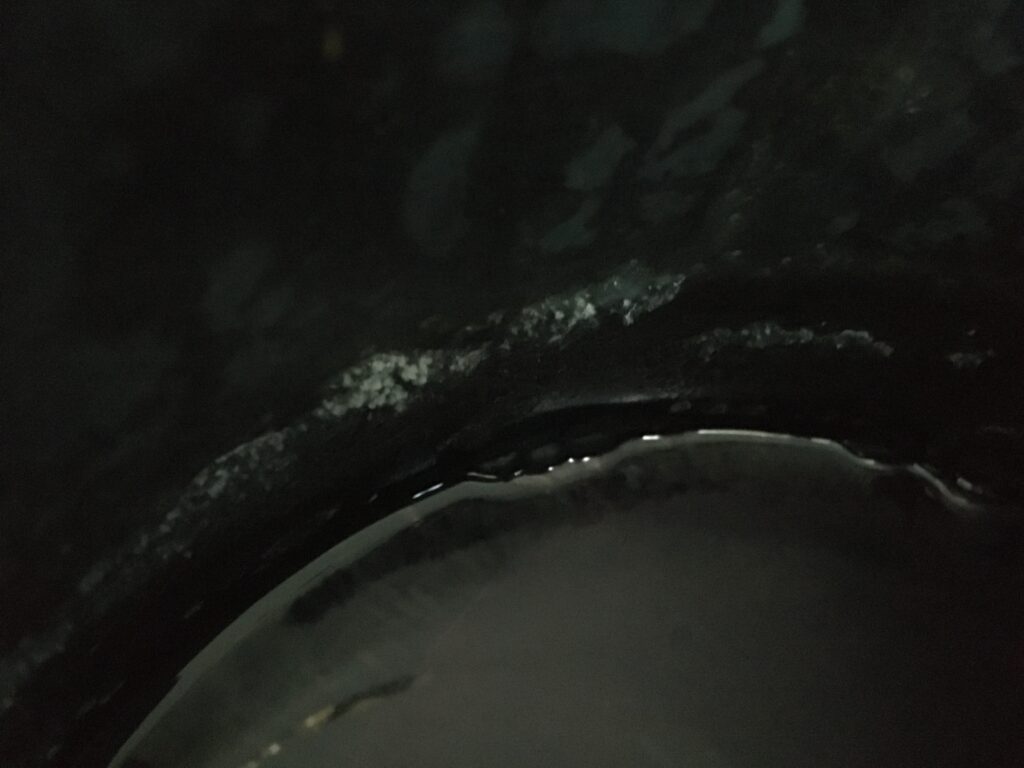
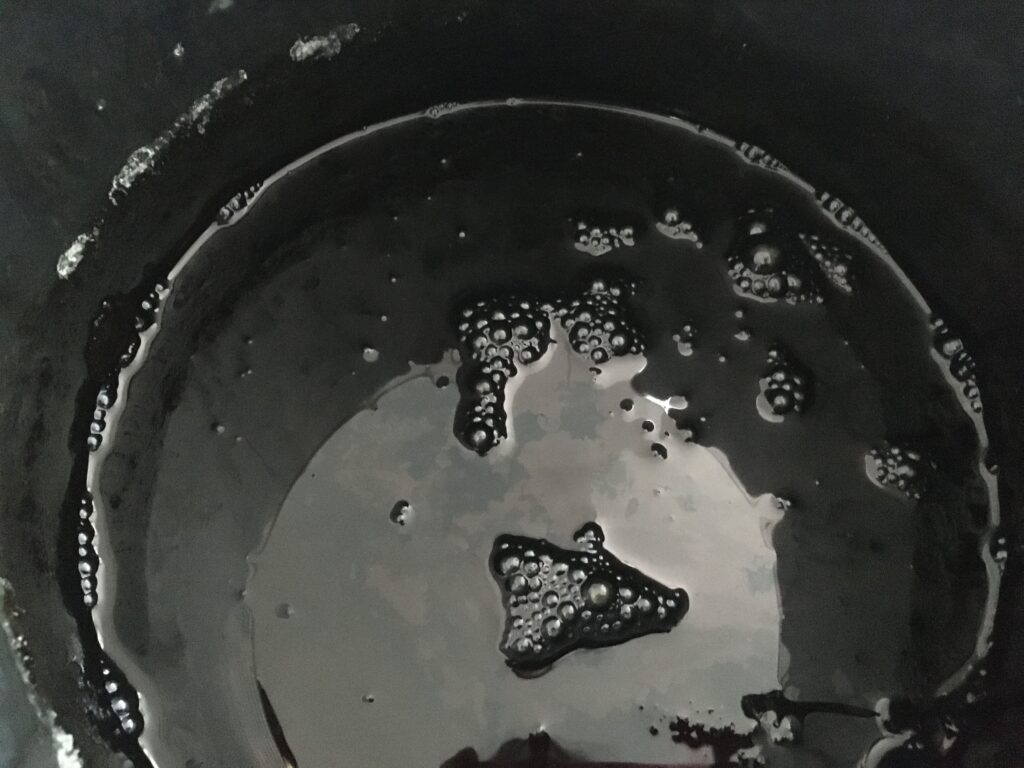
In the evening, it looks surprisingly different! Out of excitement, I made a test dye strip. Still not blue but there are slightly more hint of blue..
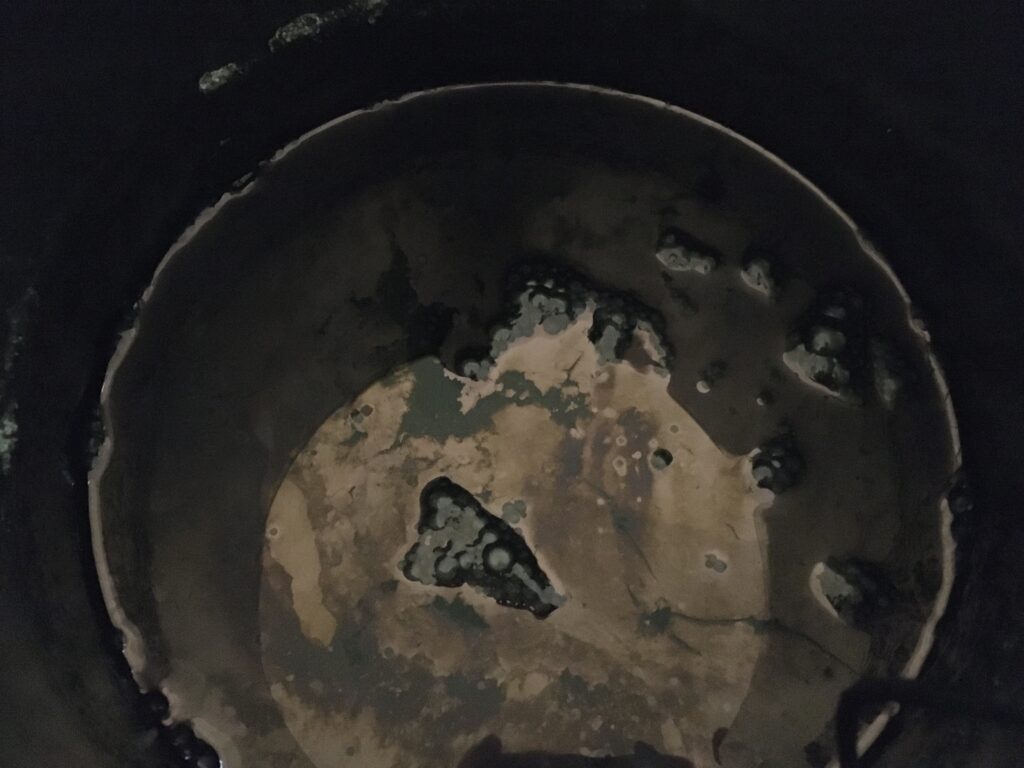
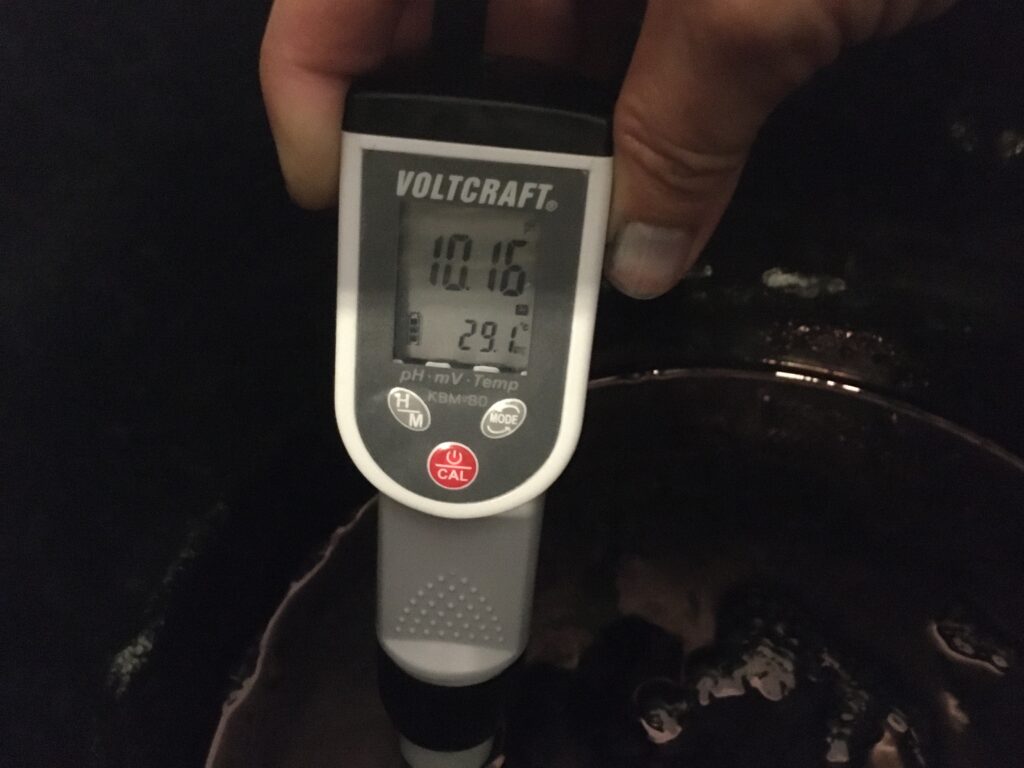
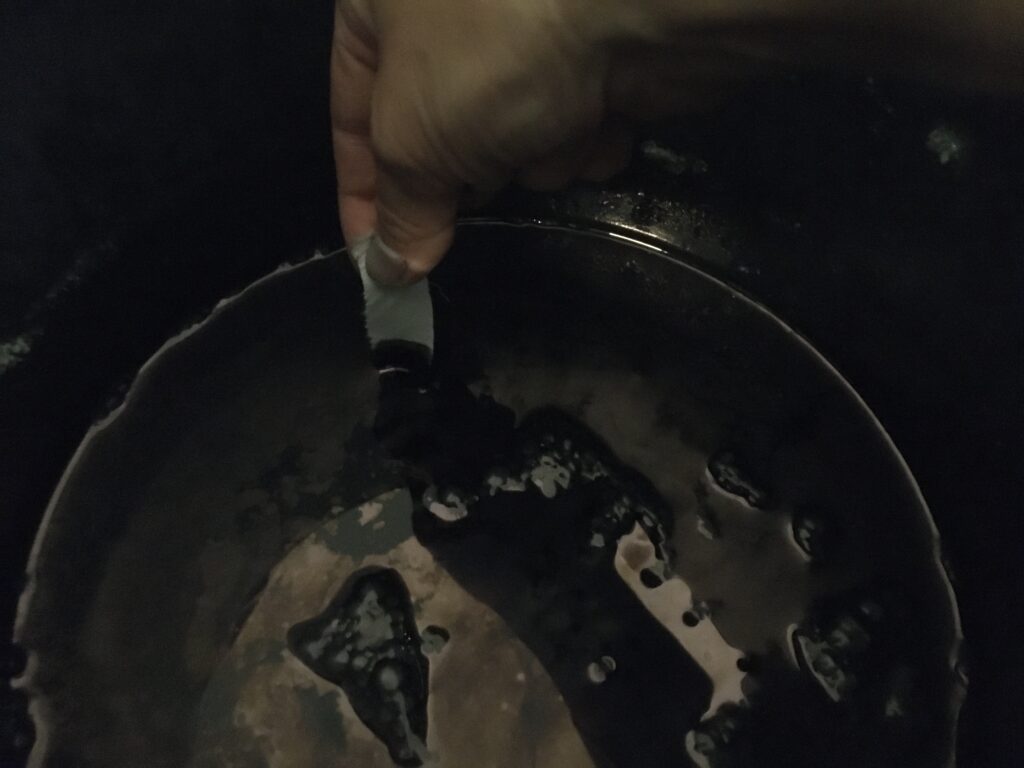
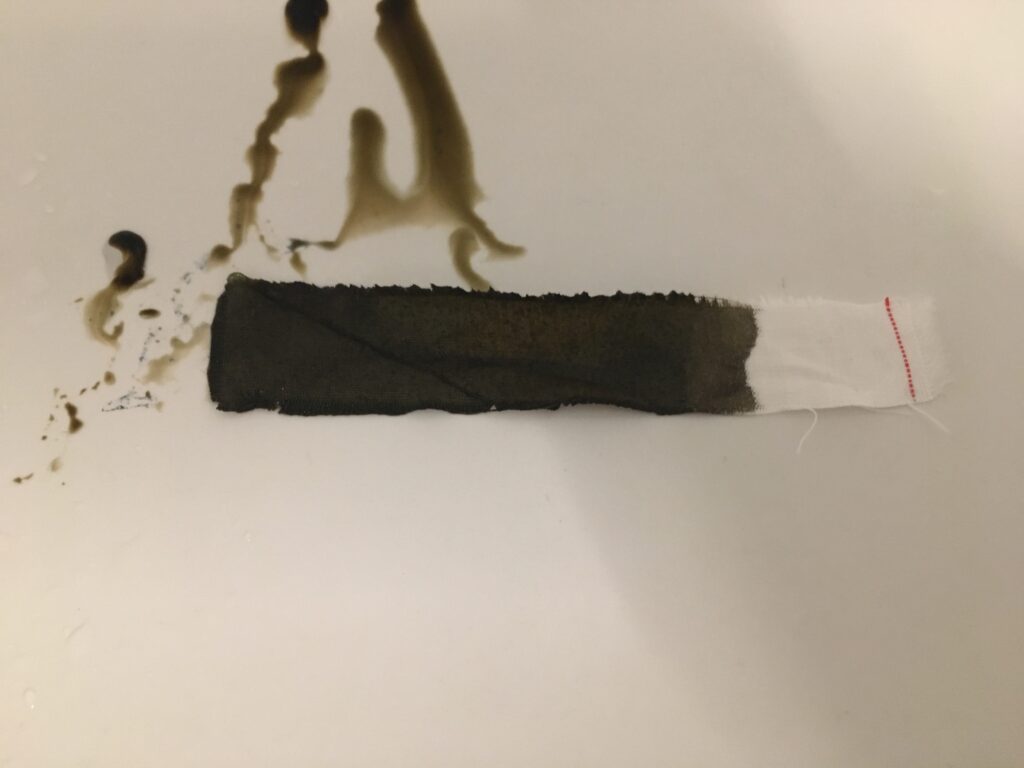
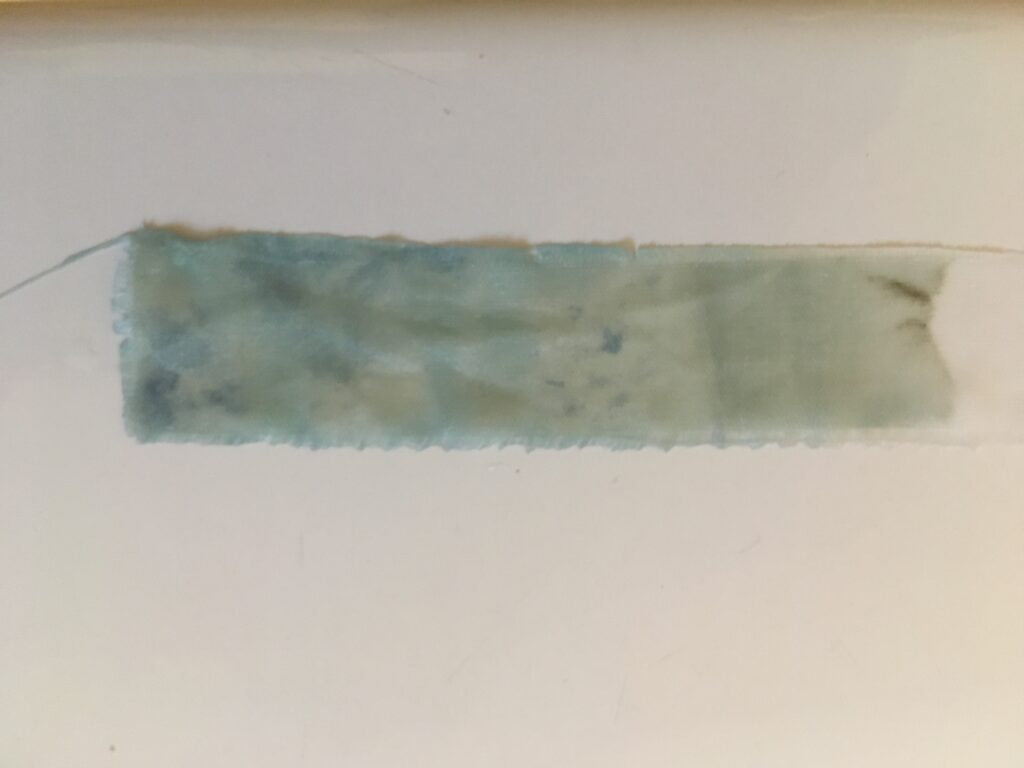
Day 43: Another big surprise. I opened the lid in the morning, and this time it has a thick mat layer on the surface, but there are still purple shiny layer underneath. The smell is still mild, round fermentation smell. More in the direction of indigo, than hay fermentation. I also made the test strip dye and it is more blue than yesterday, but still very light.
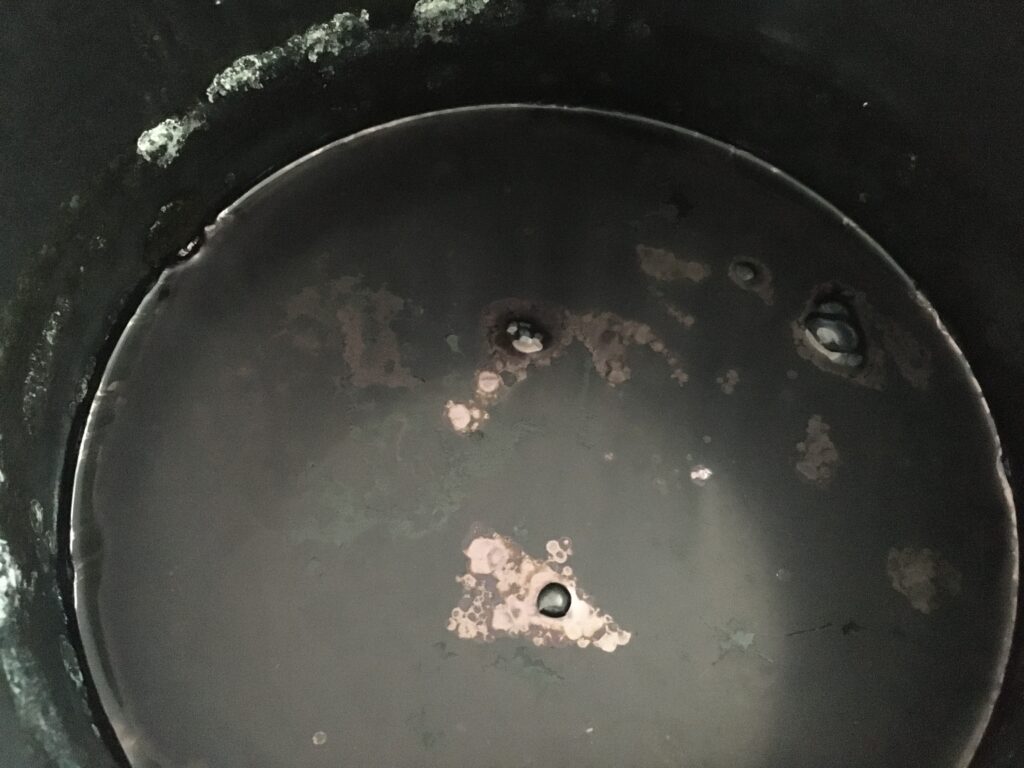
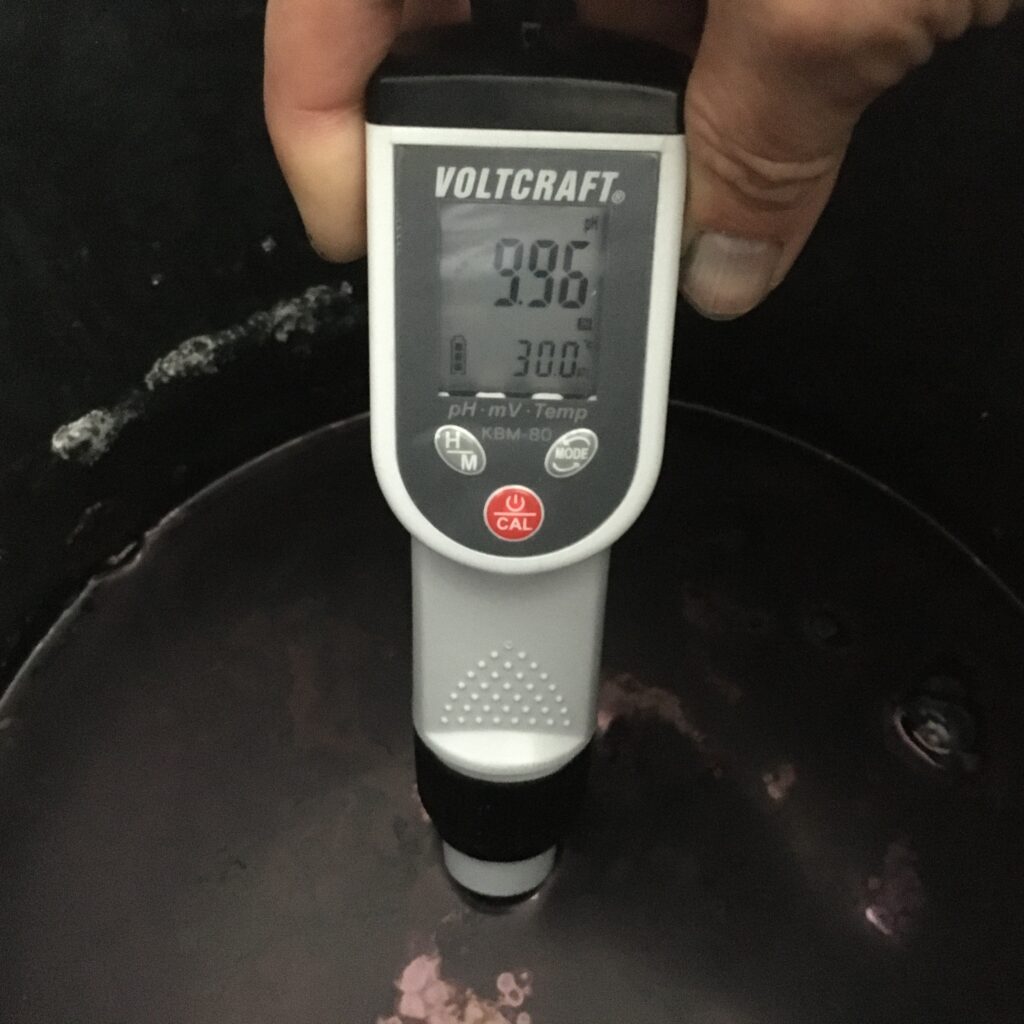
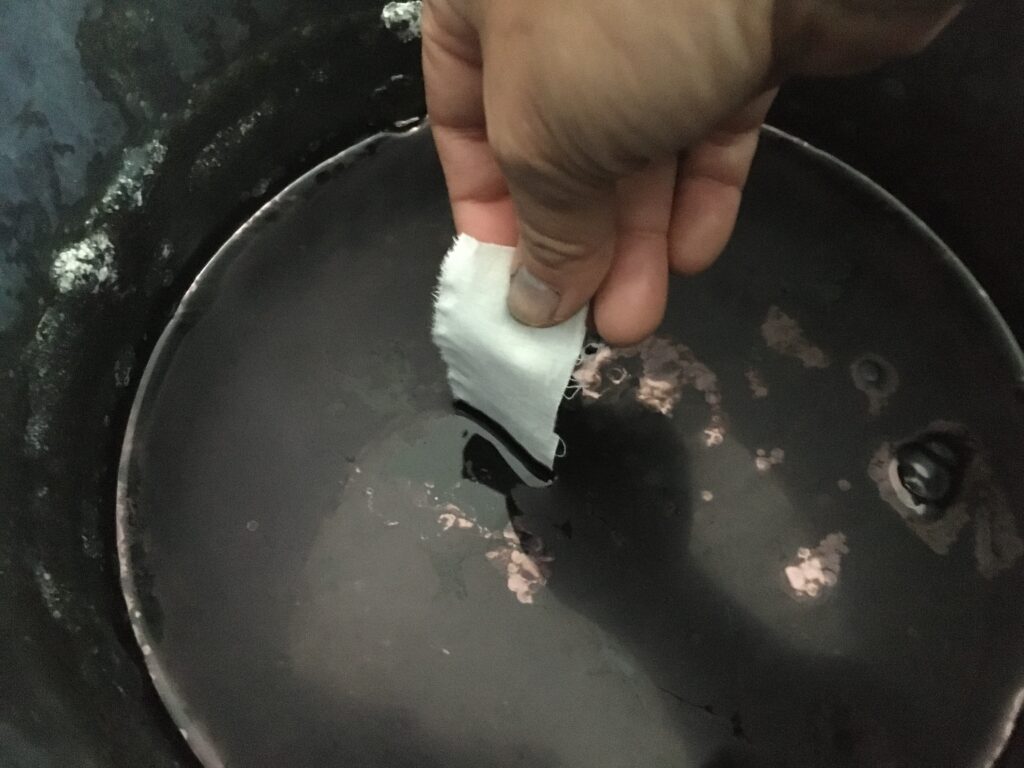
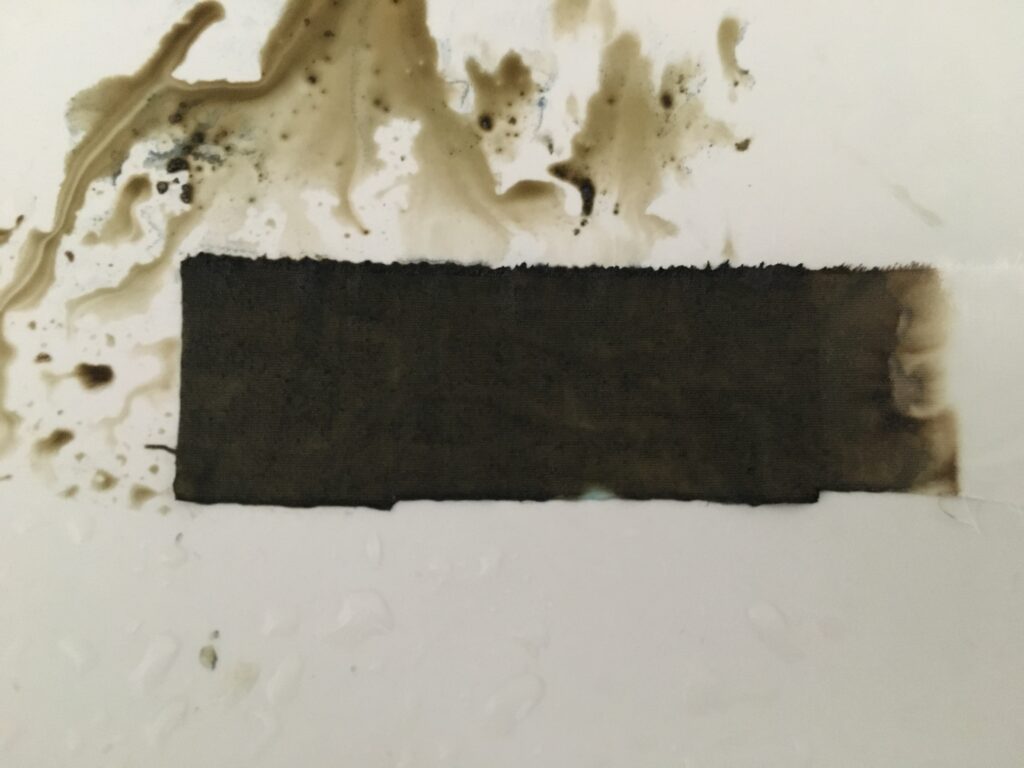
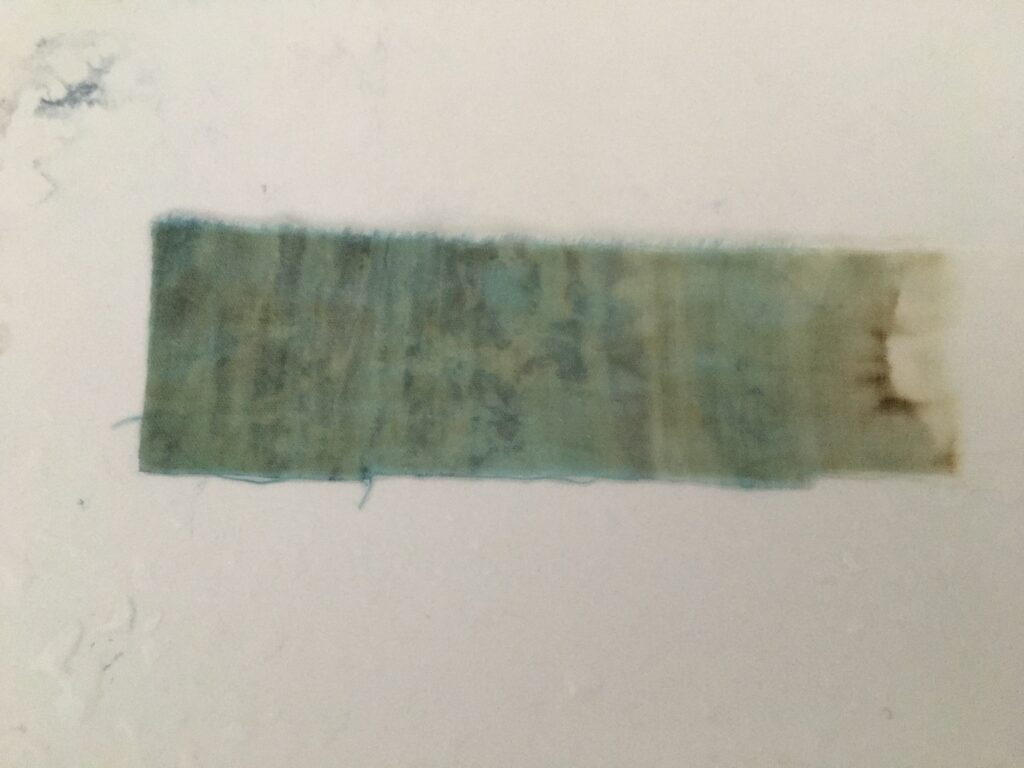
I added 1 spoon of ca(oh)2, and mixed well. I took the temperature sensor of the thermostat out as it is making extra bubbles when I mix. Surprisingly, I see the bubble island after mixing. Is this a good sign??
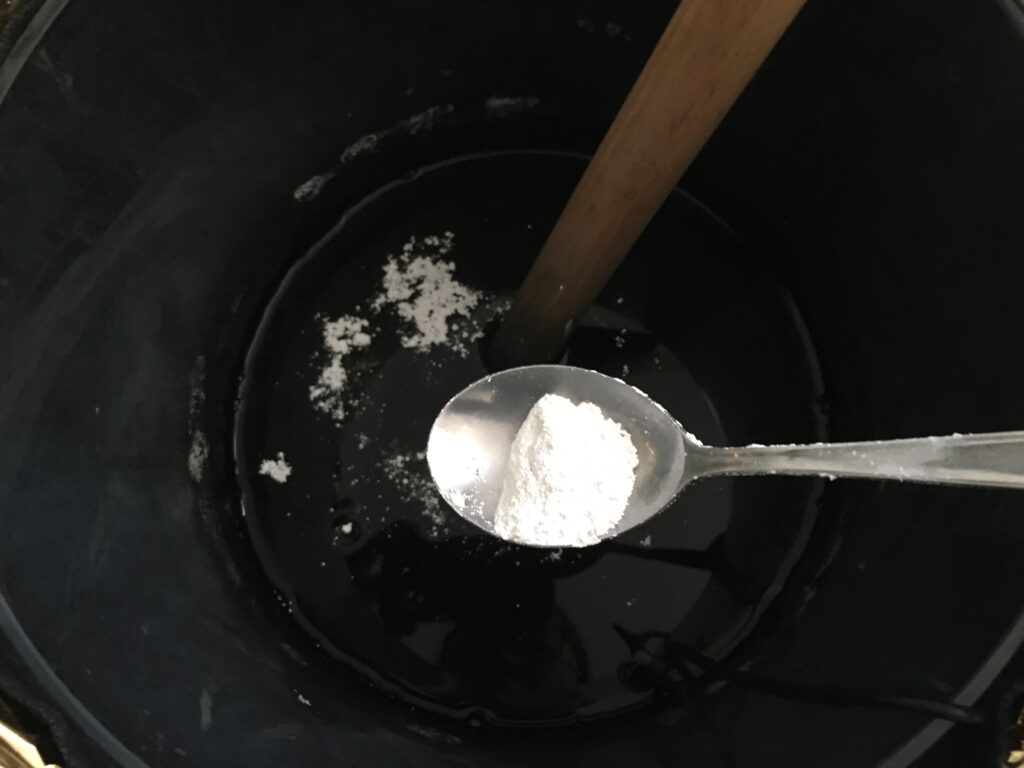
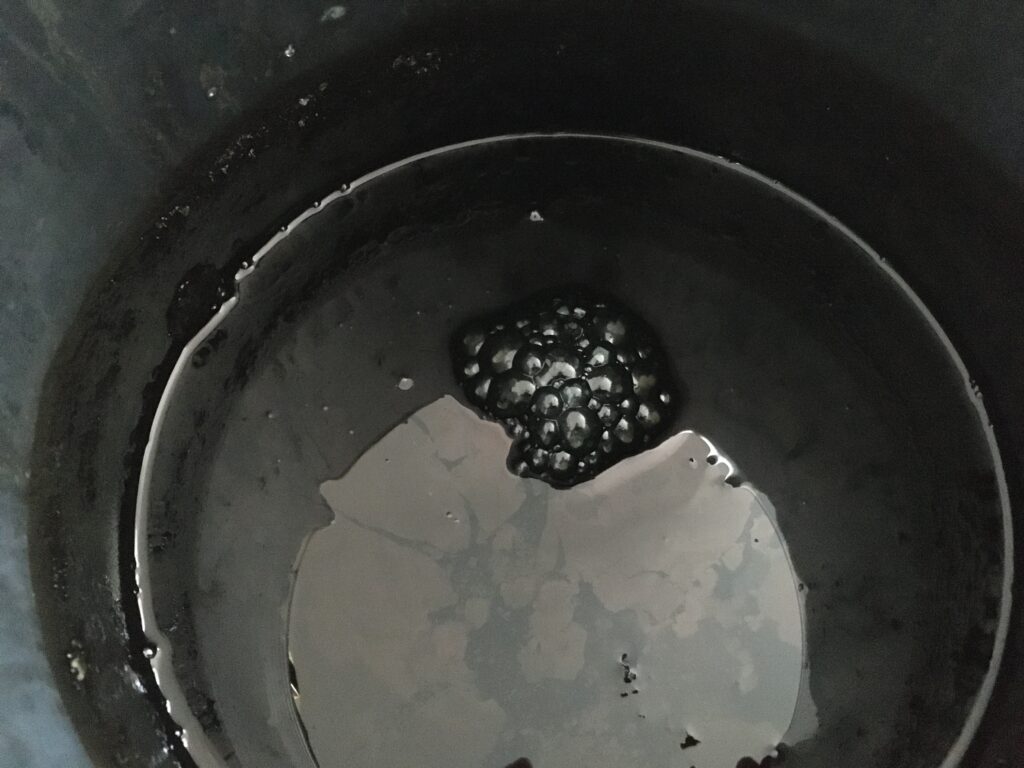
Day44: PH is still slightly low. 1 more spoon of ca(oh)2.
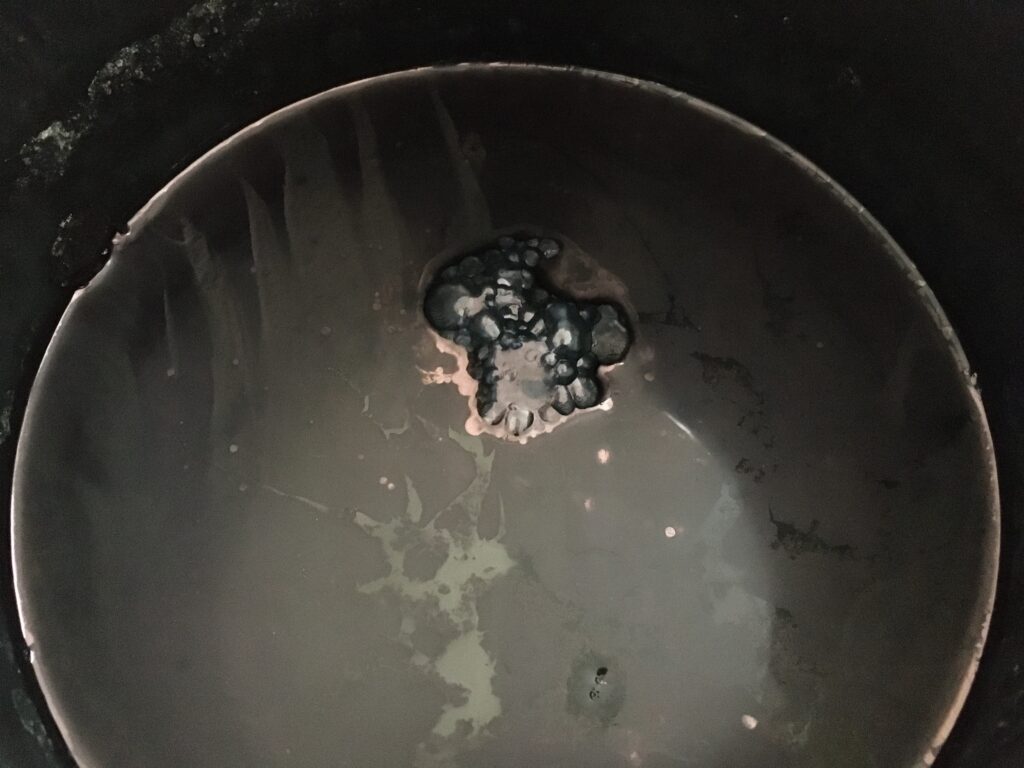
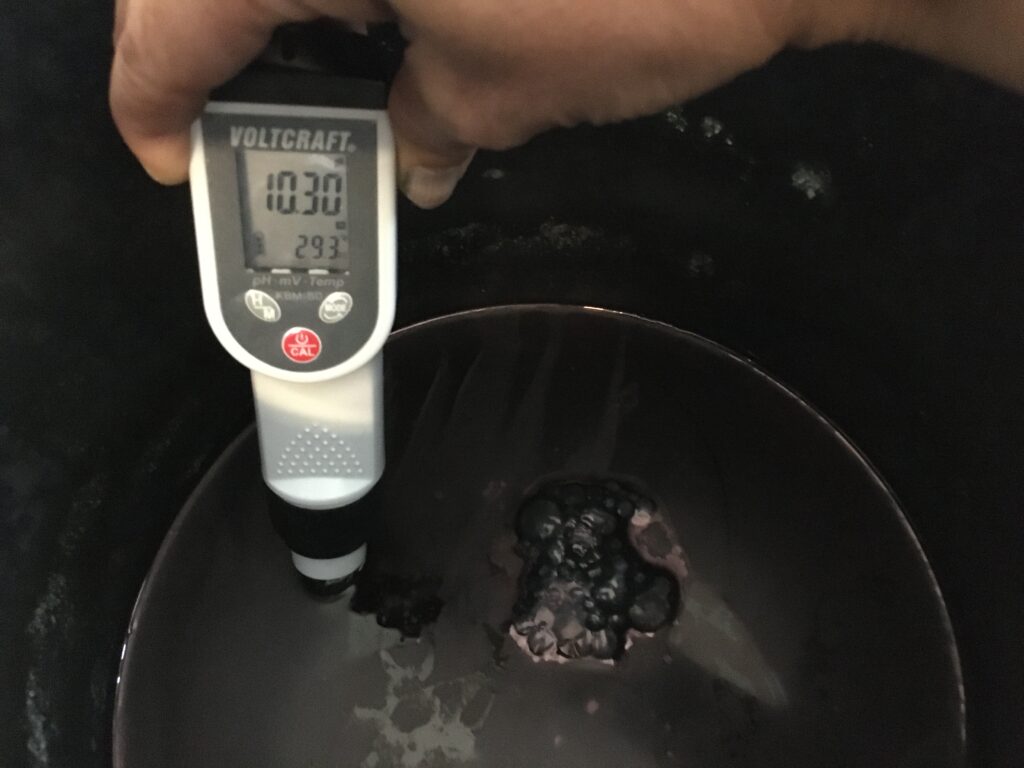
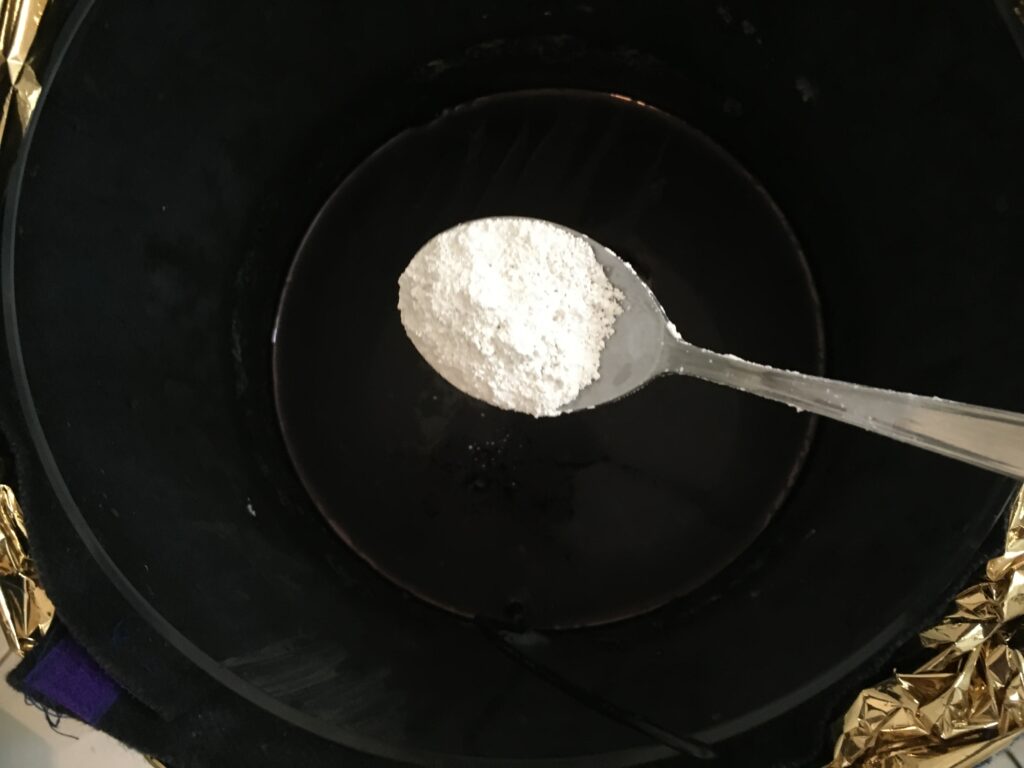
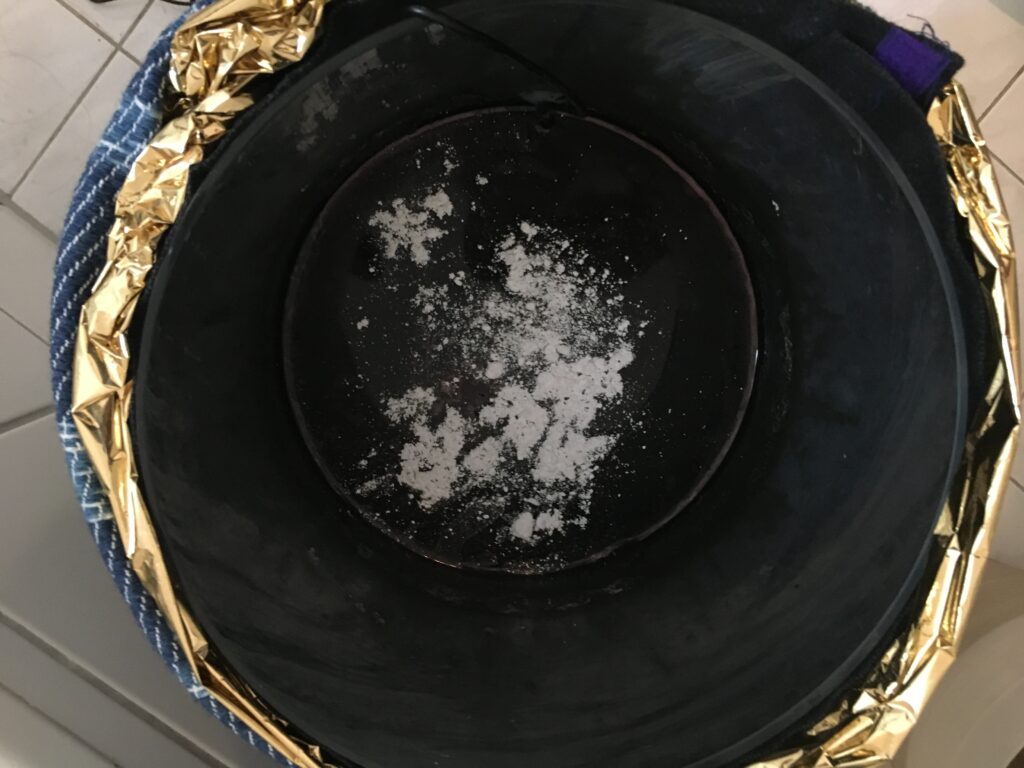
Day 45: The vat surface looks even more strange today. PH is up now as I added ca(oh)2. smell is still mild, earthy indigo smell.
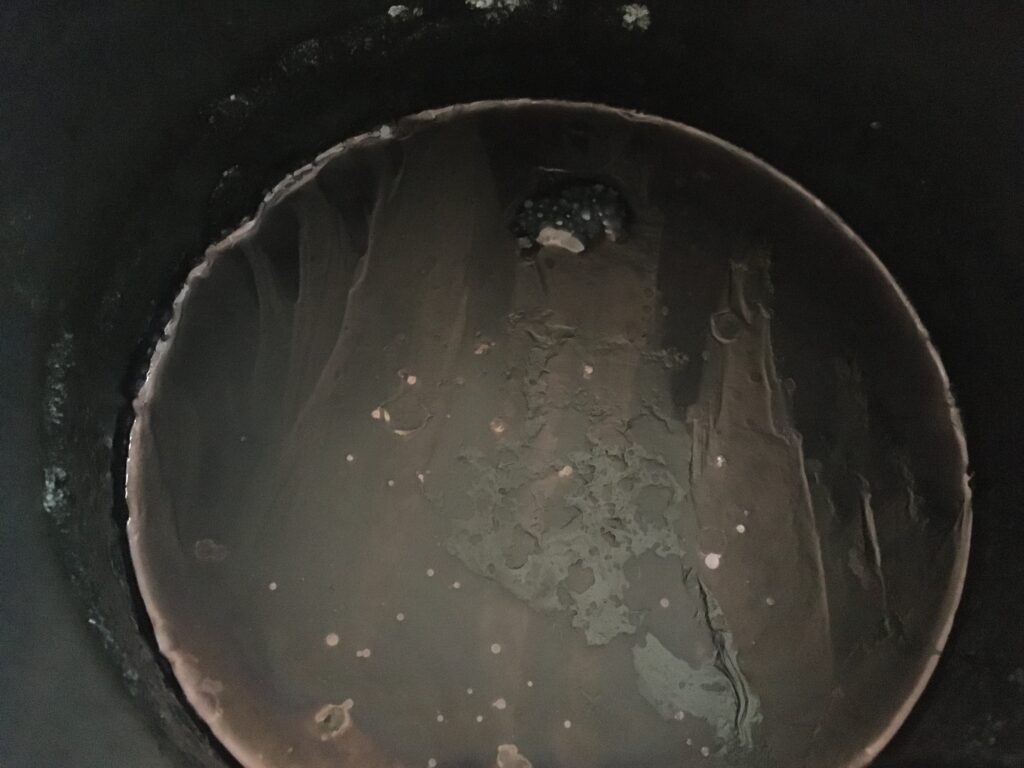
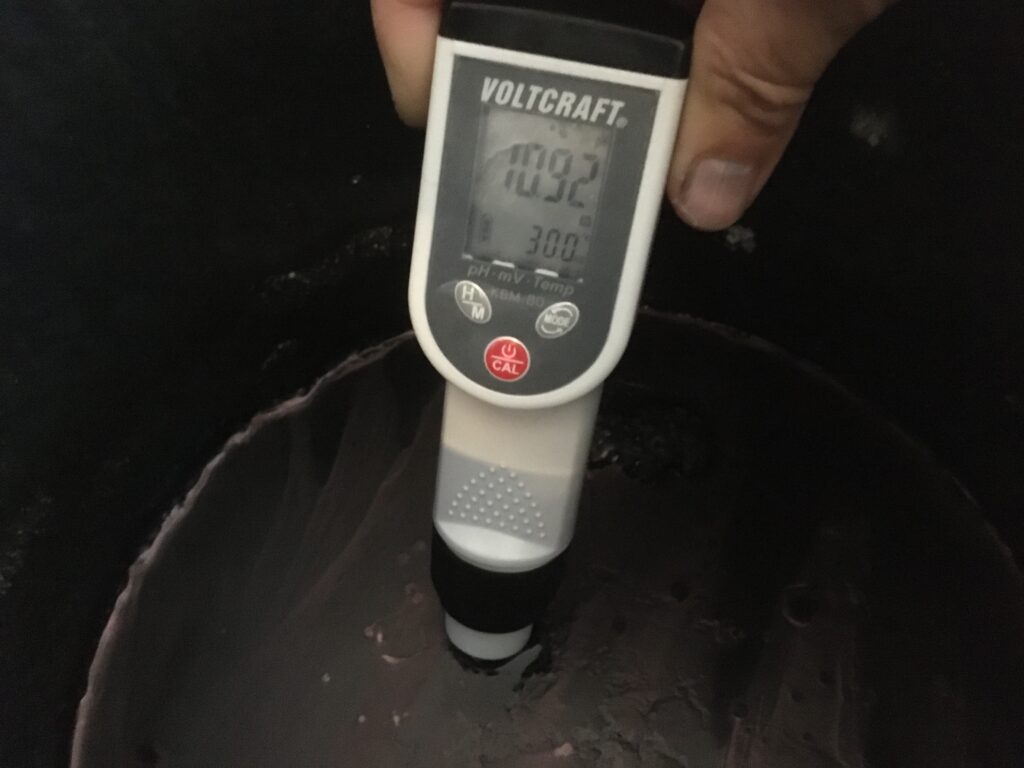
This is how it looked after mixing in the morning, about 9am
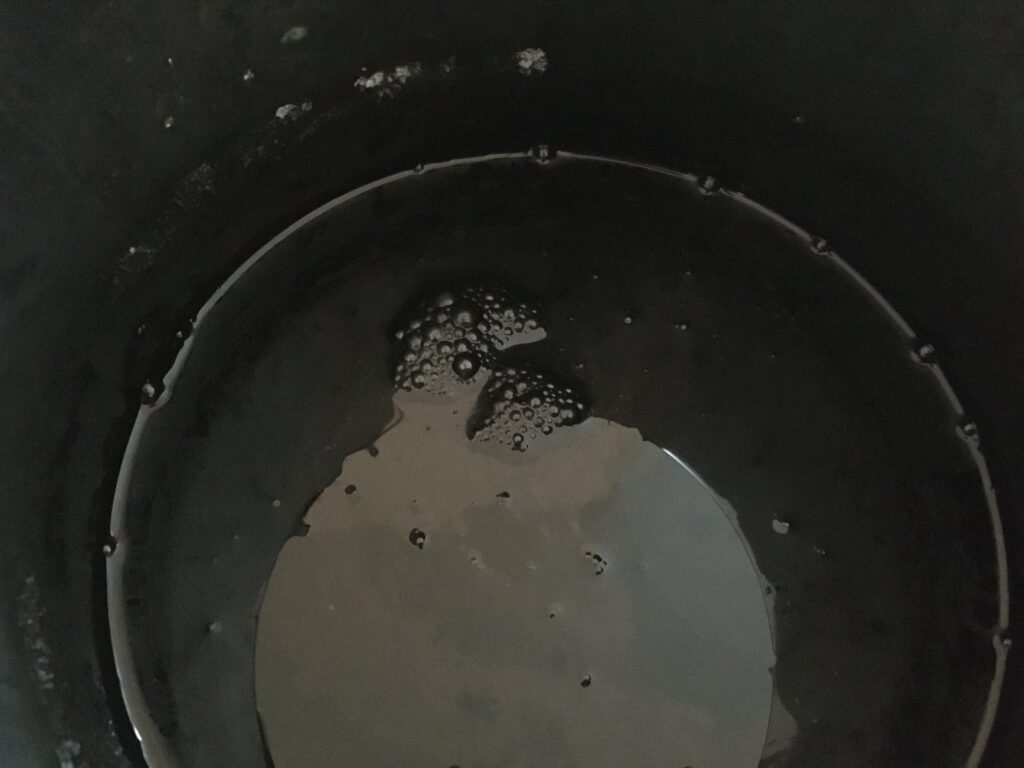
Then I had a nice conversation withe Melanie from Ainisomatte. She is growing and dyeing indigo in Okayama Japan and she teaches indigo vat making and seed to sukumo making for small quantities. She kindly agreed to give me a tip about my vat problem.
She suggested to change few things. I do not have regular routine color checking. I should do that everyday, first thing before mixing. When mixing, I could mix it much faster and I do not have to worry about mixing in the air at this point. Some of the bacteria we want to promote actually likes air and it is a good way to refresh the environment. She also pointed out I added way too much sake. There are enough food for bacteria in sukumo and I do not need to add extra food, and if I am adding them, make sure to do it when the PH is high as the bacteria will produce acid when it eats sake or fusuma. She also does not add extra fusuma after starting the vat. And, what I was very surprised is about the “indigo flower”, the bubbles. I read in many documentation that there is this “indigo flower” as the sign that bacteria is active. Actually, it is not the bubble that comes out from the liquid, but it is the bubbles that occurs when you mix, as ash water is basic and it is like soap. When the vat is going good, the bubbles do not disappear the next day and on the smaller size vat, the flowers are smaller. What it indicates really is the purple shiny copper-ish layer on the top which I actually had it on the day 35!
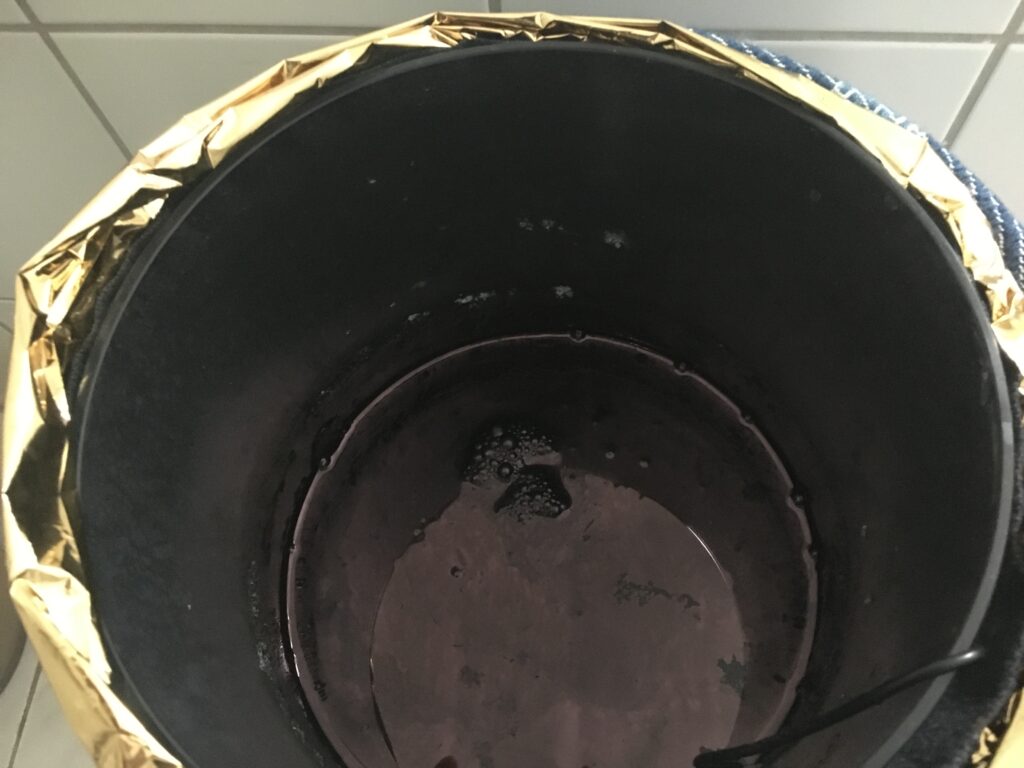
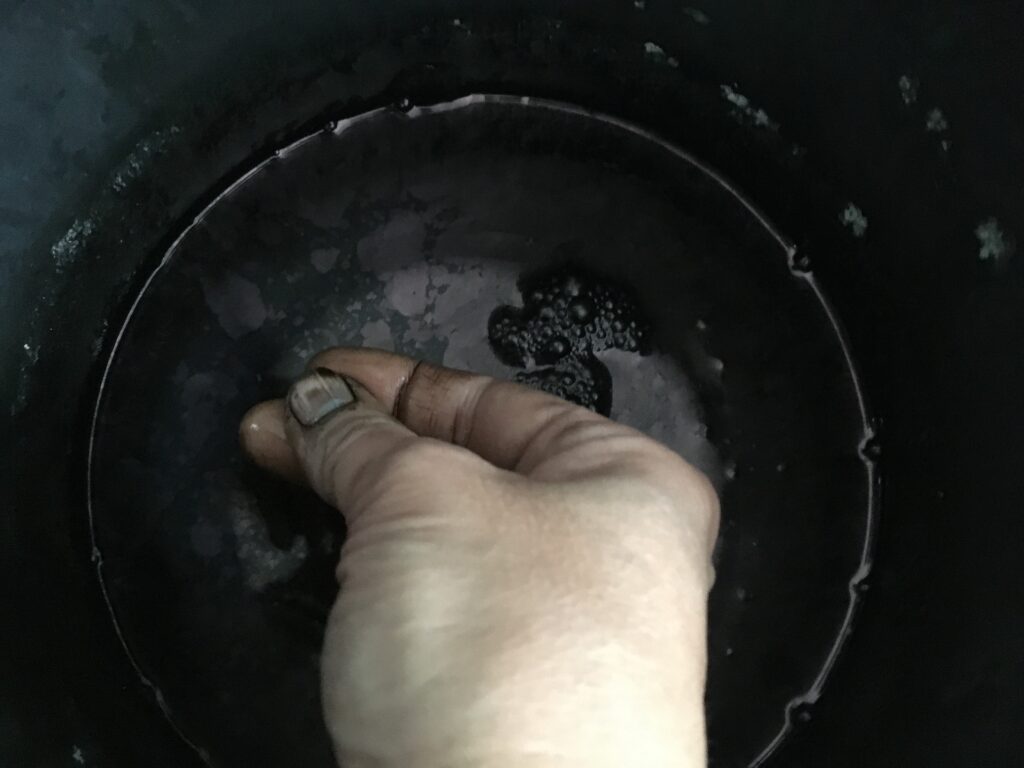
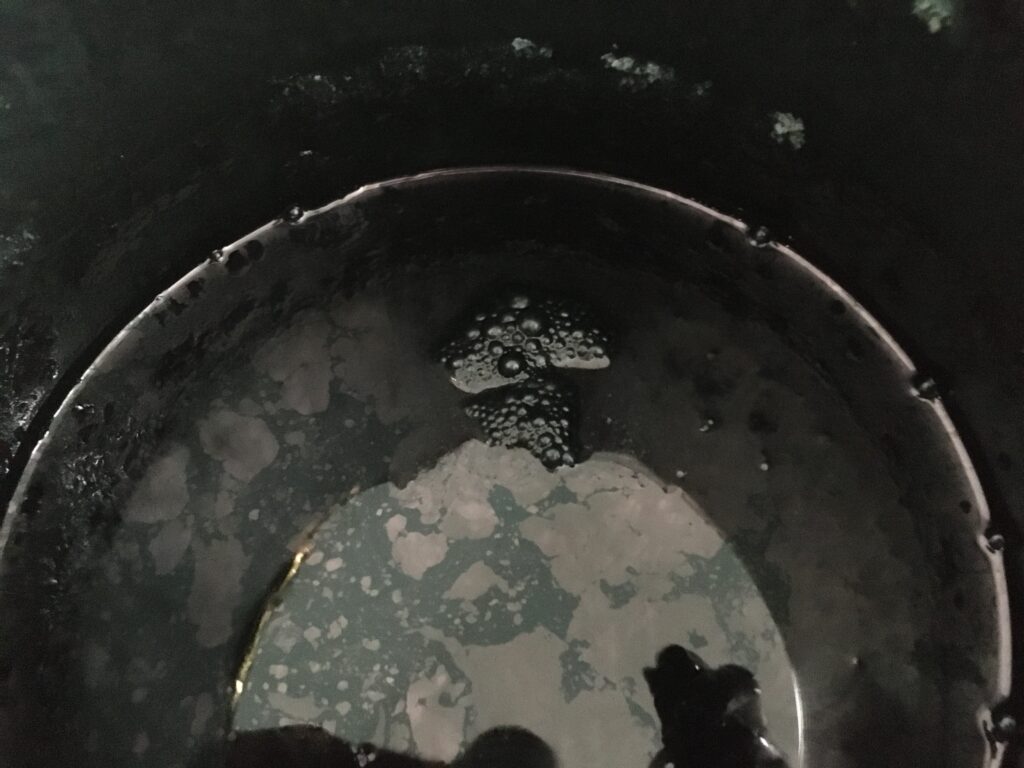
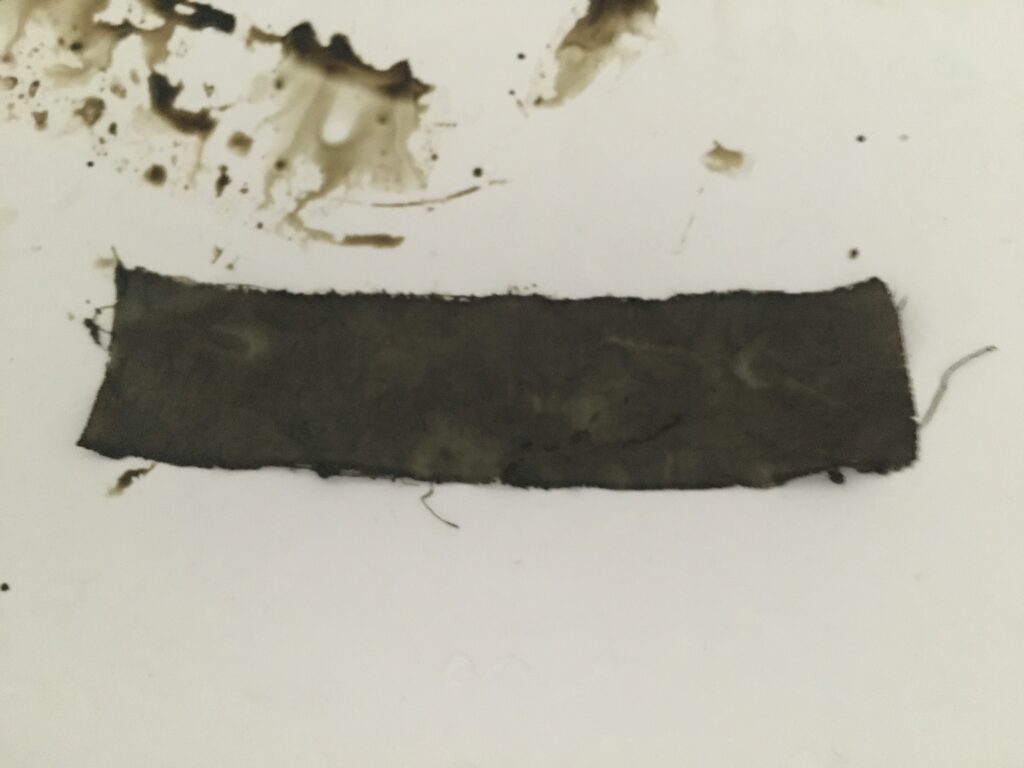
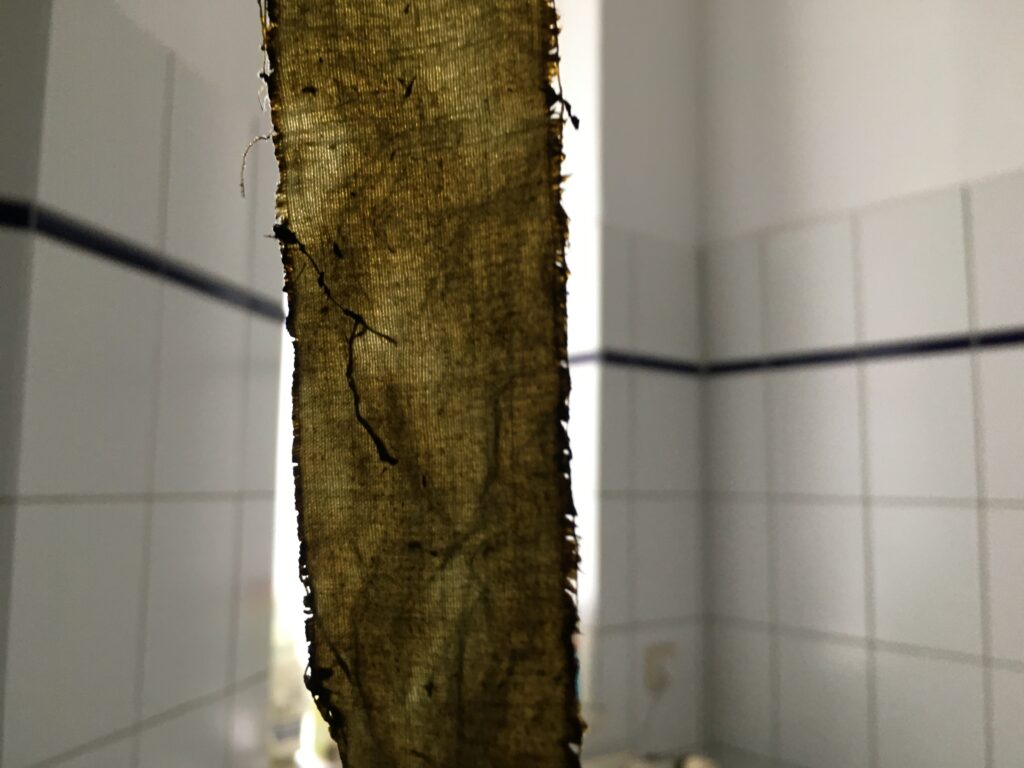
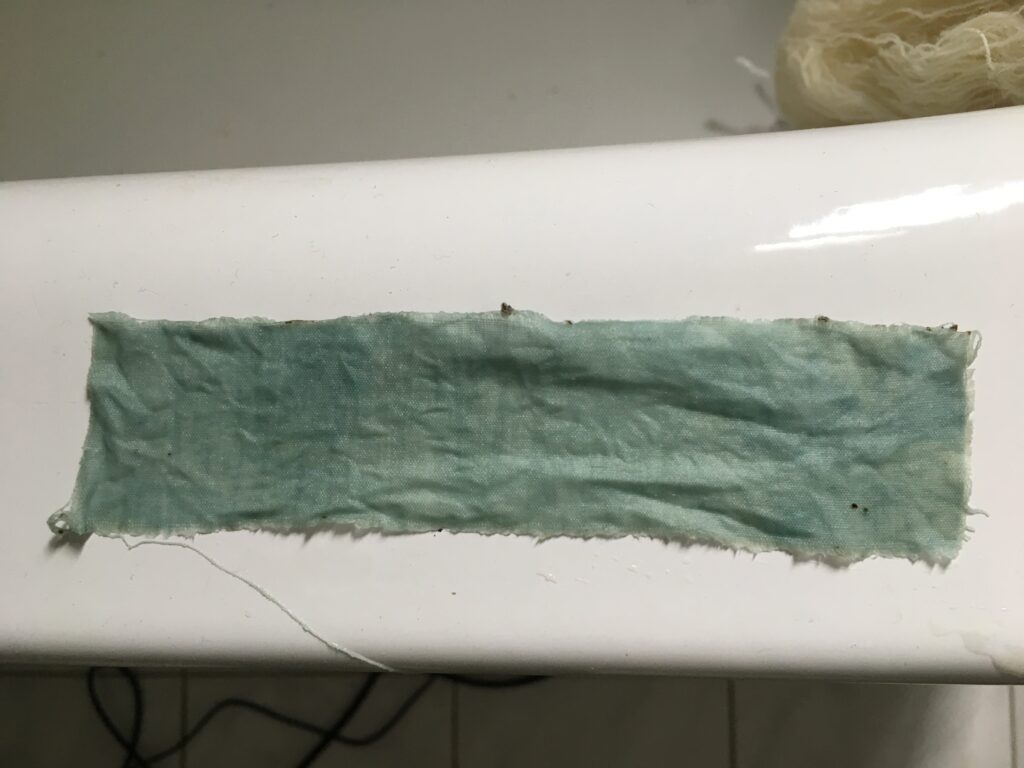
After this talk, I went back to my vat and made check as she suggested. It is a bit soapy (nuru-nuru), and now I do see the purple layer that breaks! I made the color strip test as she suggested, instead of holding it from the top, dip it with hand and massage it in the vat water, keep it 30sec outside and wash it off. It shows light blue. not bad. I will leave it as it is for today and I hope the purple layer grows more.
Day 46: This morning, I opened the vat lid and had to say “Beautiful!”. The bubbles from last night mixing (I tried the Melanie’s mixing method last night, made a nice big bubble flower in the middle) is still staying and a lot more purple layer is coming out.
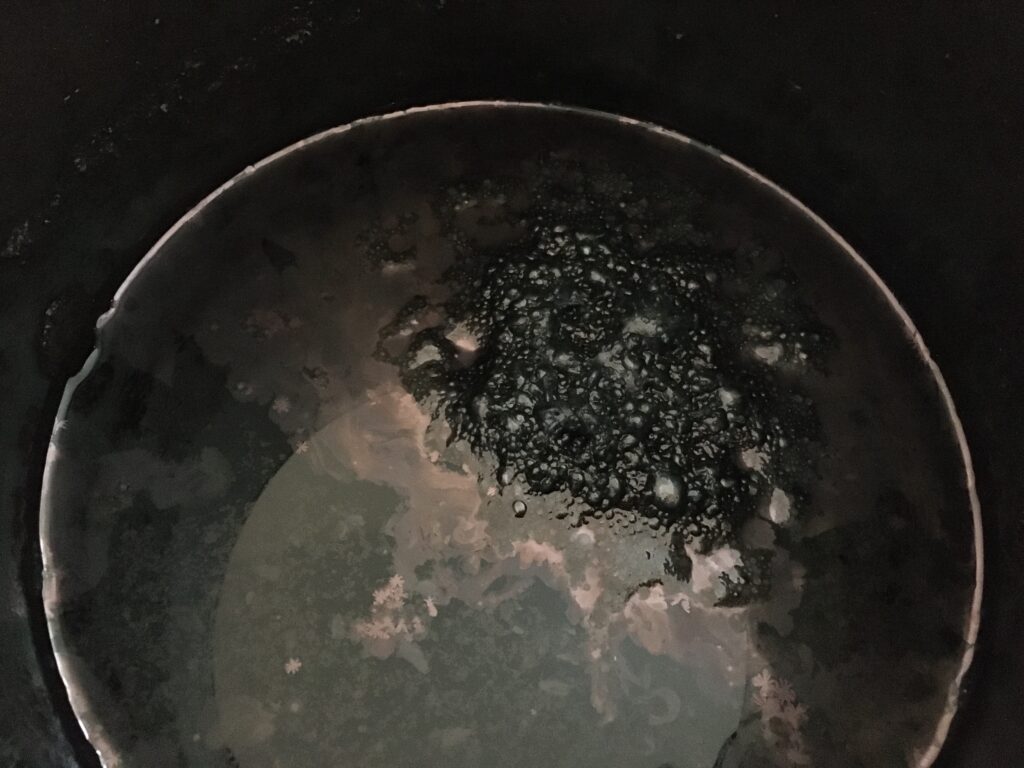
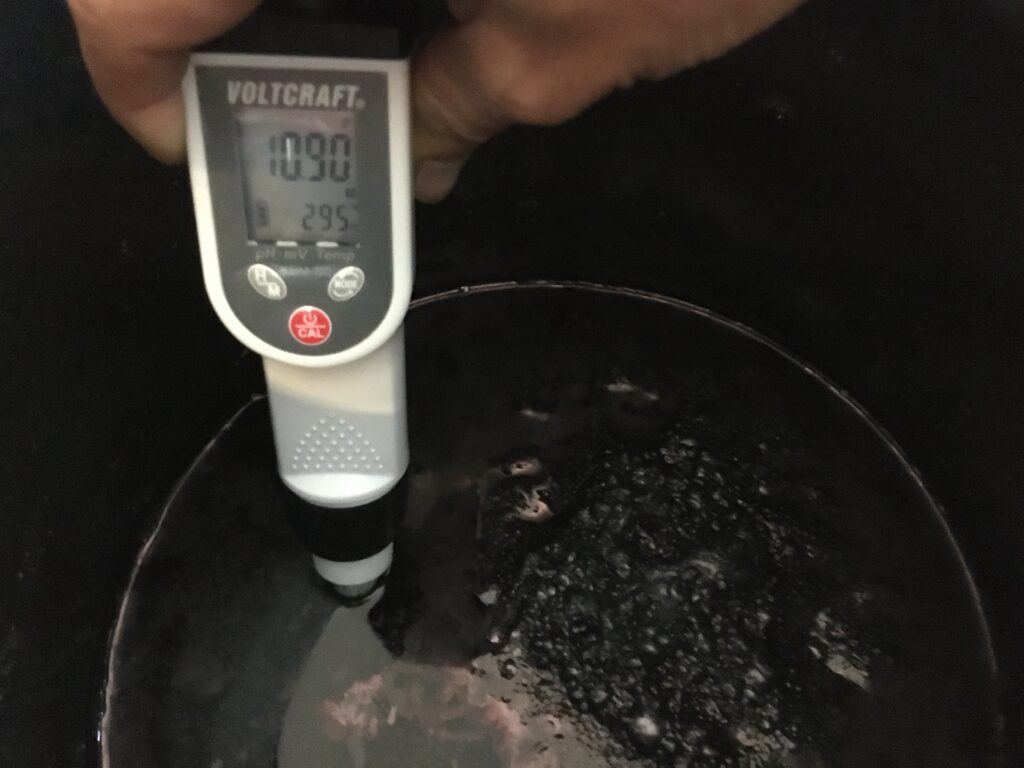
Here is the strip test. Actually not as blue as yesterday (hard to tell when it is wet). The PH is still 10.9, so I decide to wait one more day before I start adding ash water.
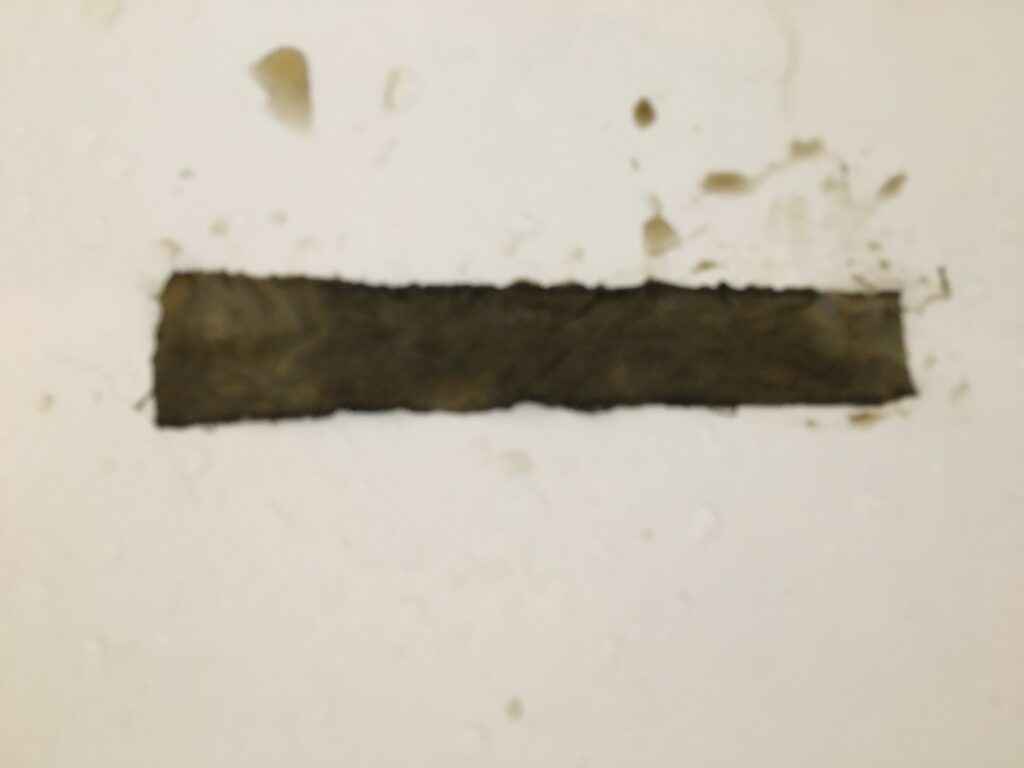
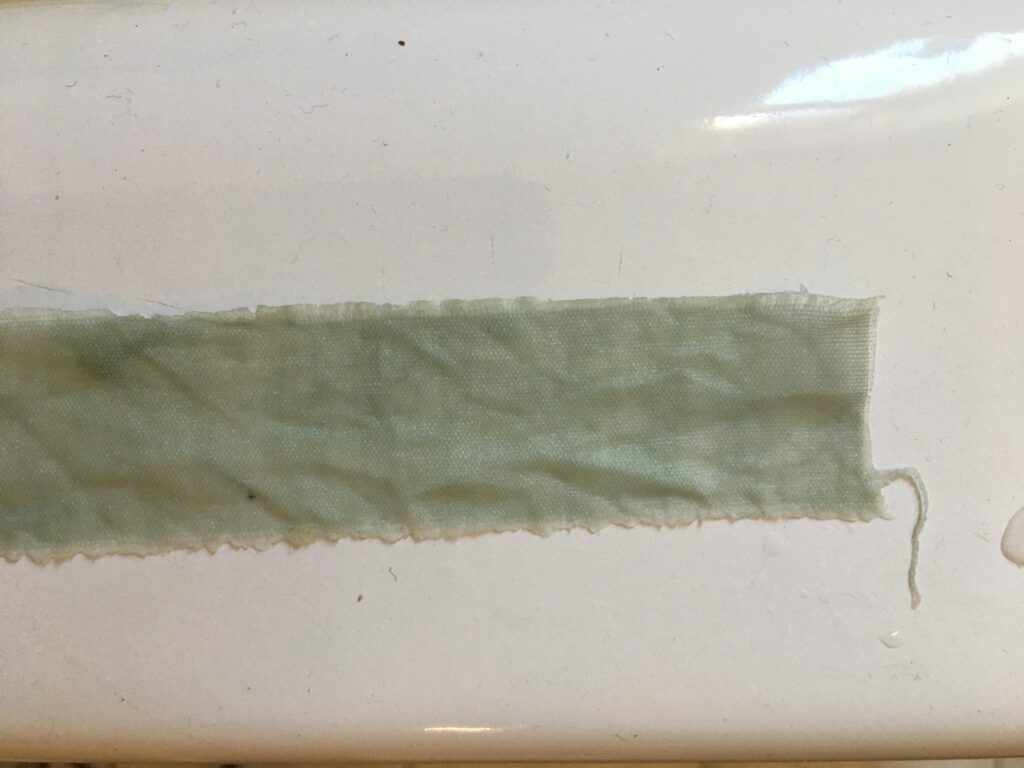
Melanie gave me this link to this paper by Miyoko Kawahito about making indigo dye bath. Unfortunately it is in Japanese, but maybe you read Japanese, or you can try reading with online translators. It gives really good details and scientific insights. I felt like I can situate my process and what I am experiencing with the vat. I also like that the author says “indigo makes you patient”. That is exactly what I am feeling.
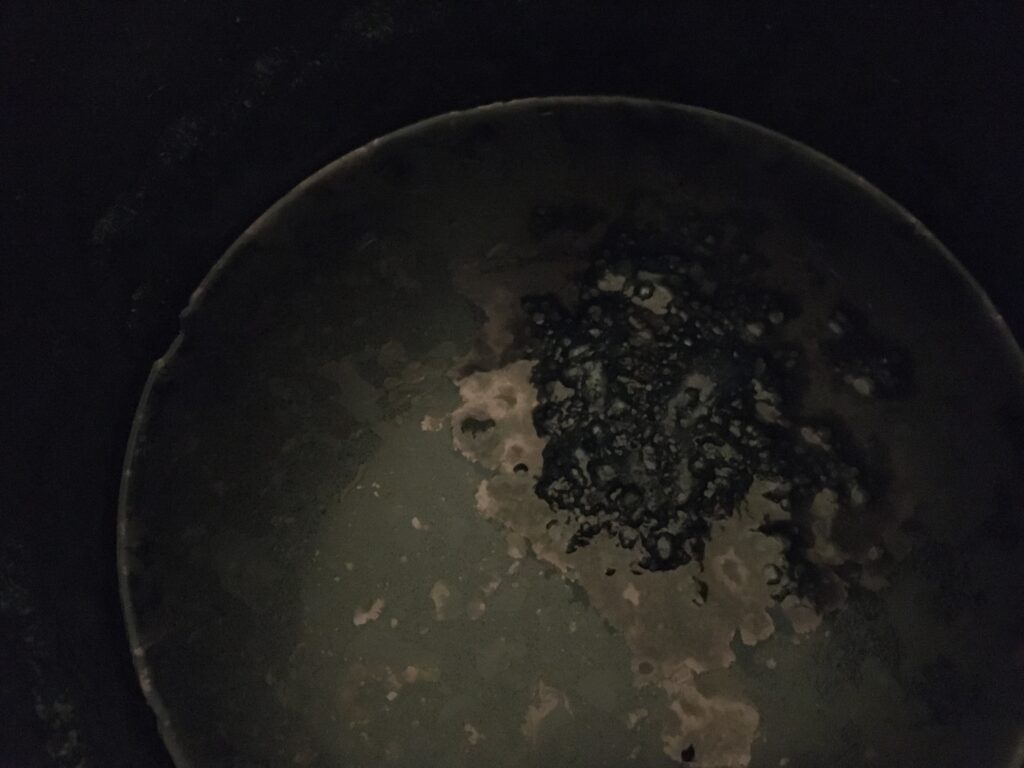
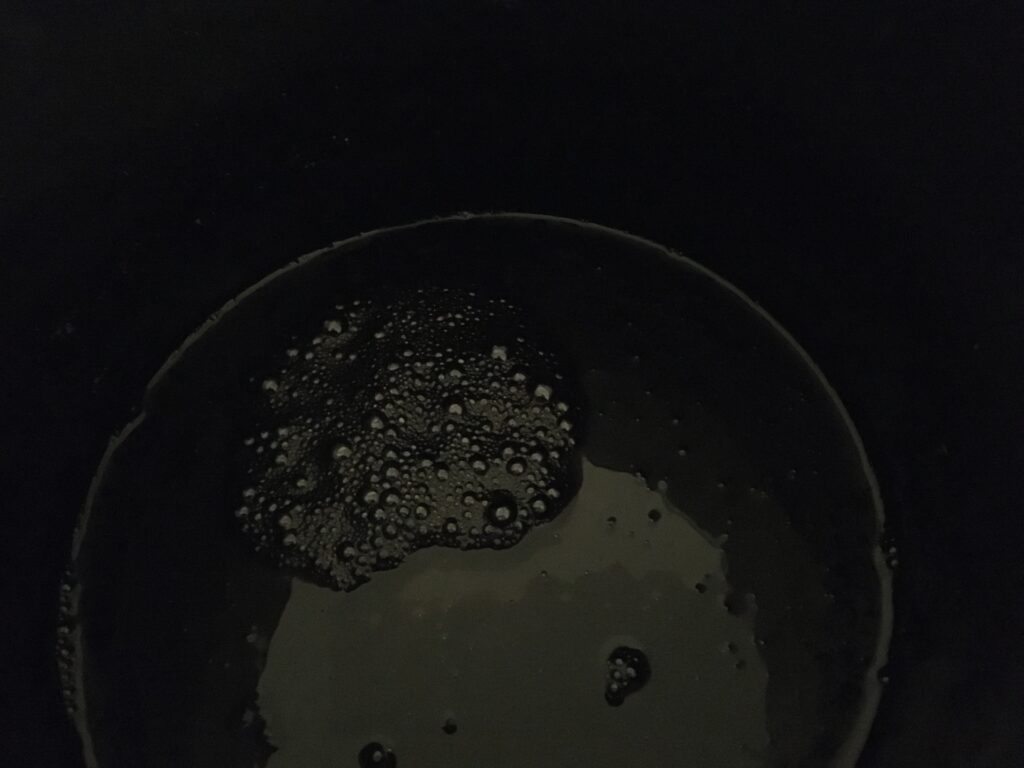
Photo from evening (9pm) before and after mixing. The purple layer is still there, but the mat layer is also taking over. After mixing, I see the bubbles forming, but they are also bursting quite quickly, behaving different compare to yesterday.
Day 47: I had a bad feeling last night, and it was the sign of vat turning down again. This morning, the surface looks very quiet. It has a strange dusty texture to it. Bubbles from yesterday is almost all gone. PH is still 10.6 and it feels still soapy when touching. Not sure if I should add ca(oh)2. I will wait until afternoon and check PH again. Color test shows no color.
I will not be doing kasaage (increasing the vat liquid by adding ash water) today.
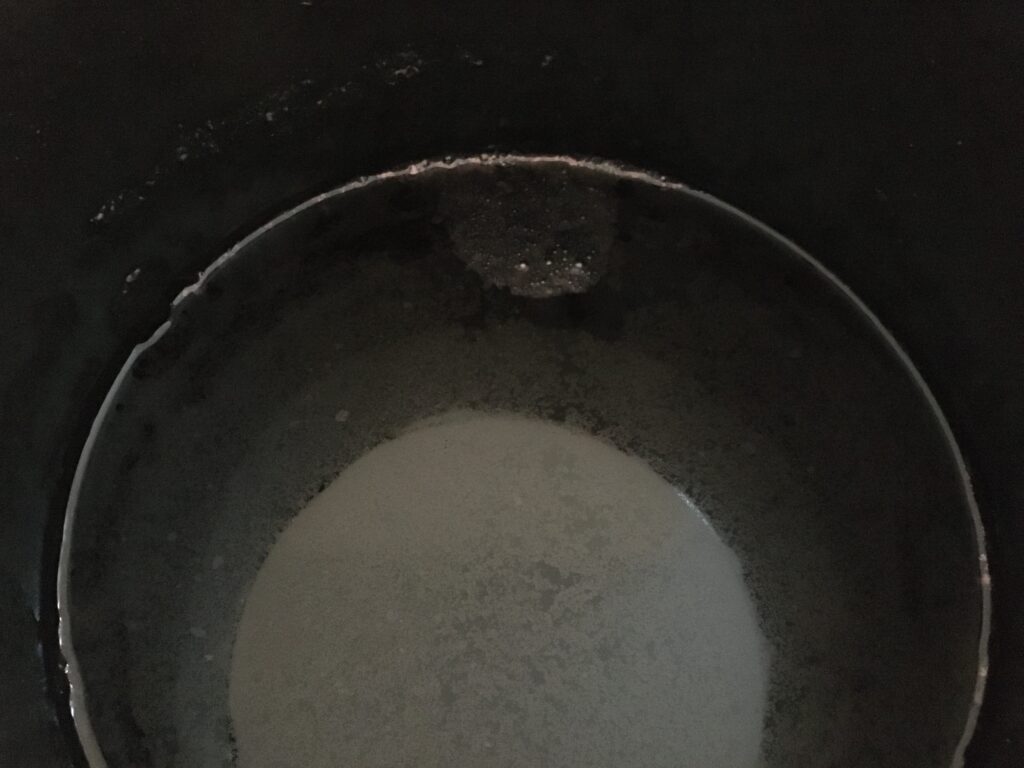
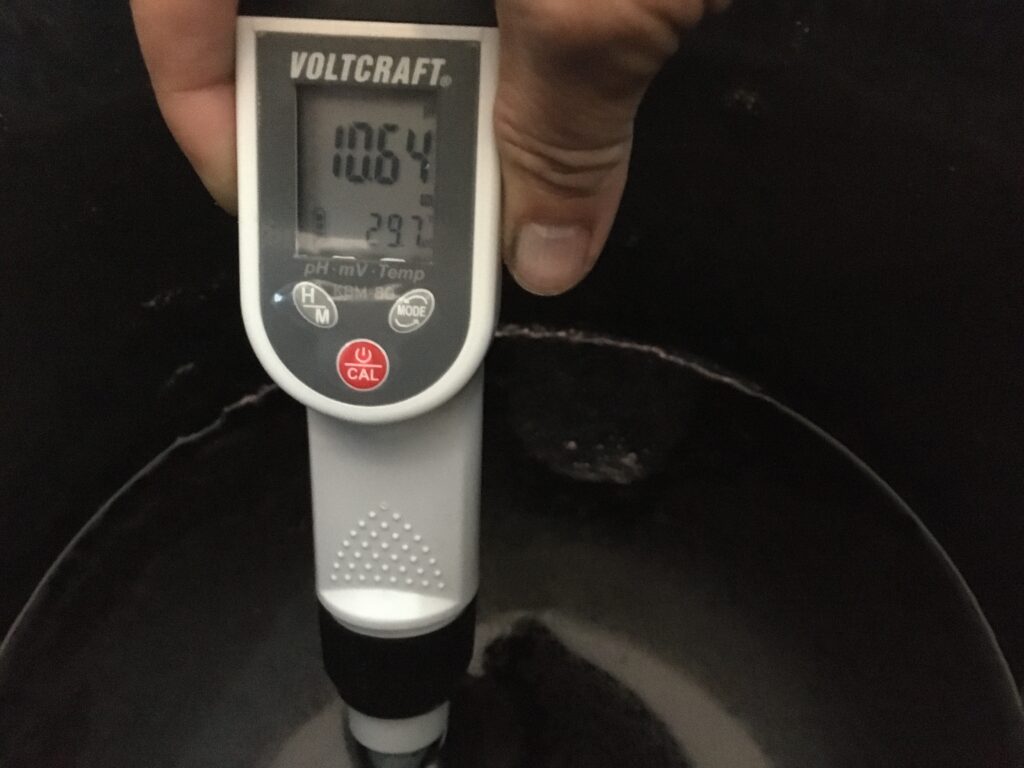
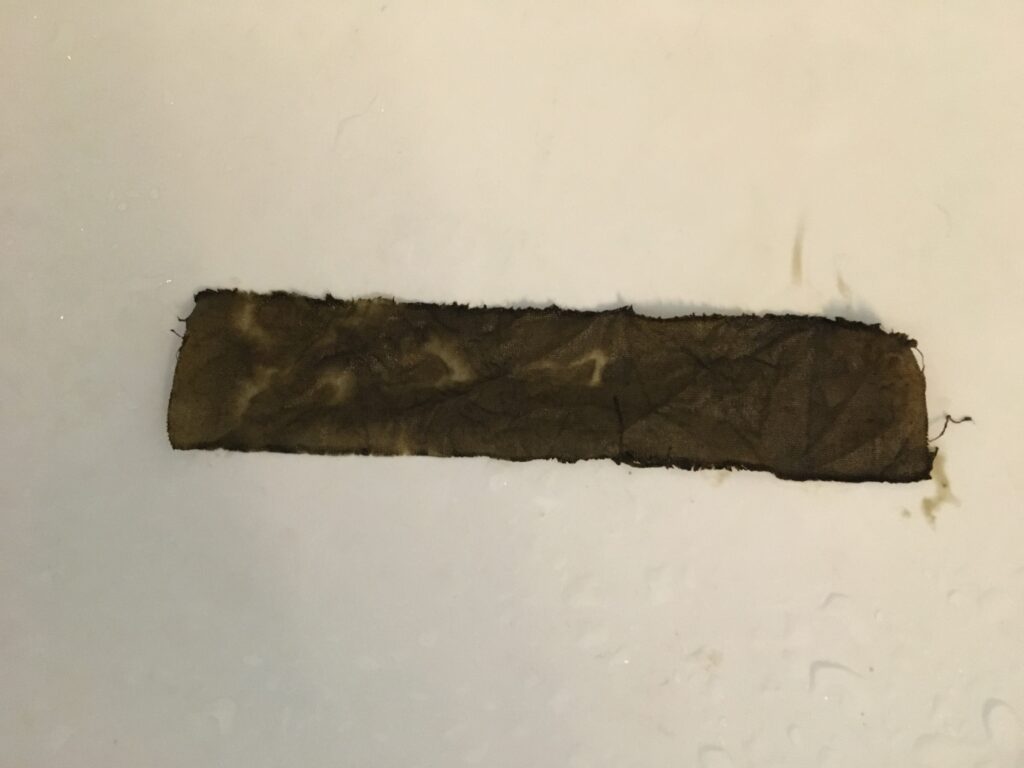
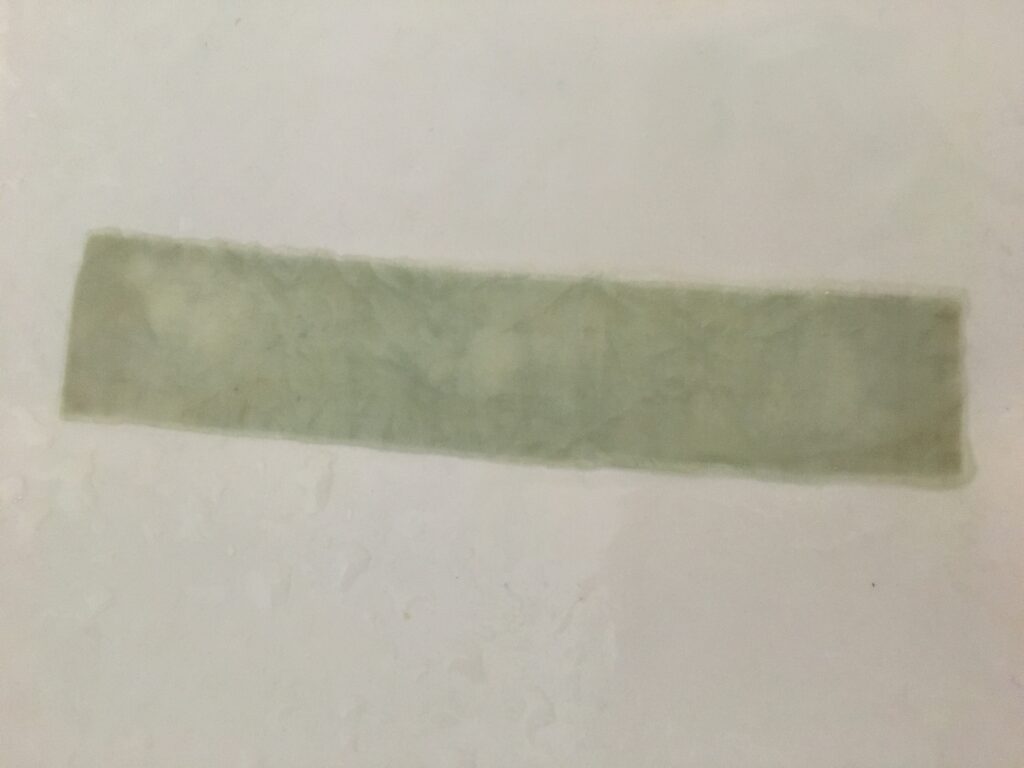
At 15:00, I checked the vat, and it looks like something is growing on the surface… is it a good sign?! or a bad sign??? not sure.. It does not smell bad. I leave it as it is.
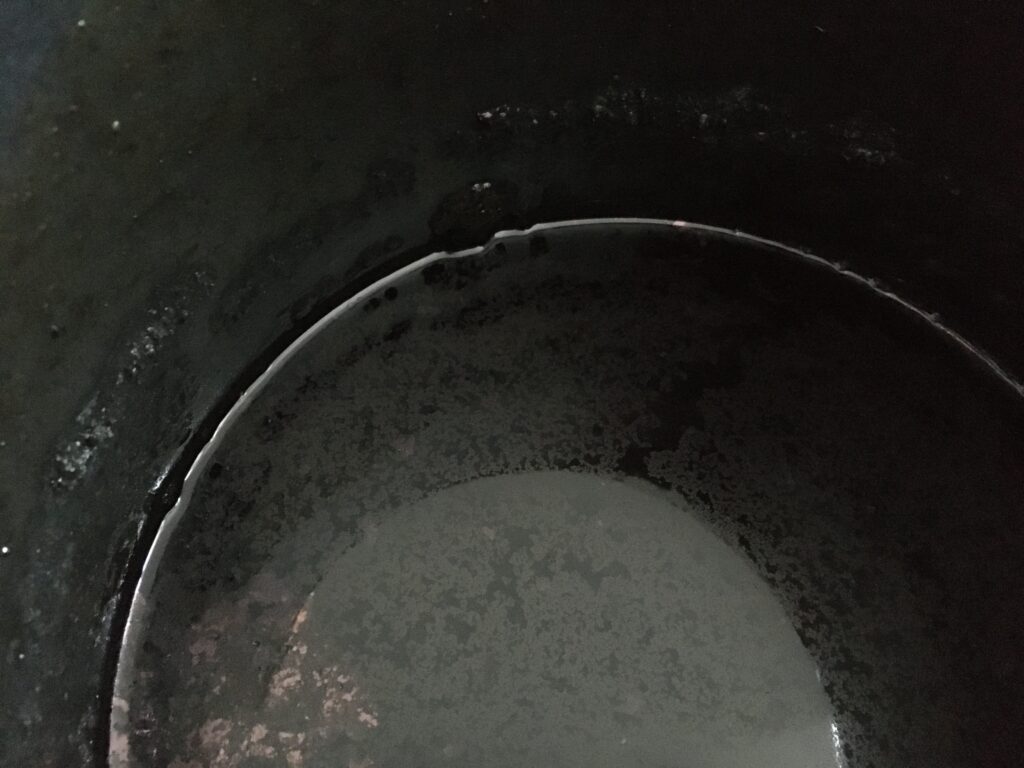
In the evening, it still has the dusty surface. It looks like some kind of colony is starting on the surface. PH is now 10.4.

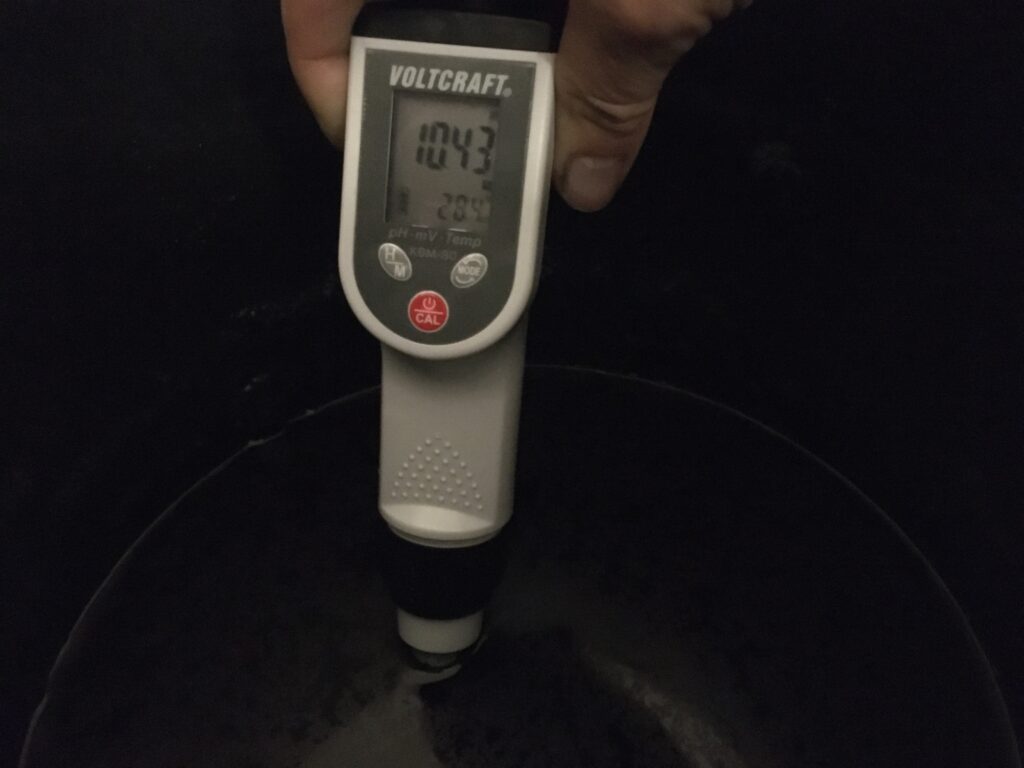
I am afraid some other bacteria is starting to grow. There were already the mat layer the last days, maybe it is coming back. I think it is time to higher the PH. According to one of the video tutorial, 1g ca(oh)2 raises 1 PH count for 1L. I add 1 spoon (~5g) to raise 10L vat for PH0.5. It will not behave exactly, but it gives me a good reference. After mixing, There are bubbles, but they are quickly disappearing.
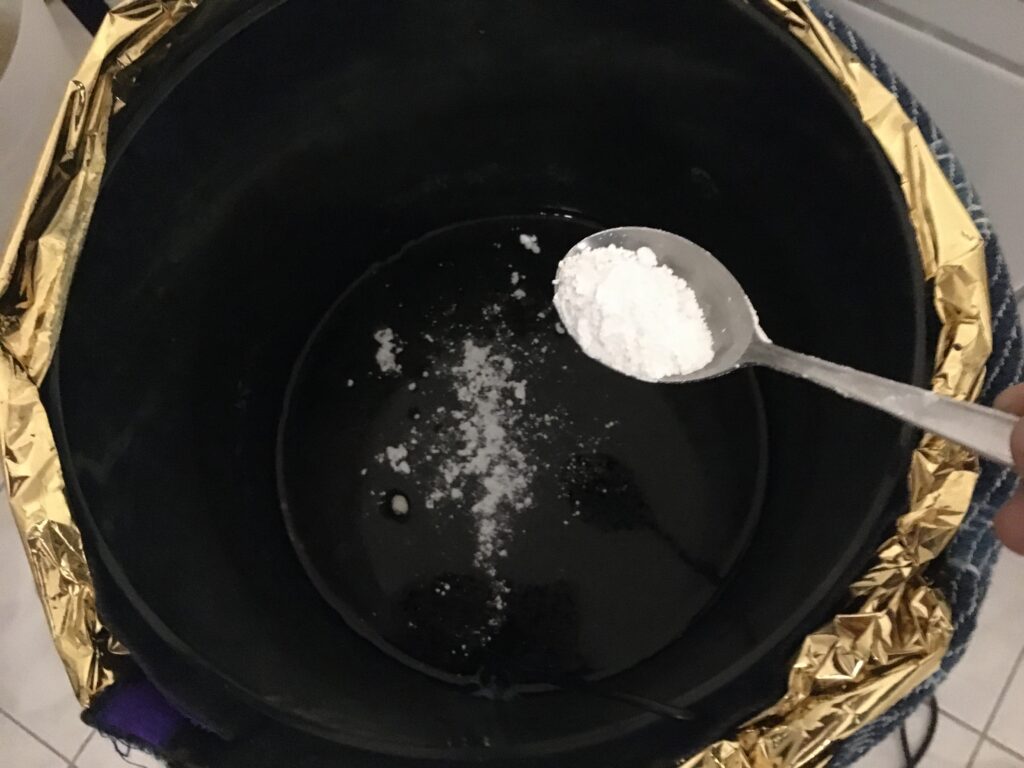
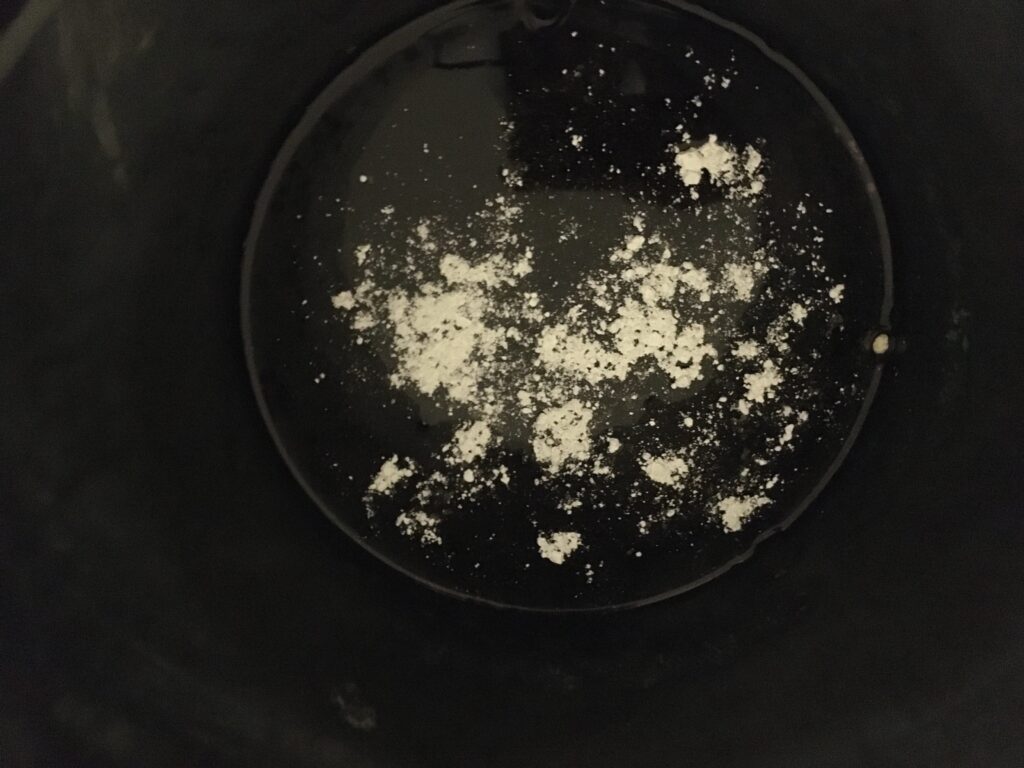
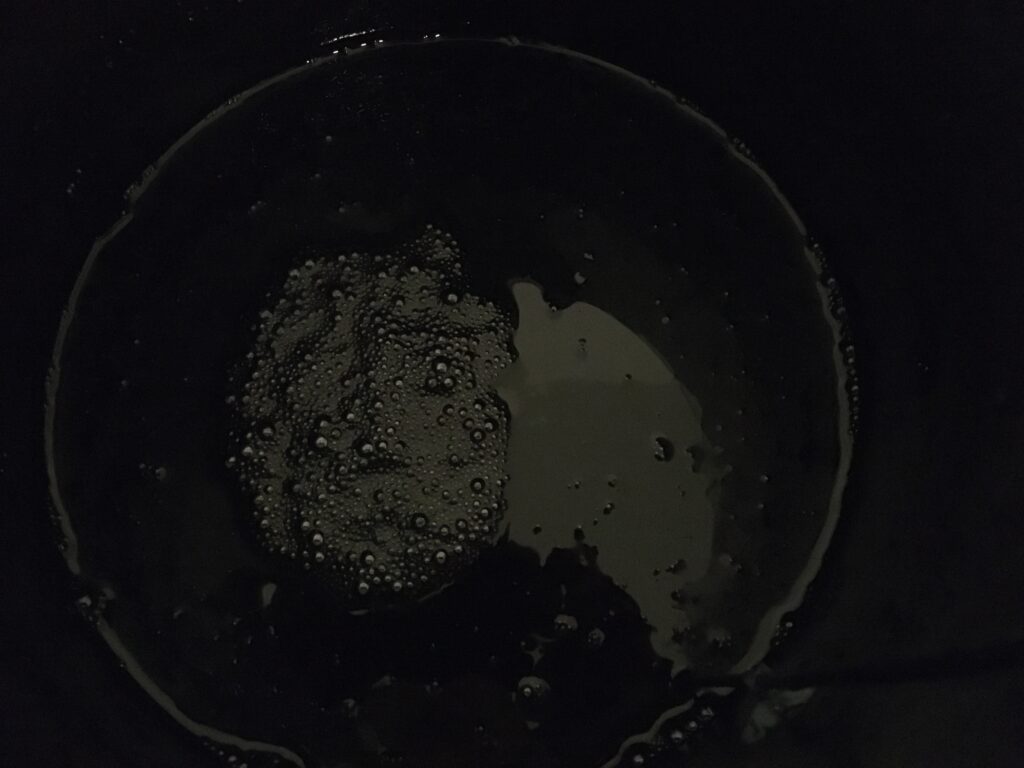
Day48: As expected, the surface is silent today. But the dusty colony is not there anymore. It smells more like ammonia today. PH is higher now. I will wait few days to see if it develops back into good state. Color test shows almost no color.
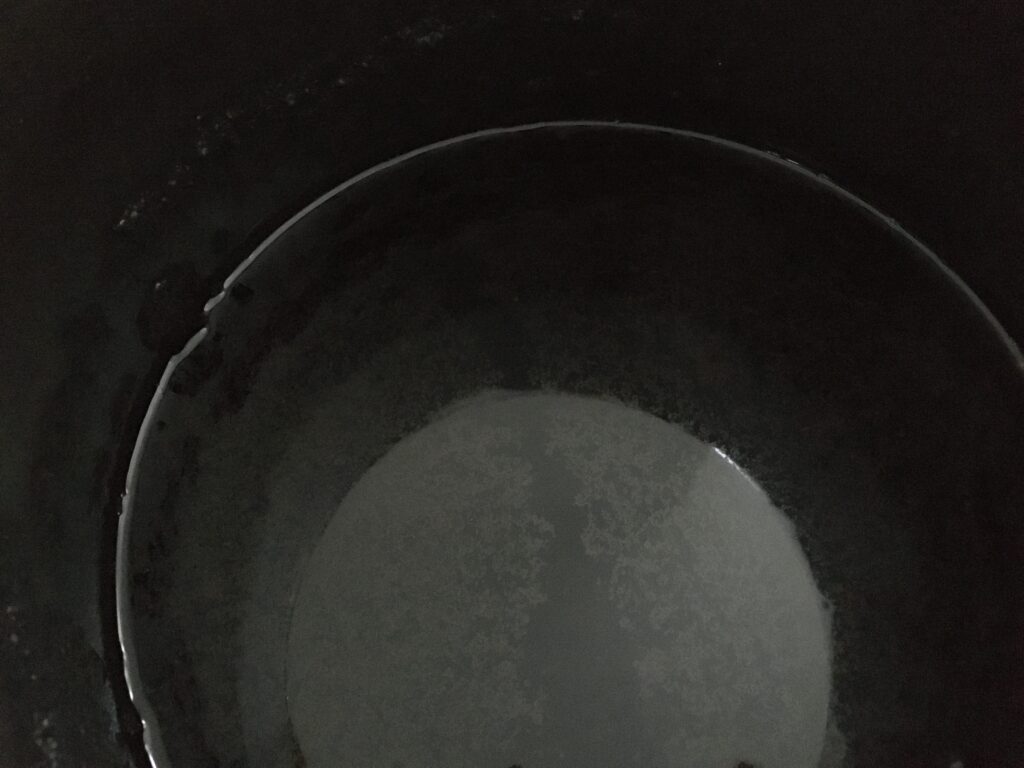
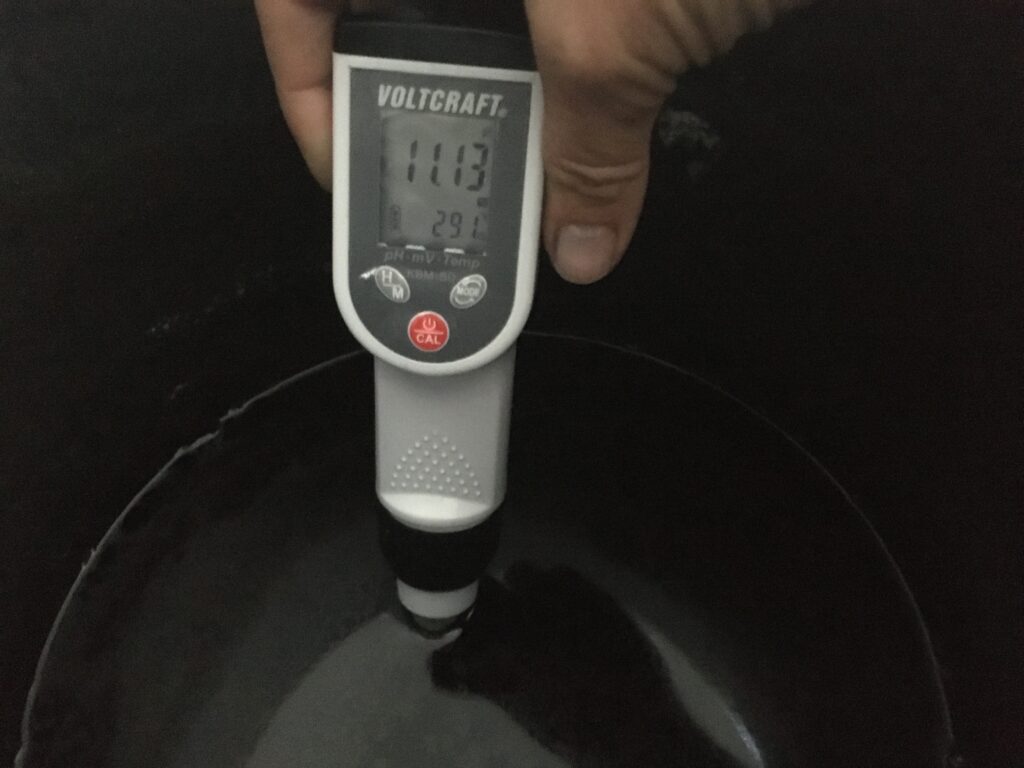
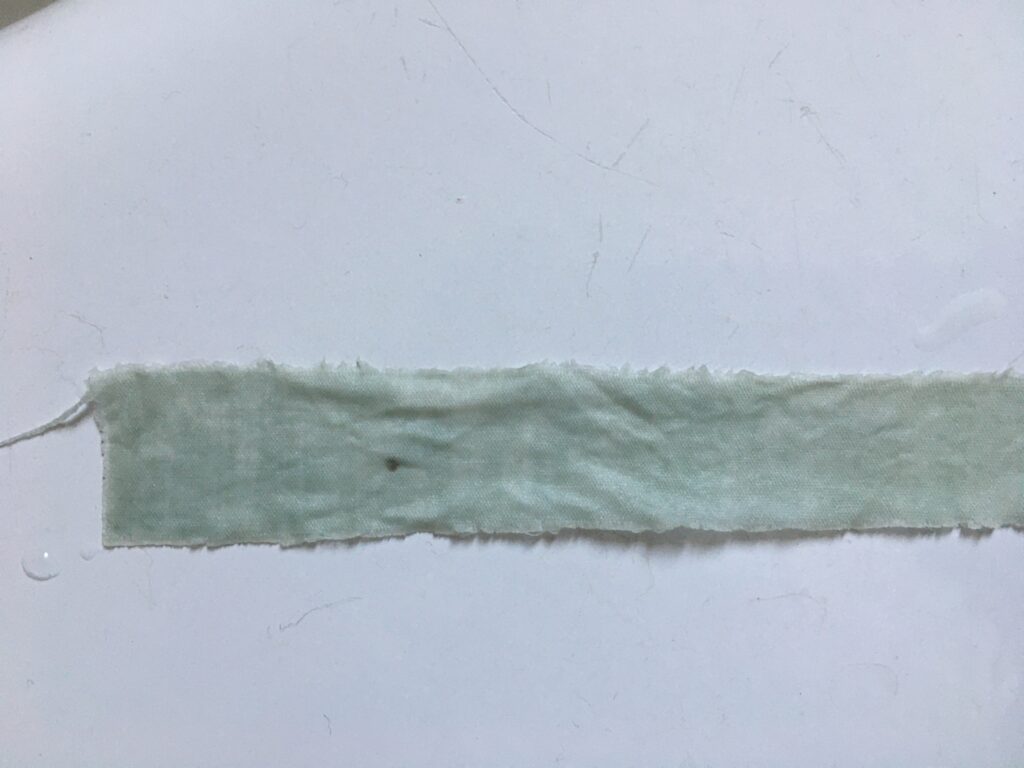
Day 49: Still dusty things on surface. It looks like some kind of colony. Not sure if this is a good thing or bad thing. Smell is ok, like mild fermentation smell. PH is still around 11. Color test shows almost no color. As I am afraid this dusty colony is from bacteria I do not want to have in vat, I decided to mix it now to disturb this bacteria and promote more air into the liquid. The last photo shows after mixing. The bubbles are disappearing quickly. I mixed it one more time in the evening.
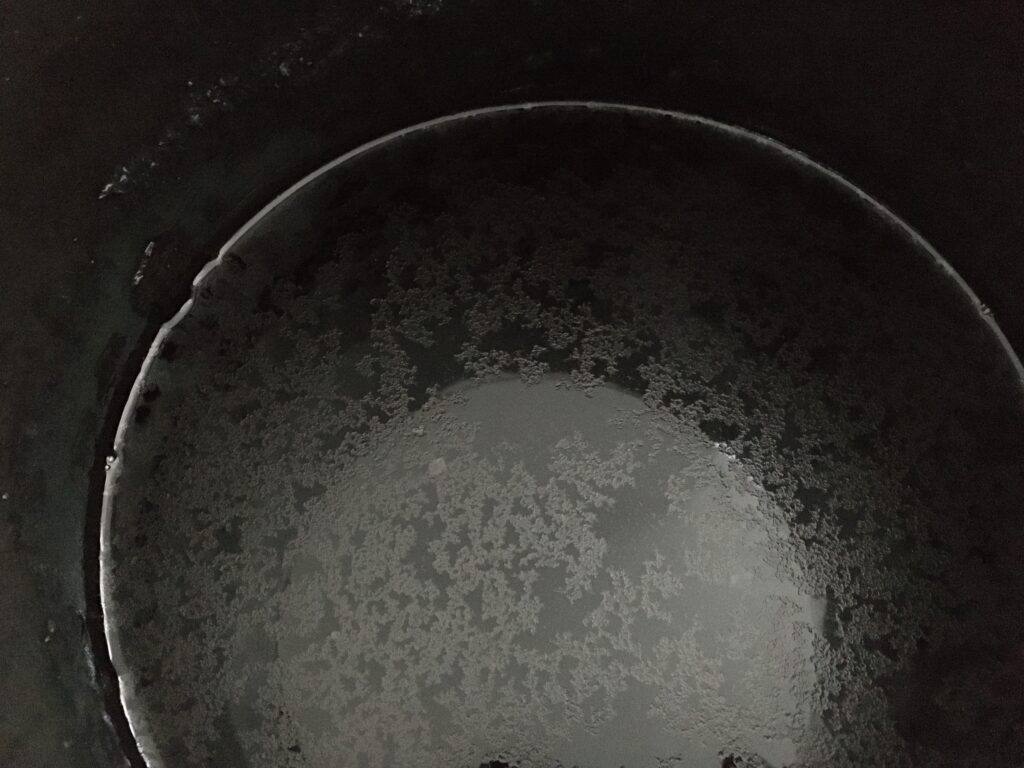
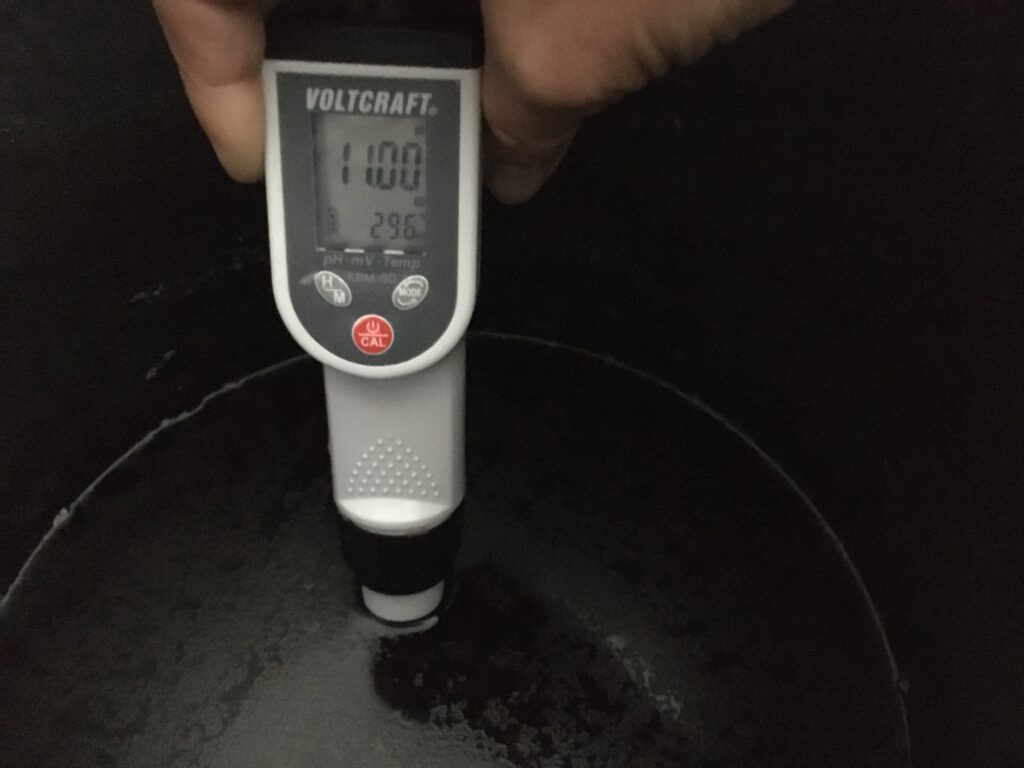
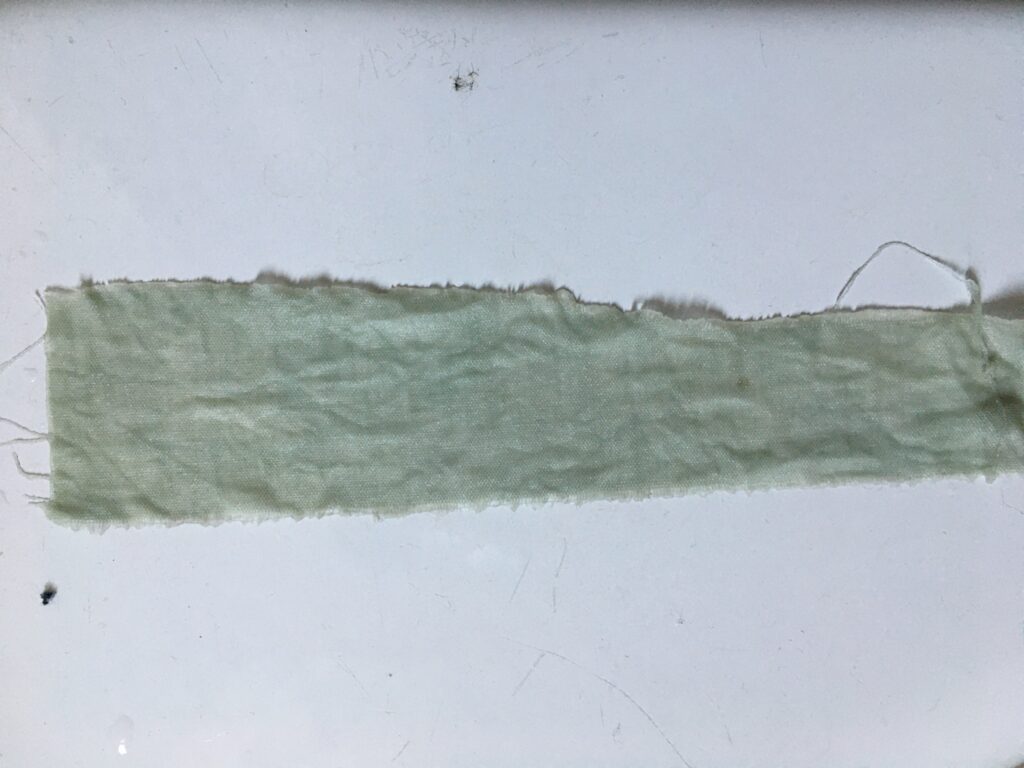
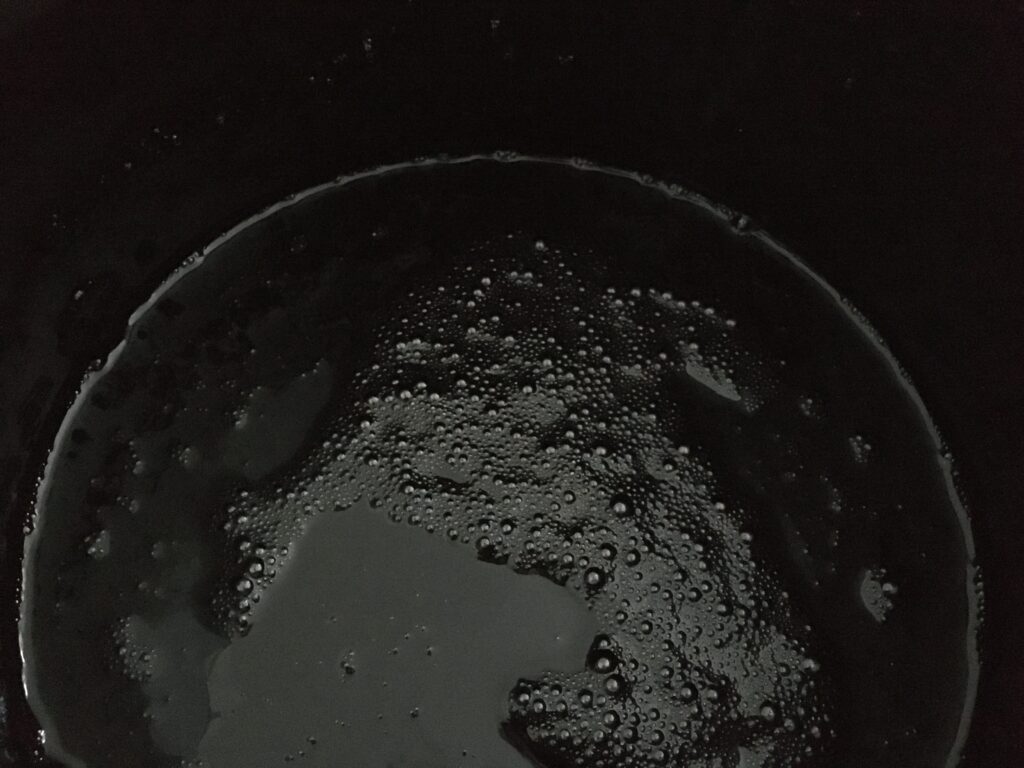
Day 50: Again dusty thing. not as strong. I decided to leave it silent for today. no mixing.
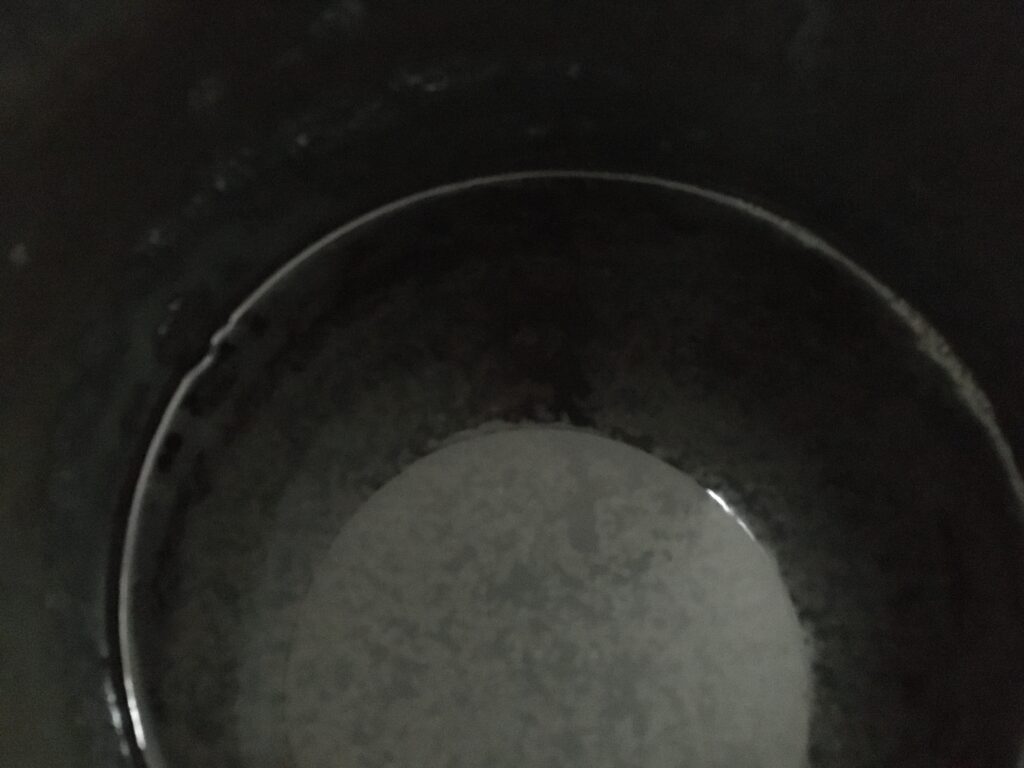
Day 51: It is super sunny today and the room is very bright. This is why the photo looks a bit different. The dusty colony is there again. It smells like indigo fermentation, very mild smell. Maybe it is a good bacteria. PH is now down to 10.3. Whatever it is, it can survive PH11 and it lowers PH (meaning it is producing acid from its activity?). Today, I decided to mix it once. No color test.
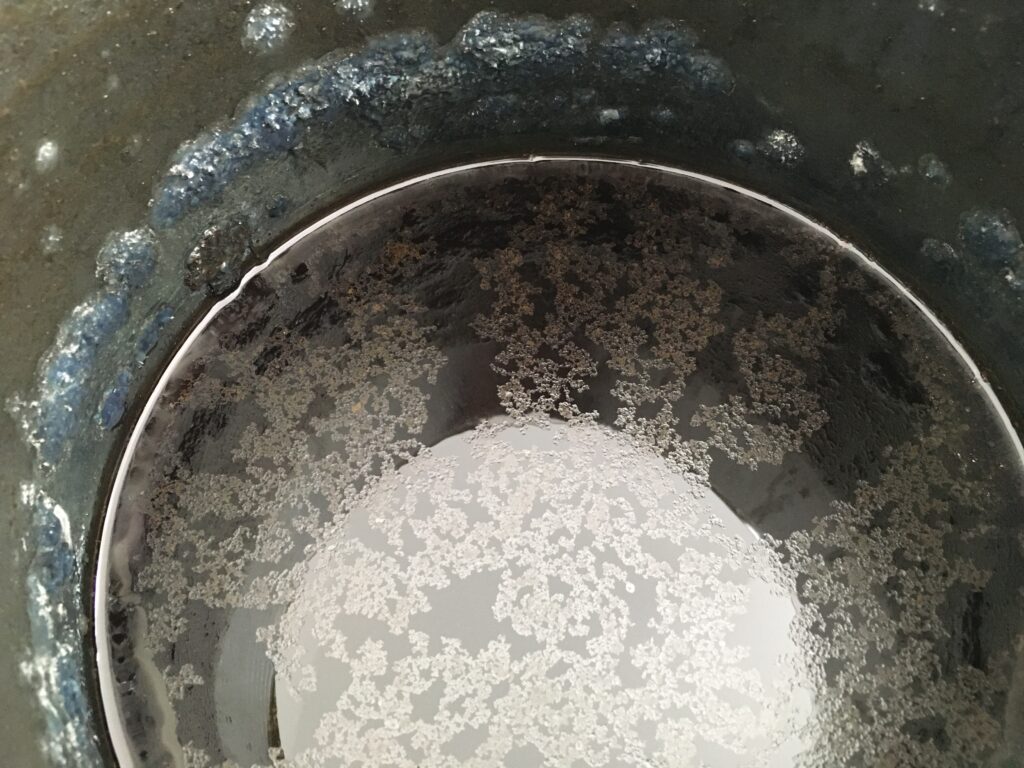
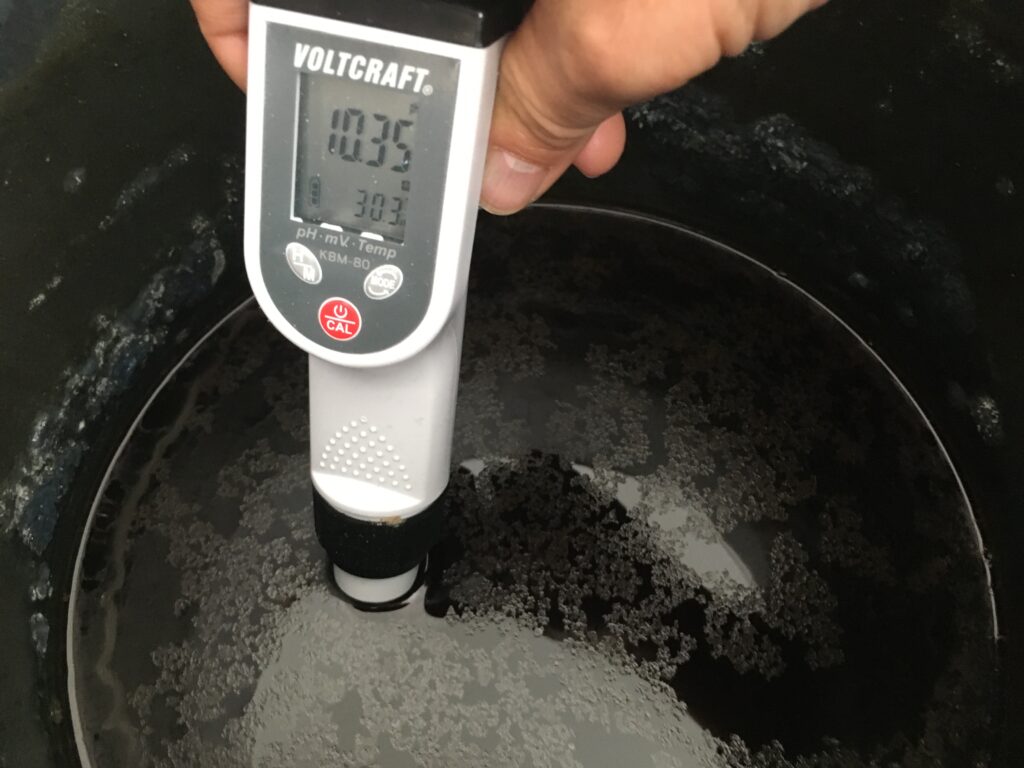
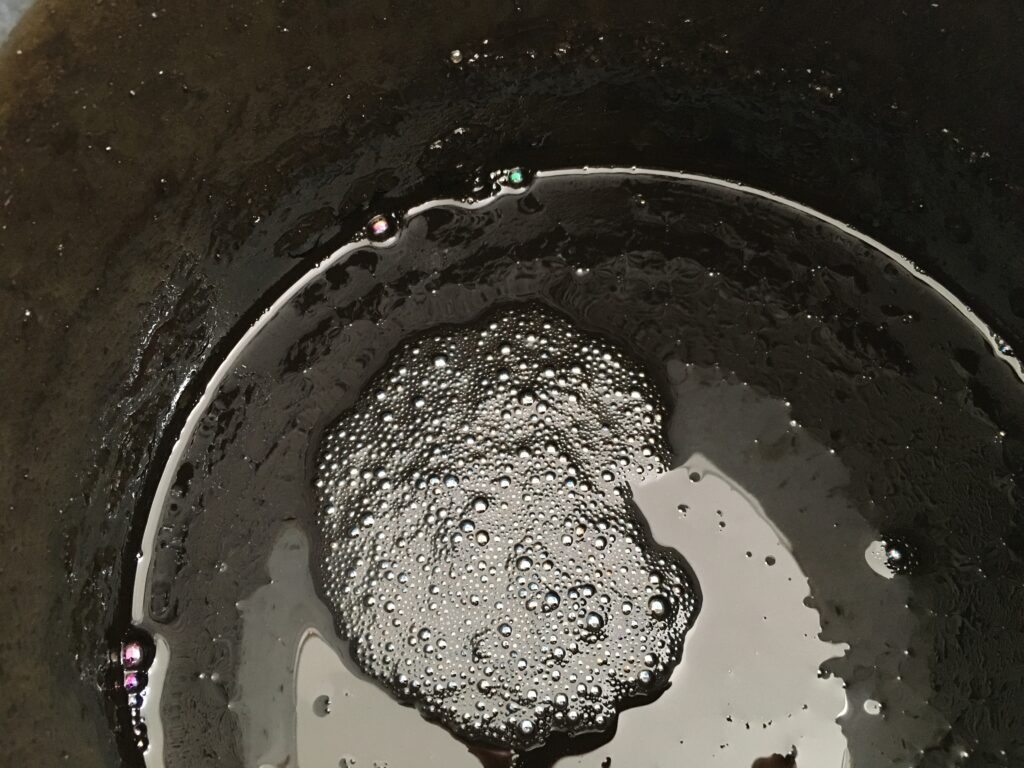
Day 52: Today, it looks very different. No more dusty colony. Very silent surface, but I see feint purple color patches. Maybe it is turning into good direction again? PH is again a little low, 10.2. For now I leave it as it is. Color test shows slight blue. Smell is still mild fermentation smell. no ammonia.
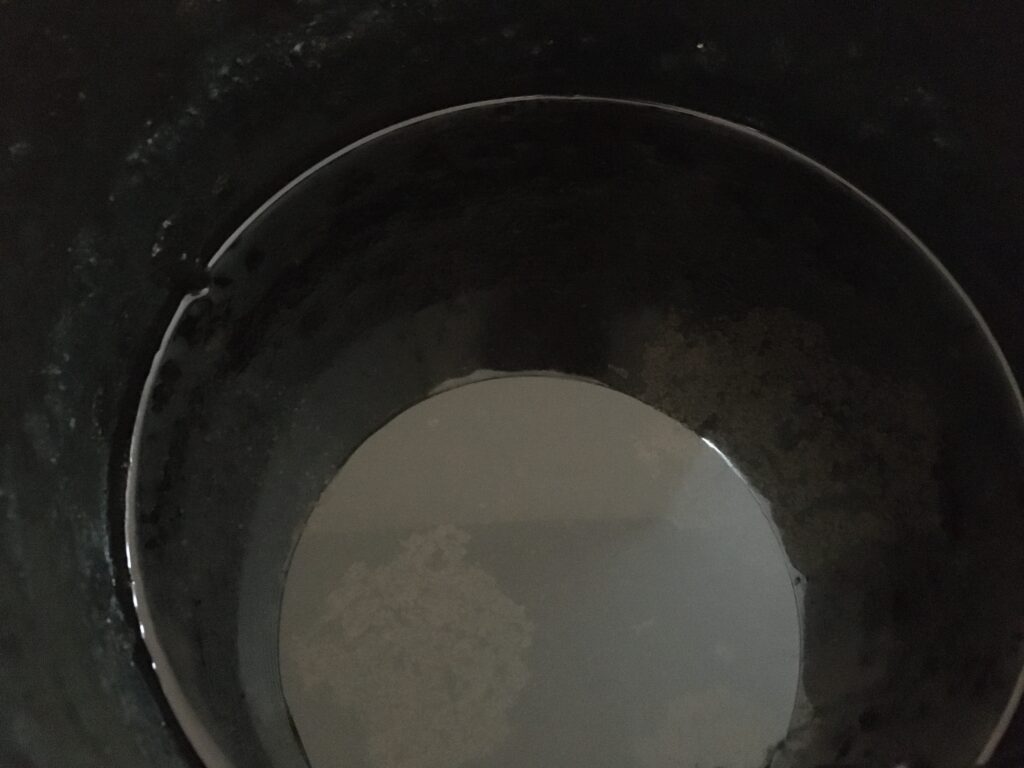
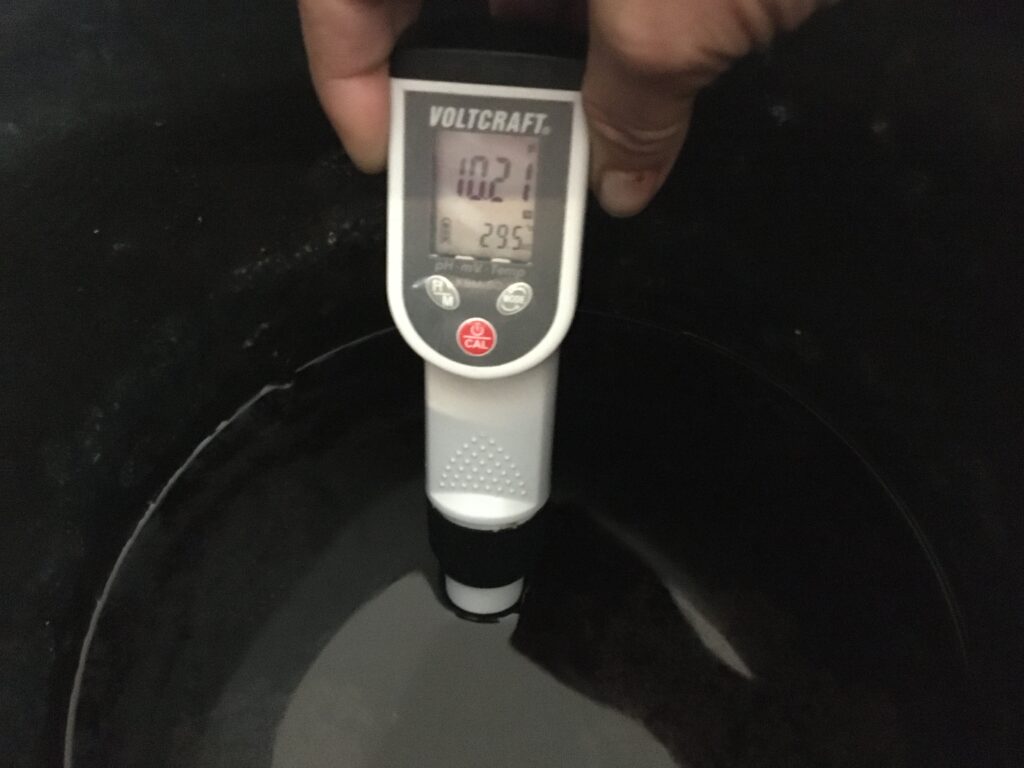
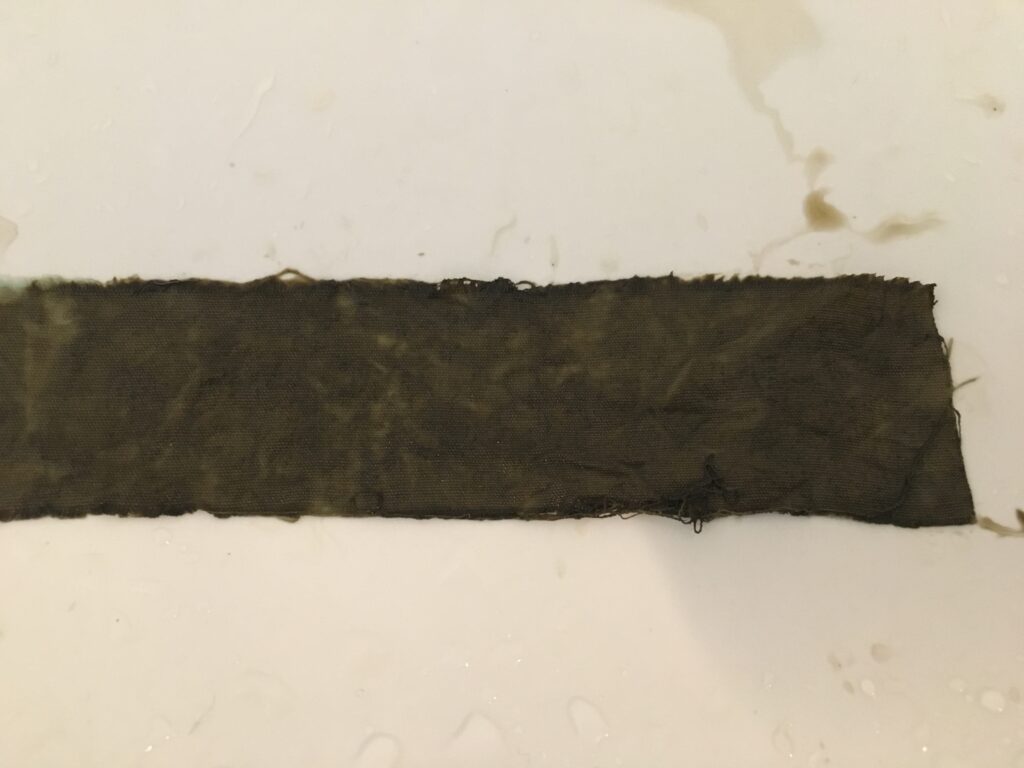
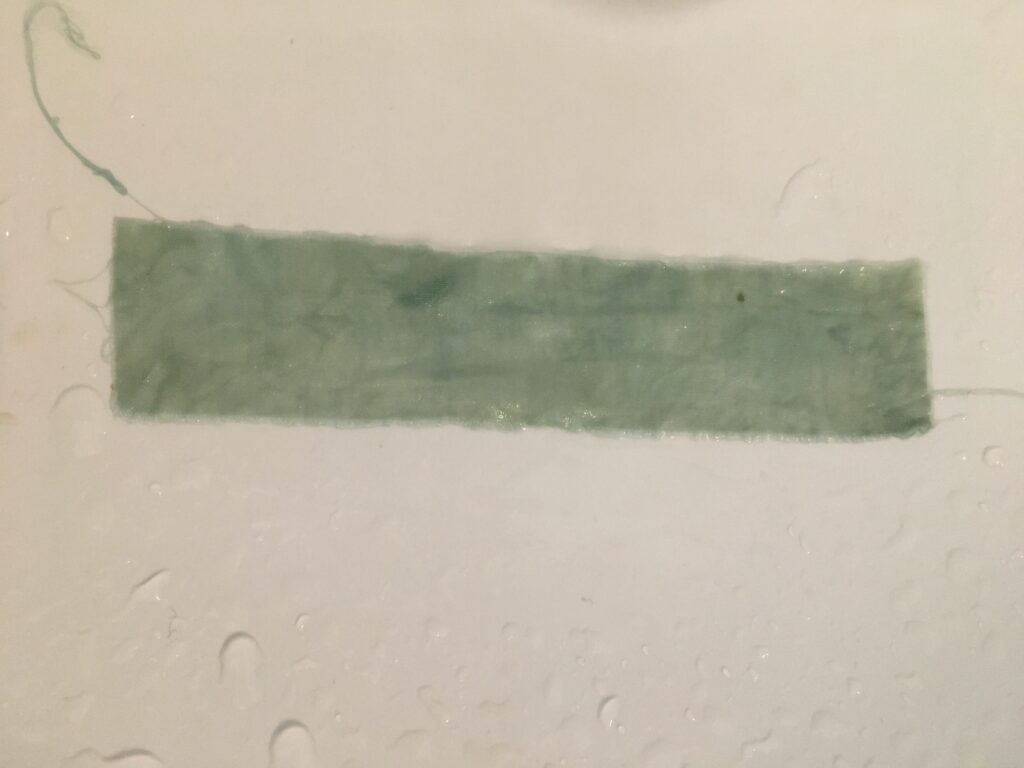
mixed in the evening. bubbles are still disappearing quickly.
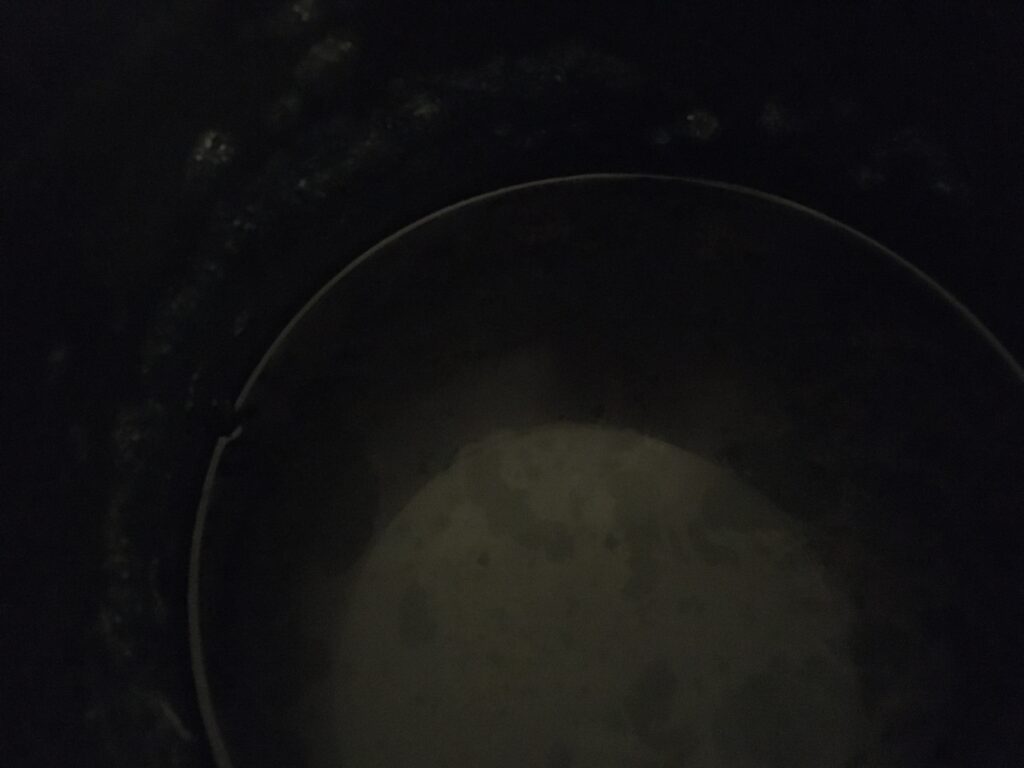
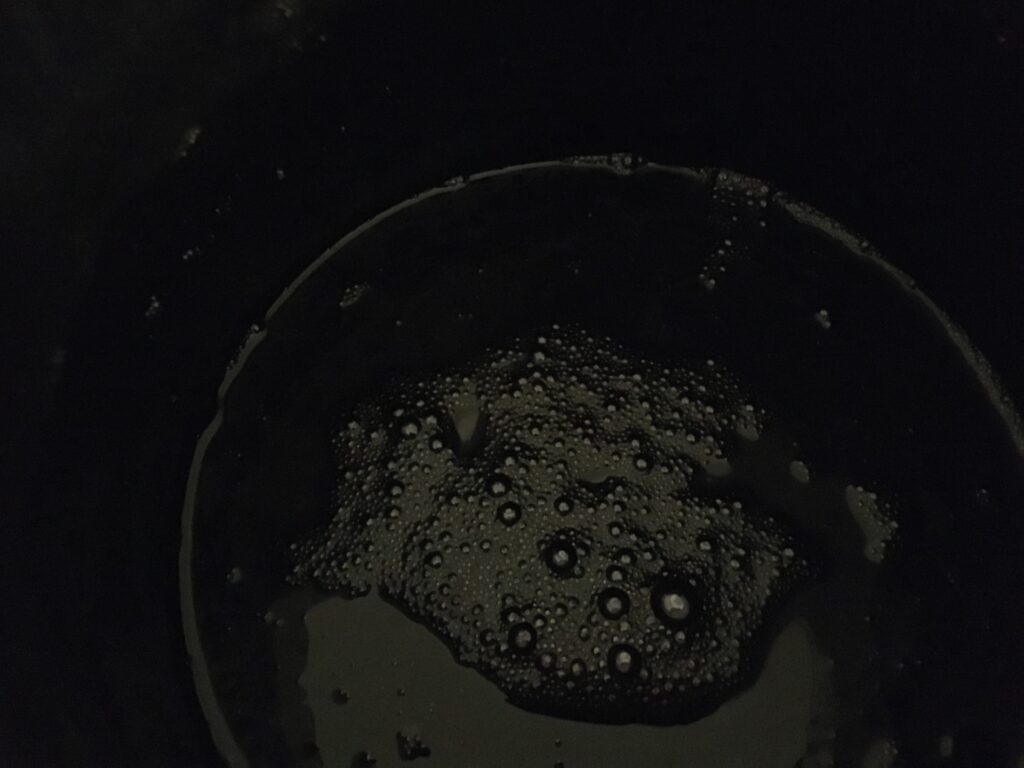
Day 53: The surface look very quiet, but also a bit creamier/thicker today. PH is still around 10.2. When I opened the lid, it smelled sharp ammonia smell. The liquid feels a bit like soap (nurunuru) but not very thick. It is quite warm, and it is a very nice feeling to put my fingers in, like a mini bathtub. Surprisingly the color test hows some color. I decide to do 2 times mix today, so I do the morning mix after the color test. When mixing, it gives a bit like sewage smell. not very pleasant. Bubbles are disappearing, but not as quick.
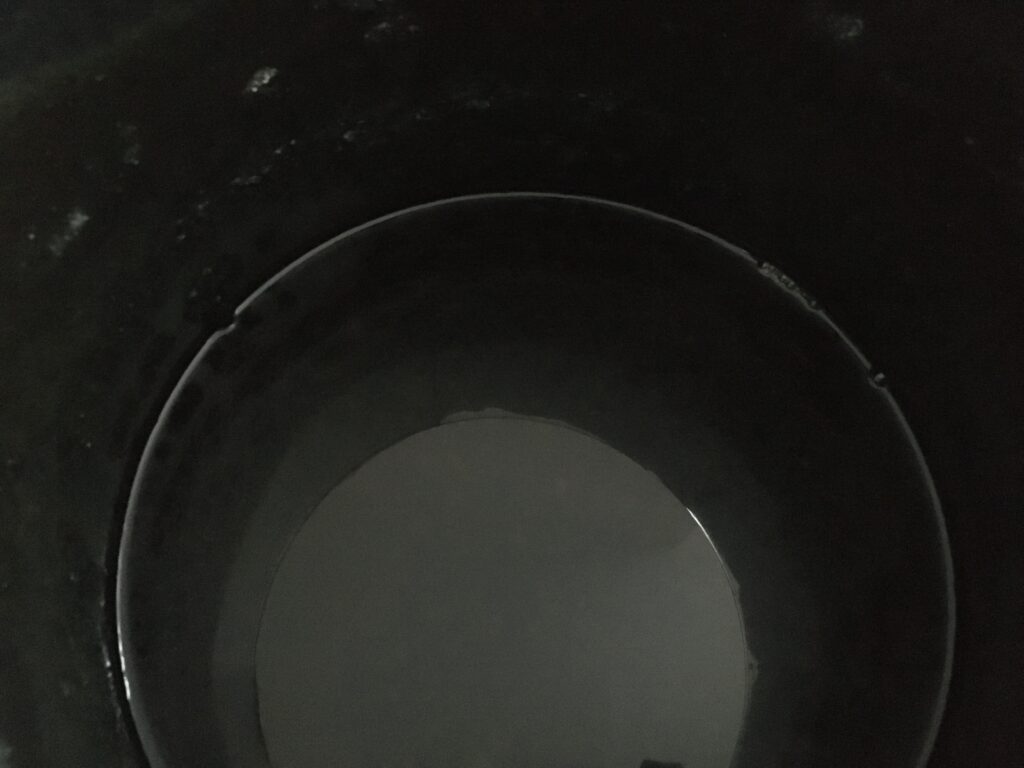
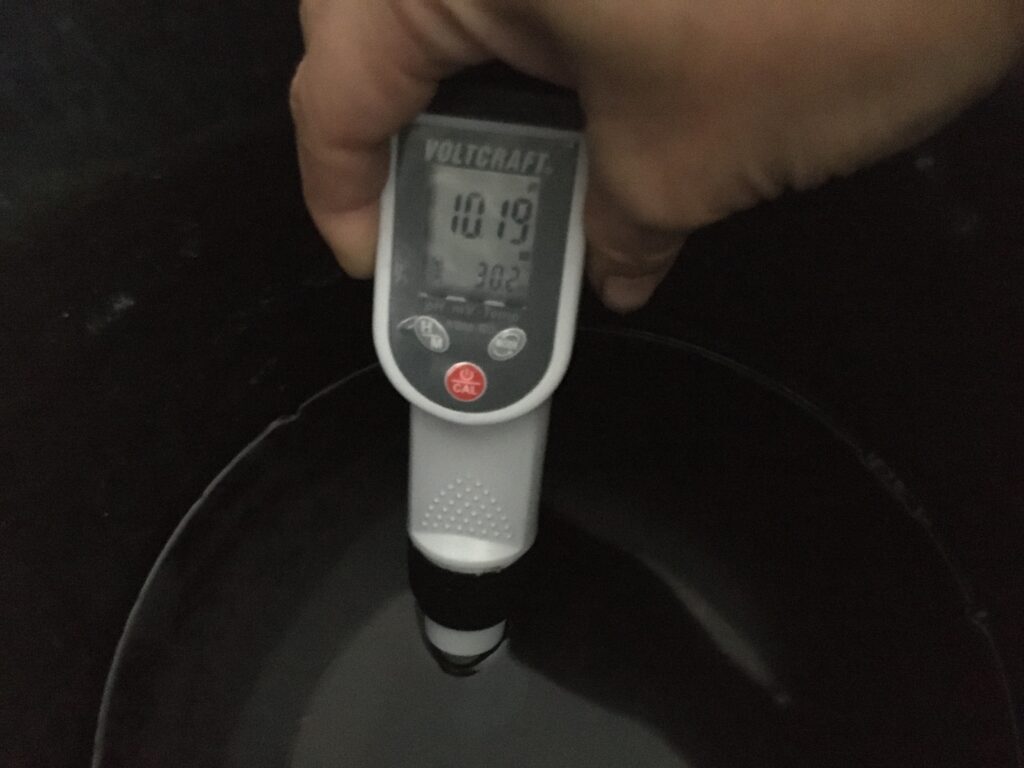
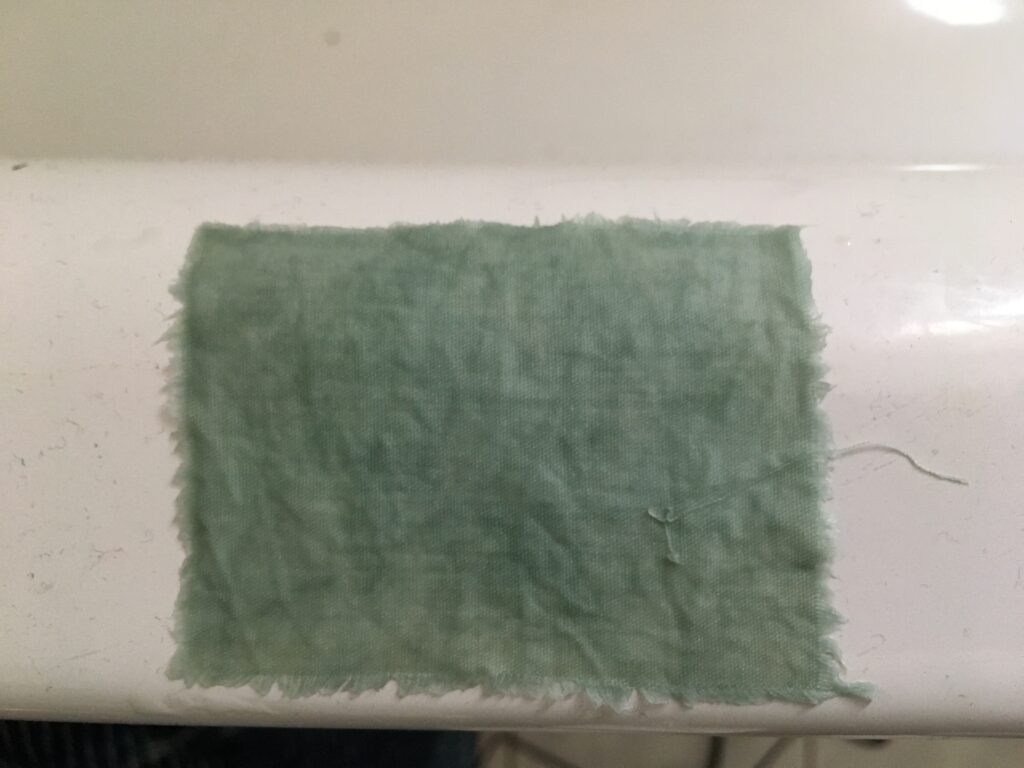
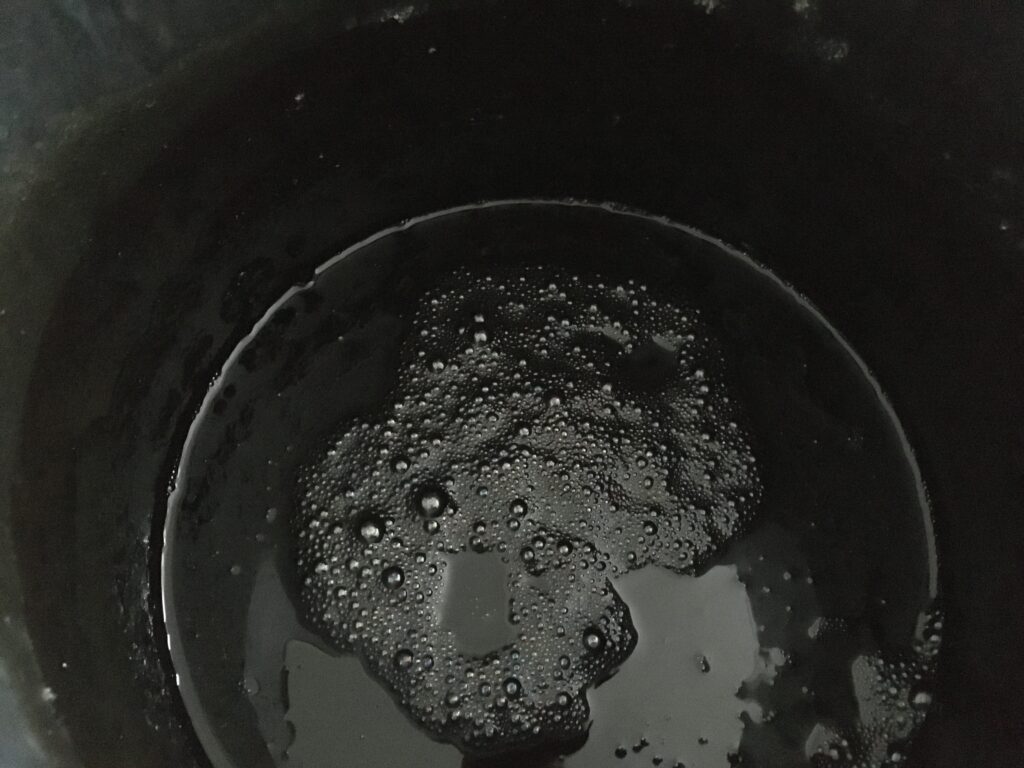
Day 54: At the end I decided to not to mix last night. and this morning, I opened the lid, and it looks the same… dark, silent, nothing is happening…. but then, I brought in a flash light to see the surface color (my bathroom is quite dark in the morning now as the day is getting shorter), then I was surprised. A whole universe is happening here. There are some yellow colony, strange purple slime… Not sure if it is a good sign or bad sign.. I was just stunned with how amazing it looks.
The color test shows light blue. Not very different from yesterday. Smell is still mild fermentation smell, no ammonia hint.
I checked the PH, it is under 10 now, so I added a spoon full (~6-7g) of ca(oh)2. Then mixed it well. The last photo shows after mixing. The bubble is disappearing quick.
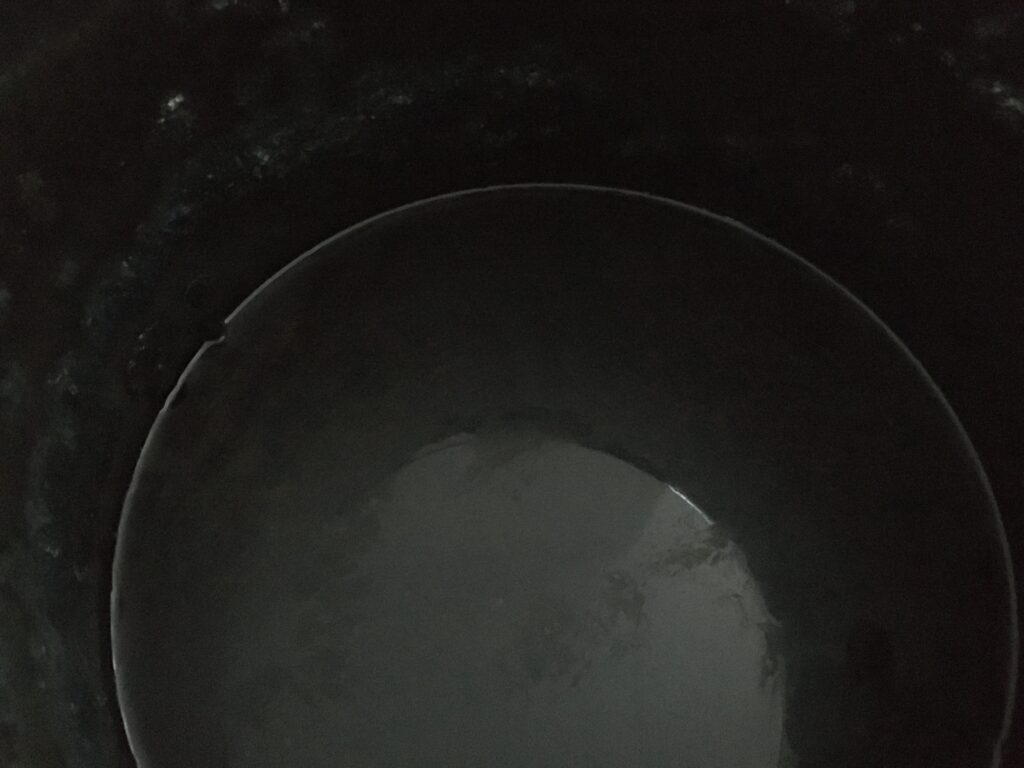
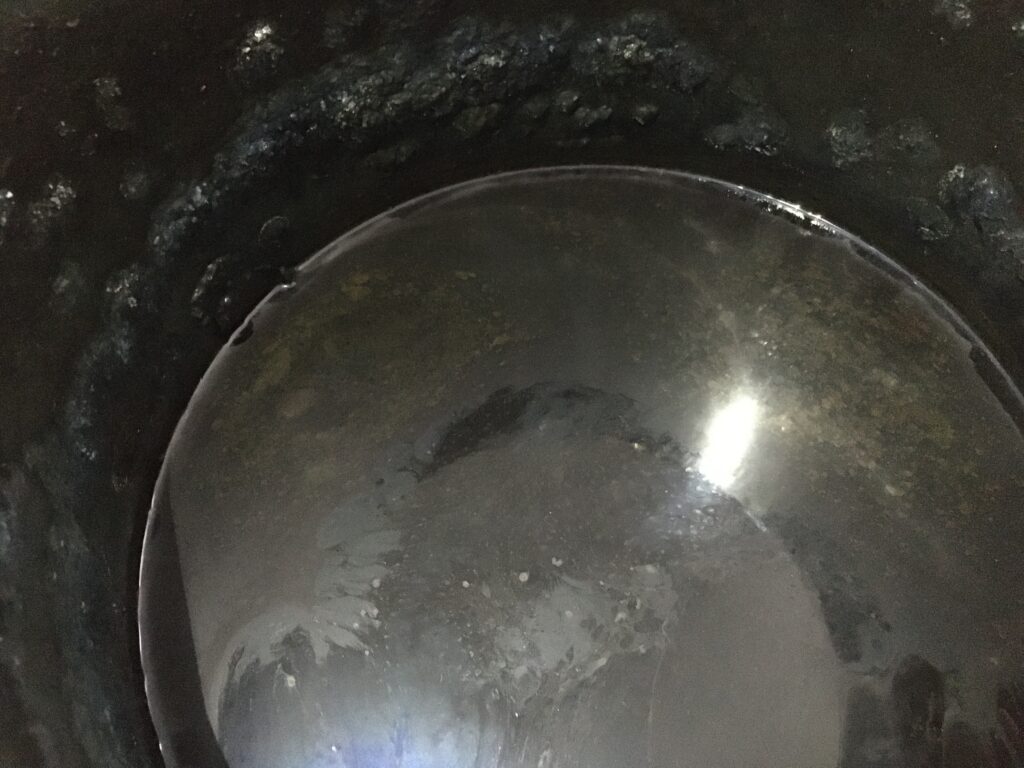
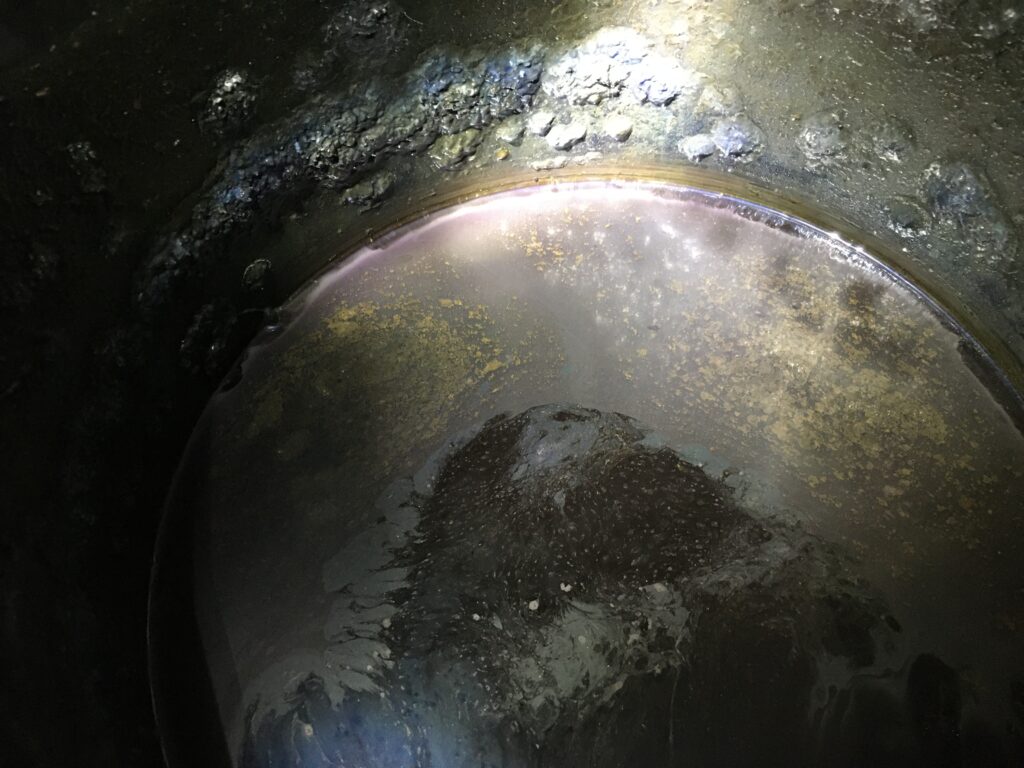
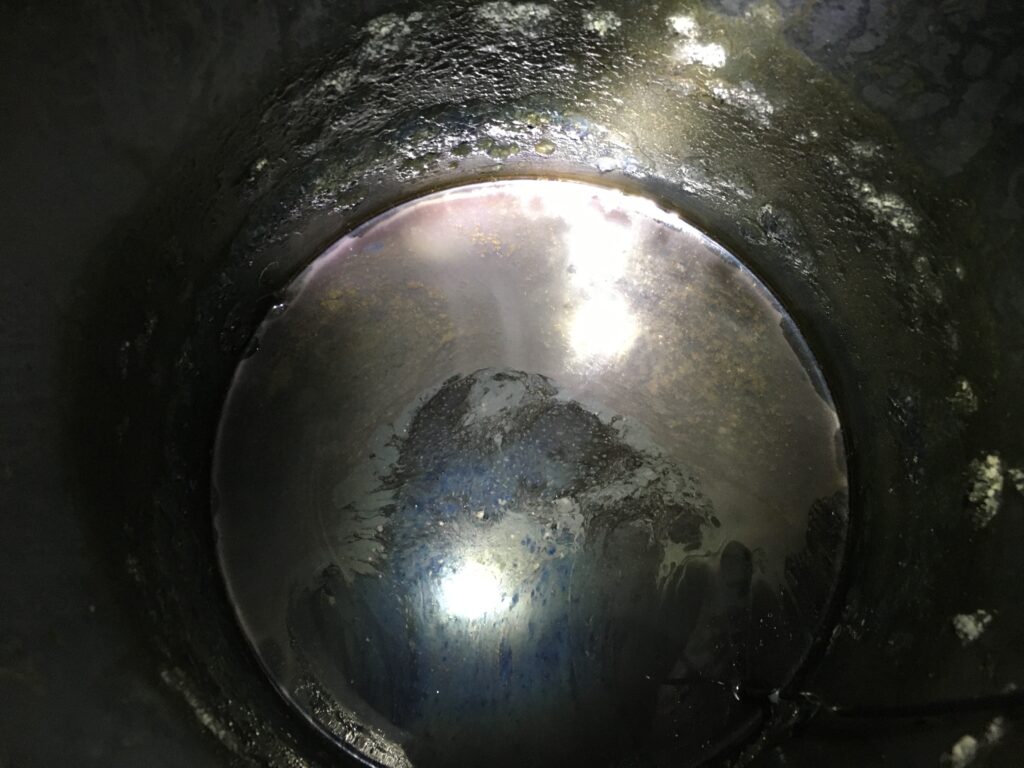
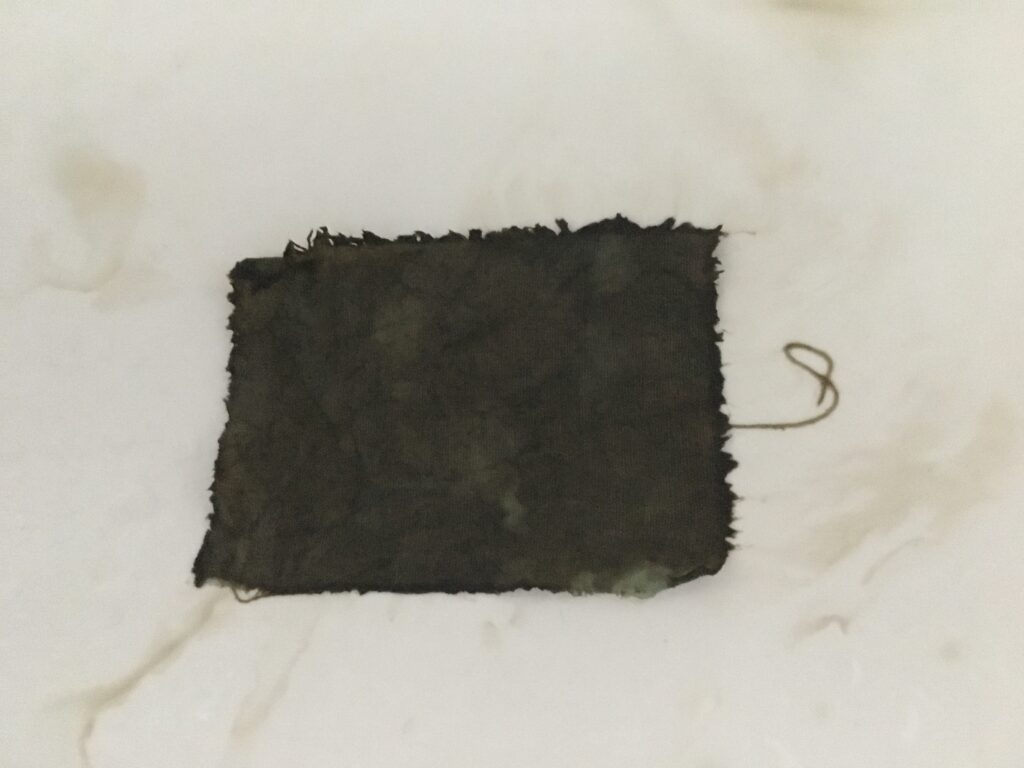
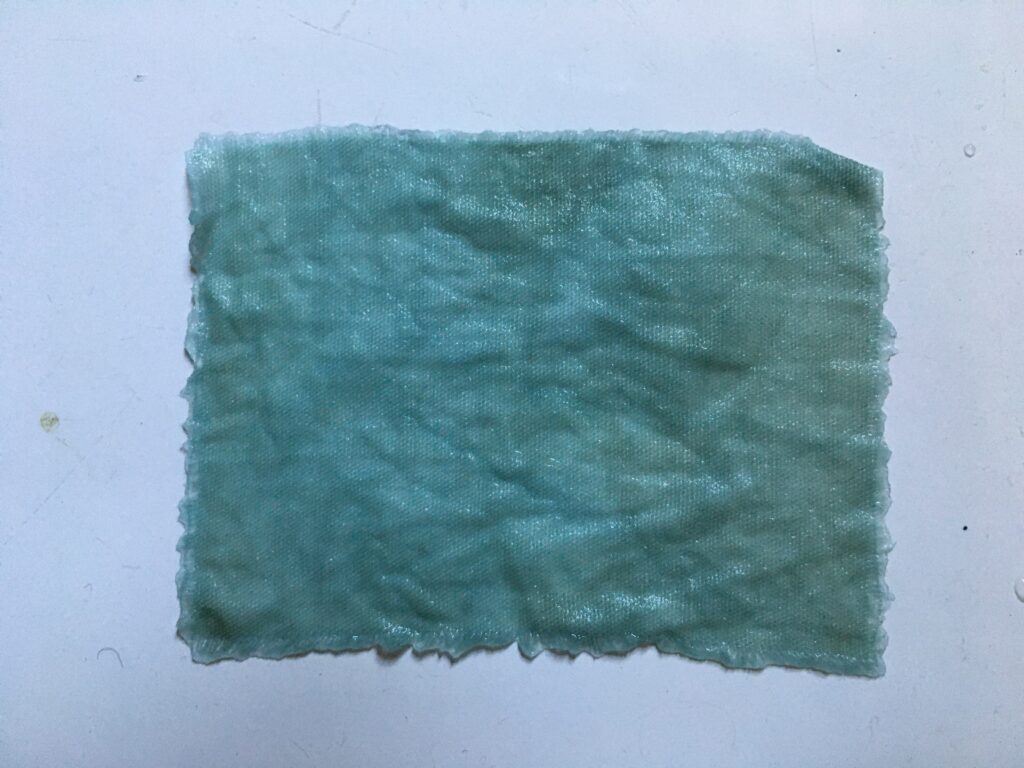
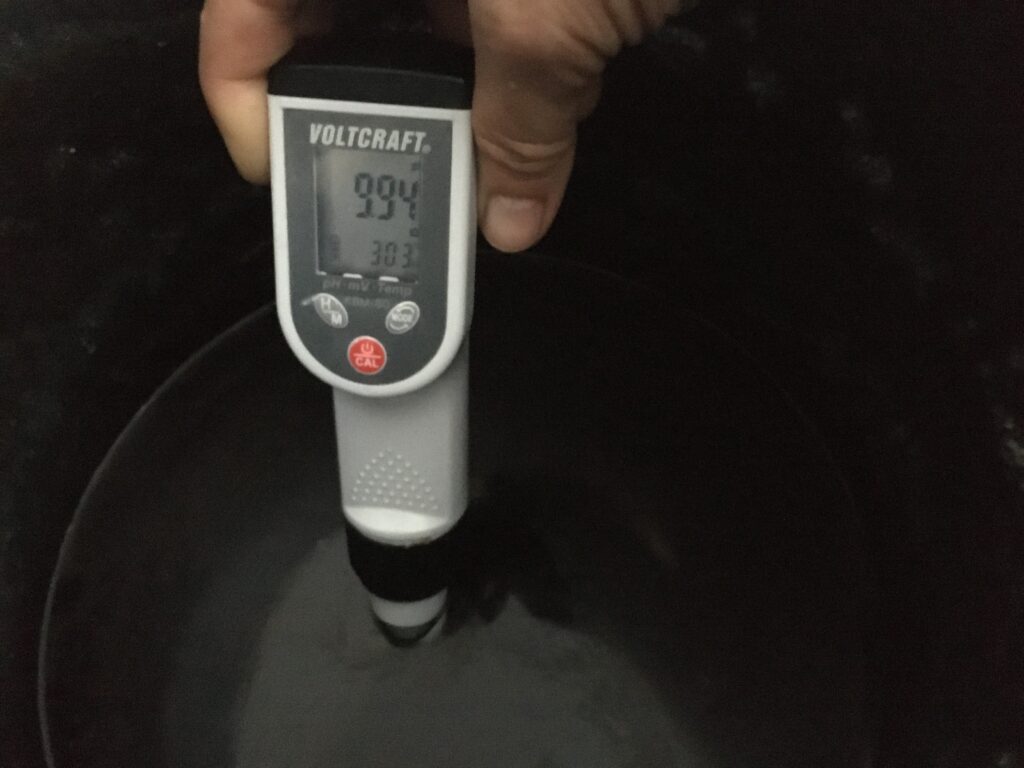
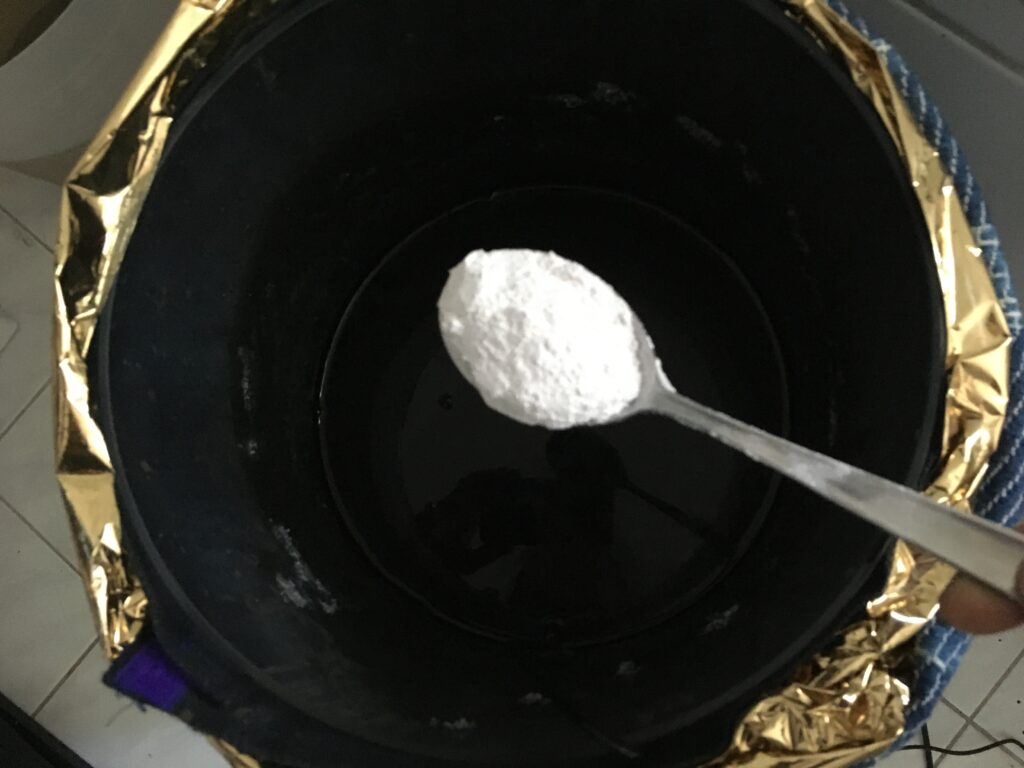
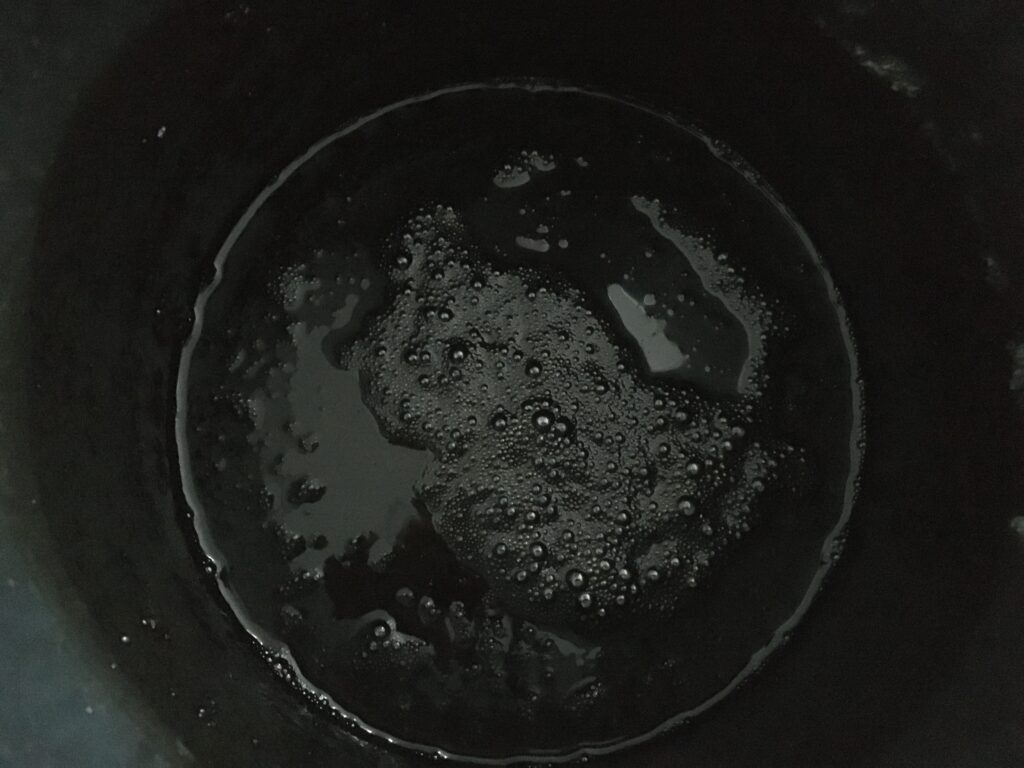
Day 55: The vat looks good this morning! there are some bubbles from yesterday, shiny copper purple layer, PH is 11.3 and smells like fermentation mild indigo smell. BUT, when I did the color test, it does not show color! (did it twice in case!) strange.
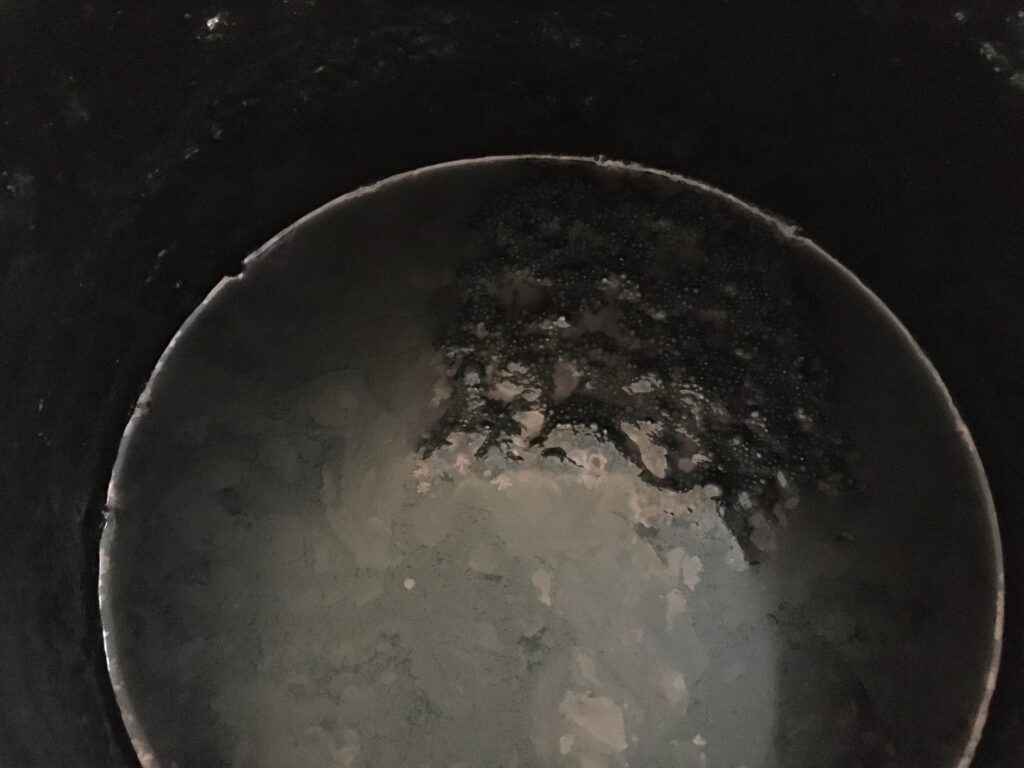
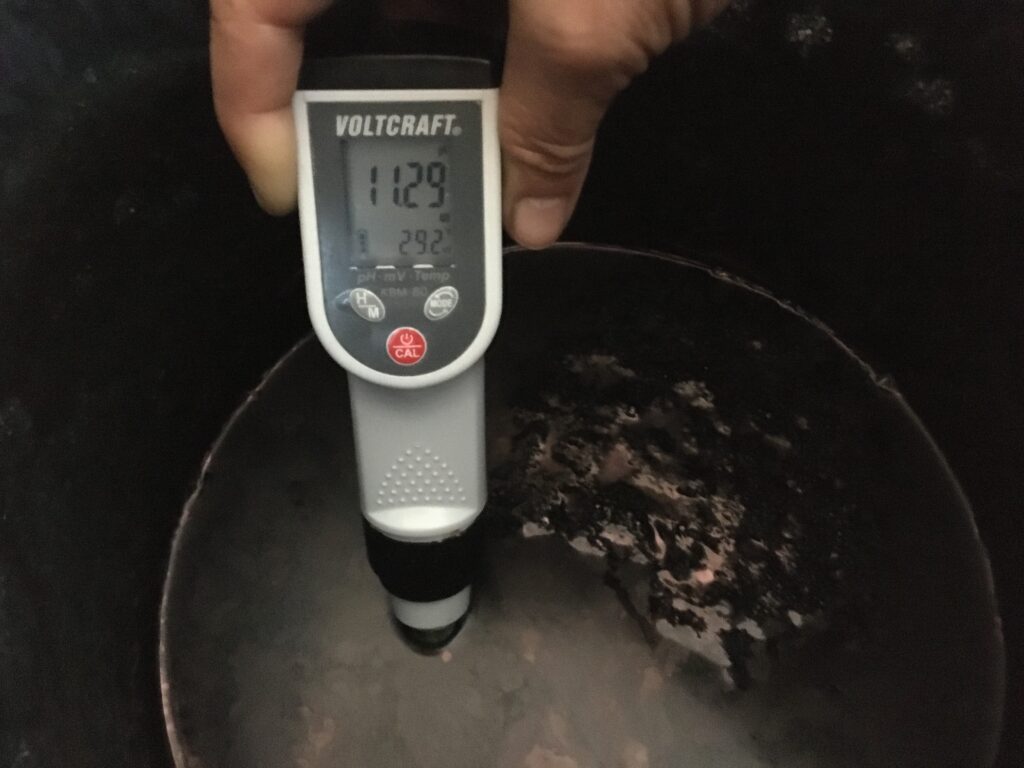
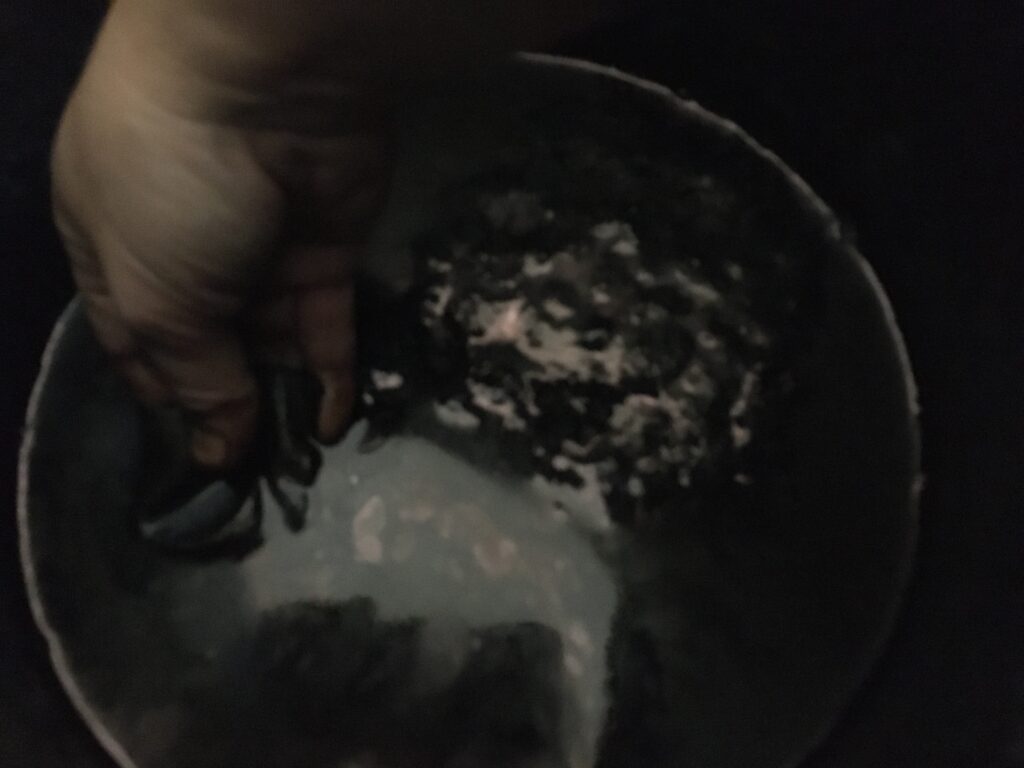
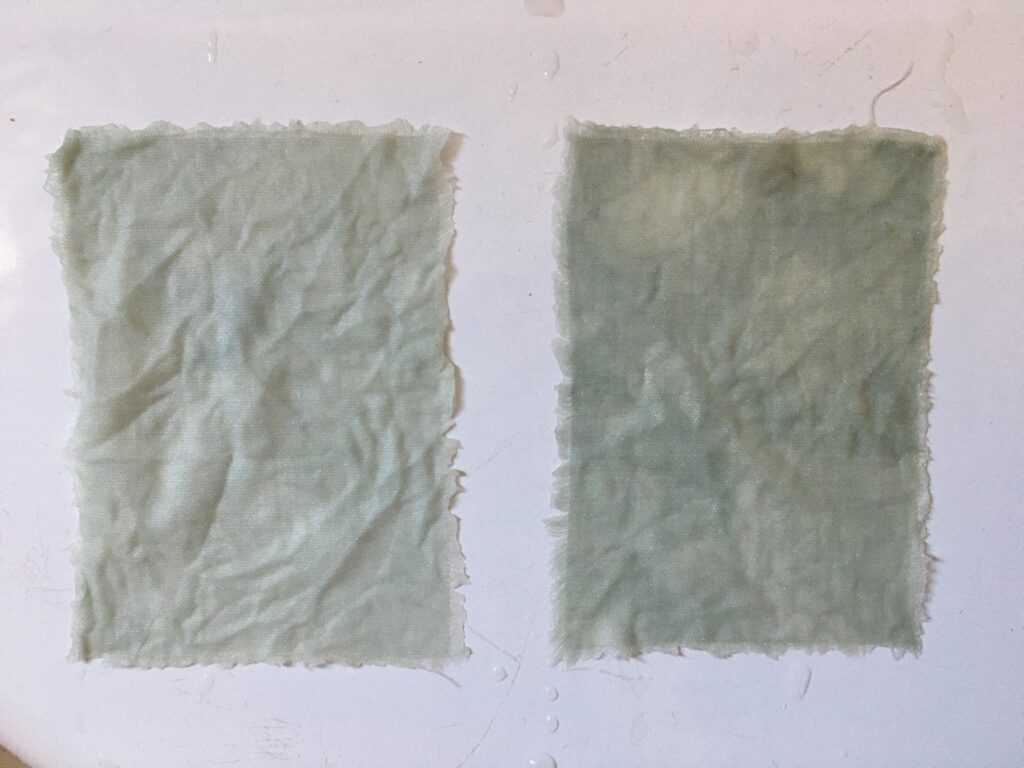
Melanie from Melanie from Ainisomatte sent me a message, just in time, and gave me some advice. (thanks so much Melanie!) It is a good time to add more ash water, but I should make sure that my ash water is ~ PH10.5. The dusty things I was seeing earlier is NOT a good sign. they should not be there. The white fungi on the side of the vat is also not very welcomed things and I could remove it (I was wondering this for a while…) .
In fact, my ash water is now PH10.1 and since it stayed in a bucket without lid, I am not sure if there are other bacteria in it now. When I heated up, it started to turn white… so I decided to make new ash water. Also, it is ideal if the ash water is above PH11.. I probably should look for better hard wood ash for future. For now, I boil necessary amount of water for 15min to de-chlorine (this was an information I found in internet) and mix with ash to prepare the ash water. I can probably use this tomorrow morning.
Day 56: Suddenly it stops again. The ash water is ready (PH11) and waiting to be added, but the vat suddenly turns silent with the dusty things taking over the surface, and the color test does not show any color. On top of this, I broke the PH sensor out of panic… This is not my day. First time, I thought of giving up this vat.
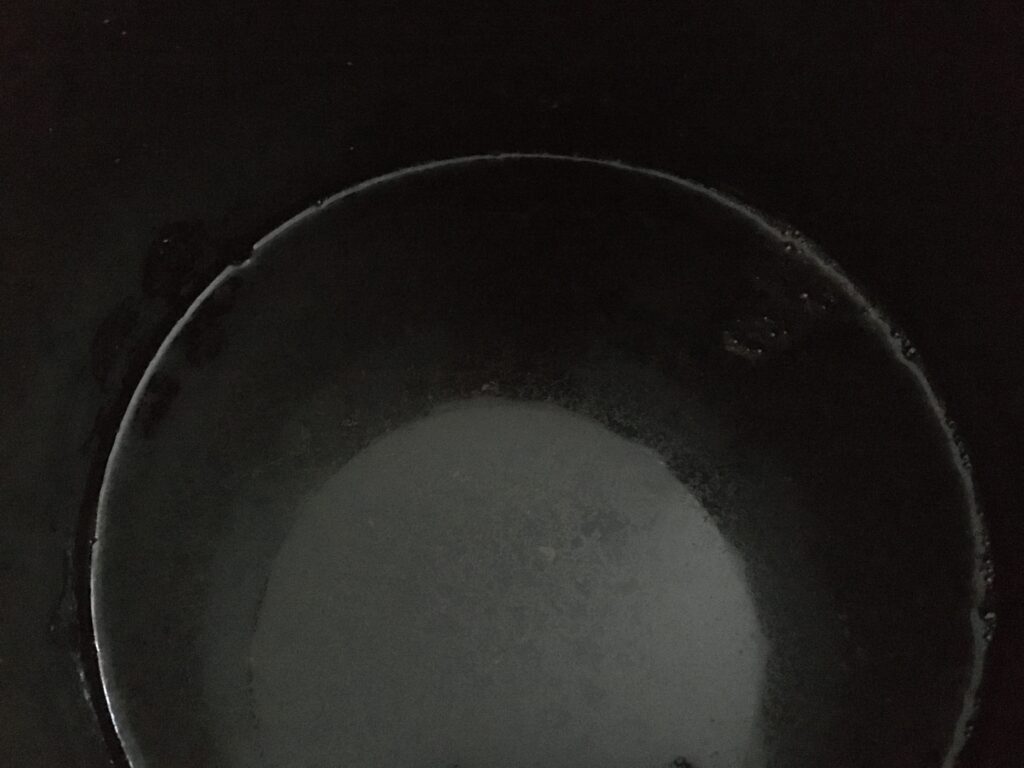
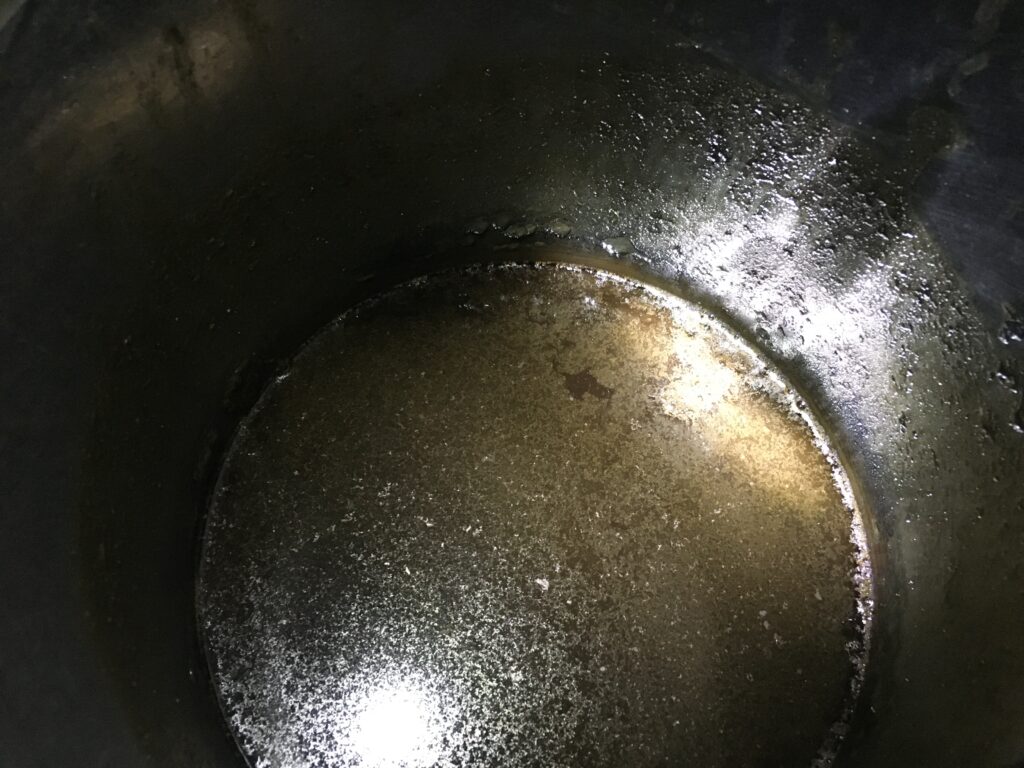
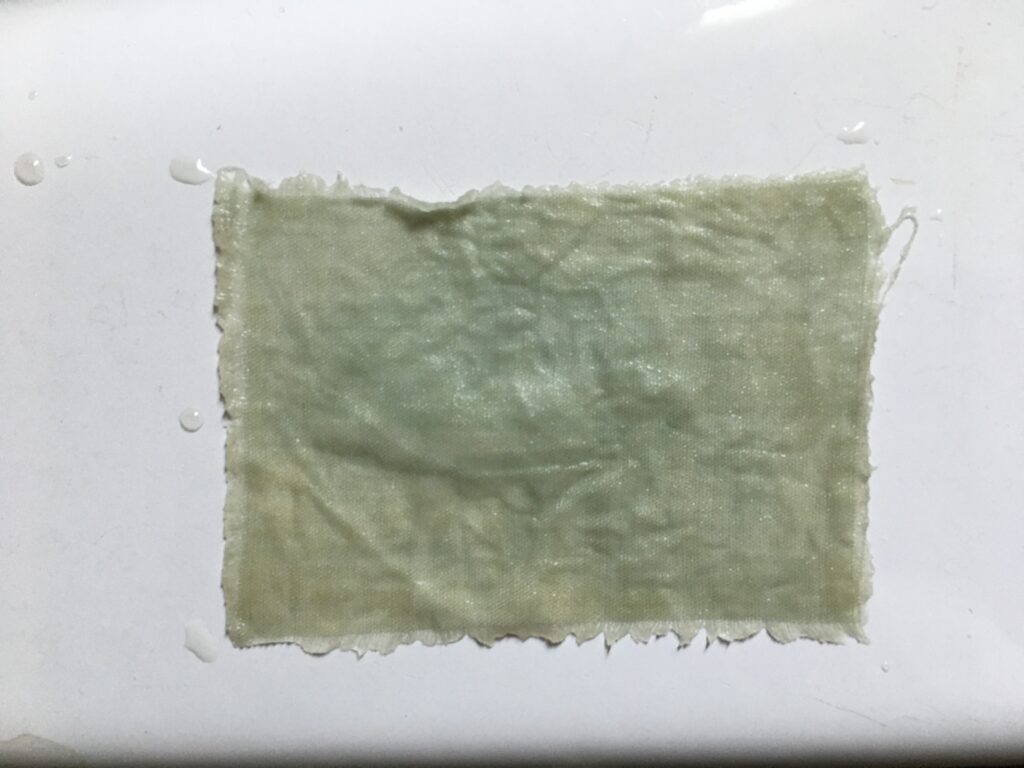
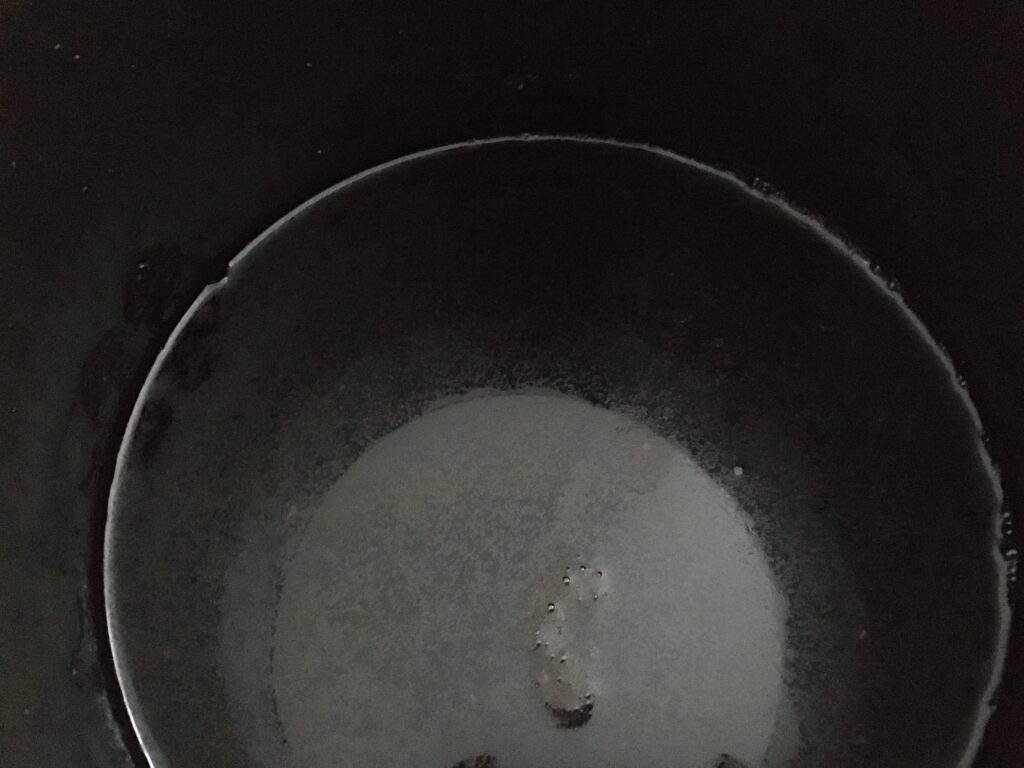
Day 57: Still, the dusty thing is appearing on the surface. The last time, it dropped the PH quite quickly when the dusty thing is out so I add one spoon of ca(oh)2 and mix it well. The last photo is from the evening, looking at the surface with a flash light. It is making a strange light brown layer. Not sure what to think. I also can not check PH. Did not do color test. it is too depressing.
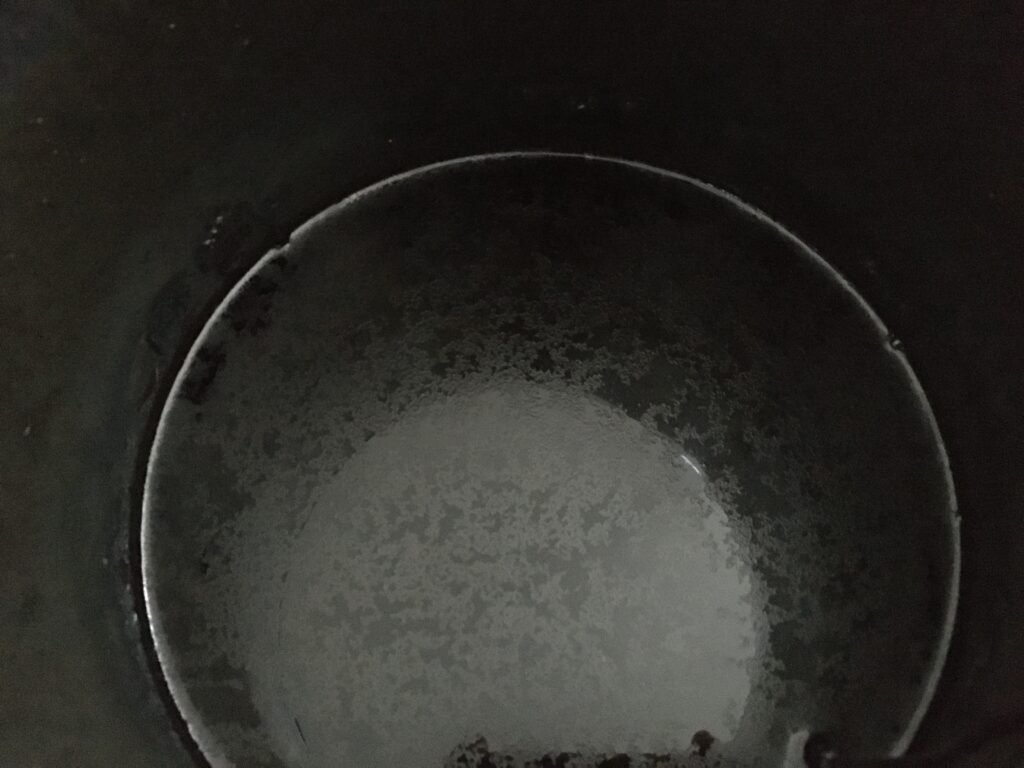
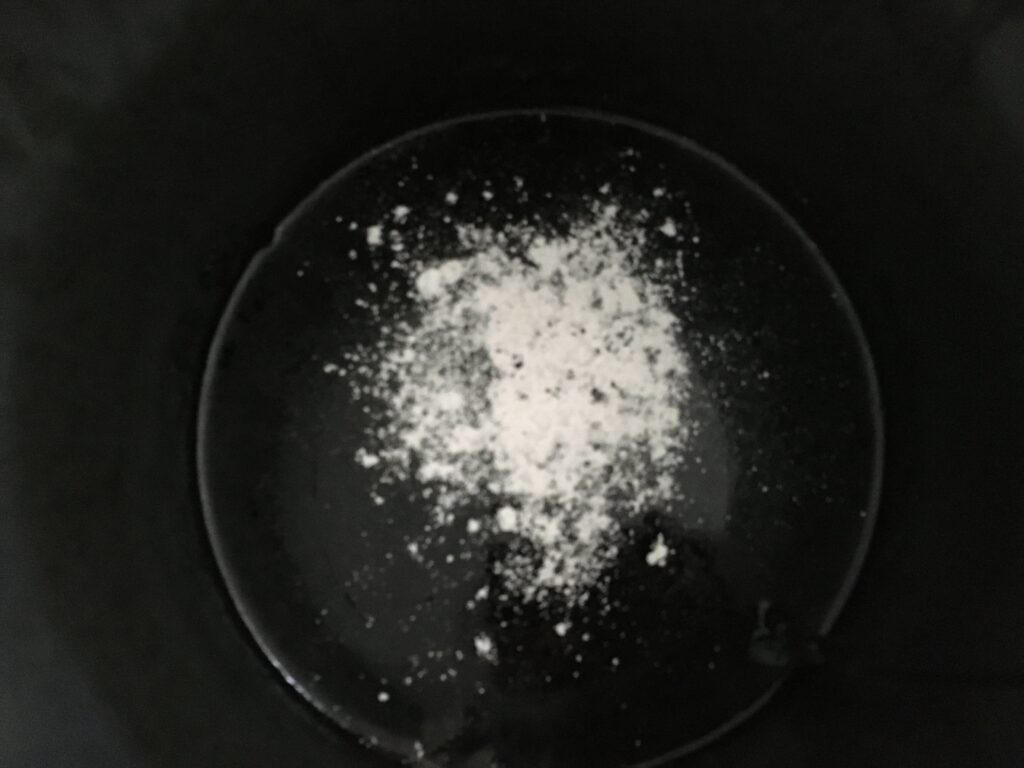
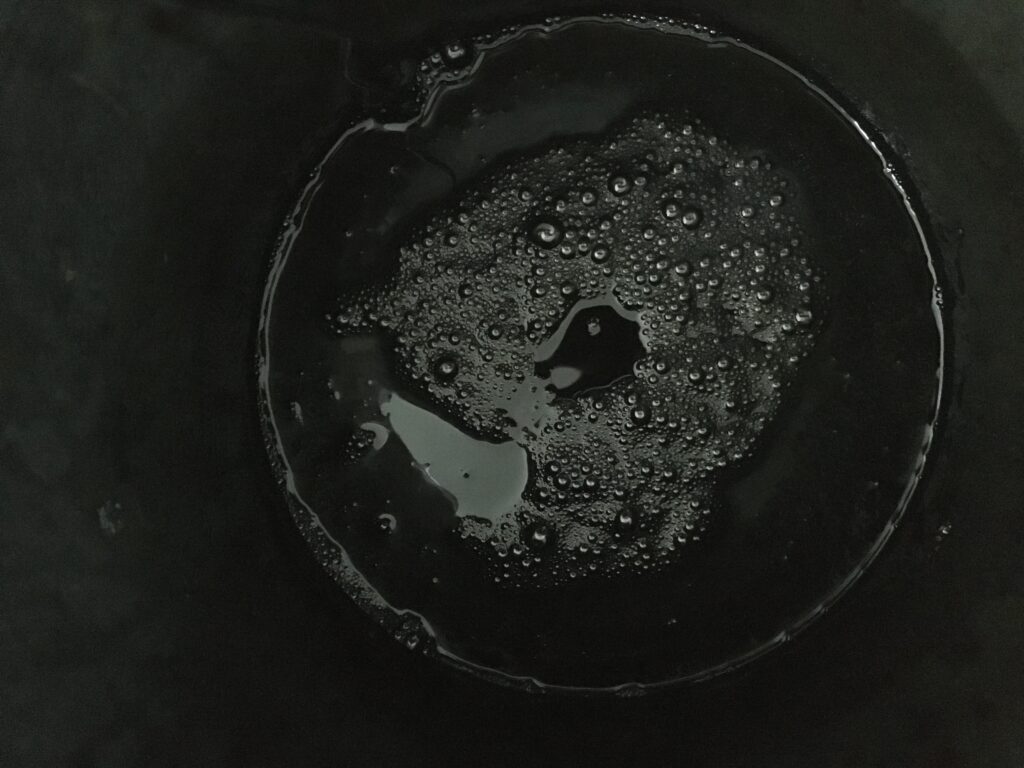
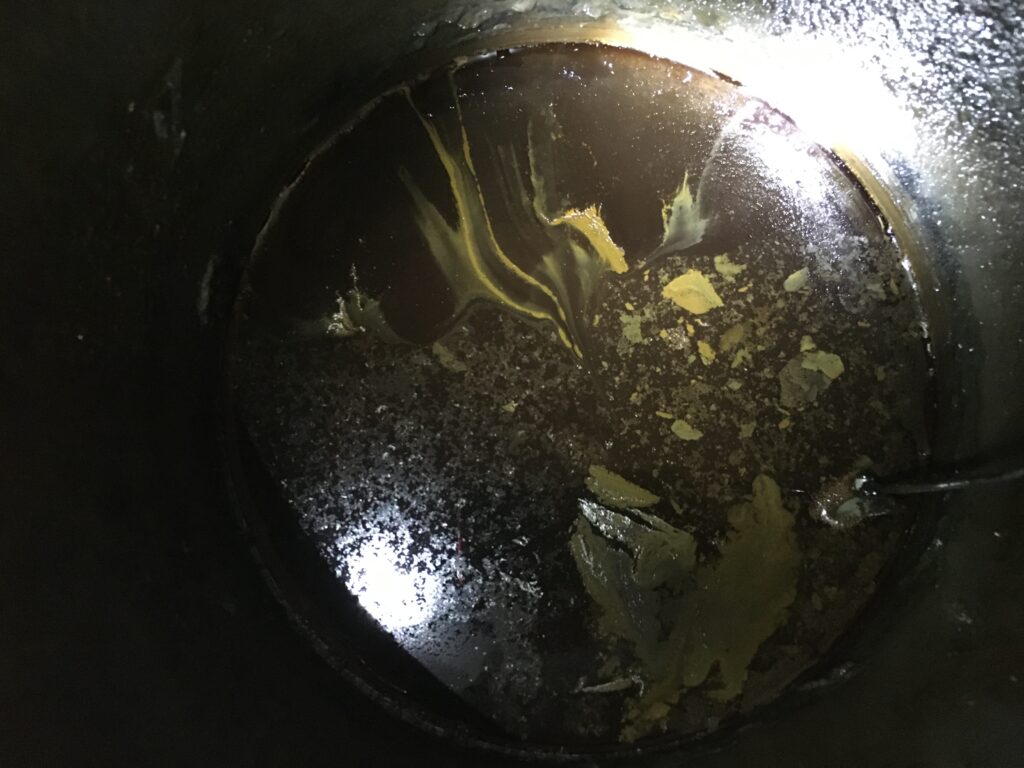
Day 58: Still strange things growing on my vat. I must say it is kind of beautiful though. I check the smell. It does not smell bad. it gives mild fermentation smell, round earthy indigo. color test shows no color. I add ca(oh)2 as I am afraid if the PH drops, more unwanted things will grow.
In the afternoon, Ingo manage to fix the PH meter. it is 11.43 now. Not so bad.
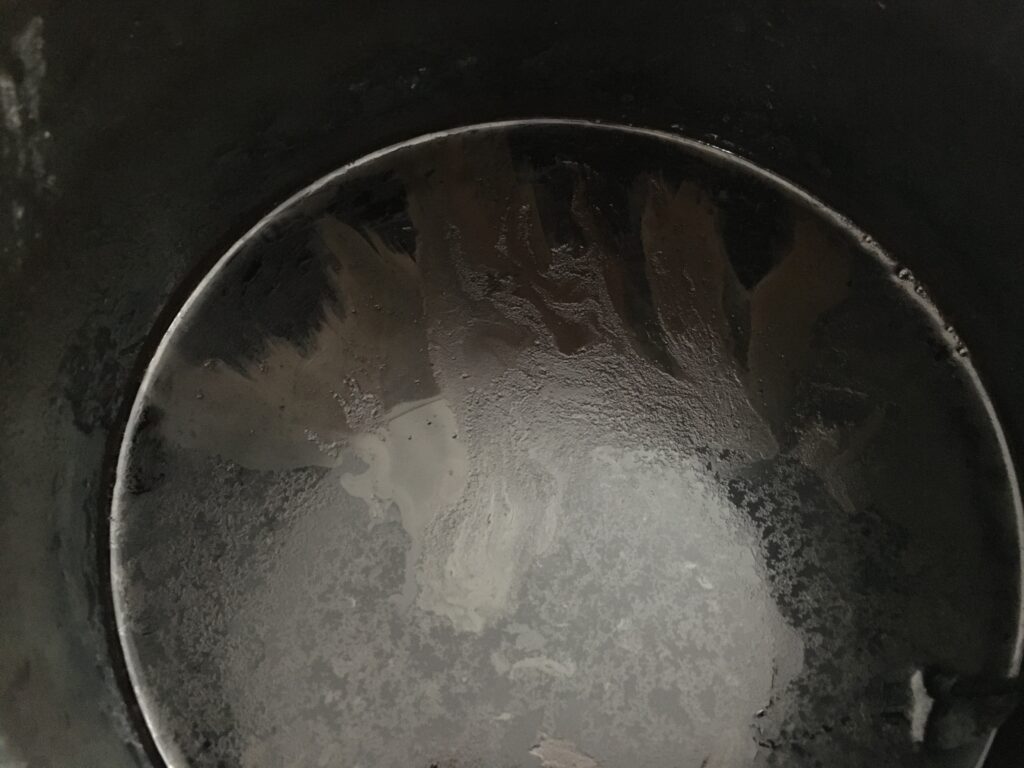
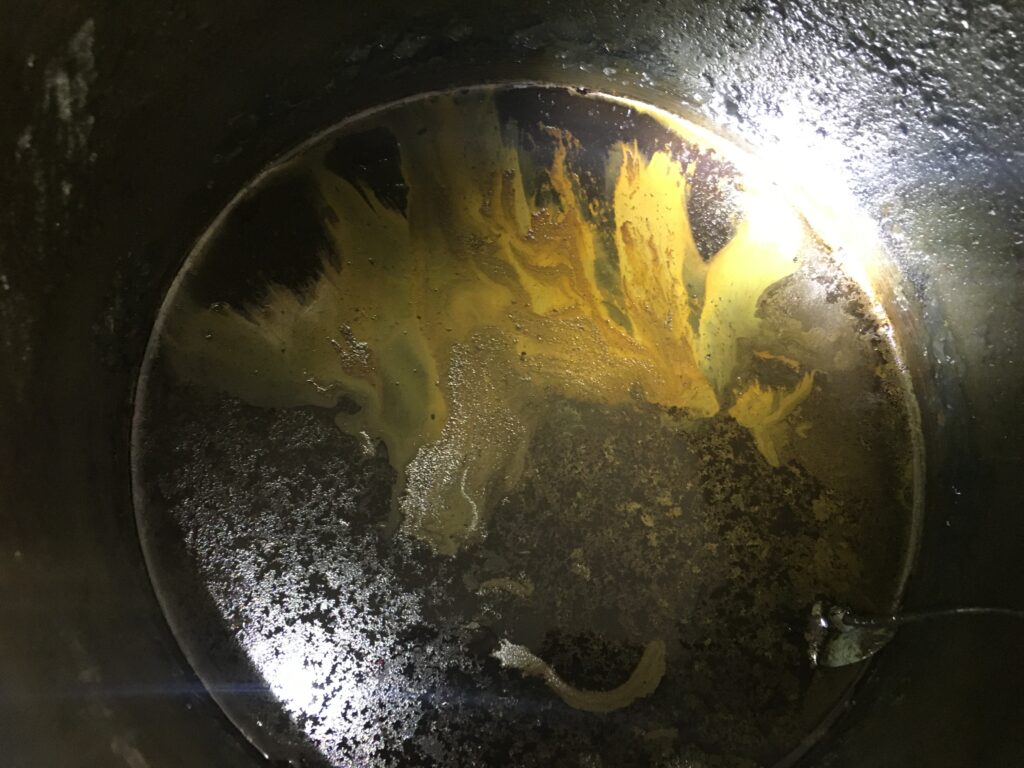
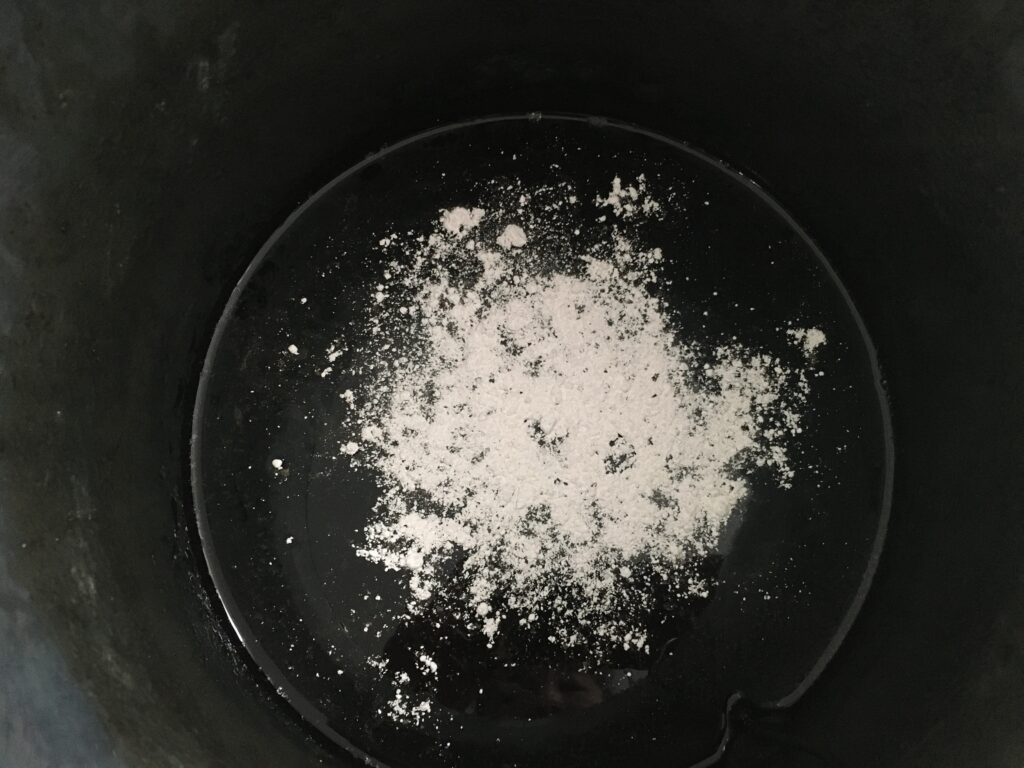
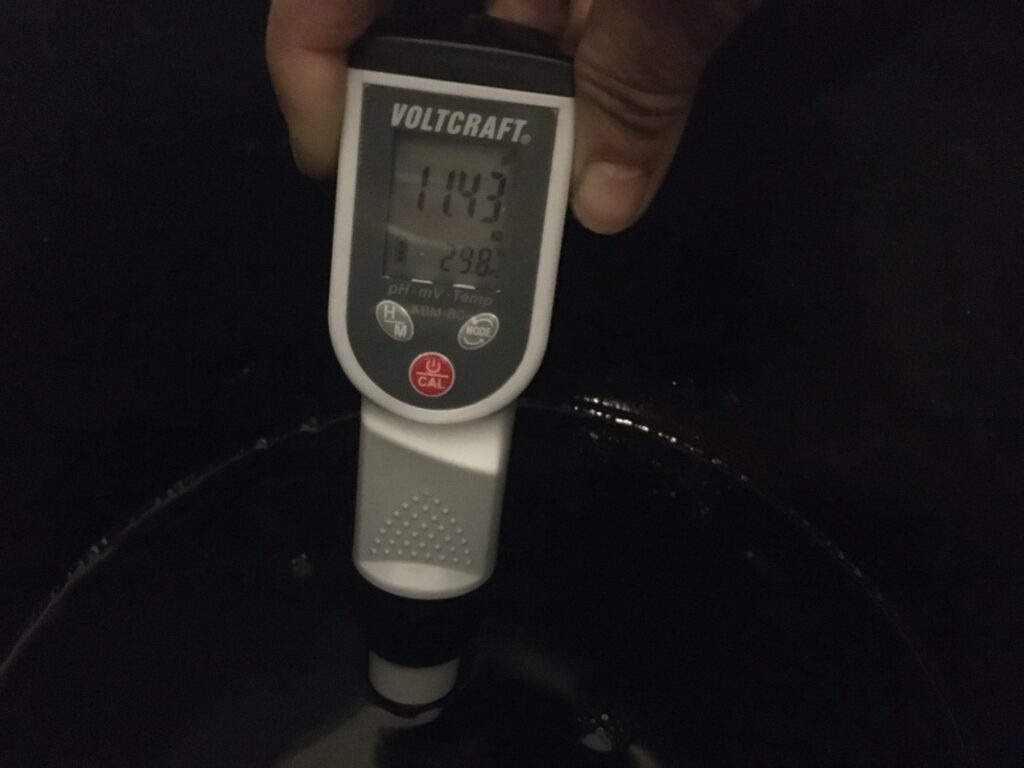
Day 59: surface is still silent, but the yellow thing is gone now. PH is 11.2. No color on the test. The smell is still mild.
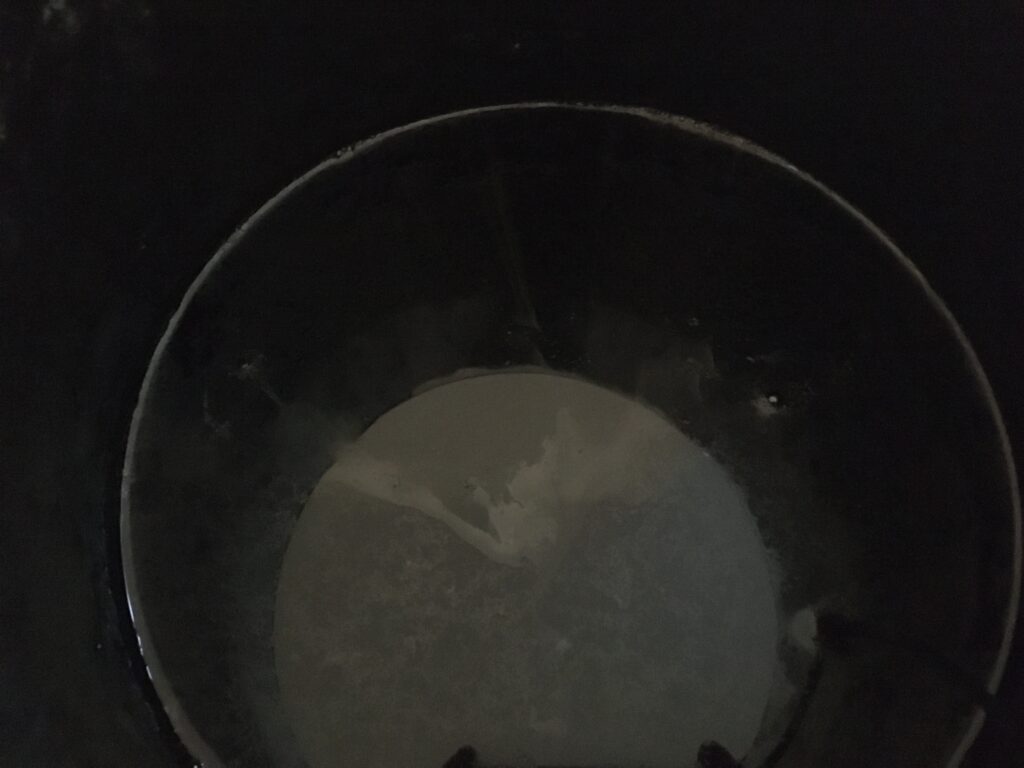
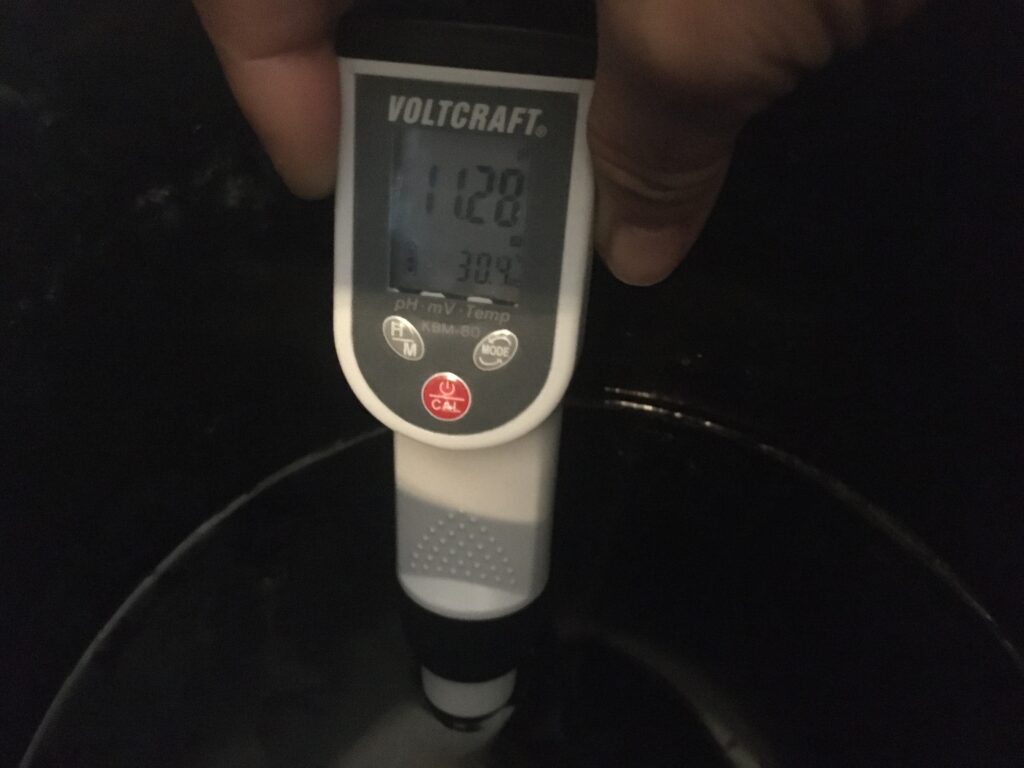
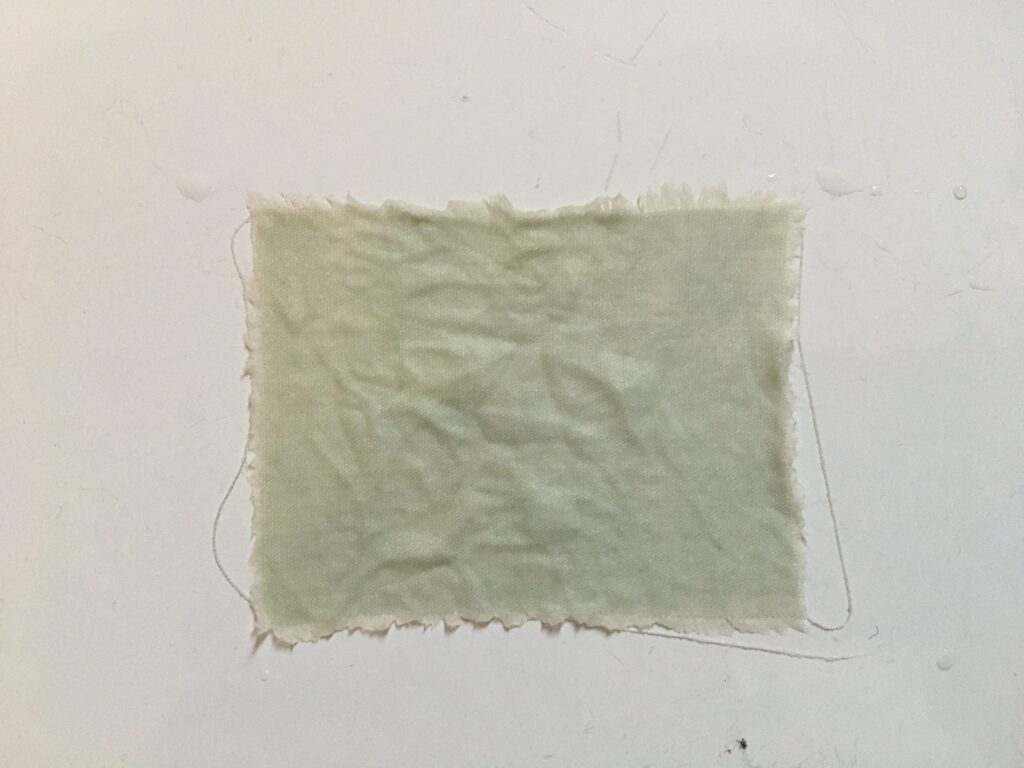
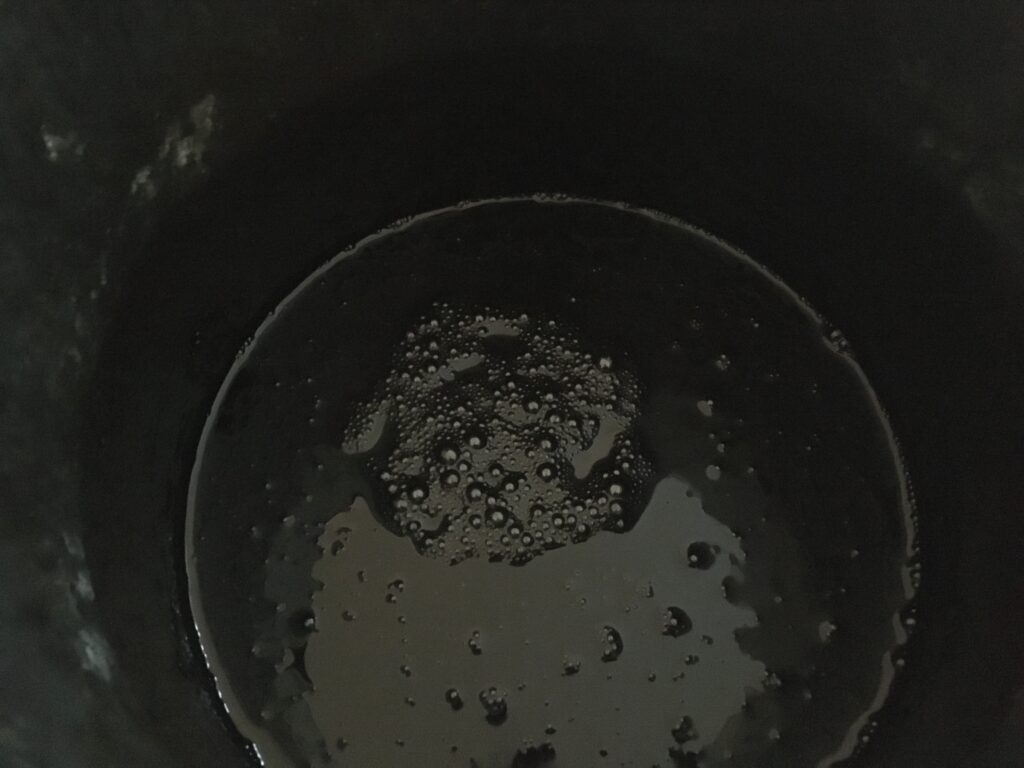
The vat surface before mixing in the evening. The mat thing seems to be coming back.
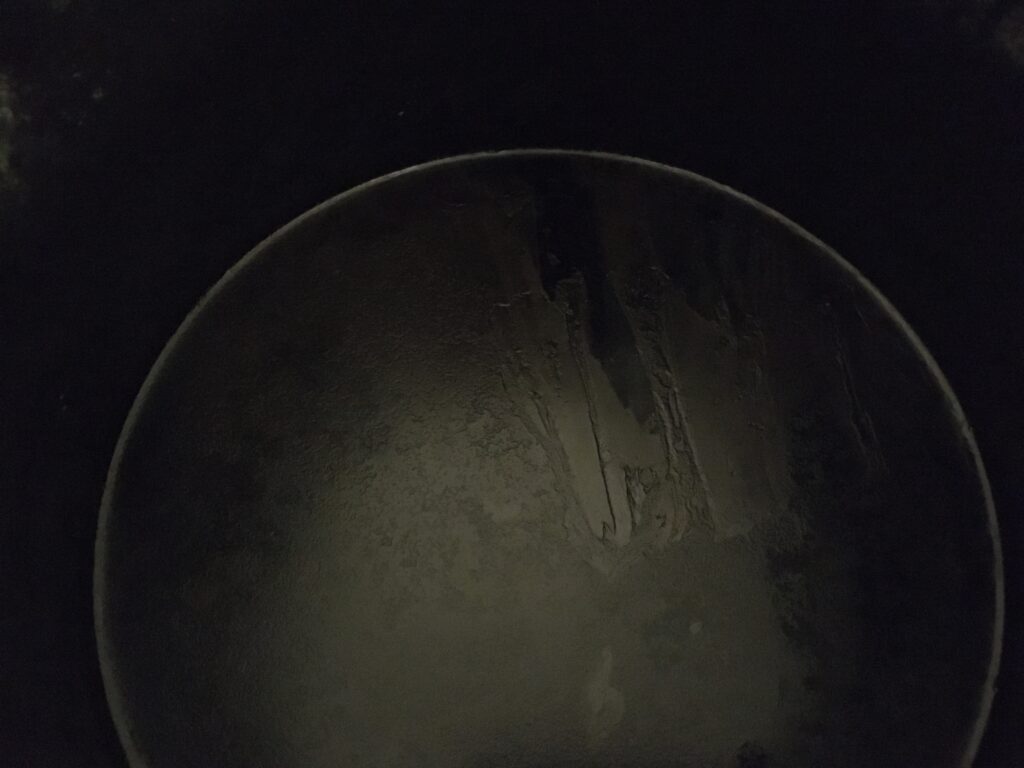
Day 60: It has some kind of layer on the surface but not exactly the mat thing. PH is now dropped to 11.06. I also decreased the thermostat temperature to 31degrees now (it was 32 before). Color test does not show much color.
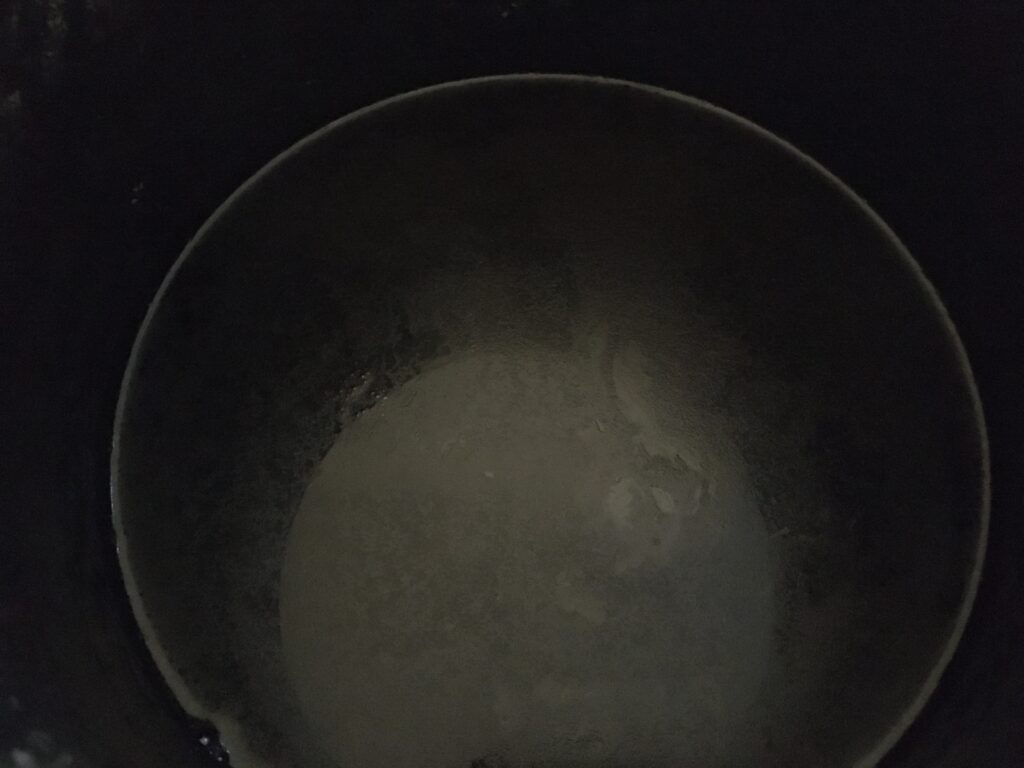
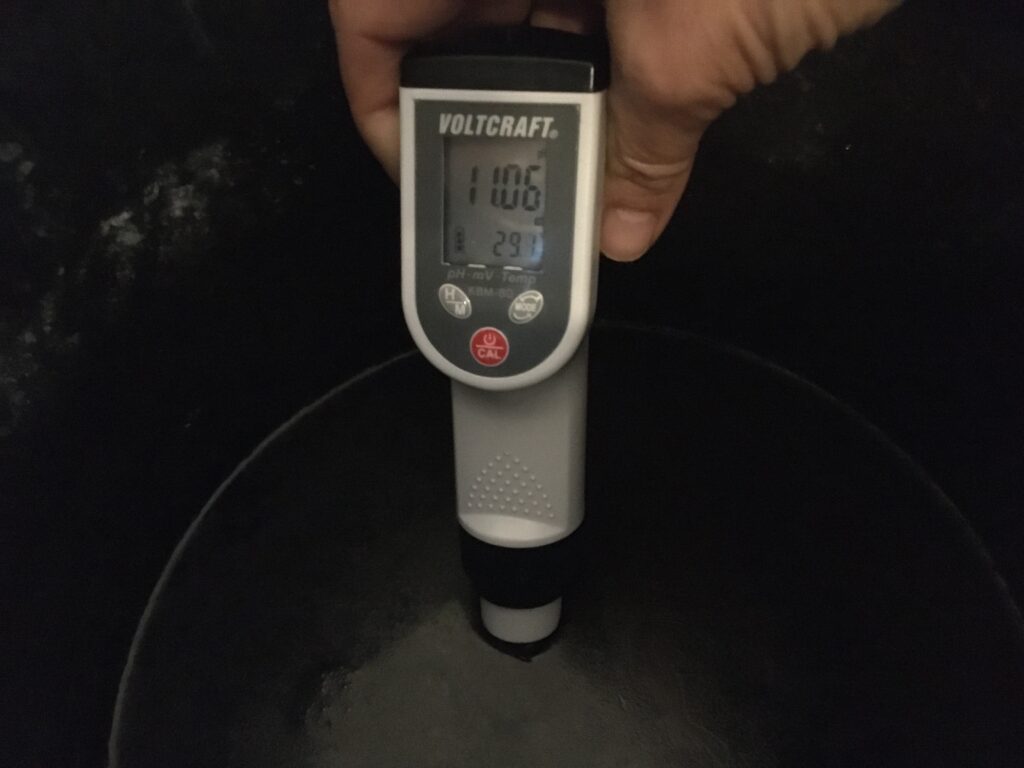
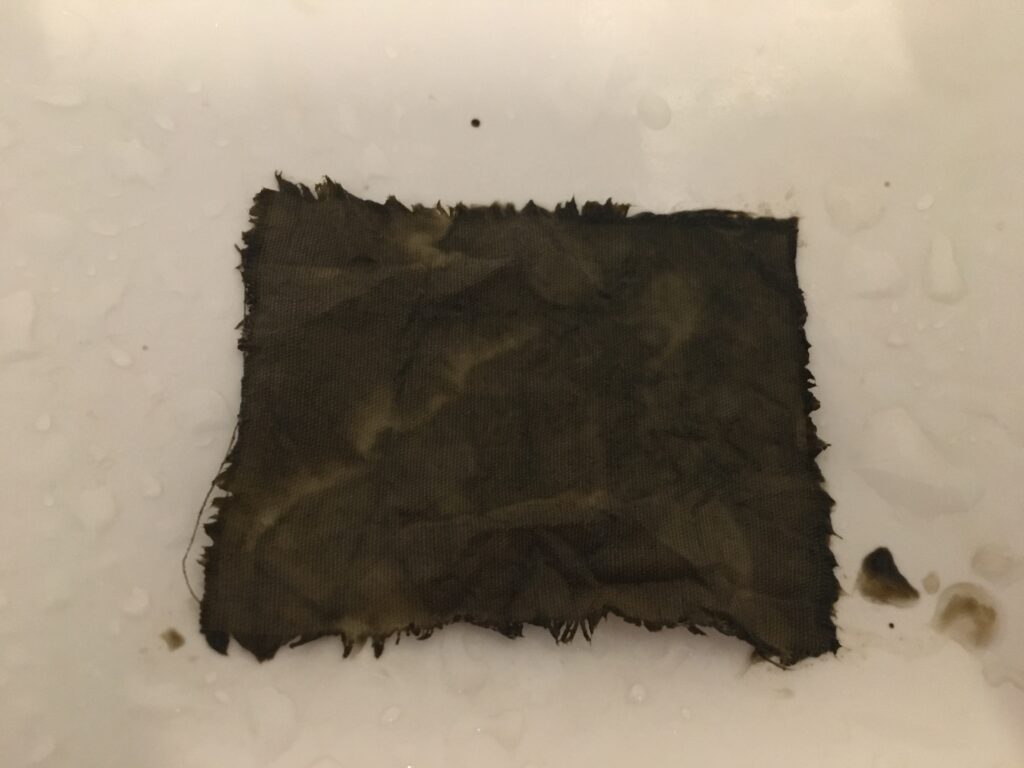
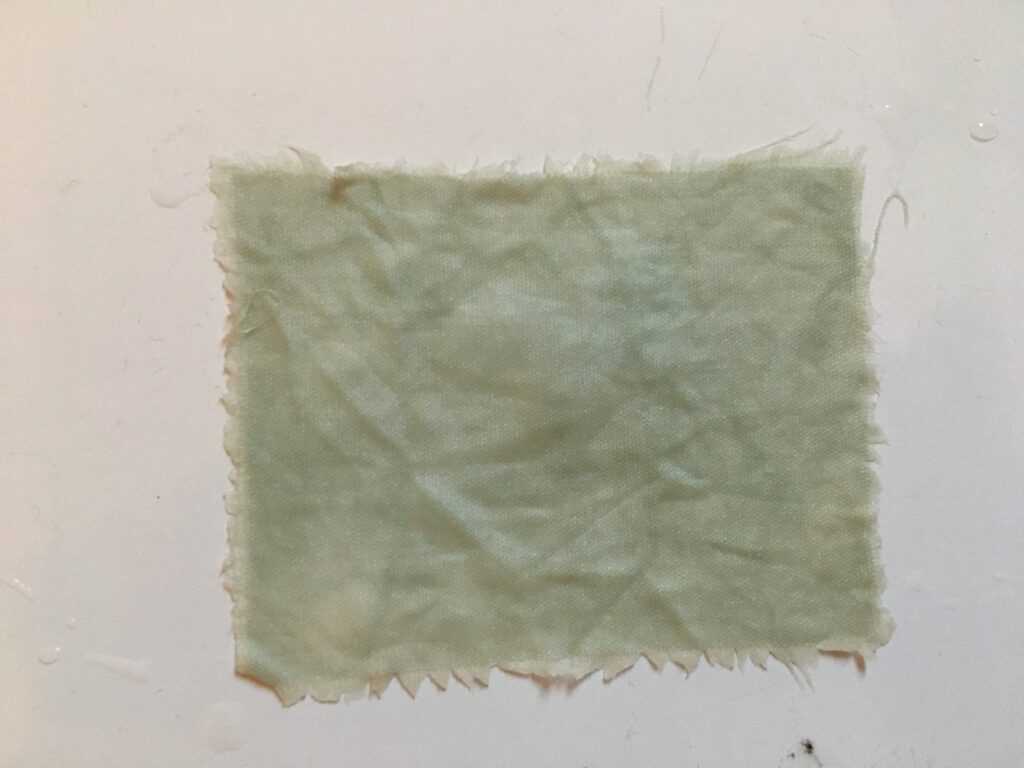
Day 61: Again, something else is taking over the vat, or thats how it seems like. PH is dropping quickly. Smell-wise it is still not particularly bad, but I smell something unpleasant when I wash the color sample.
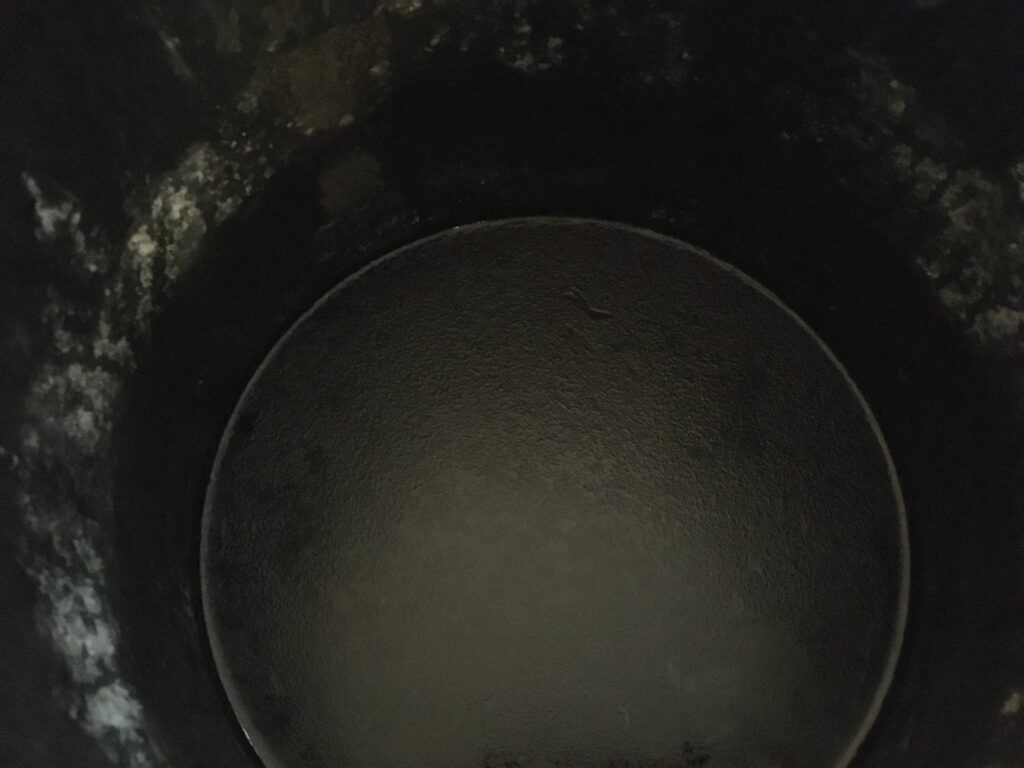
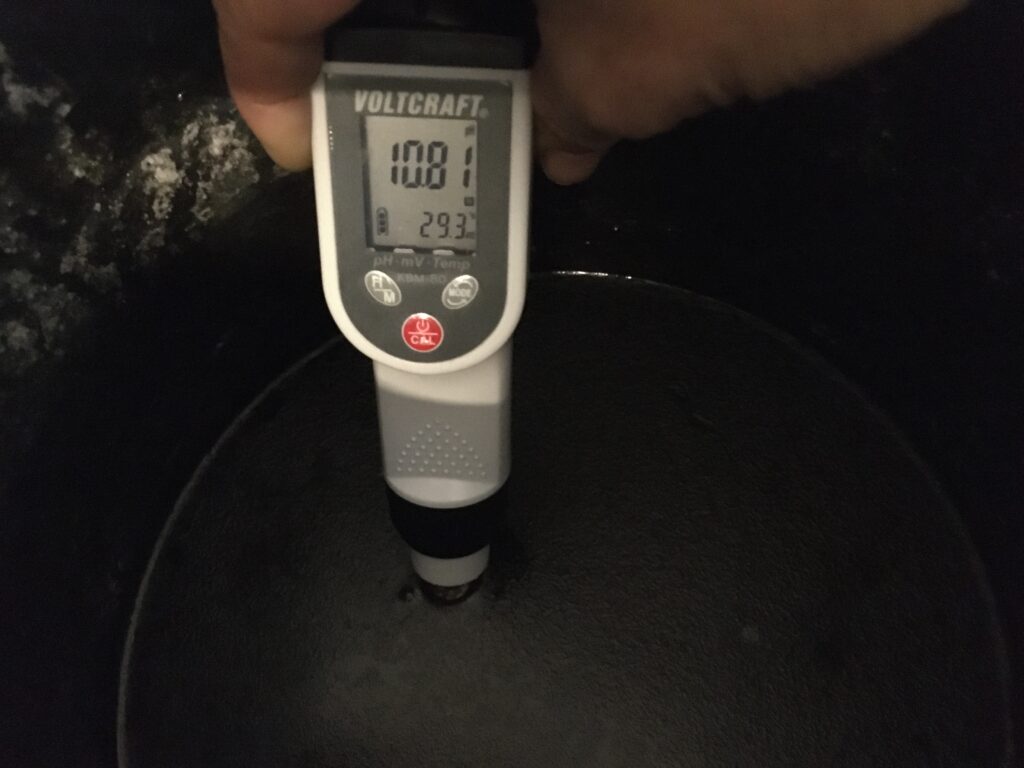
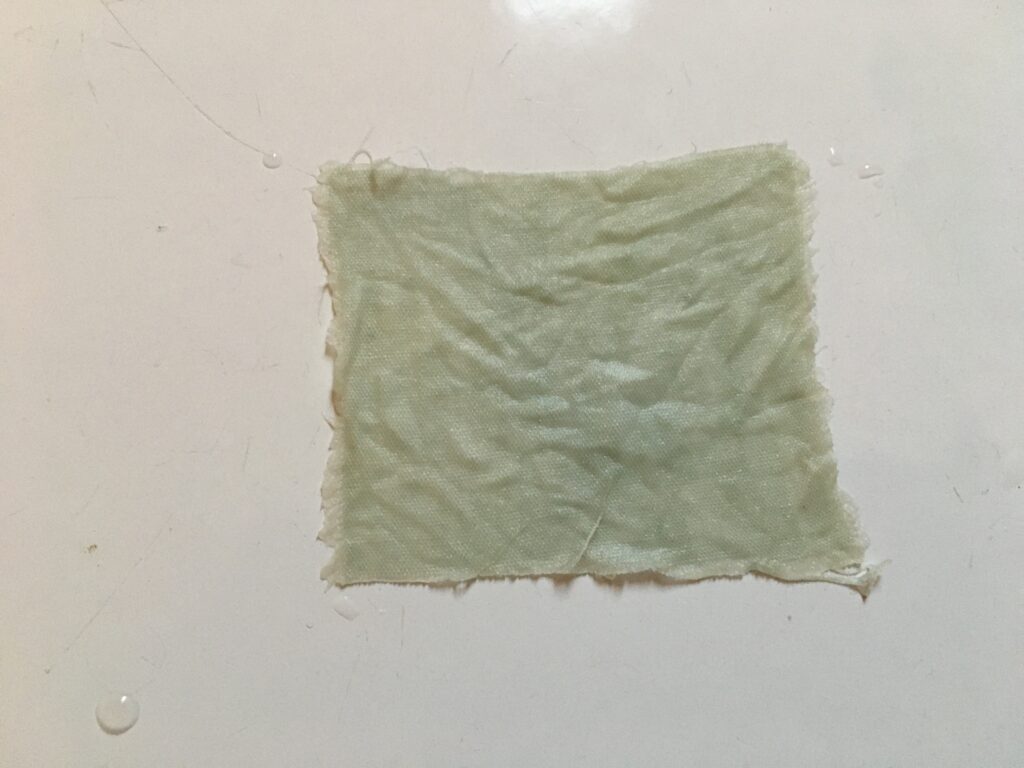
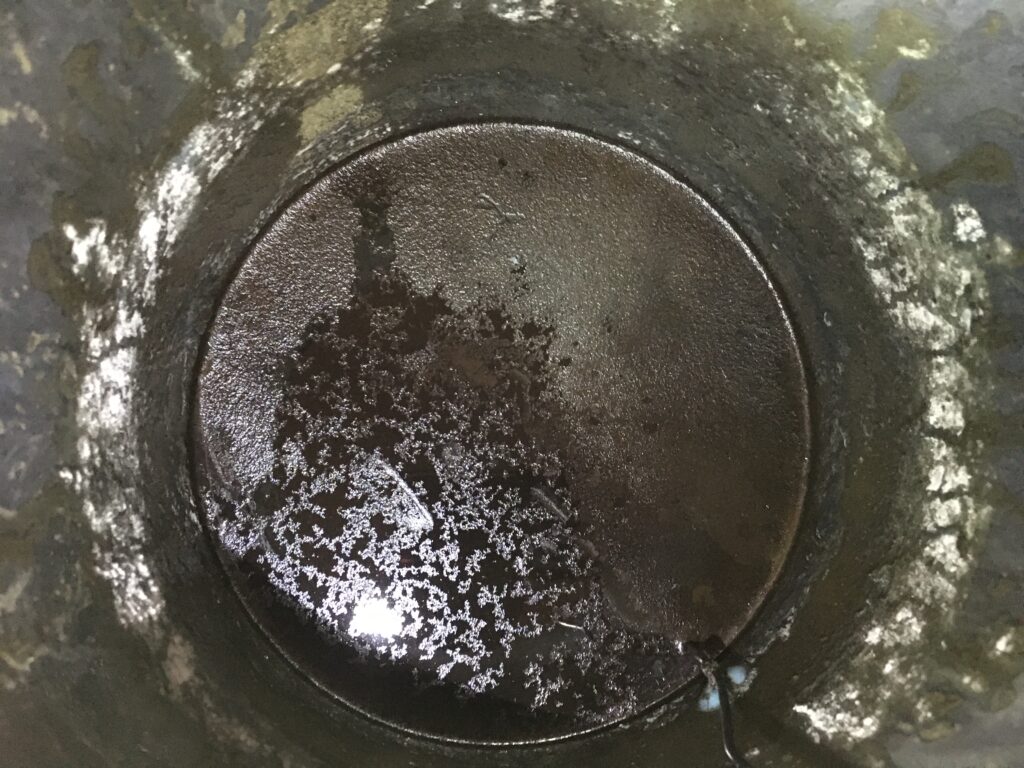
In the afternoon, I decided to add a bit of ash water as I feel the water level is too low. I heated up 1L of ash water to 60 degrees. The PH is now ~10 (as the water is heated up, PH goes down, it was 11 in room temperature). I added 1L ash water, a spoon (4g) of ca(0h)2 and 20ml sake. I added sake to see if it helps to start some reduction process. It was mixed after this process well in mid day. No mixing in the evening.
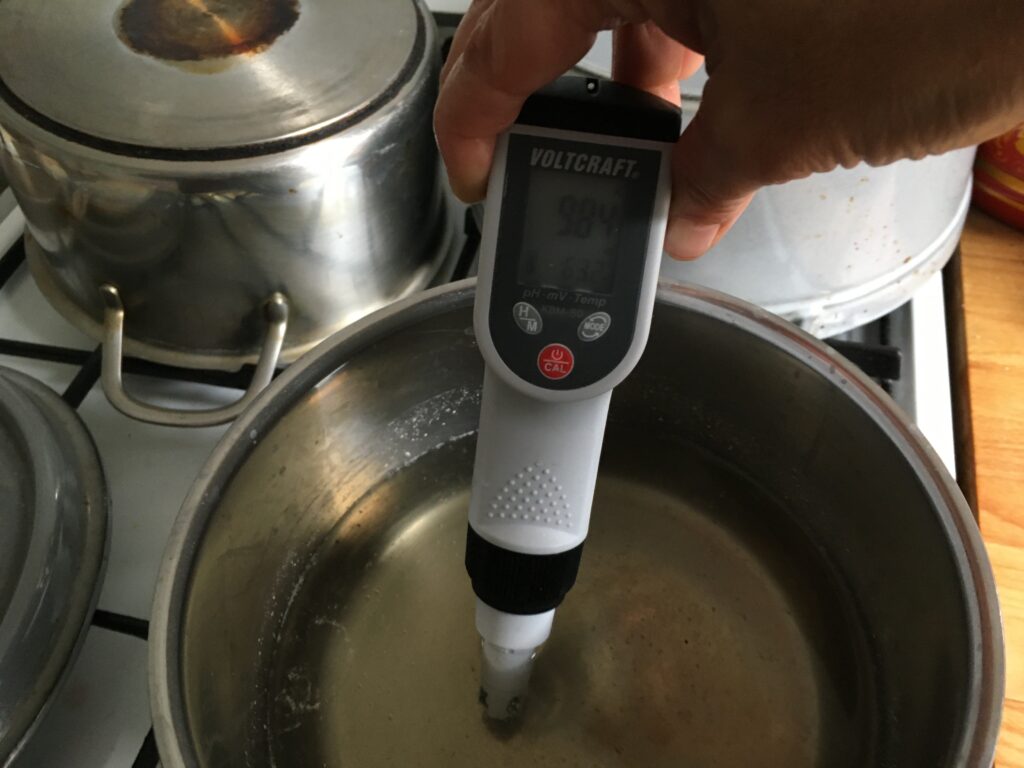
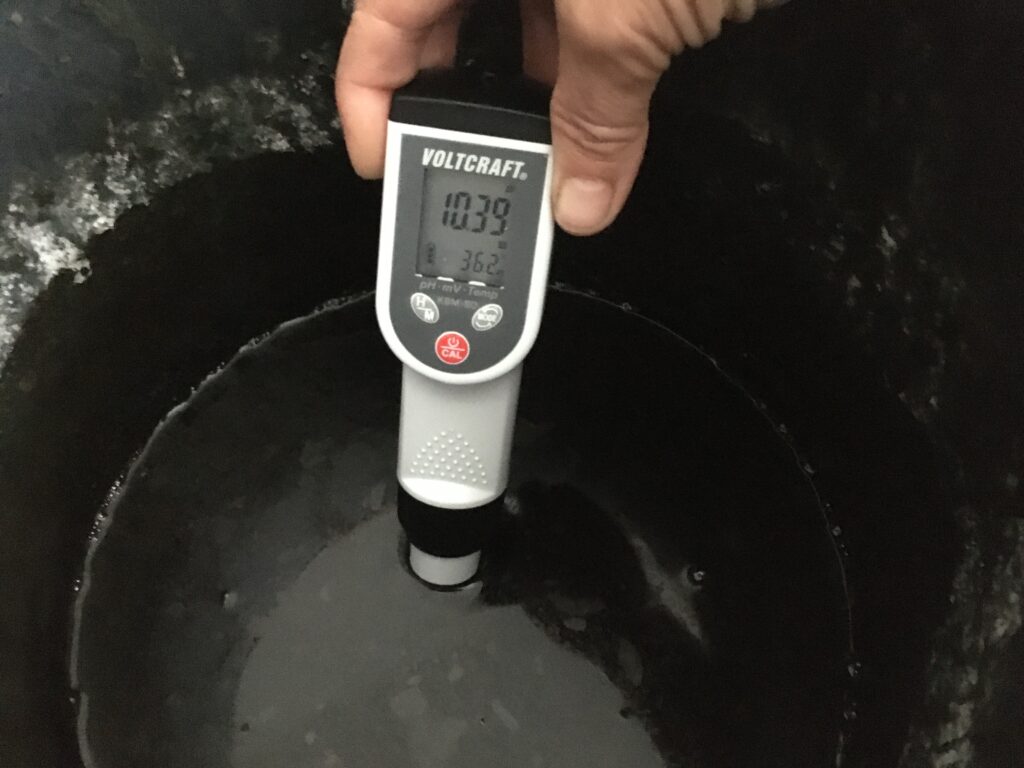
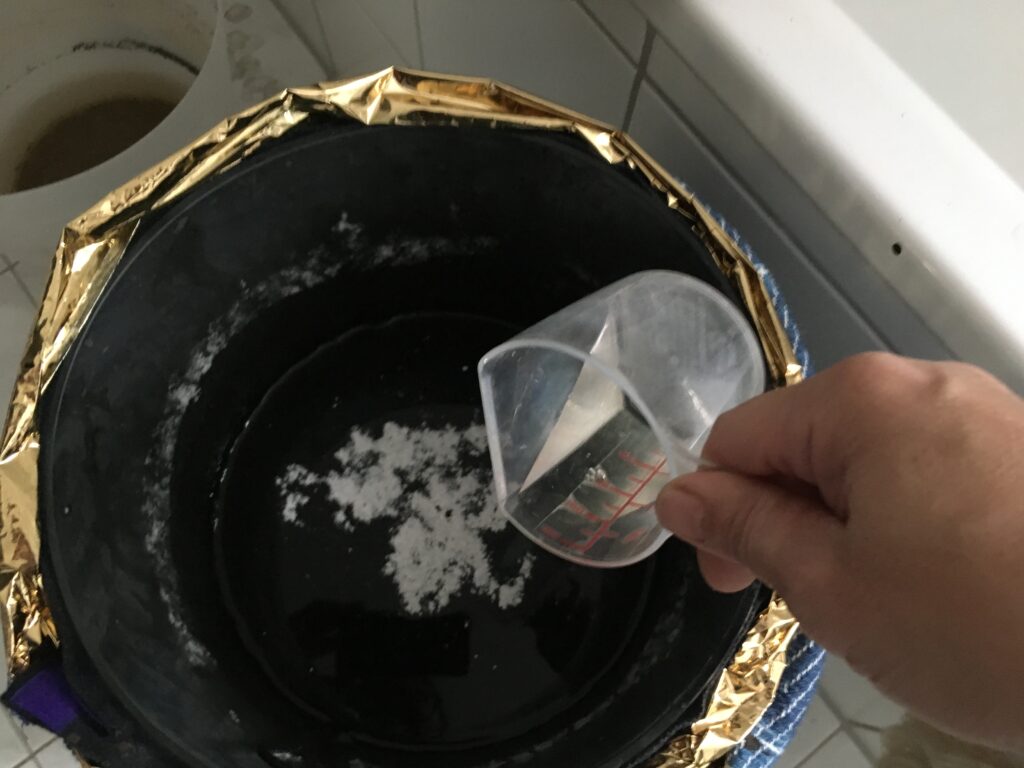
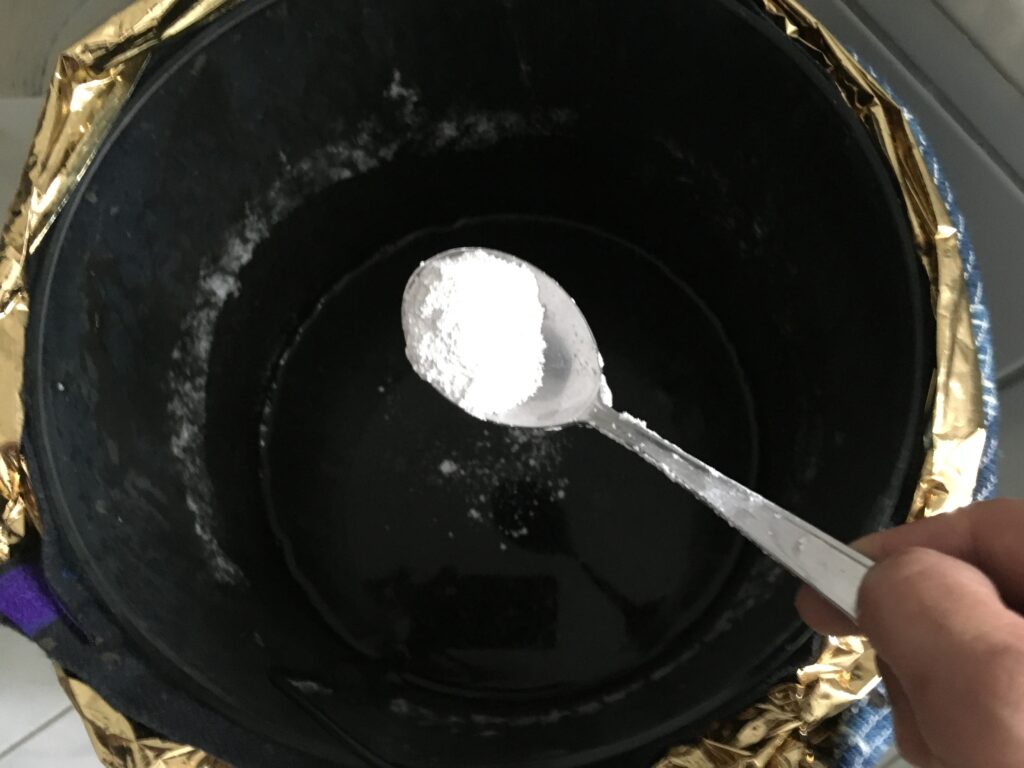
A friend, Alejandra works at a university lab, and has kindly made a super magnified microscopic images from the Day58 sample. It is super interesting to see what is inside the vat liquid. There are some living organisms, a lot of round ones and some longer ones. I of course do not know which ones are good ones and how to read this photo…. but good to know there are some people living in the vat!
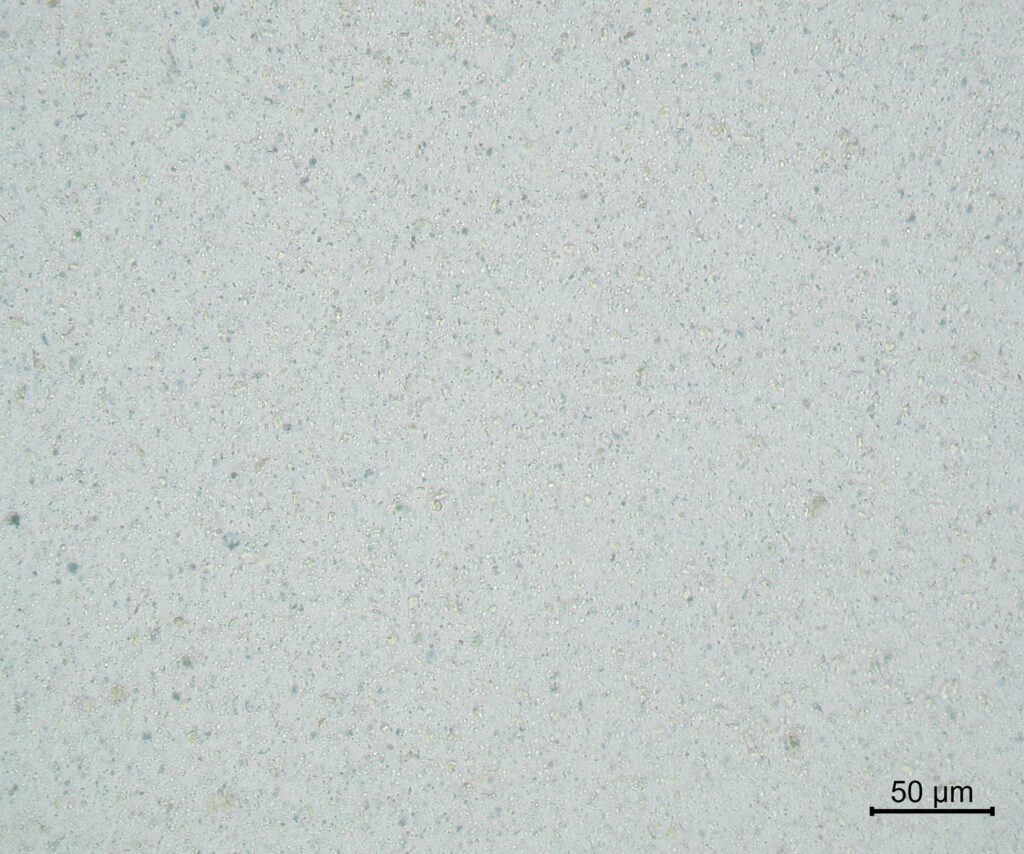
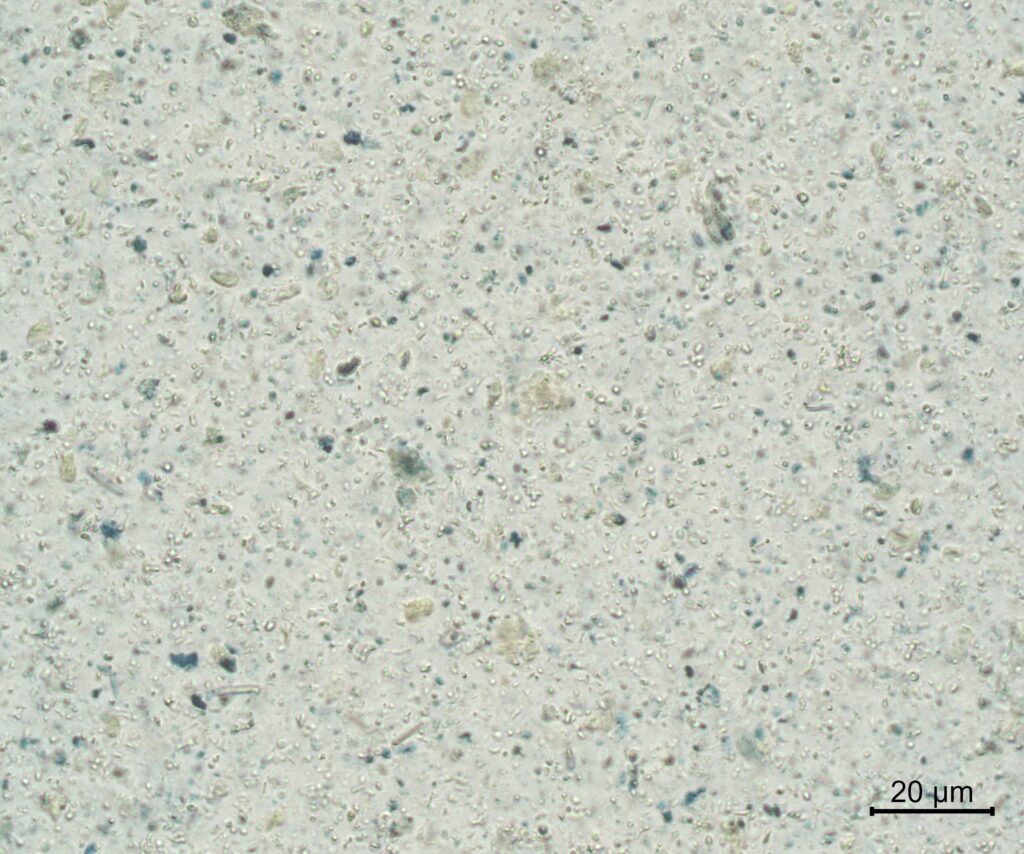
Day 62: Dusty things again. it seems not so much change for the last days. The white fungi on the wall of the vat is also increasing. I decided to let it be for the moment. PH is back to over 11 and it feels slippy/soapy when touching. Smell is also mild, but less in indigo direction. No color on color test. Mixed well in the morning.
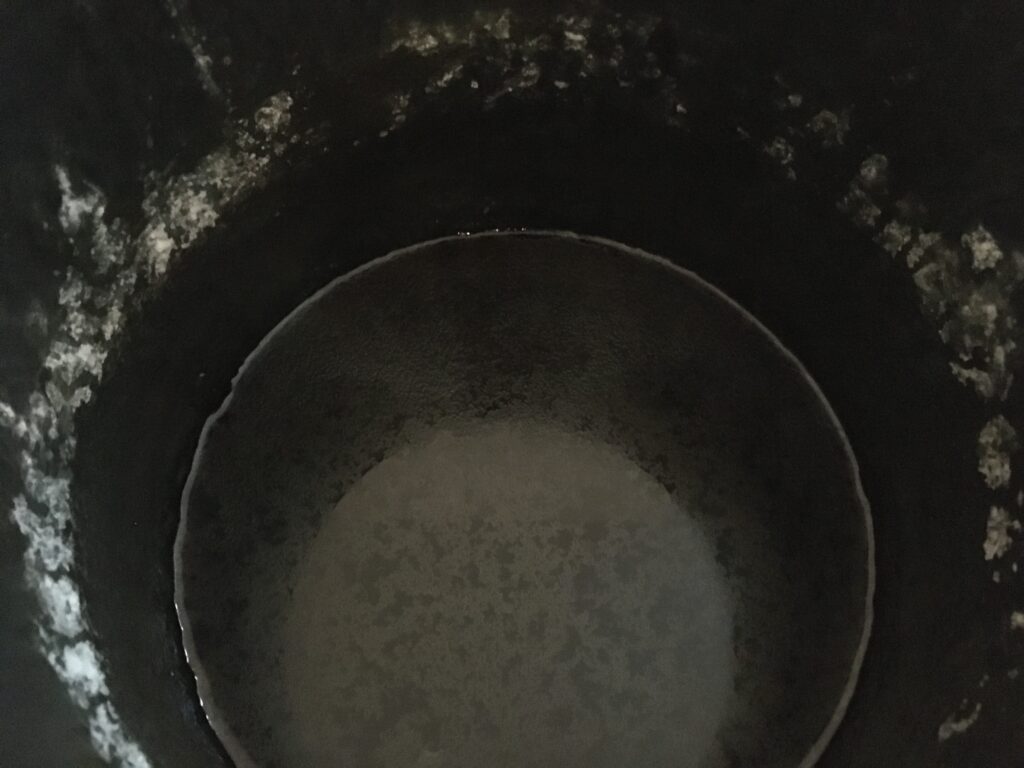
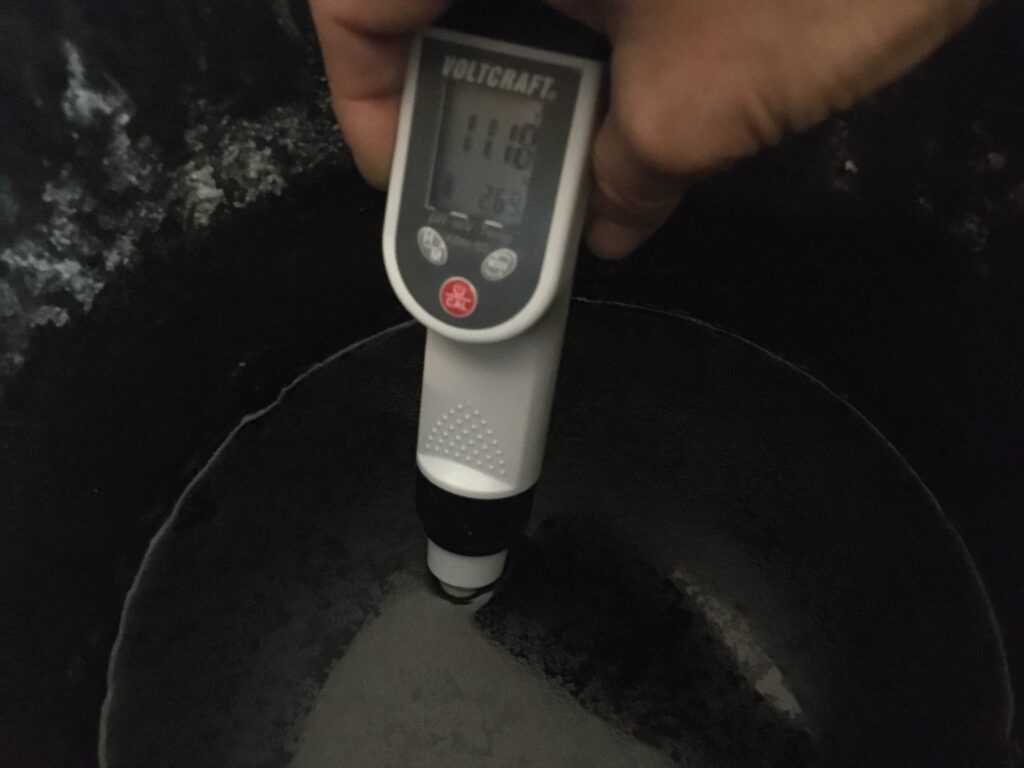
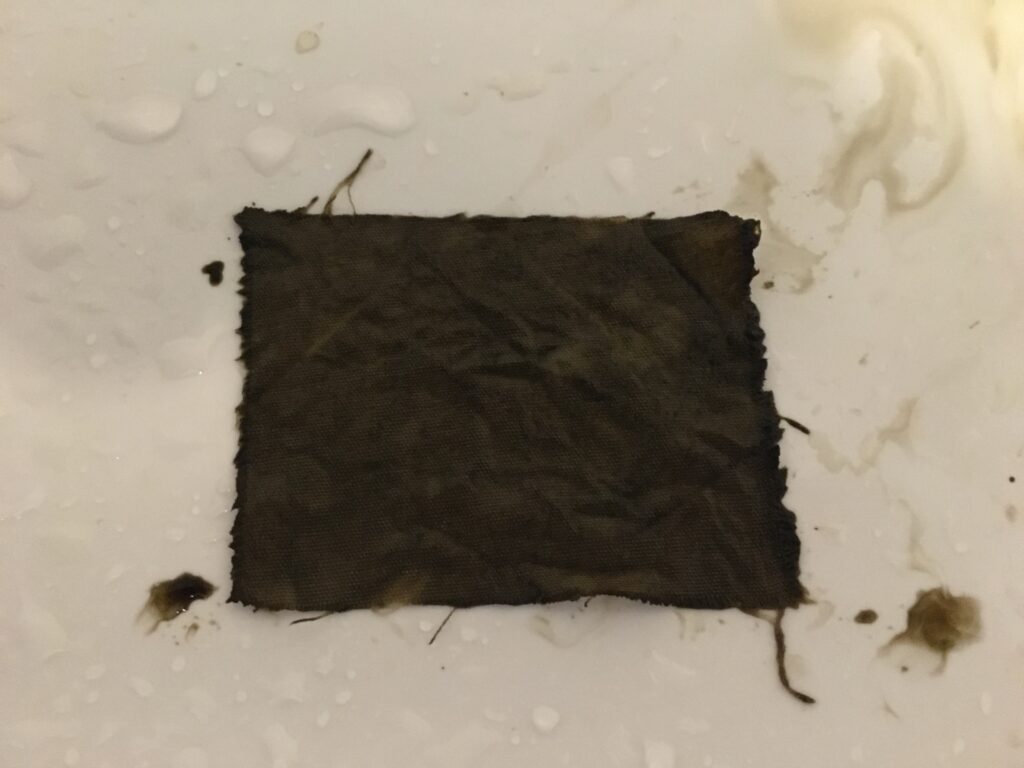
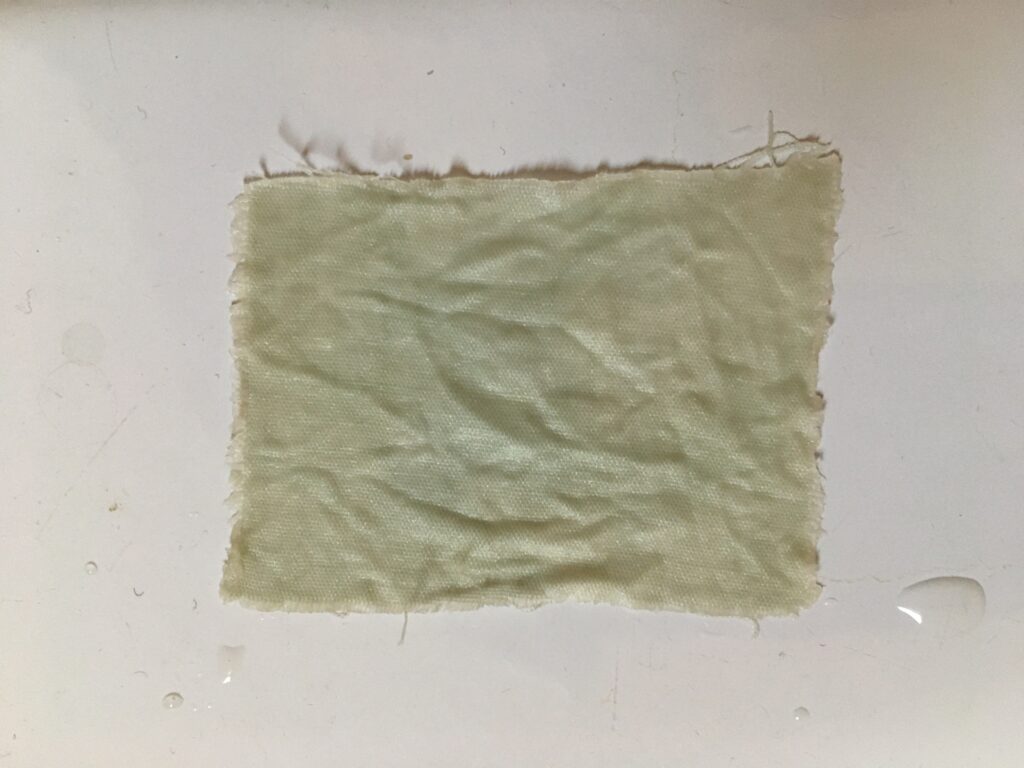
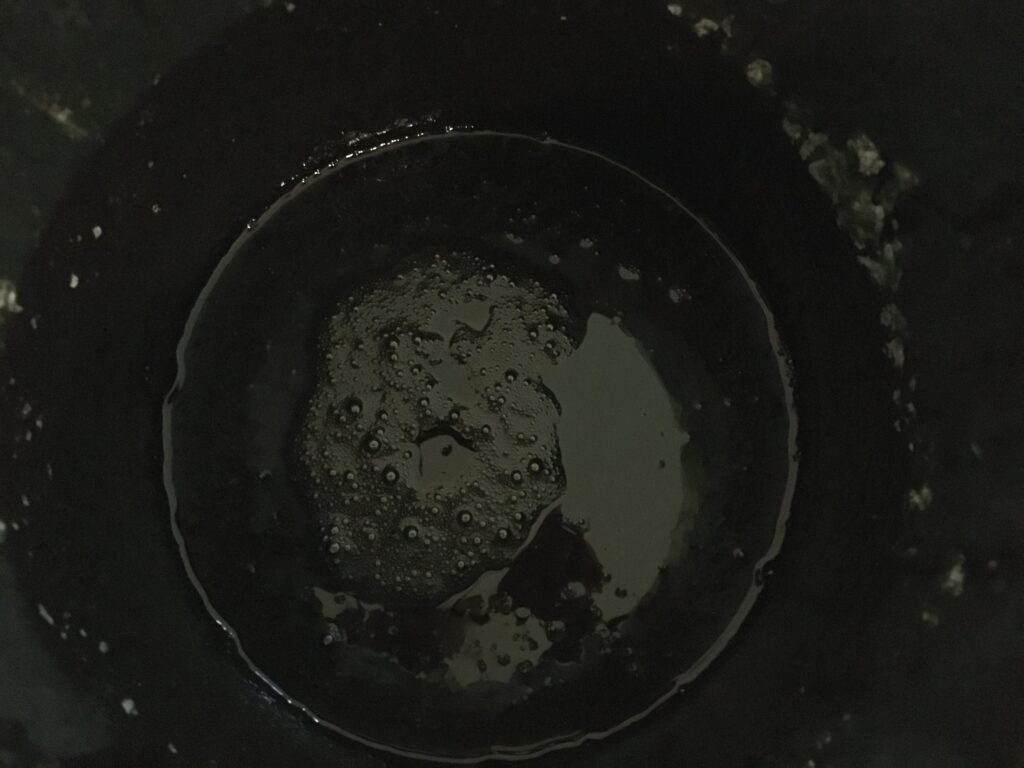
Day 63: Still no significant change. In the morning, it has a bit of dusty things, PH is staying around 11. Smell is very mild, not so much indigo smell anymore. Liquid is soapy, almost no color on the color test.
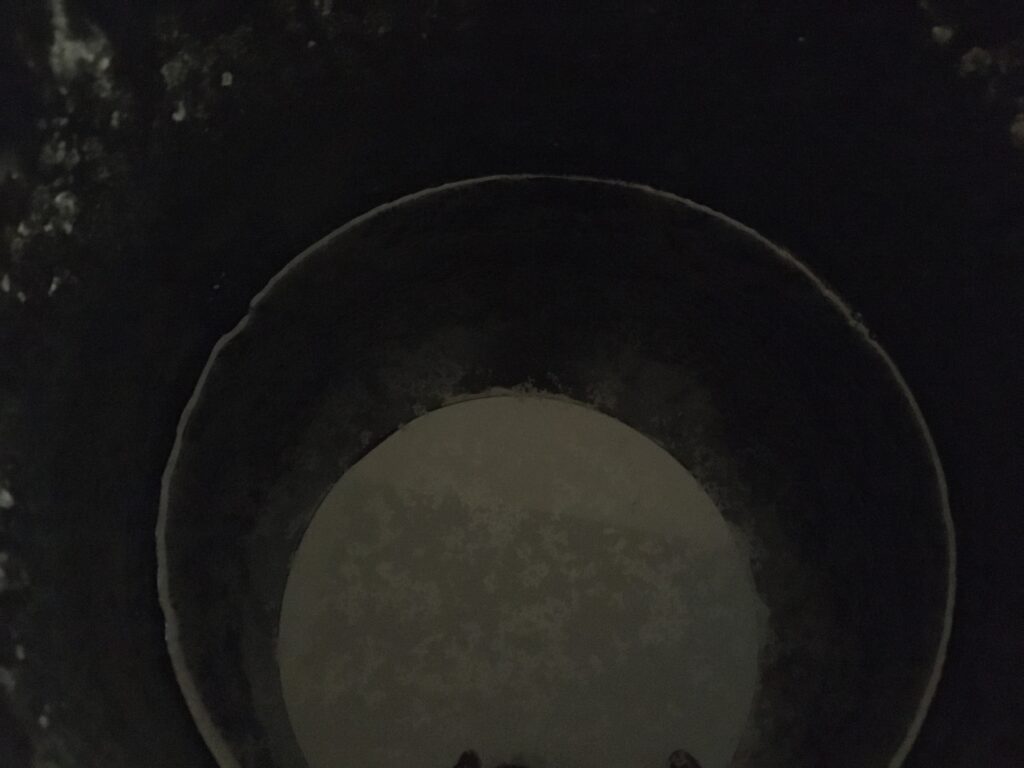
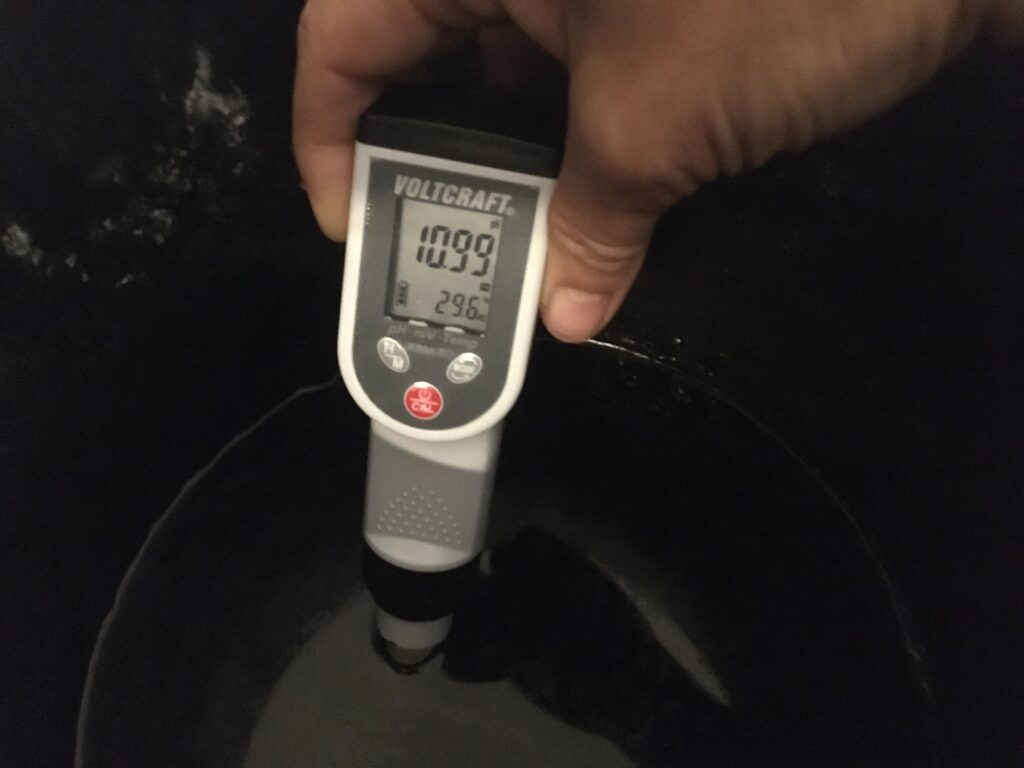
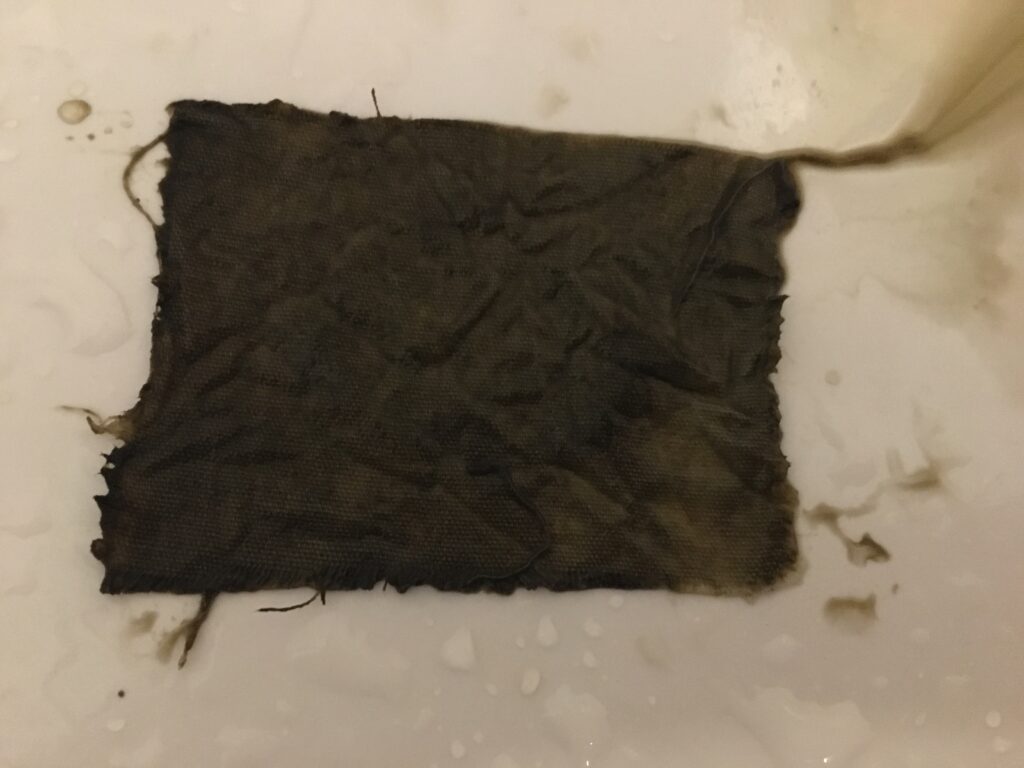
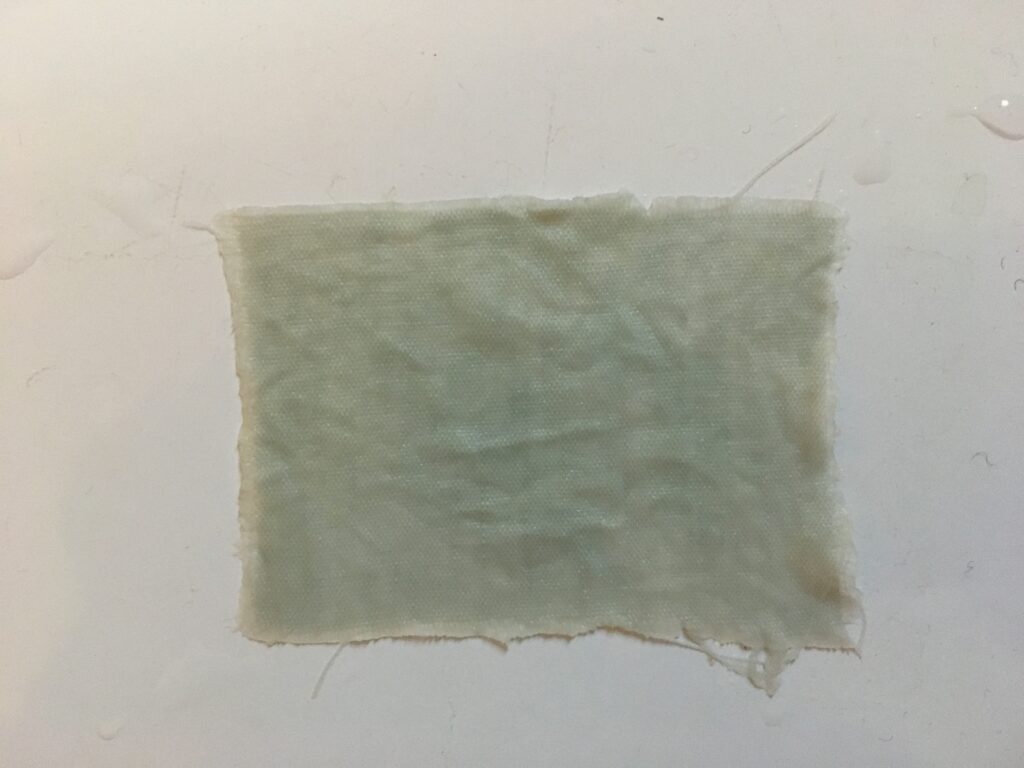
Day 64:
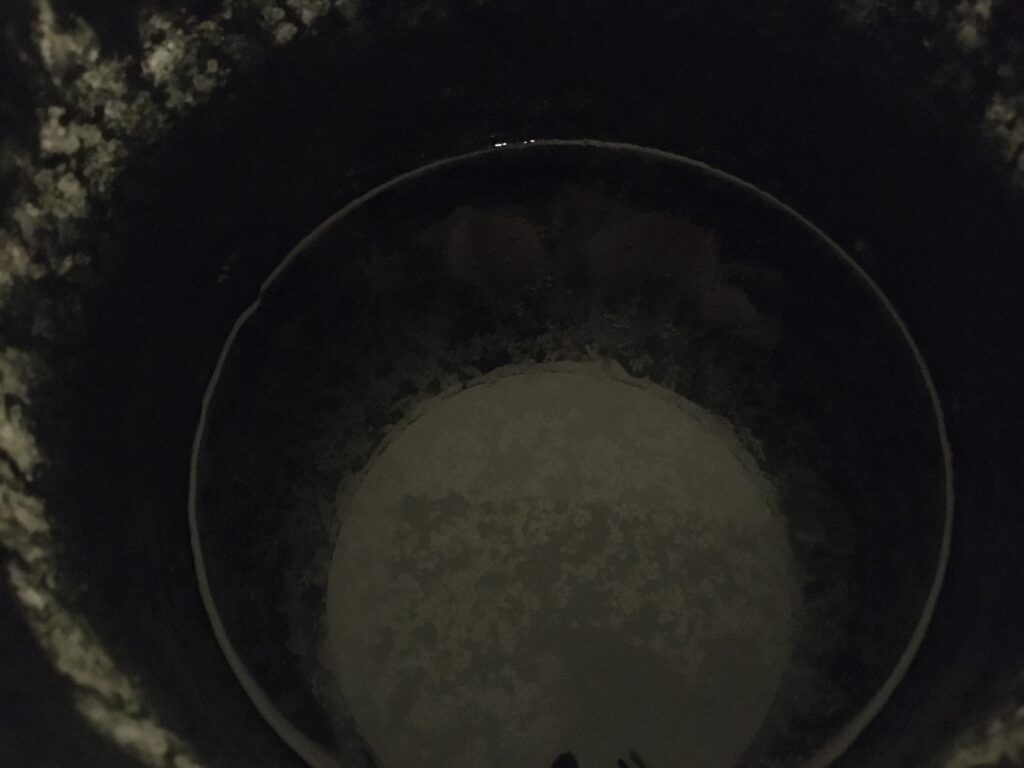
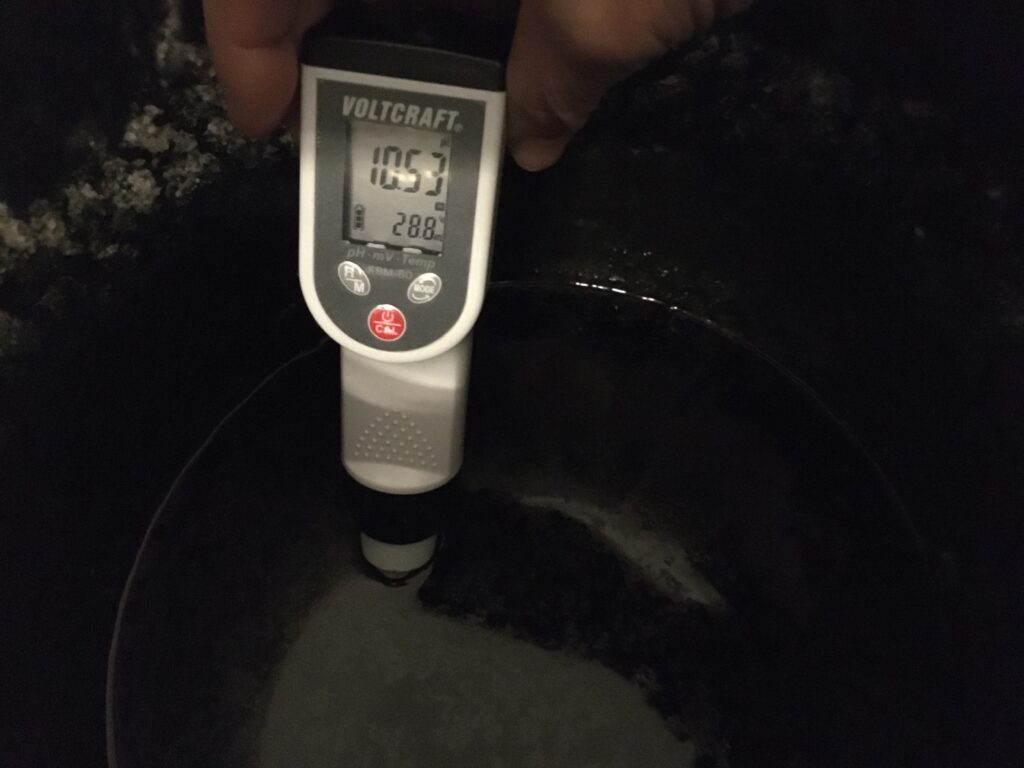
Day 65: It is sunday. This week has been very busy and I did not have time to spend with vat on the weekend. Just a minimum check. Even the activity in the vat seems to be very little, PH is definitely dropping.
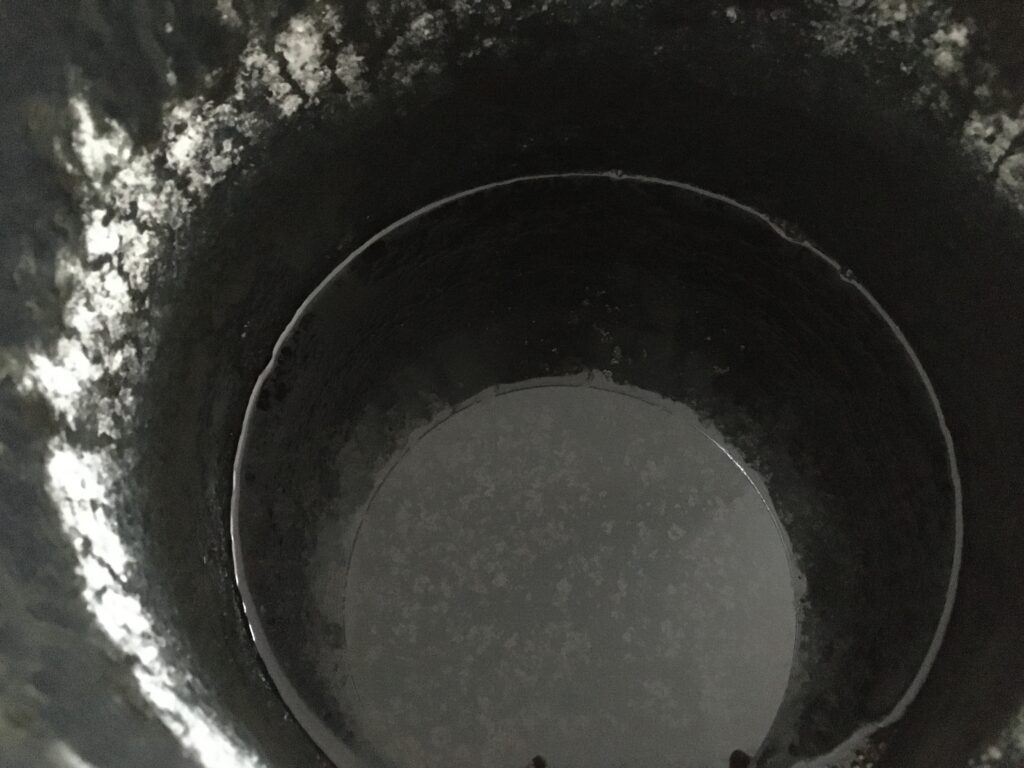
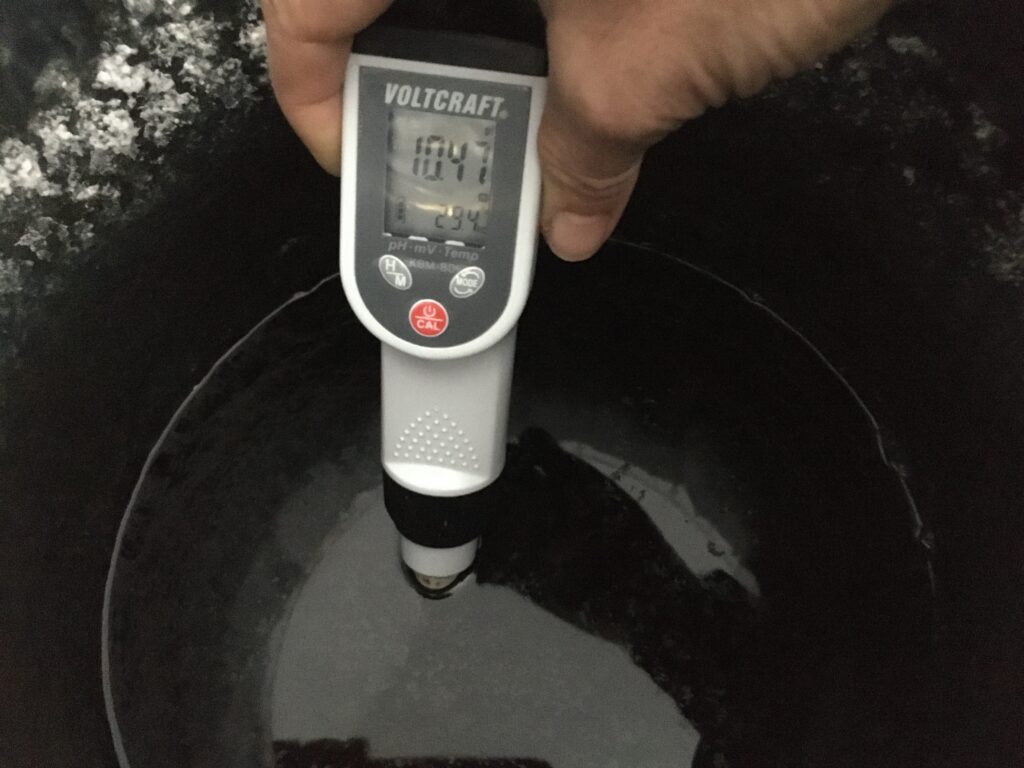
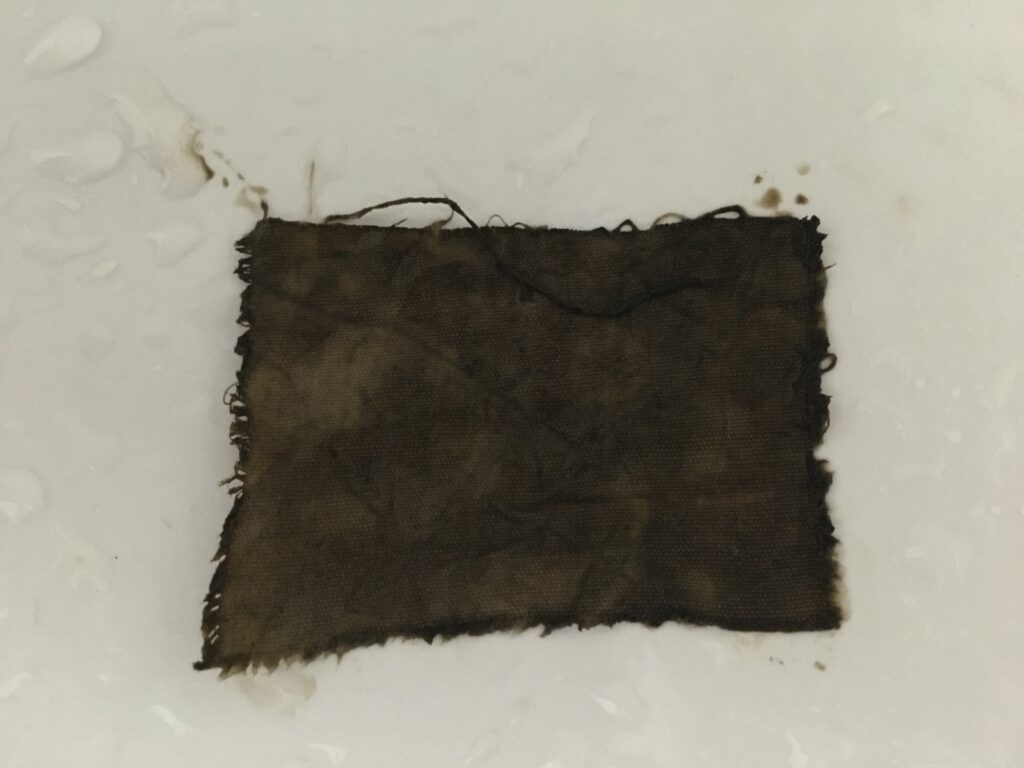
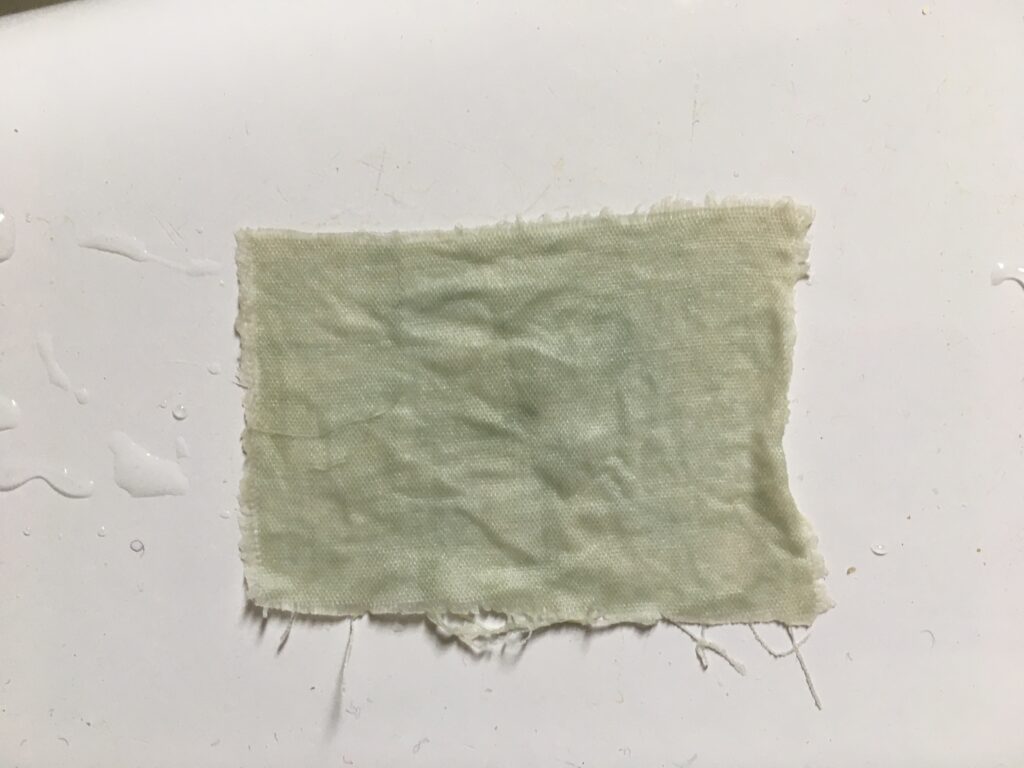
Day 66: Surprisingly the PH is dropping. The surface looks still very silent. The white fungi on the side is getting very active. It looks like a snow and is kind of beautiful. No sign of color. The smell is still mild. I added a spoon (not so full) of ca(oh)2.
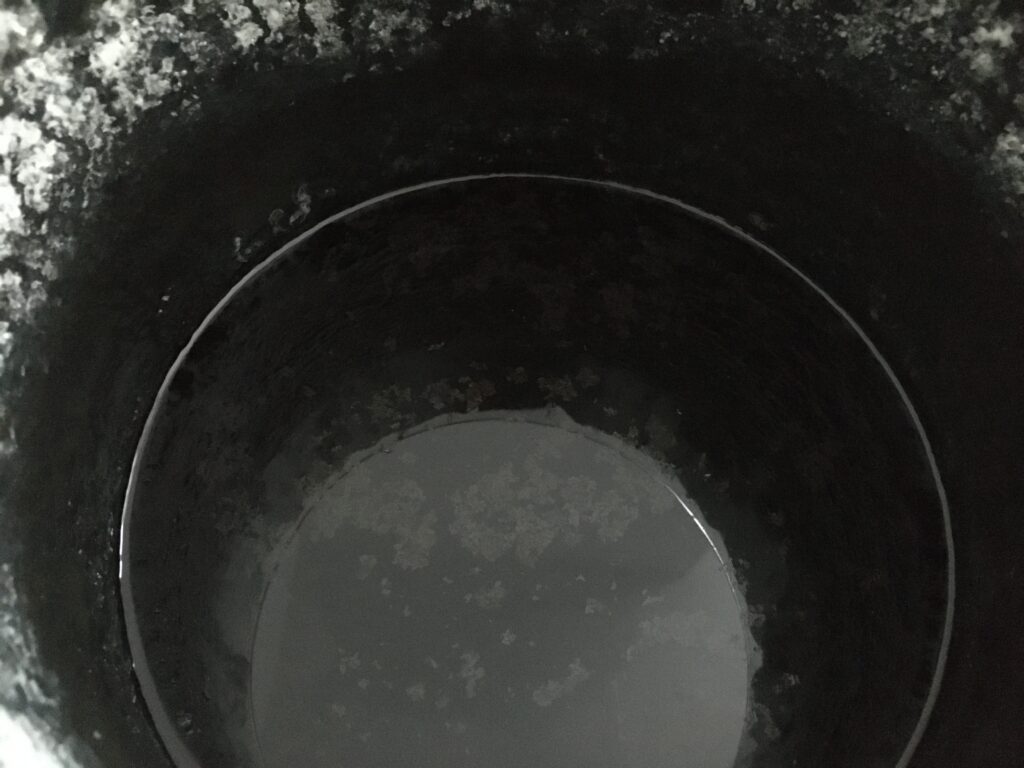
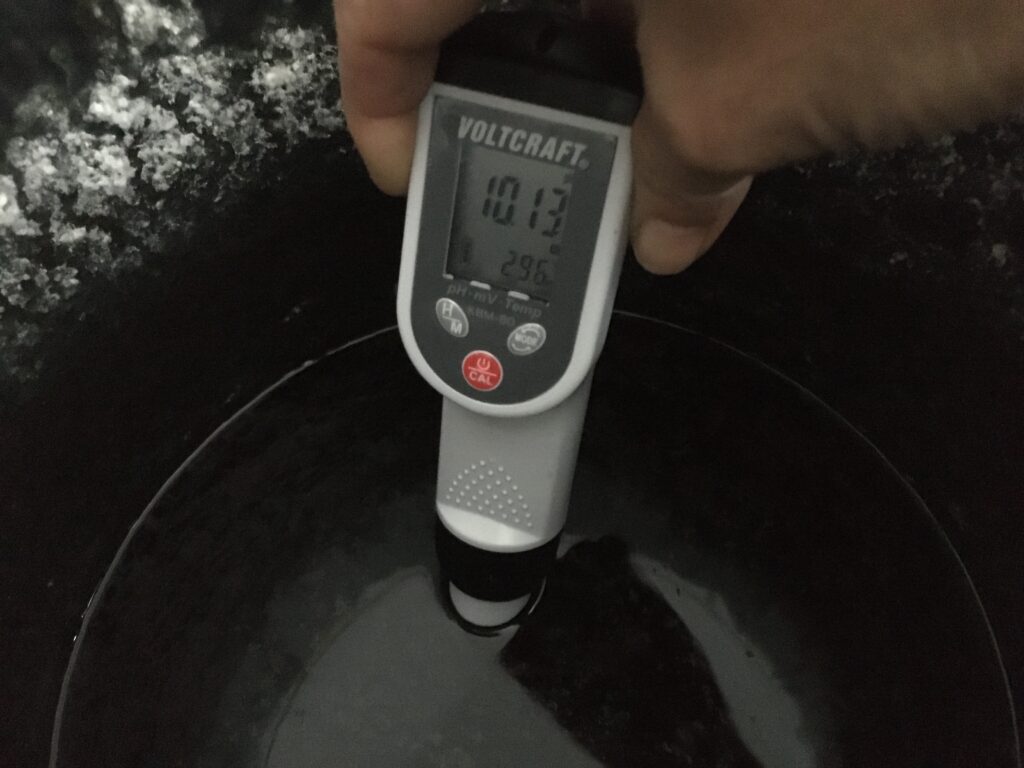
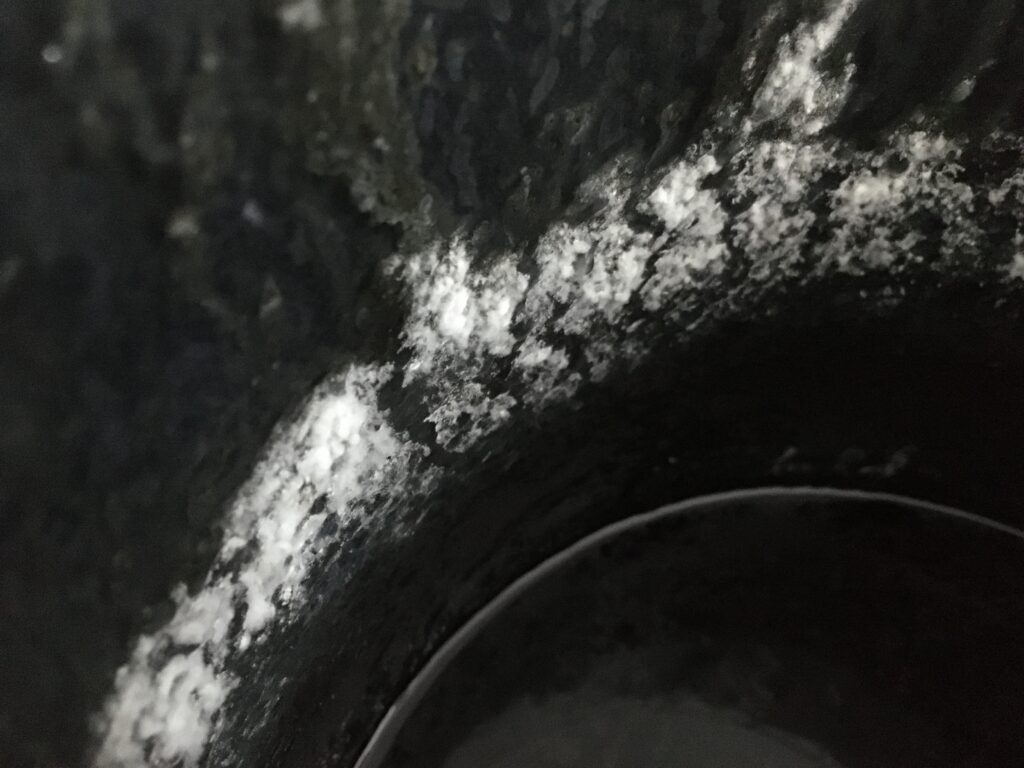
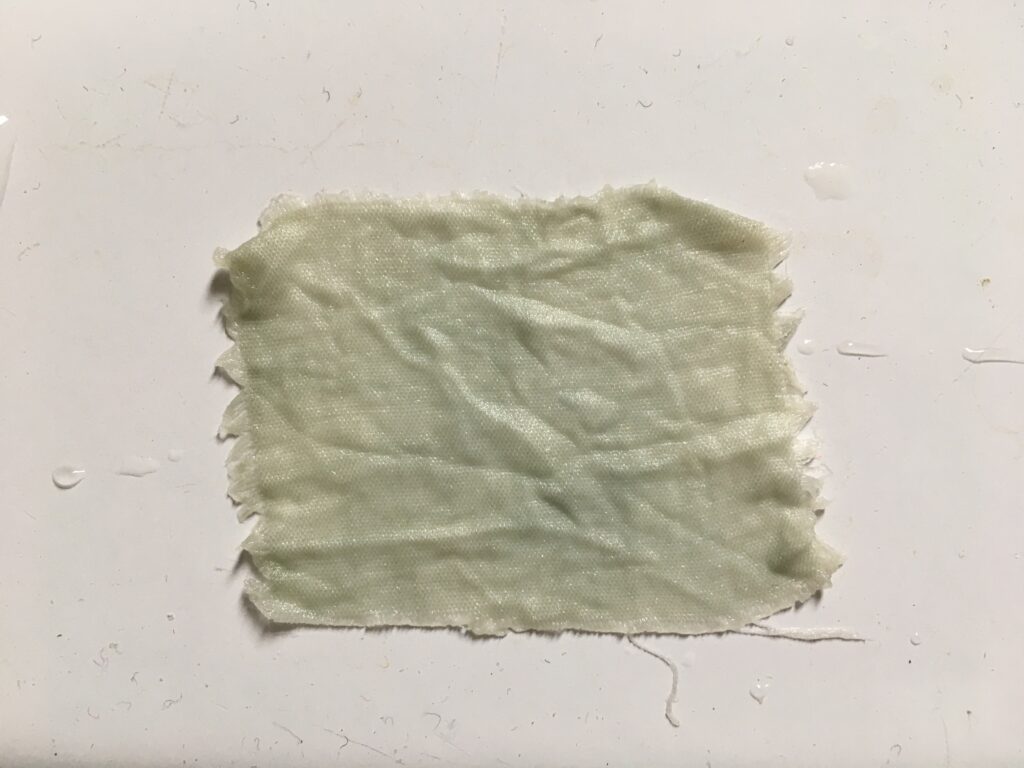
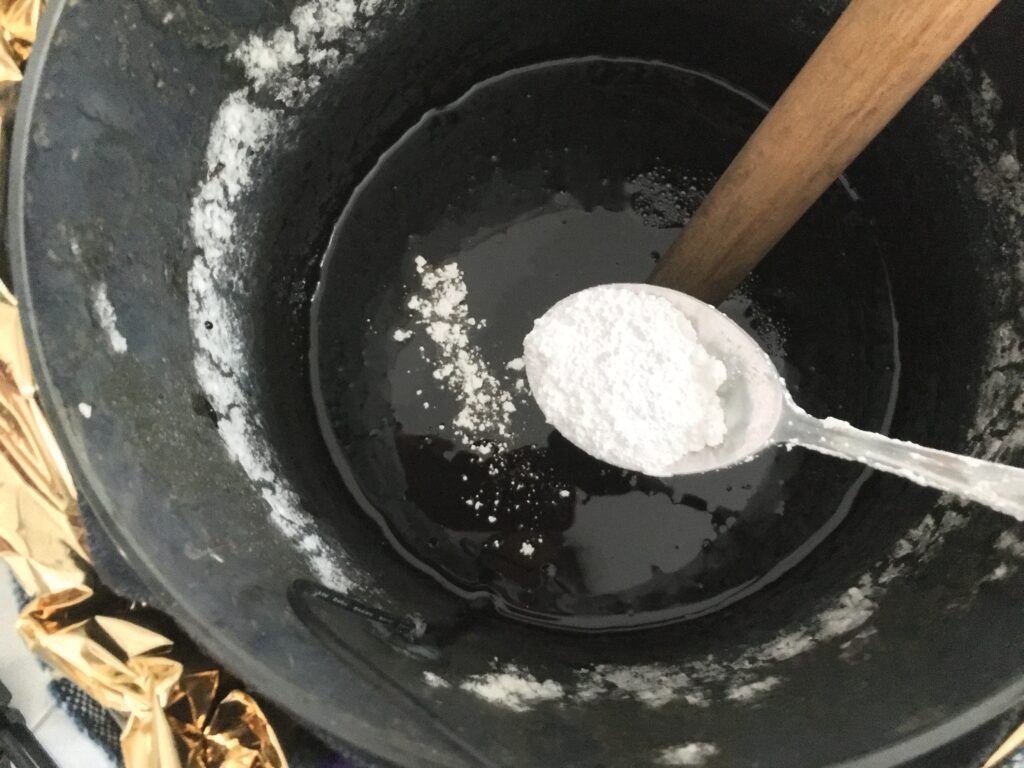
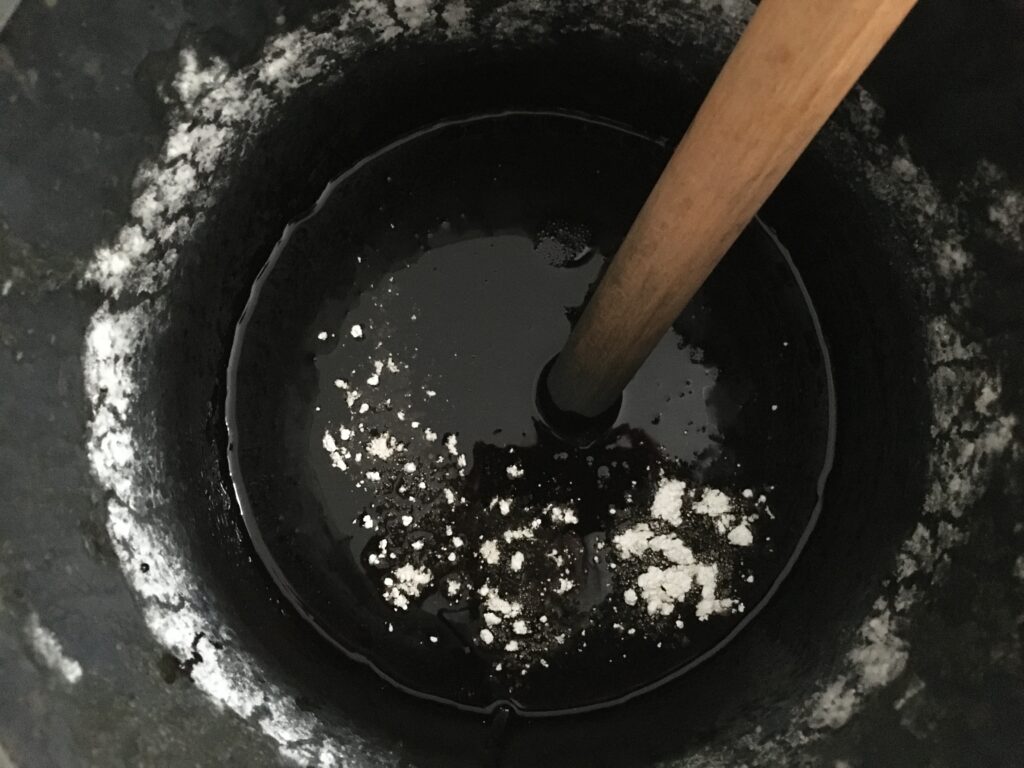
Day 67: Still not a big change. Even I added calk yesterday, the PH is still 10.2. I added one more spoon of ca(oh)2. color test still show very little color. When mixing the vat, I notice slight different smell. I can not explain what it is though.
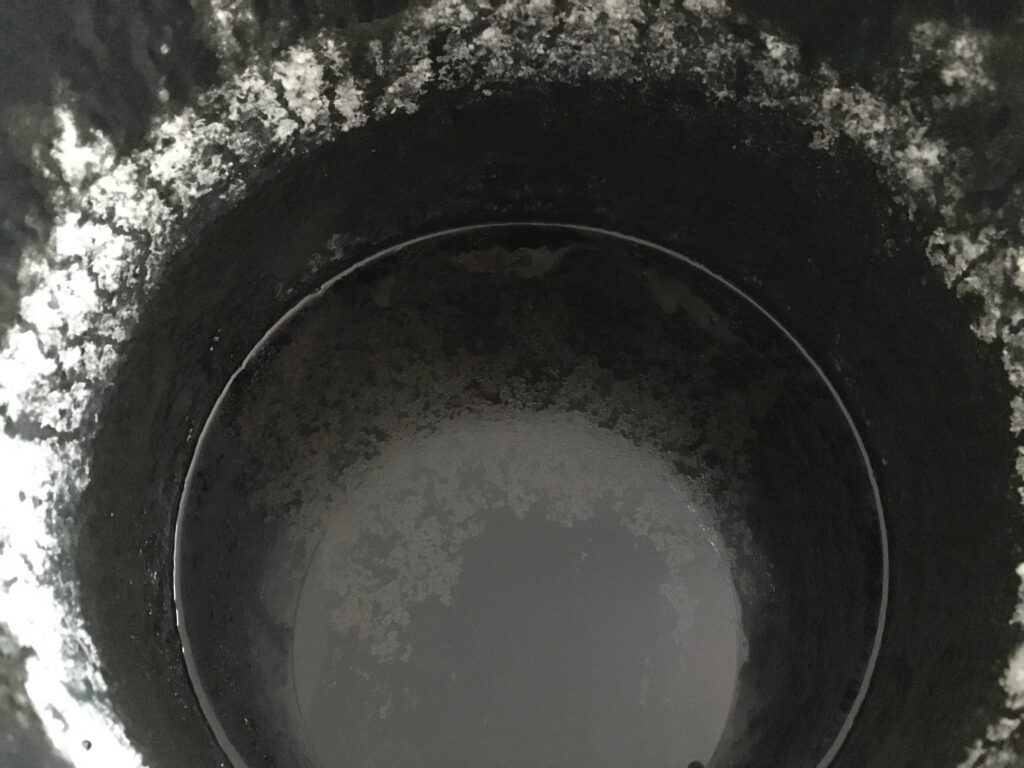
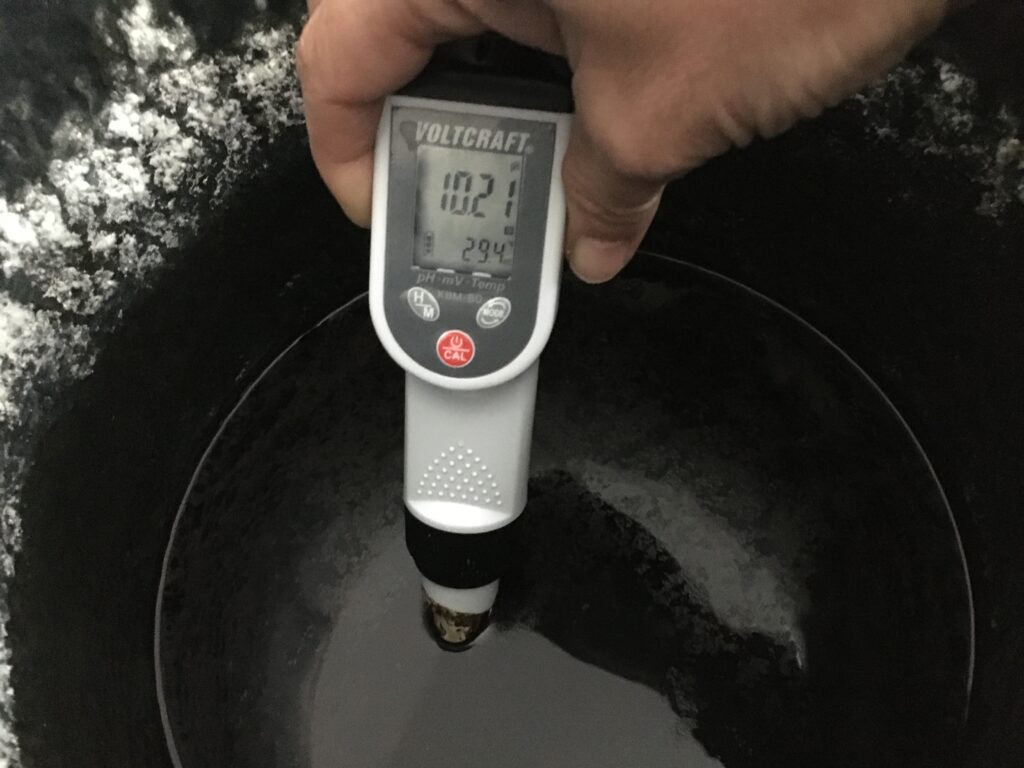
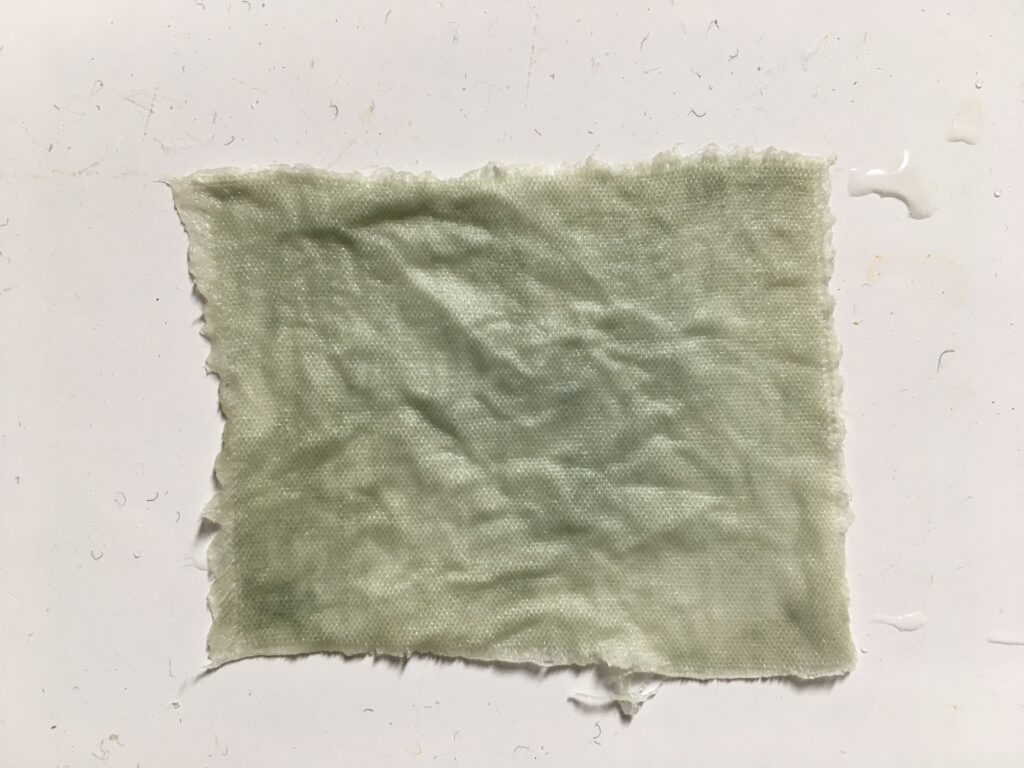
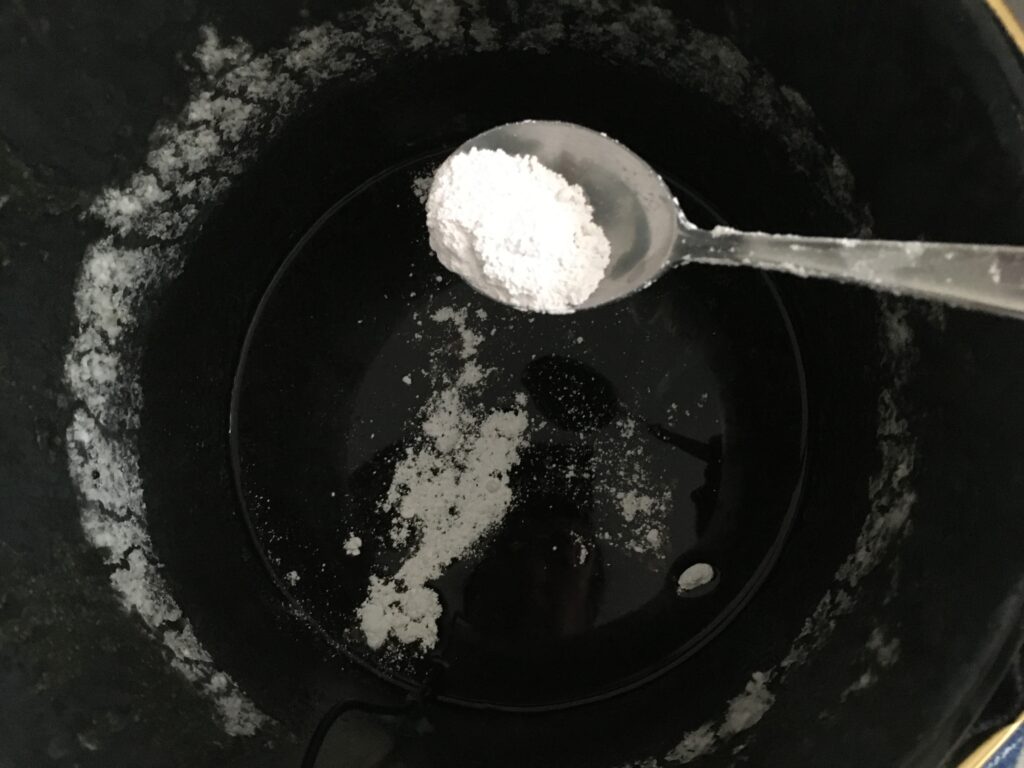
Recently I encountered two very interesting books. The left one was recommended by Melanie, the right one was borrowed from Madlen, a colleague from the garden project. They both had very interesting detailed explanation of fermentation vat, recipe and even explanation of how to compost sukumo. Each authors have slightly different recipes, just like cooking.

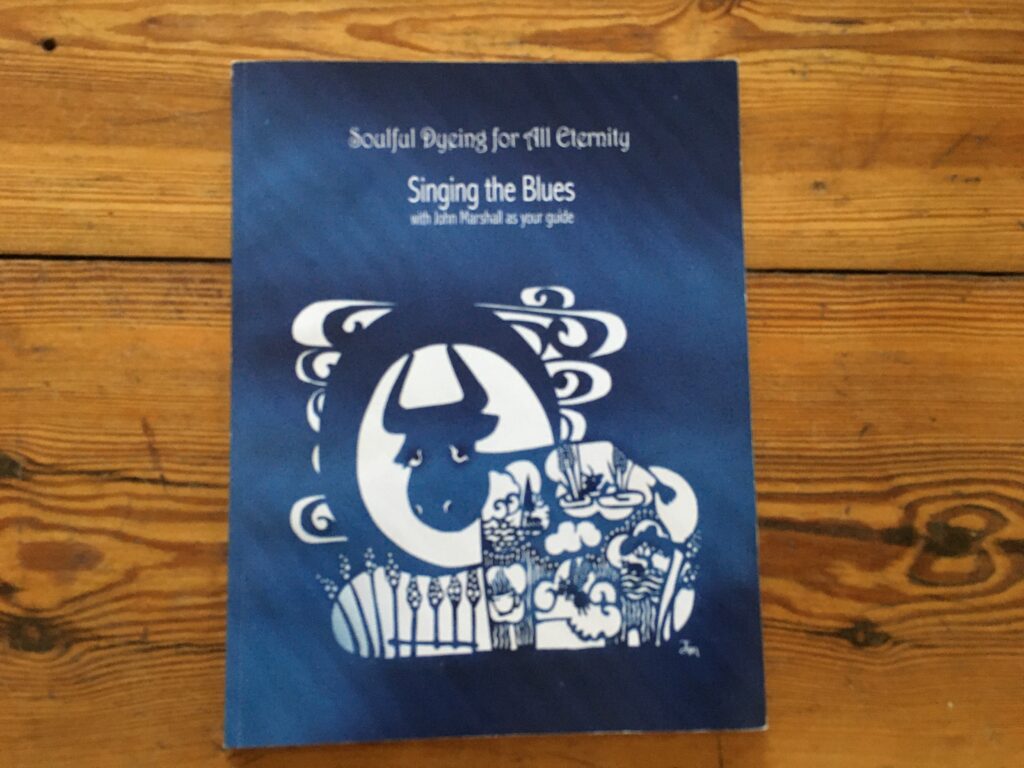
In the Singing the Blues book (which seems to be privately published, no ISBN) mentions different kinds of vat and different kinds of feeding the bacteria. With ash water (K2CO3) and calk (ca(OH)2) creates 2KOH and CaCO3 in the vat. The author recommend in this case to use gluten, sucrose or sweet potato as food for bacteria. He recommend sake when you have only ash water in the vat. So this means, I should rather use bran as food than sake. Very good point.
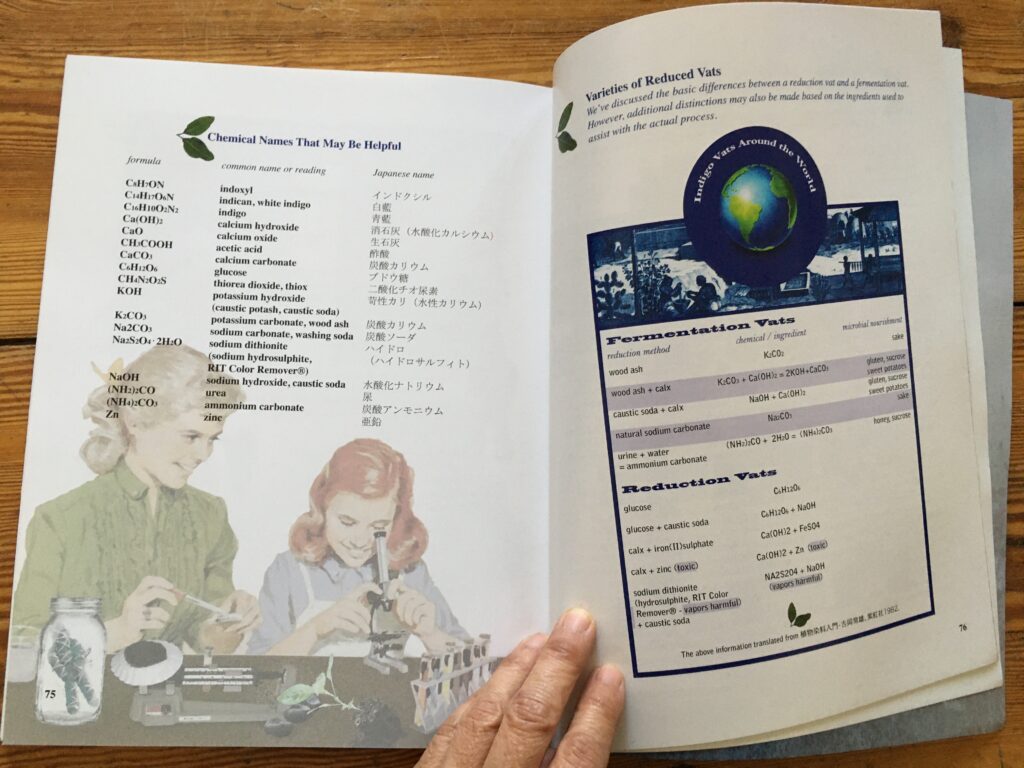
Day 68:
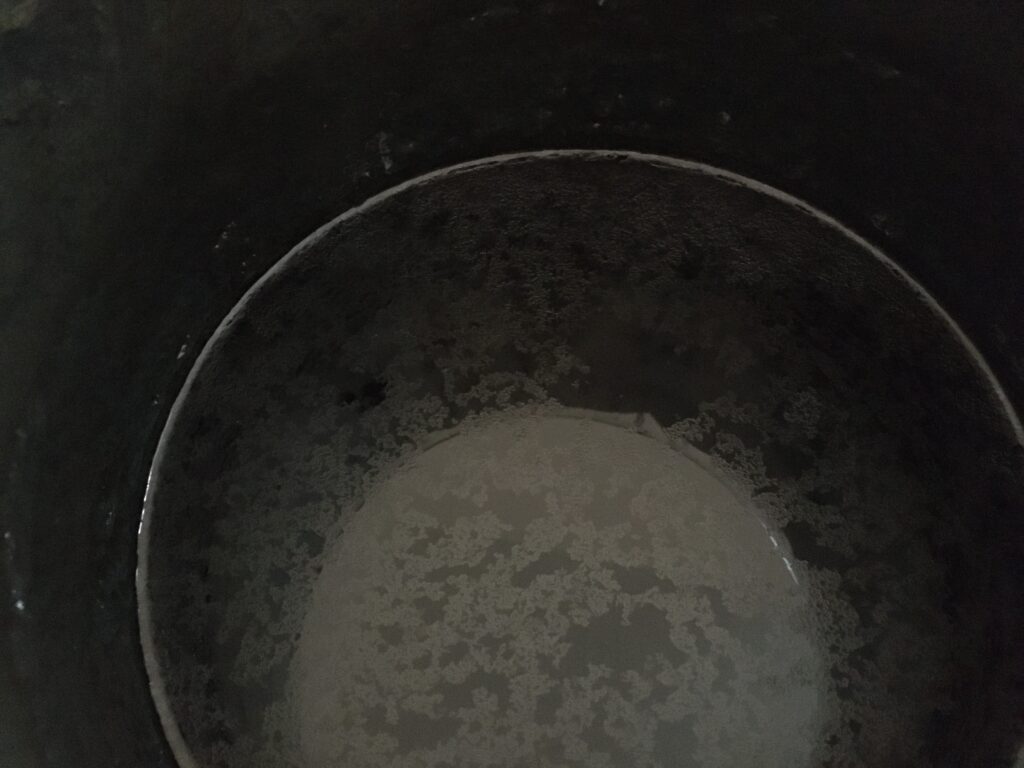
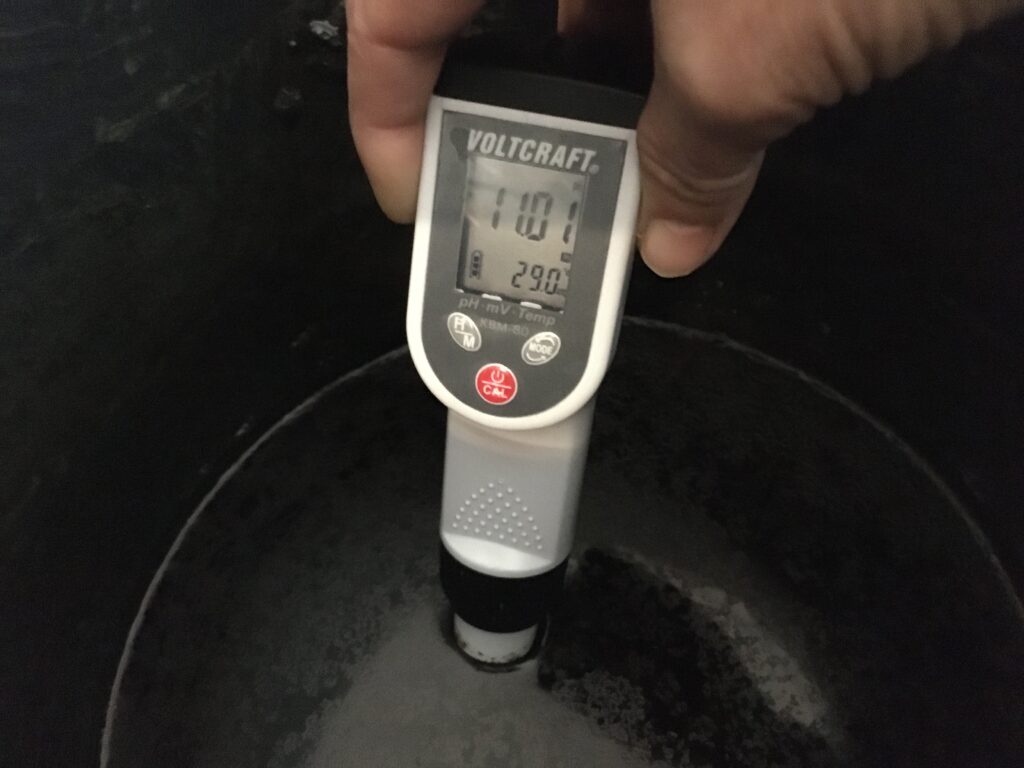
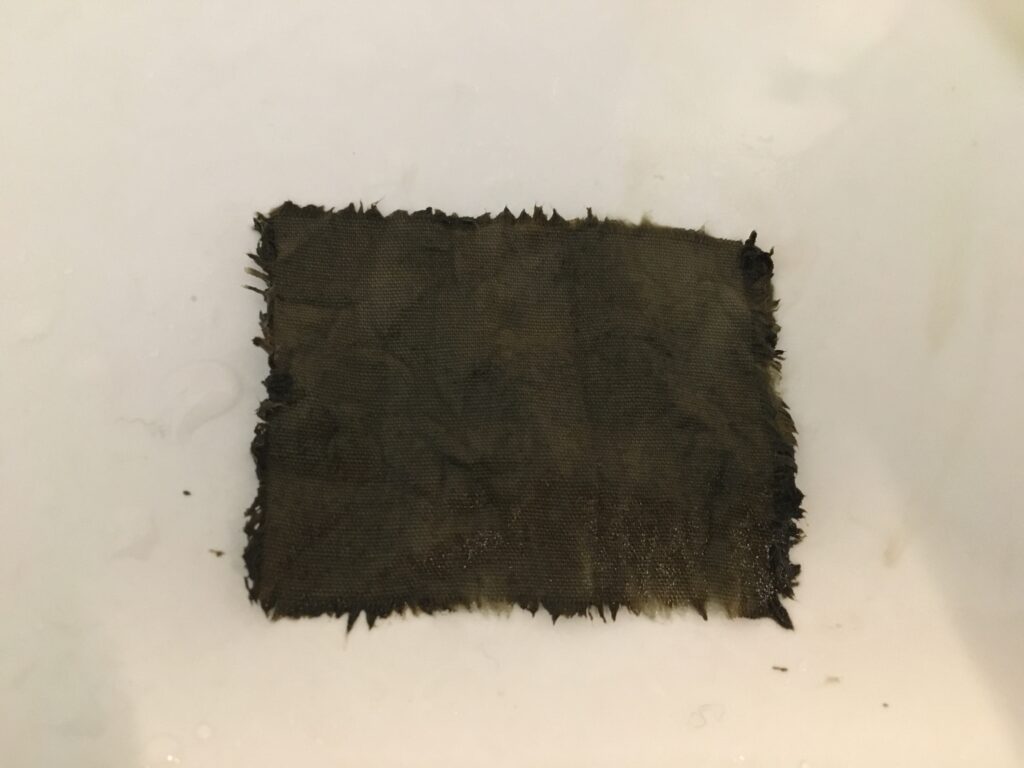
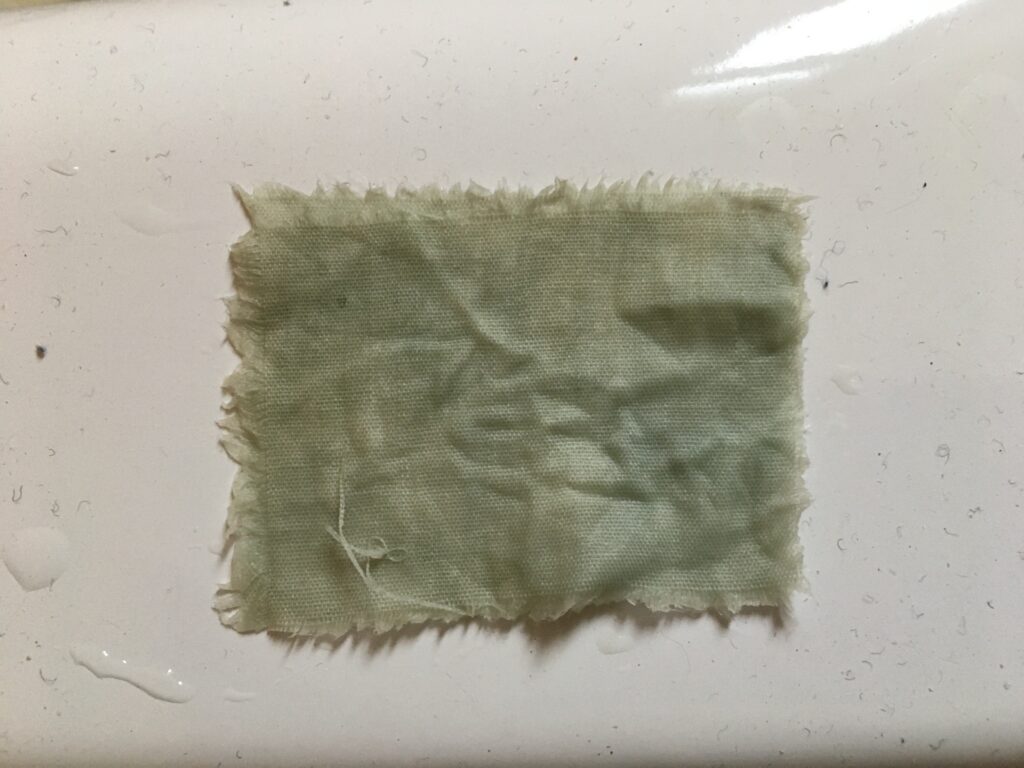
Day 69:
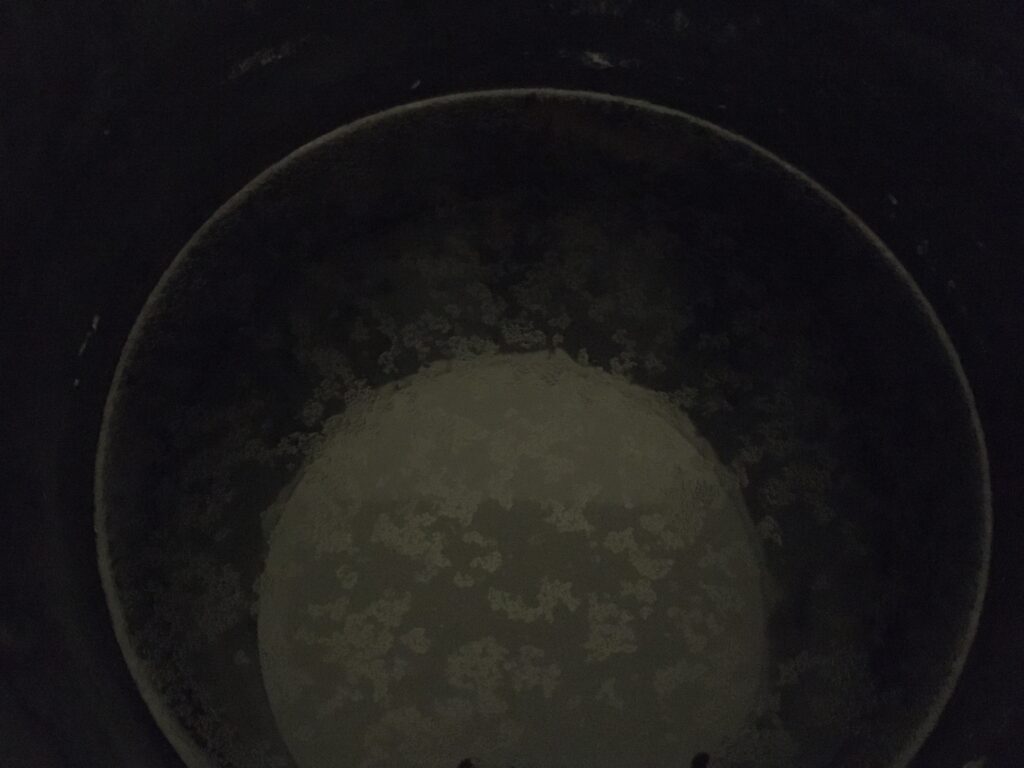
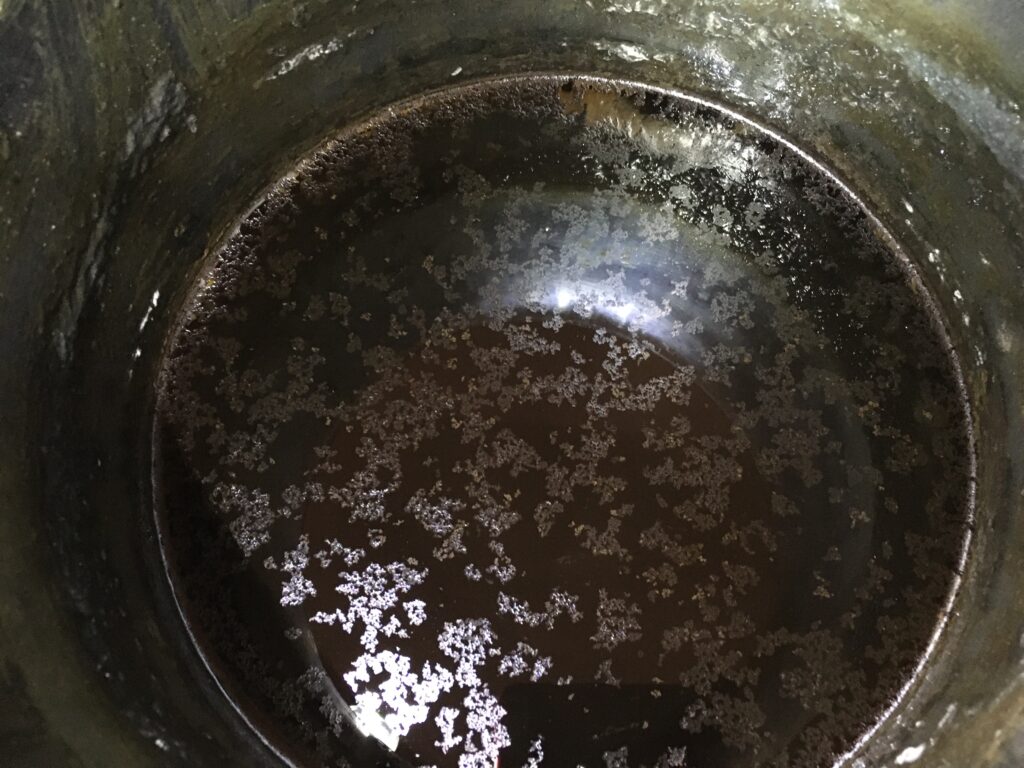
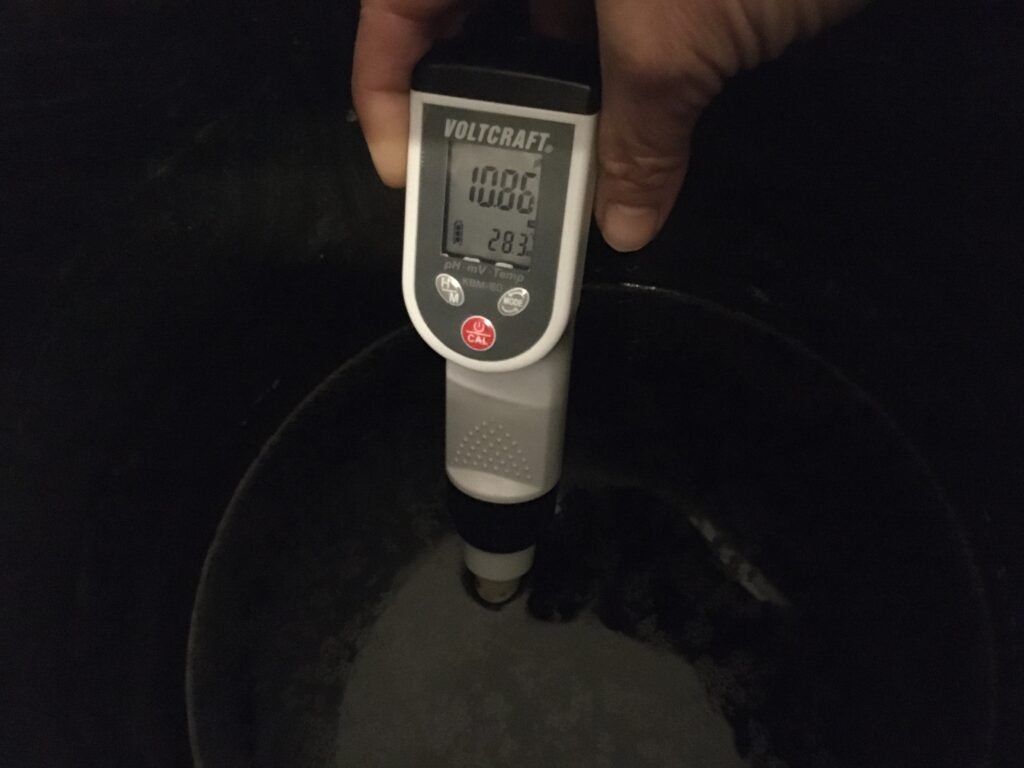
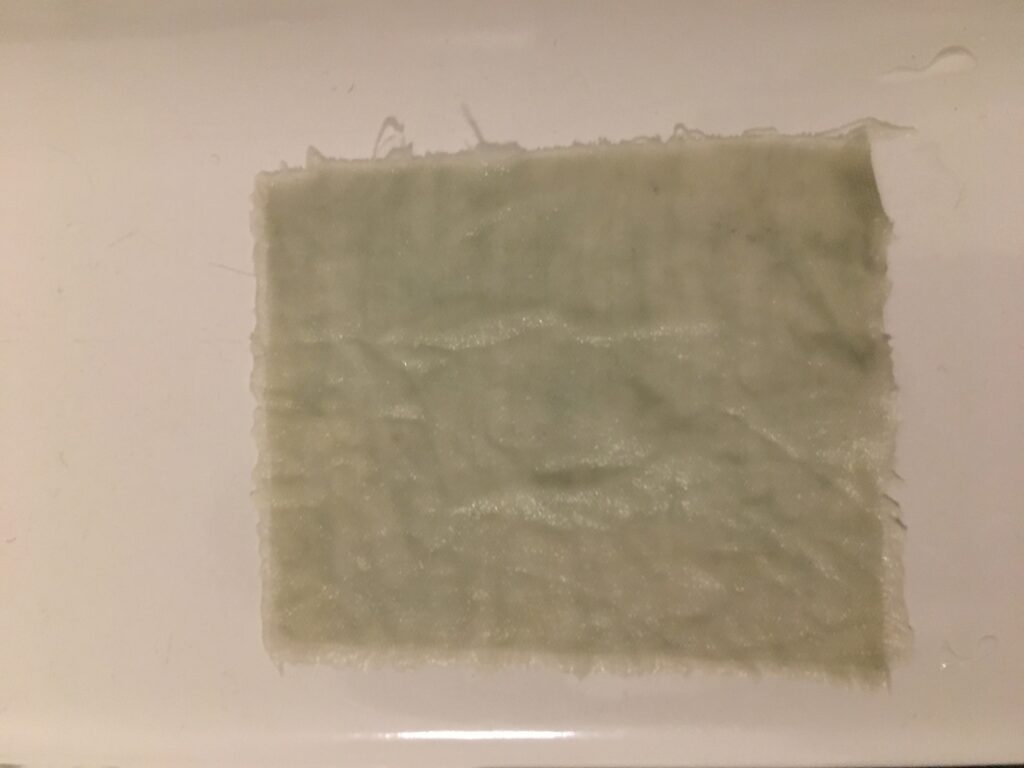
Day 70
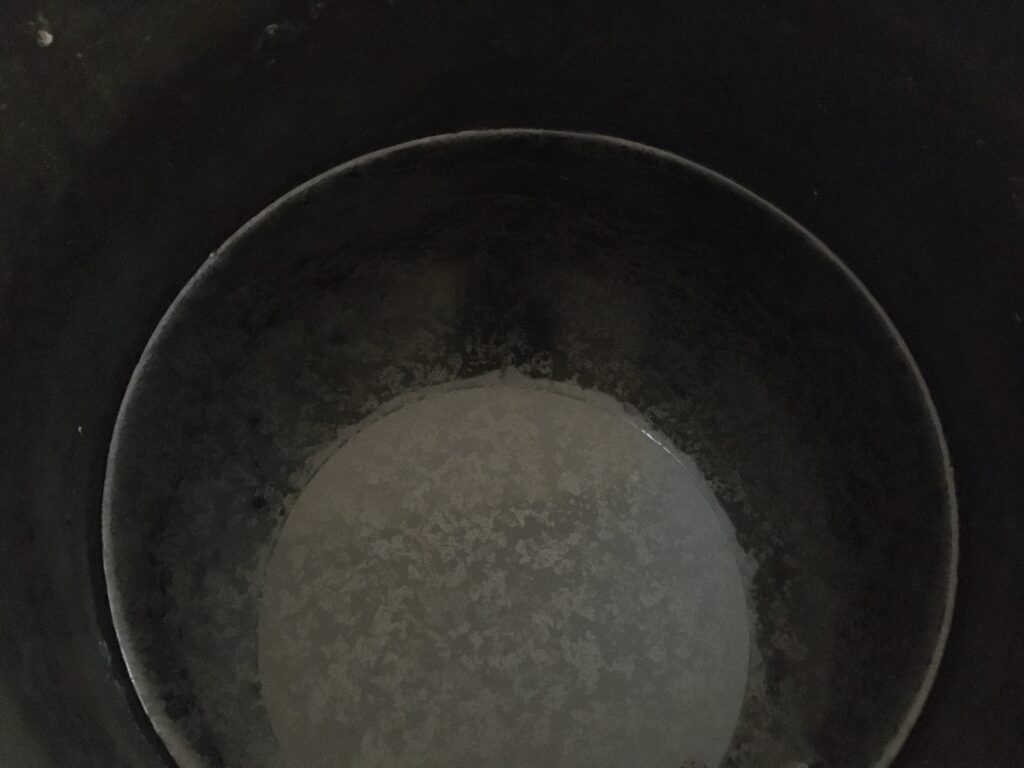
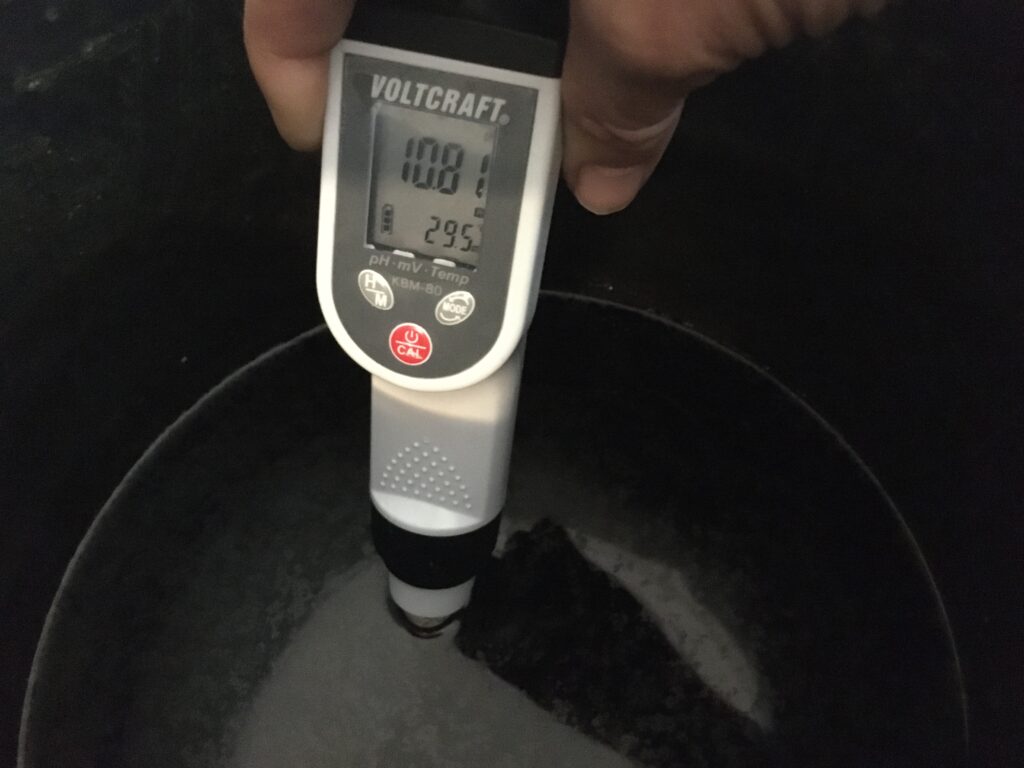
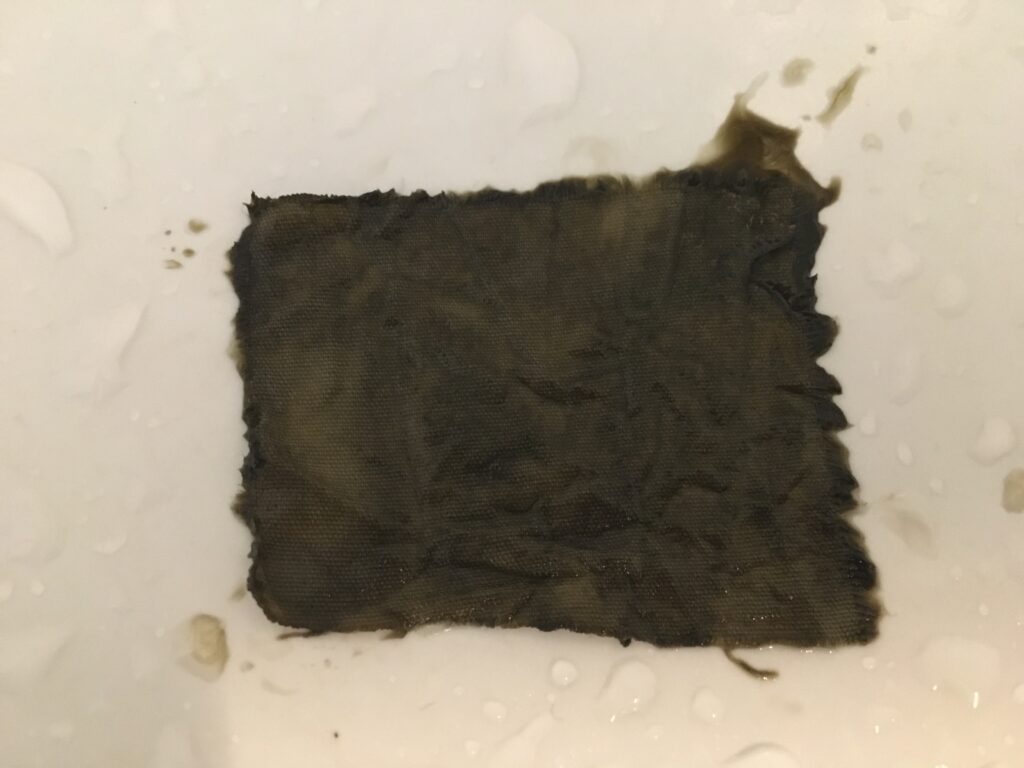
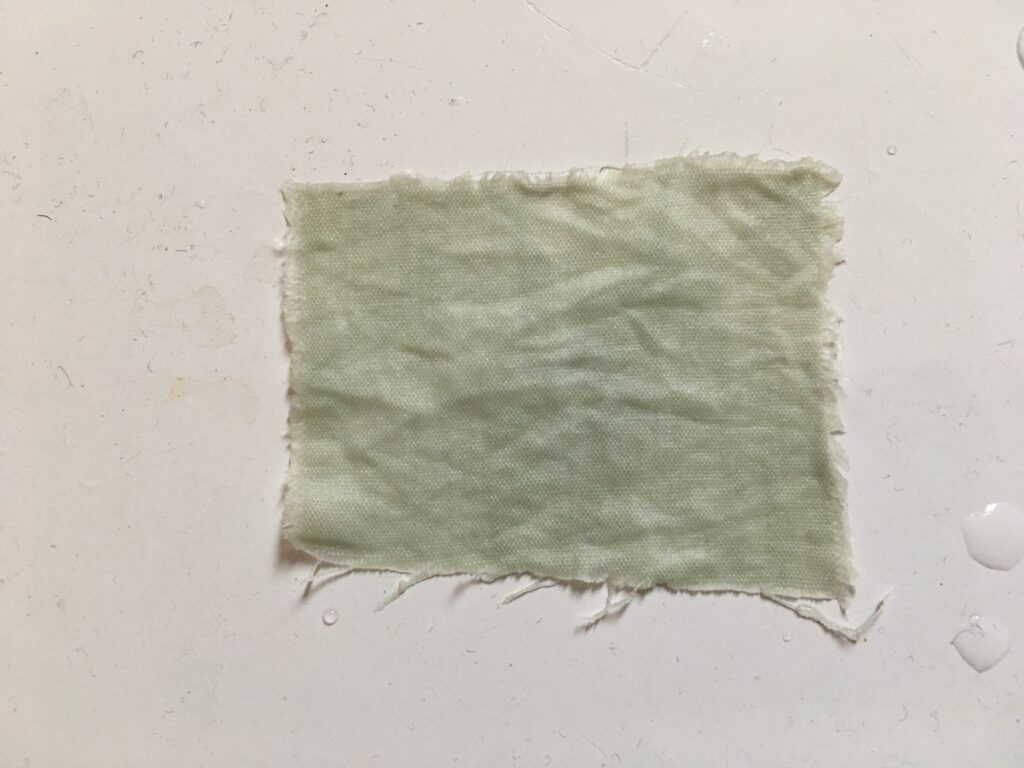
Day 72: Unfortunately the photo of PH meter was blur, it was around PH 10.8. There are no changes for more than one week, since the dusty thing started to occur. I decided to pause this vat and set it to cold environment to let it hibernate. I add 2 spoon of ca(oh)2, and mix it well. I have also turned off the heater. ( Nov 10. 2024)
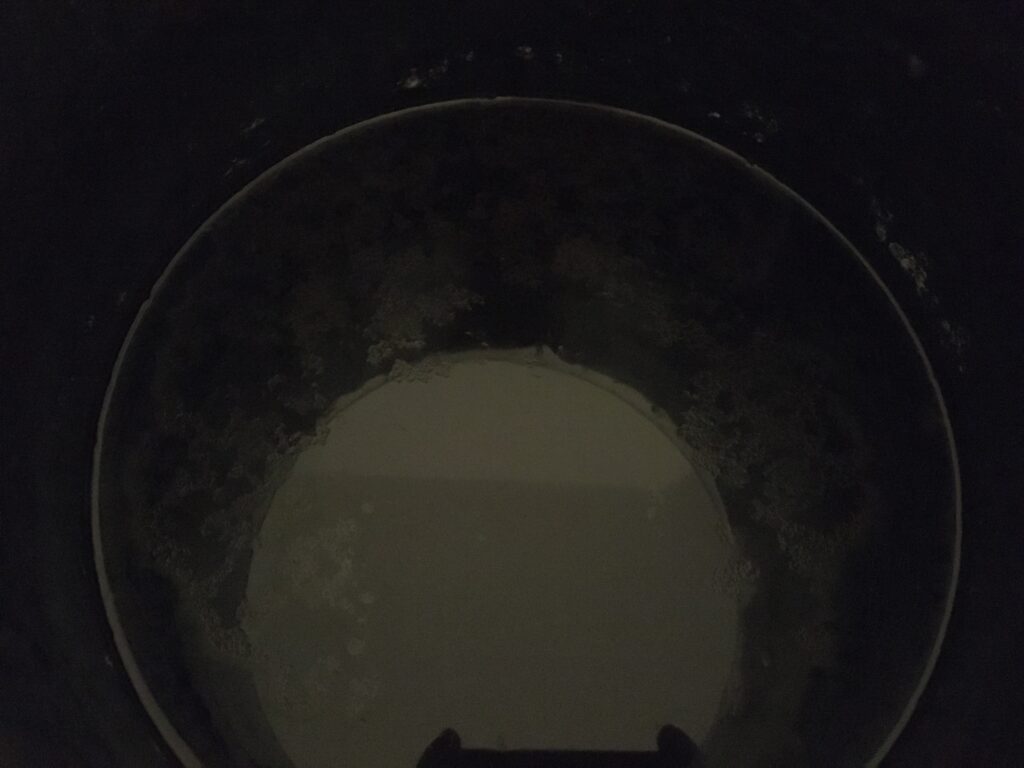
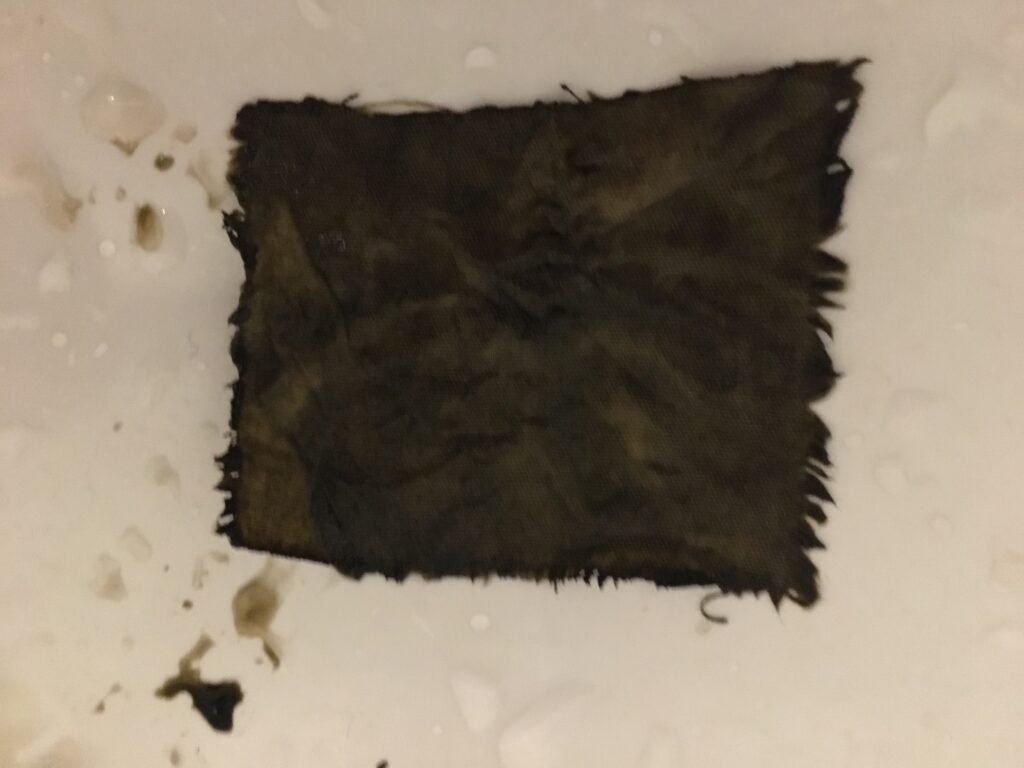
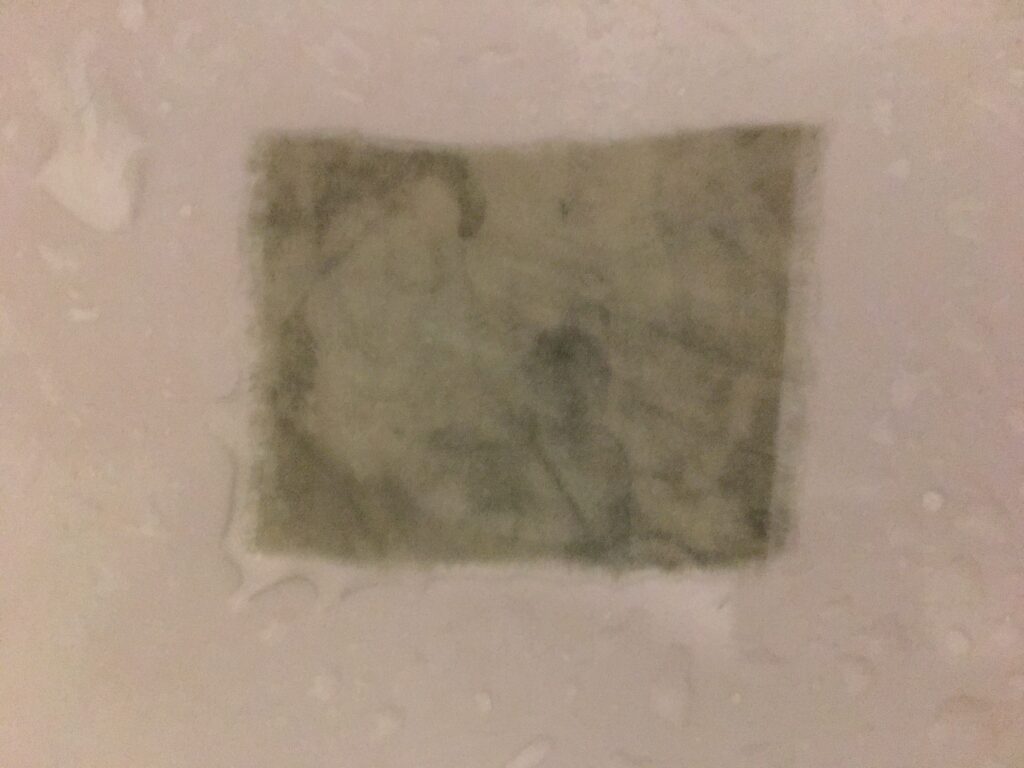
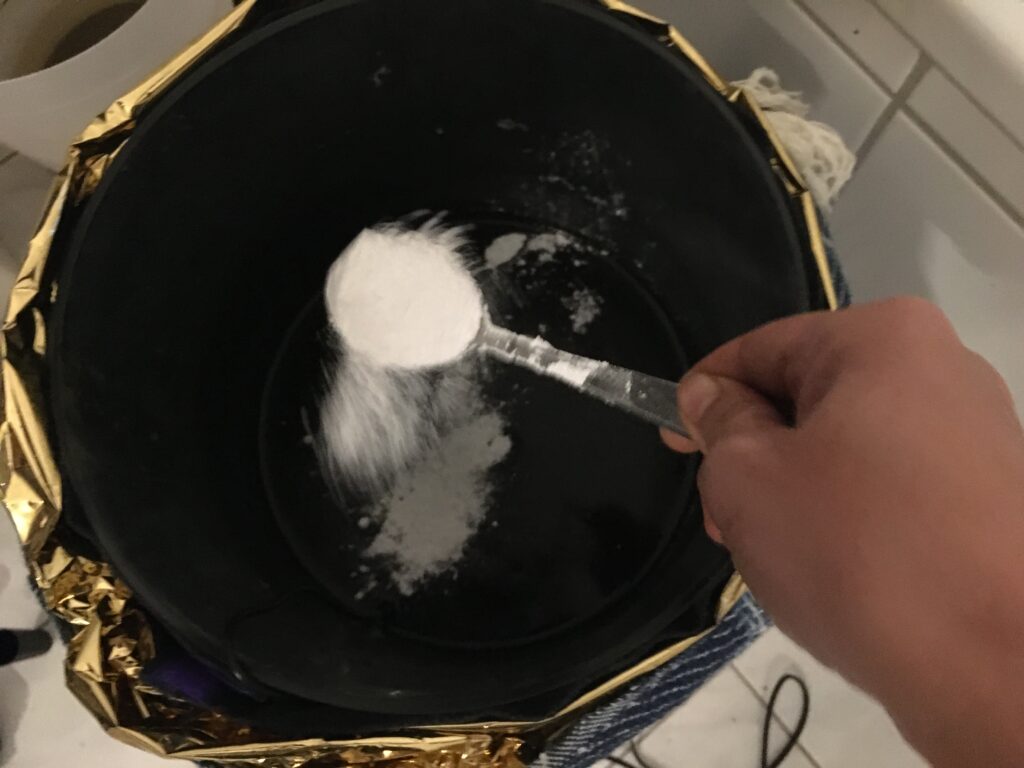
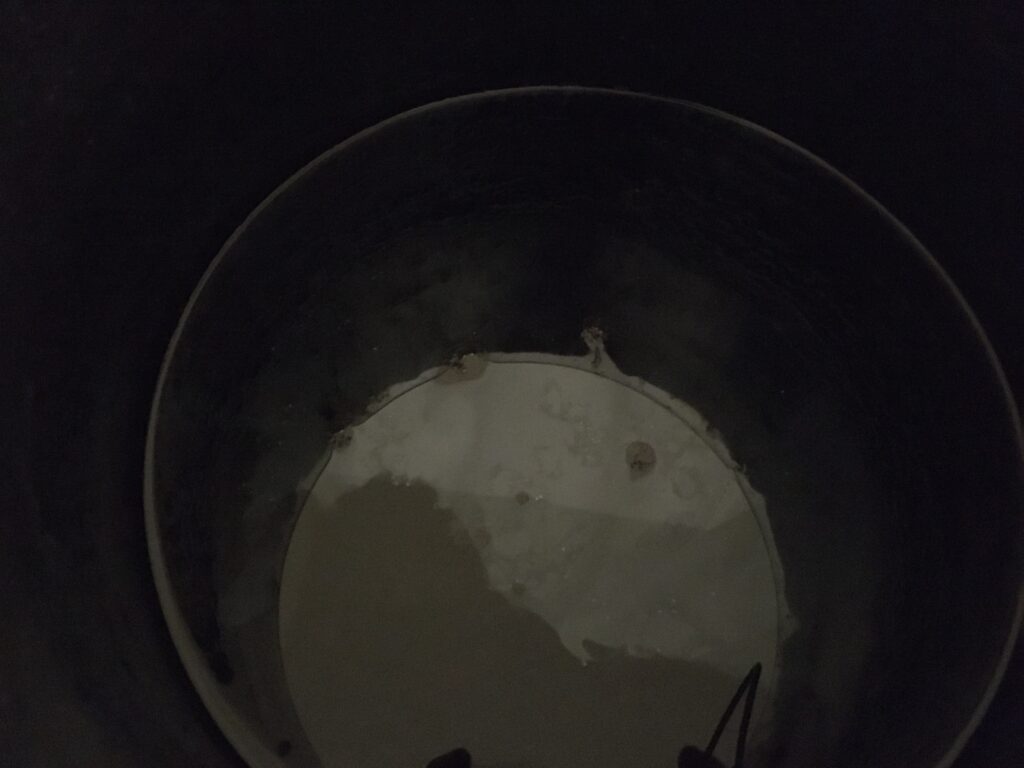
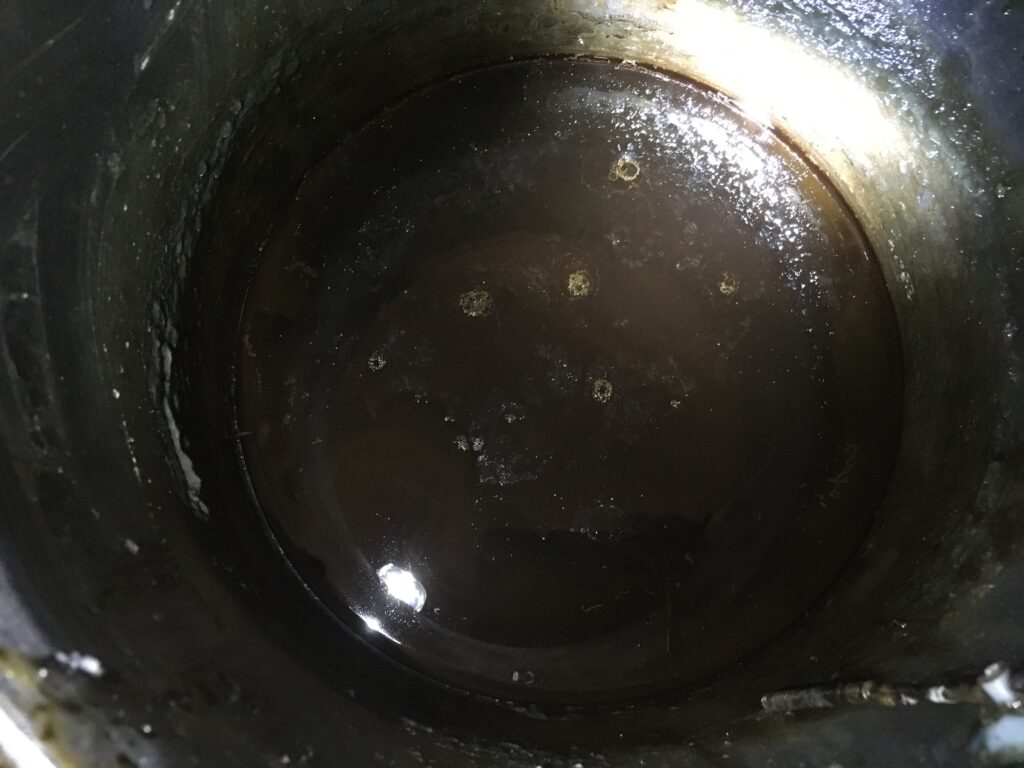
Day 73: PH is now over 12 (which is what I planned) and temperature is low now.
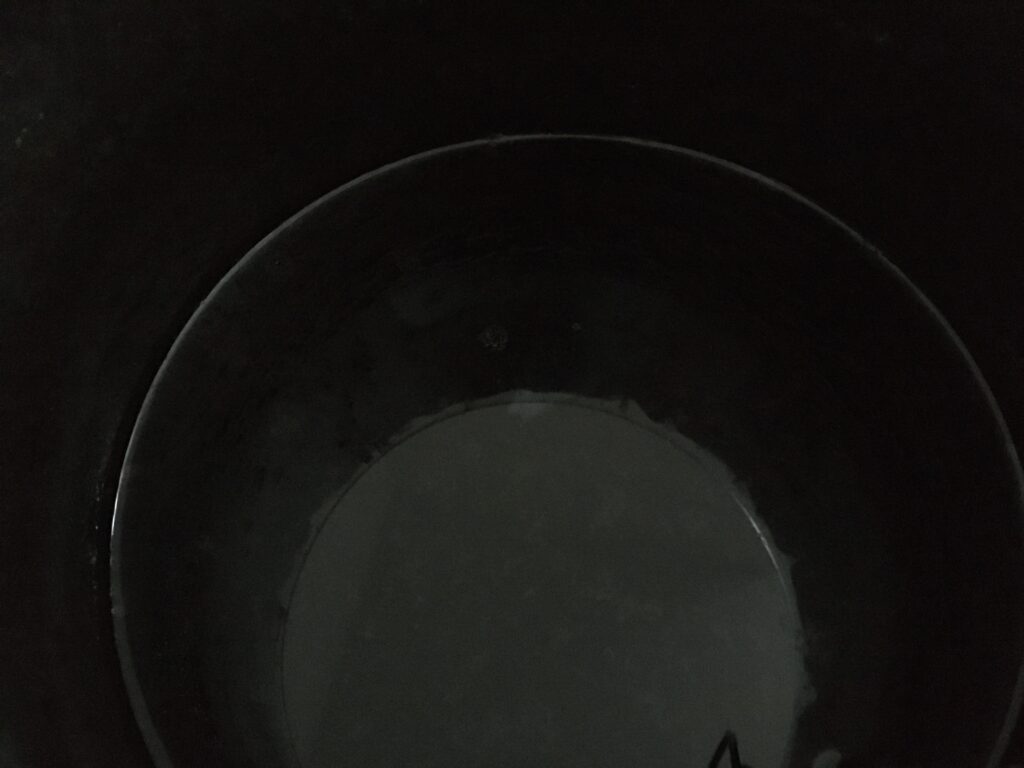
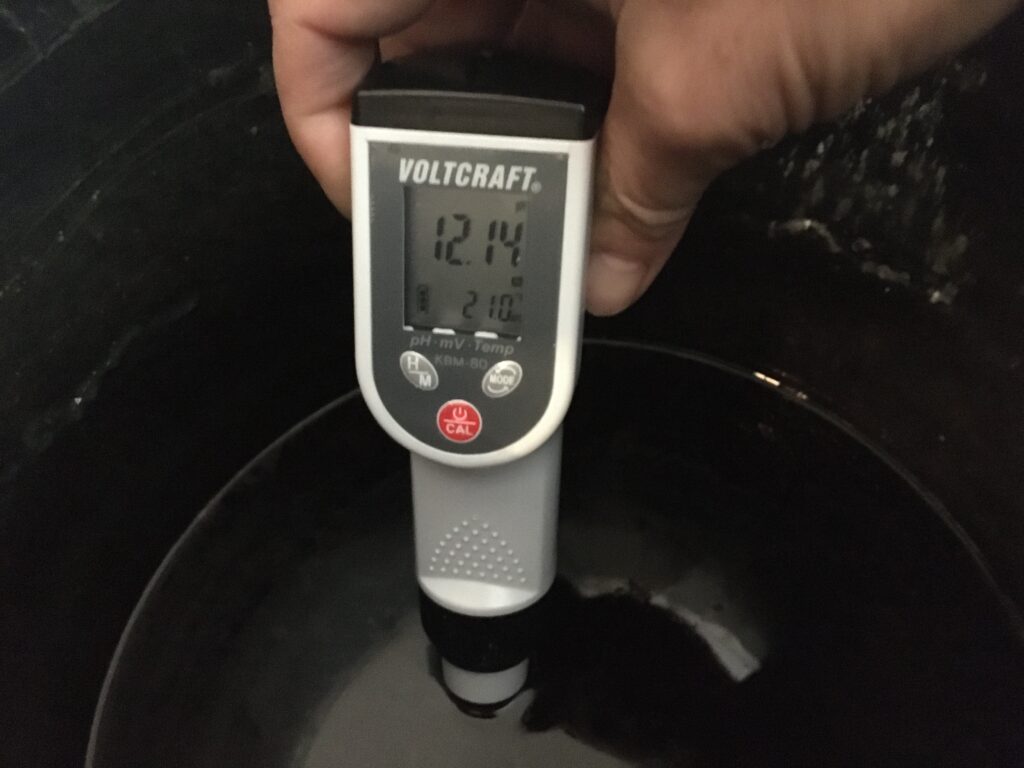
Day 74: The PH is staying high. Ready to bring it to hibernation. I will transfer the liquid to a container with tight lid and set it to balcony where the temperature is even lower.
